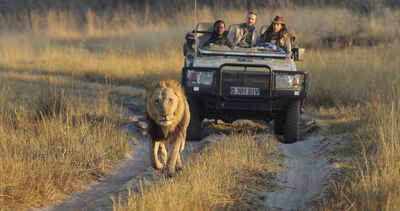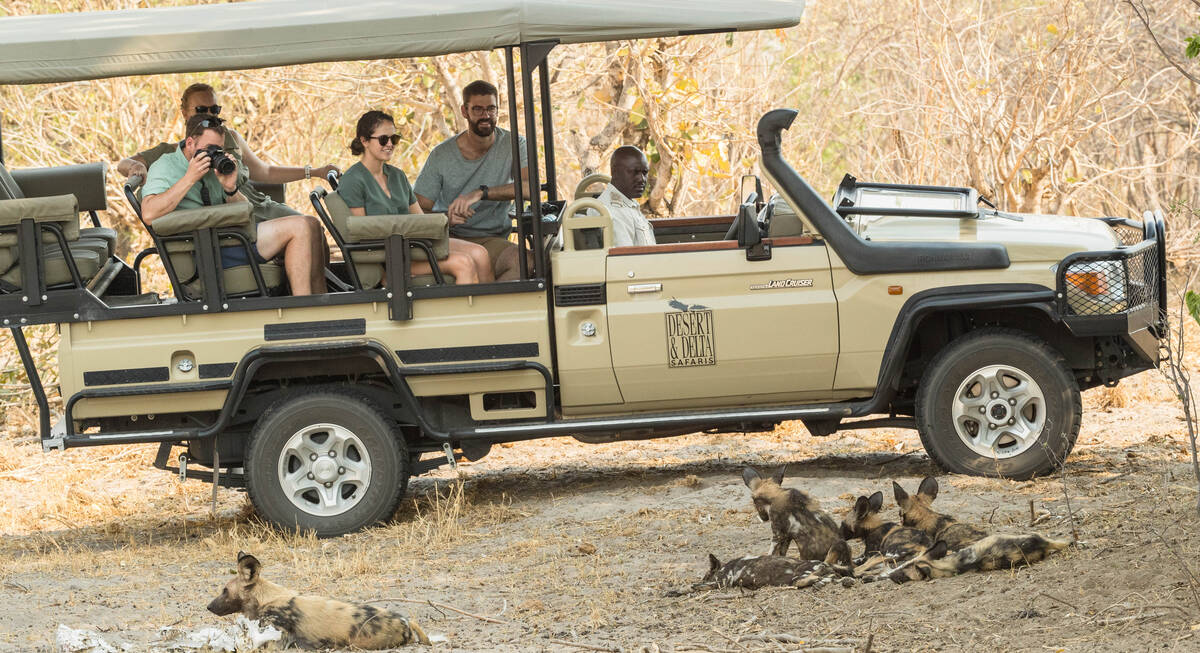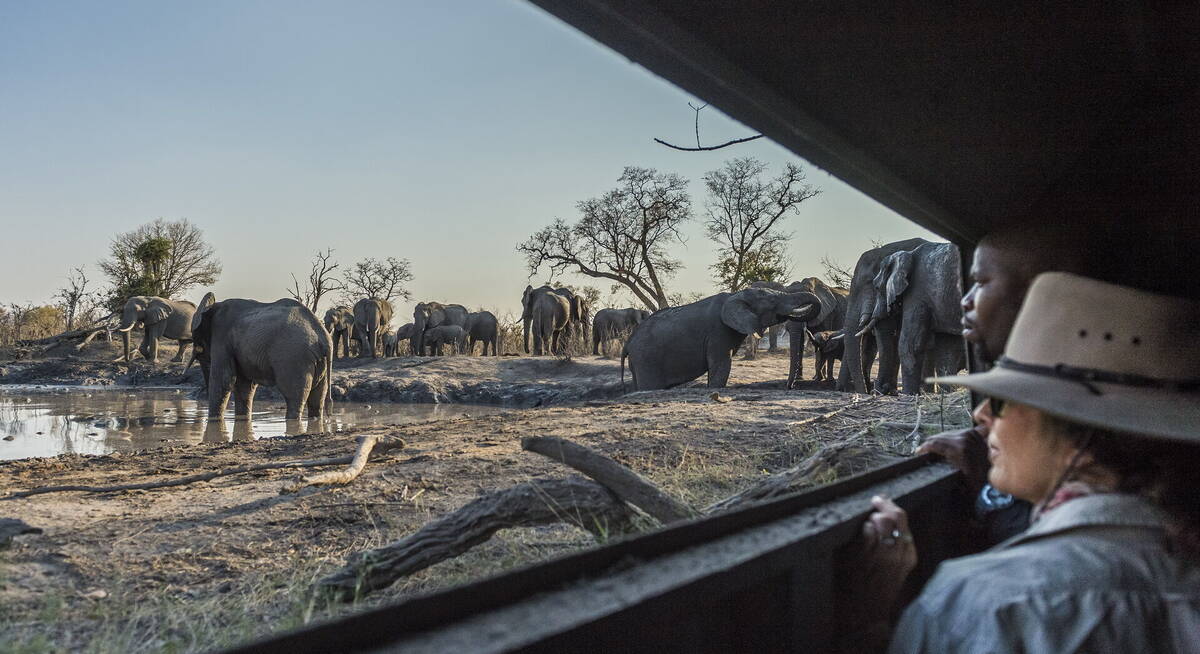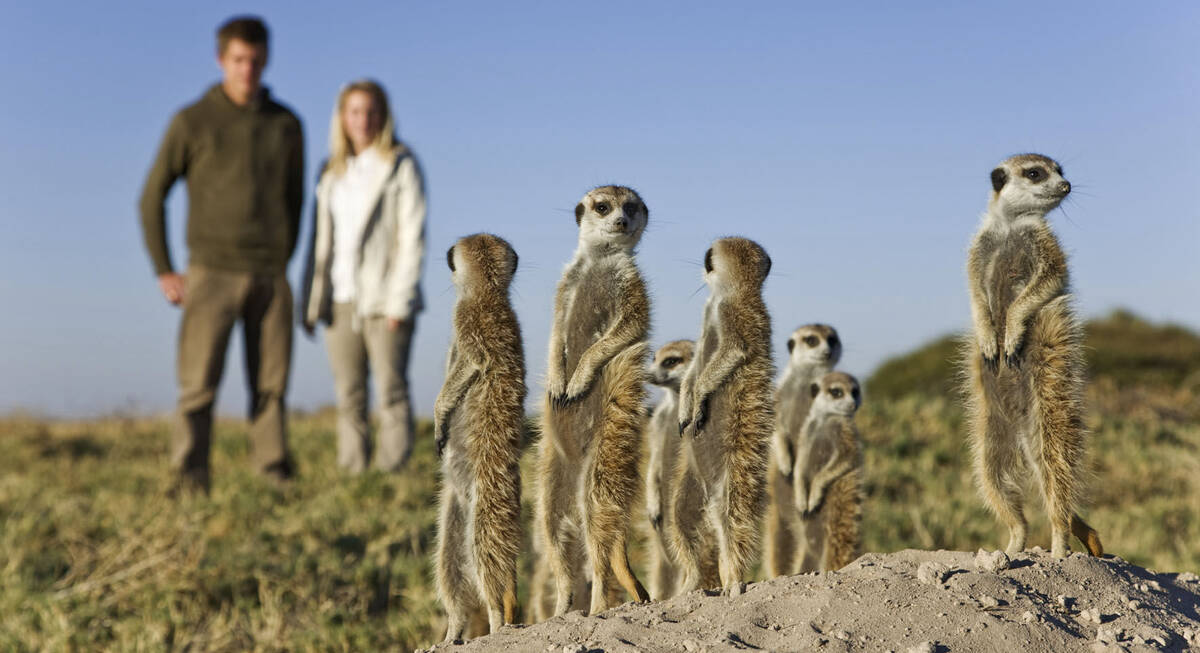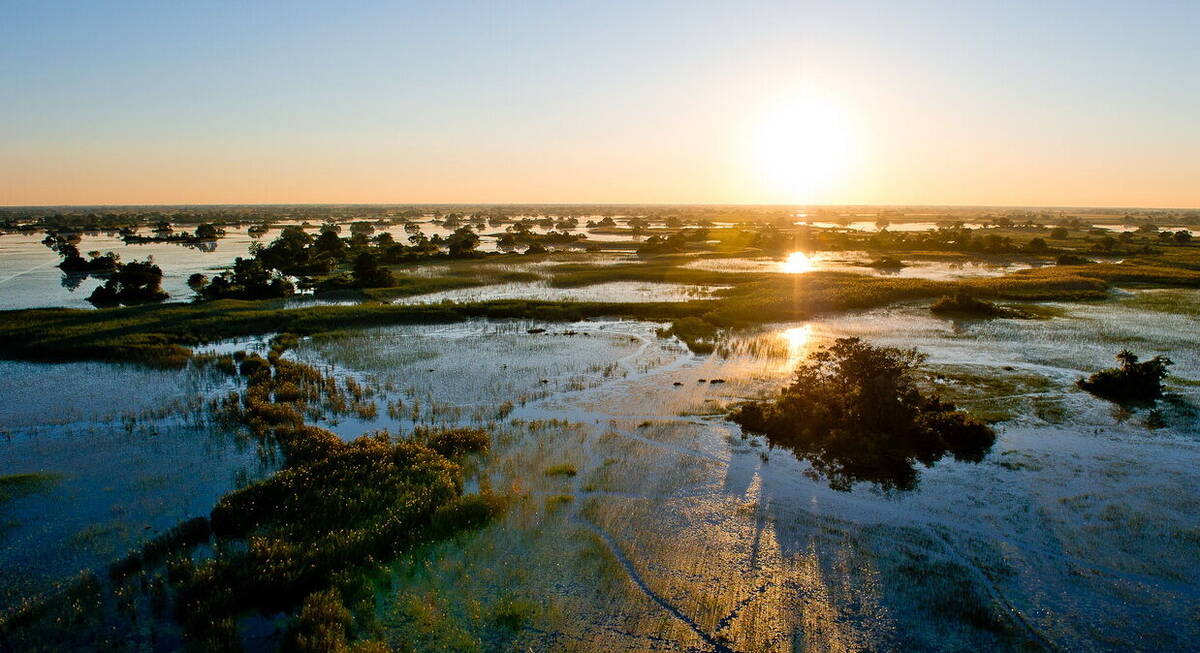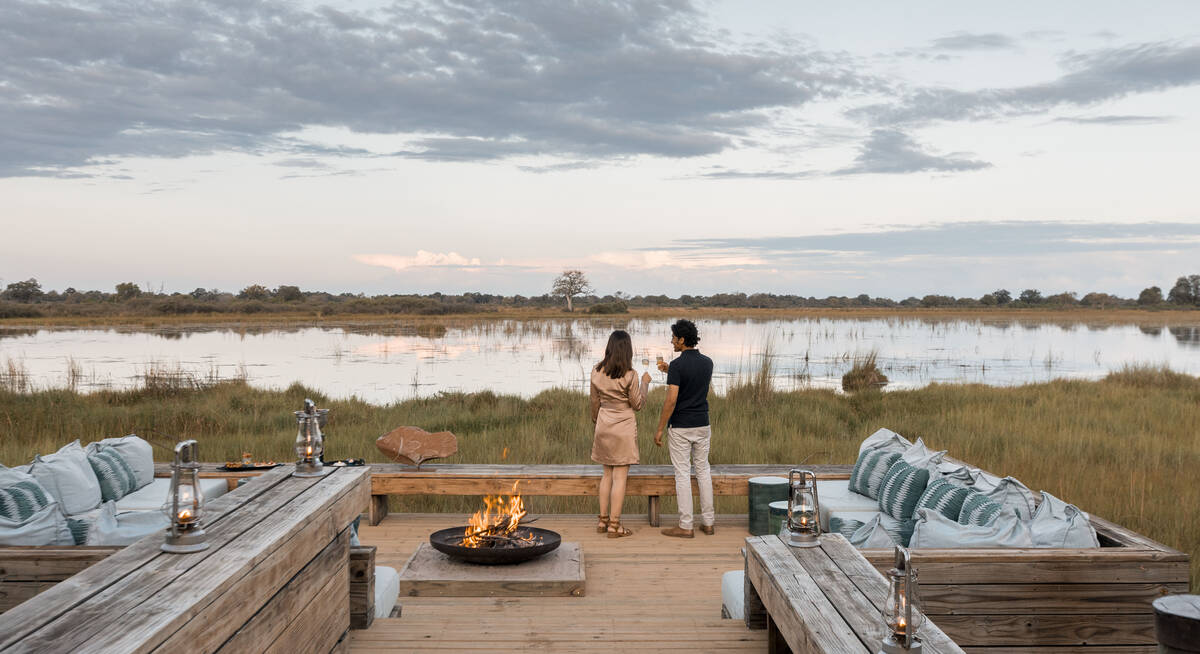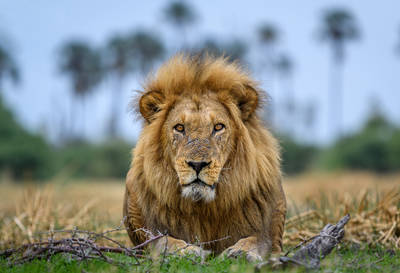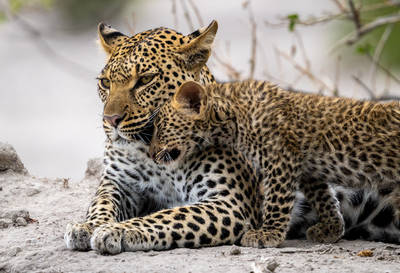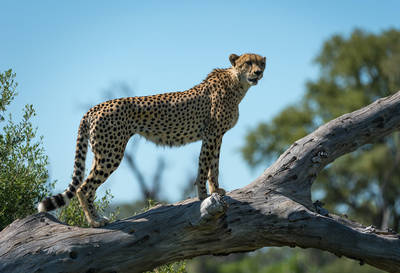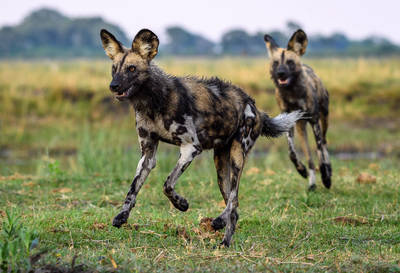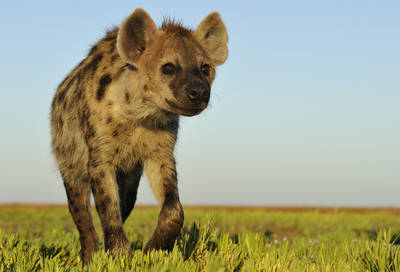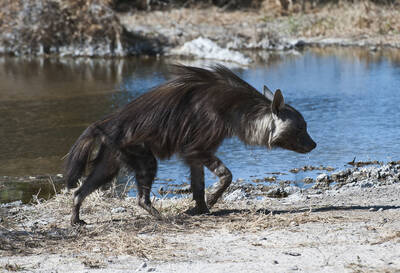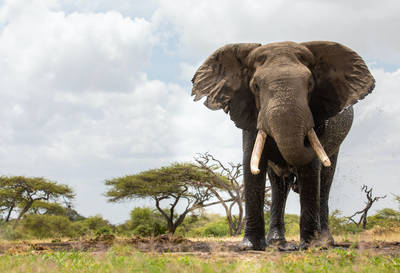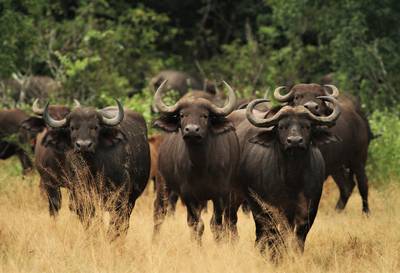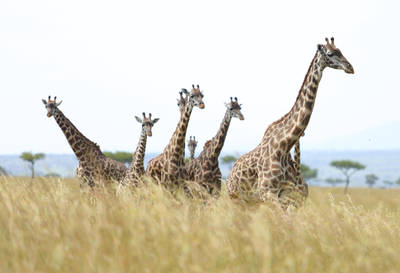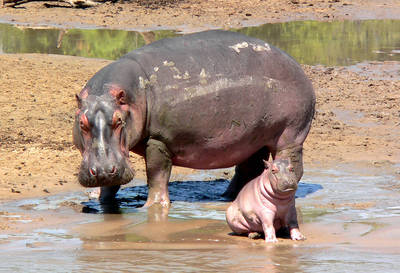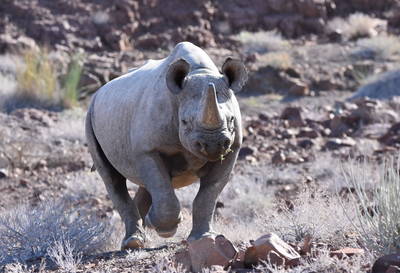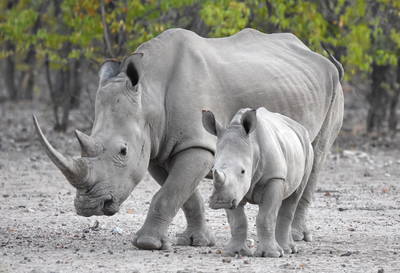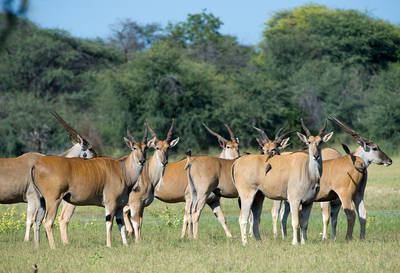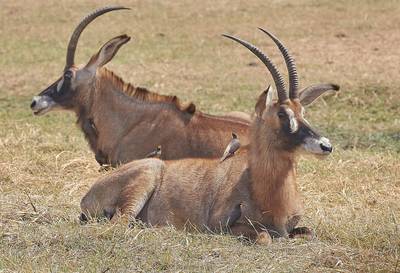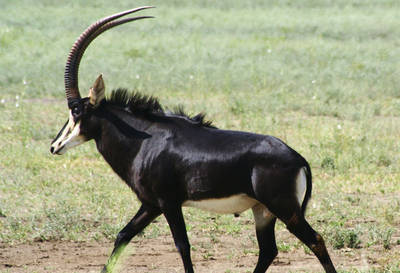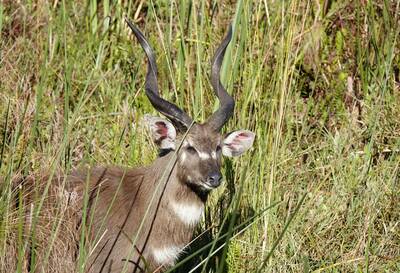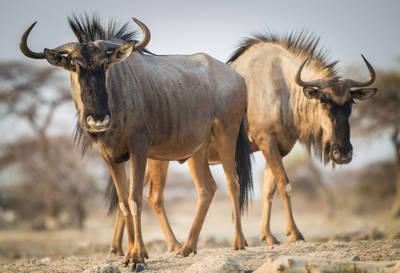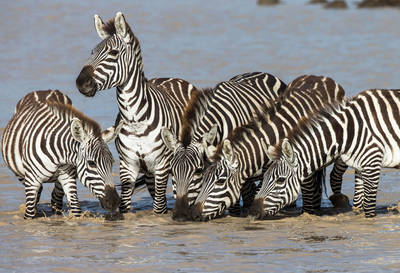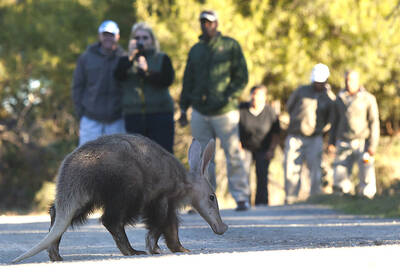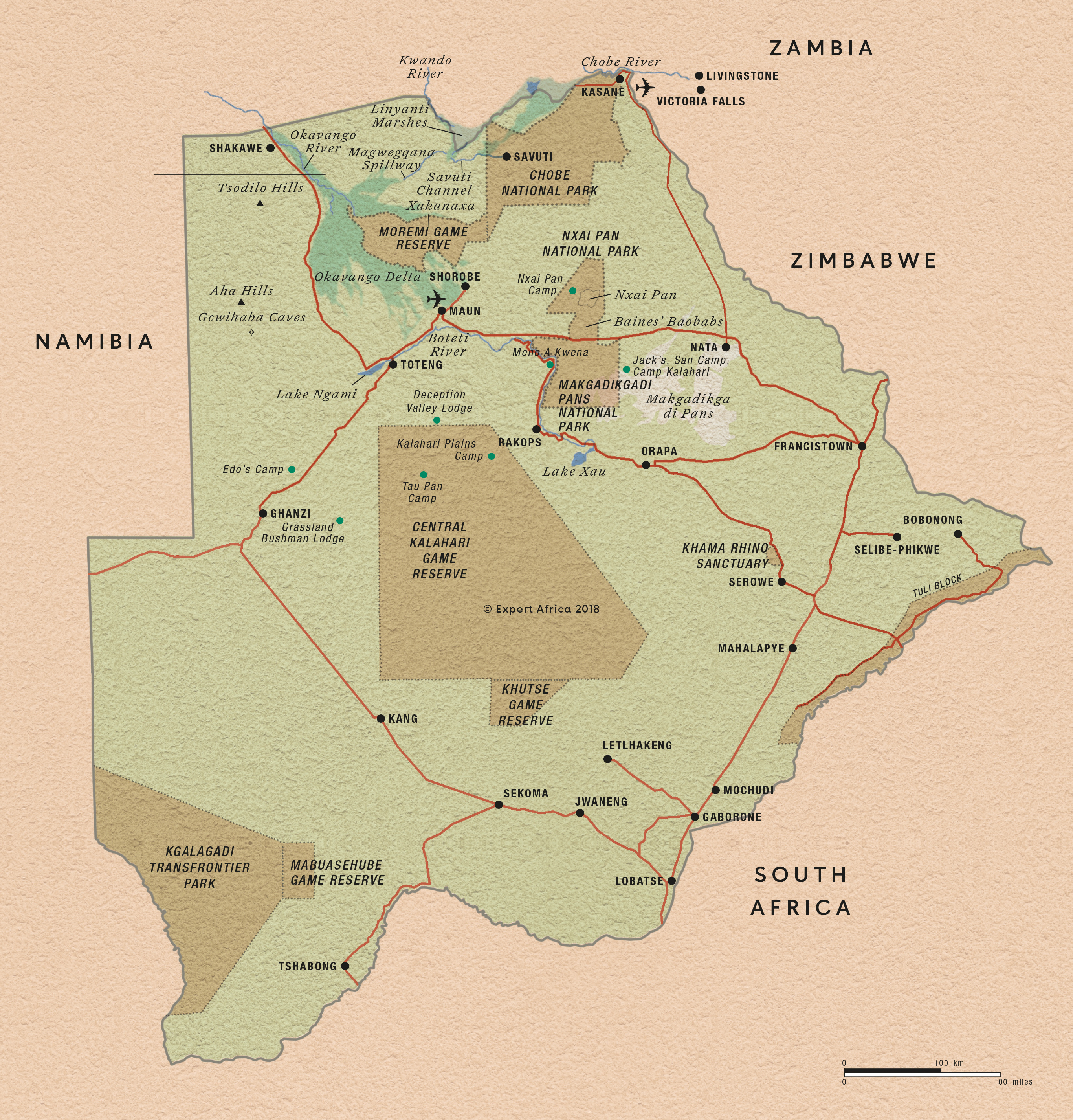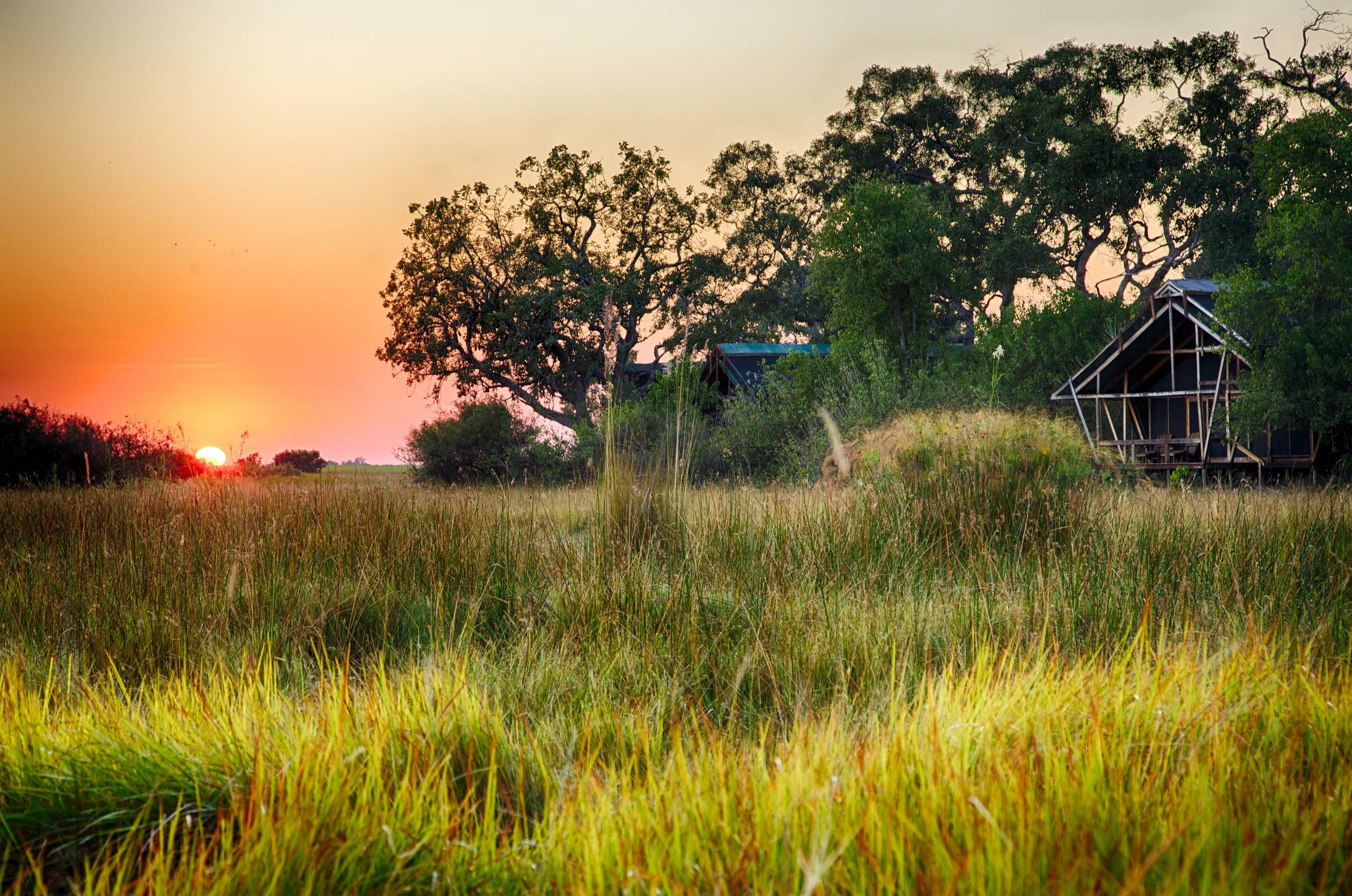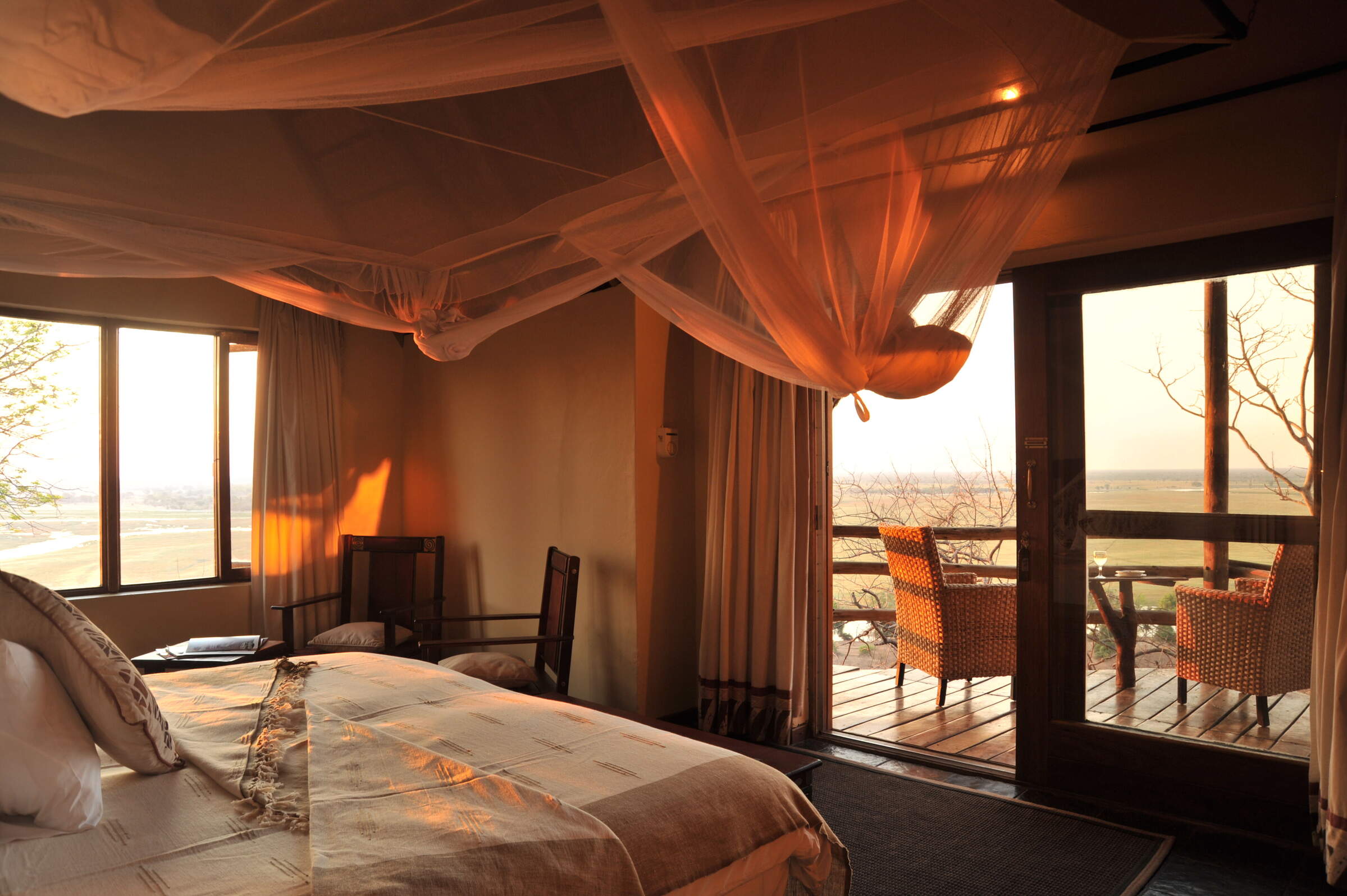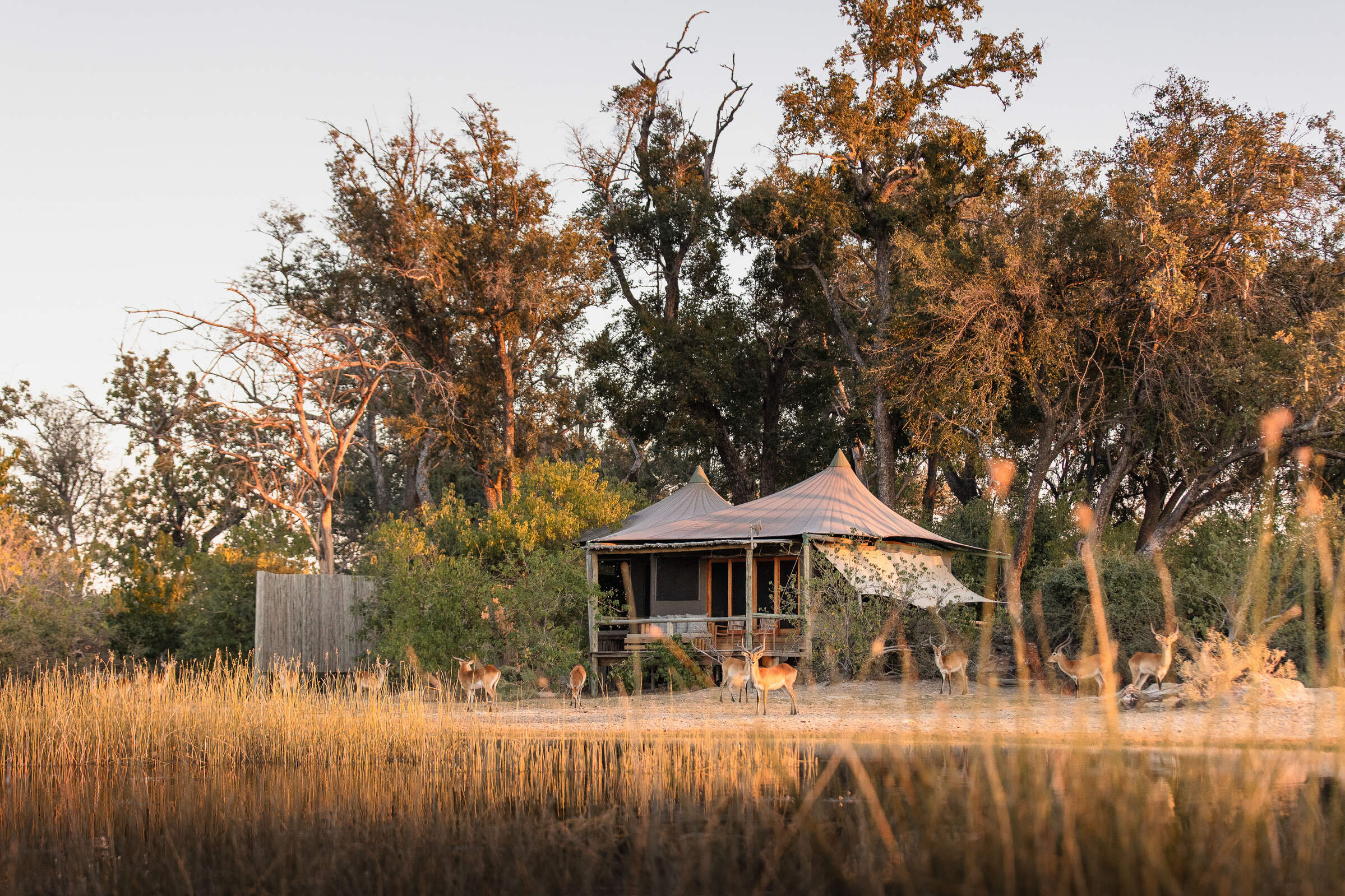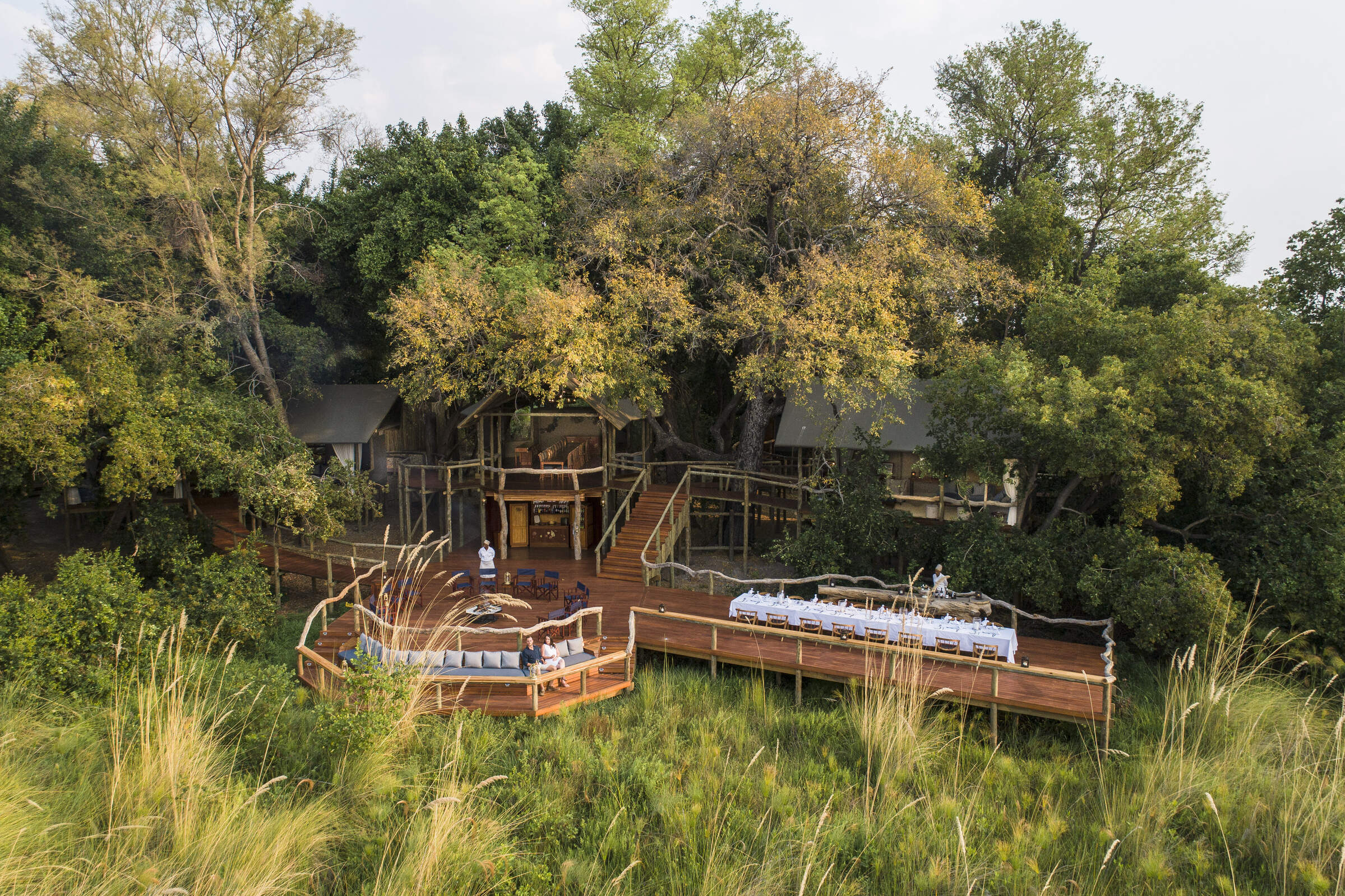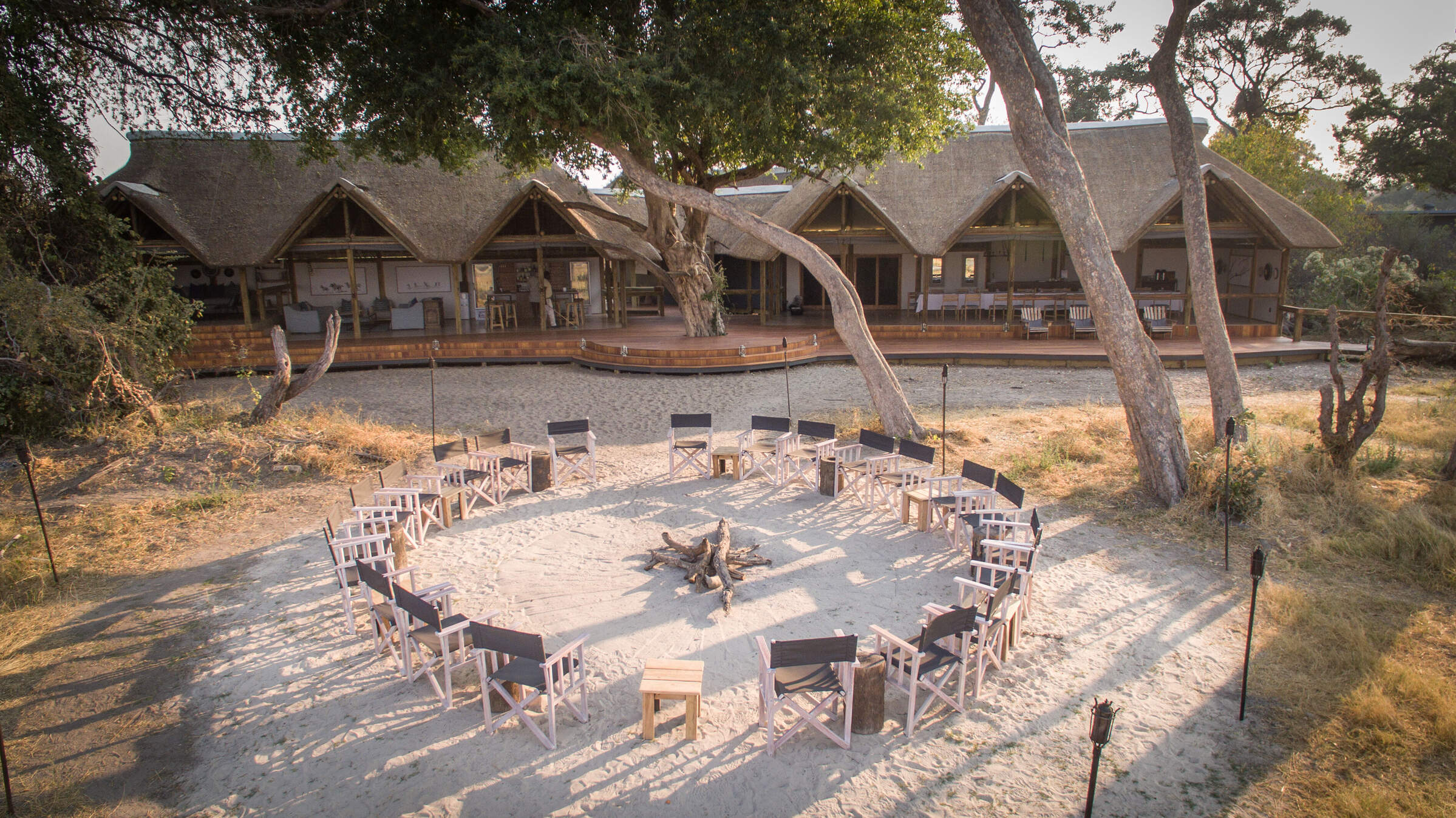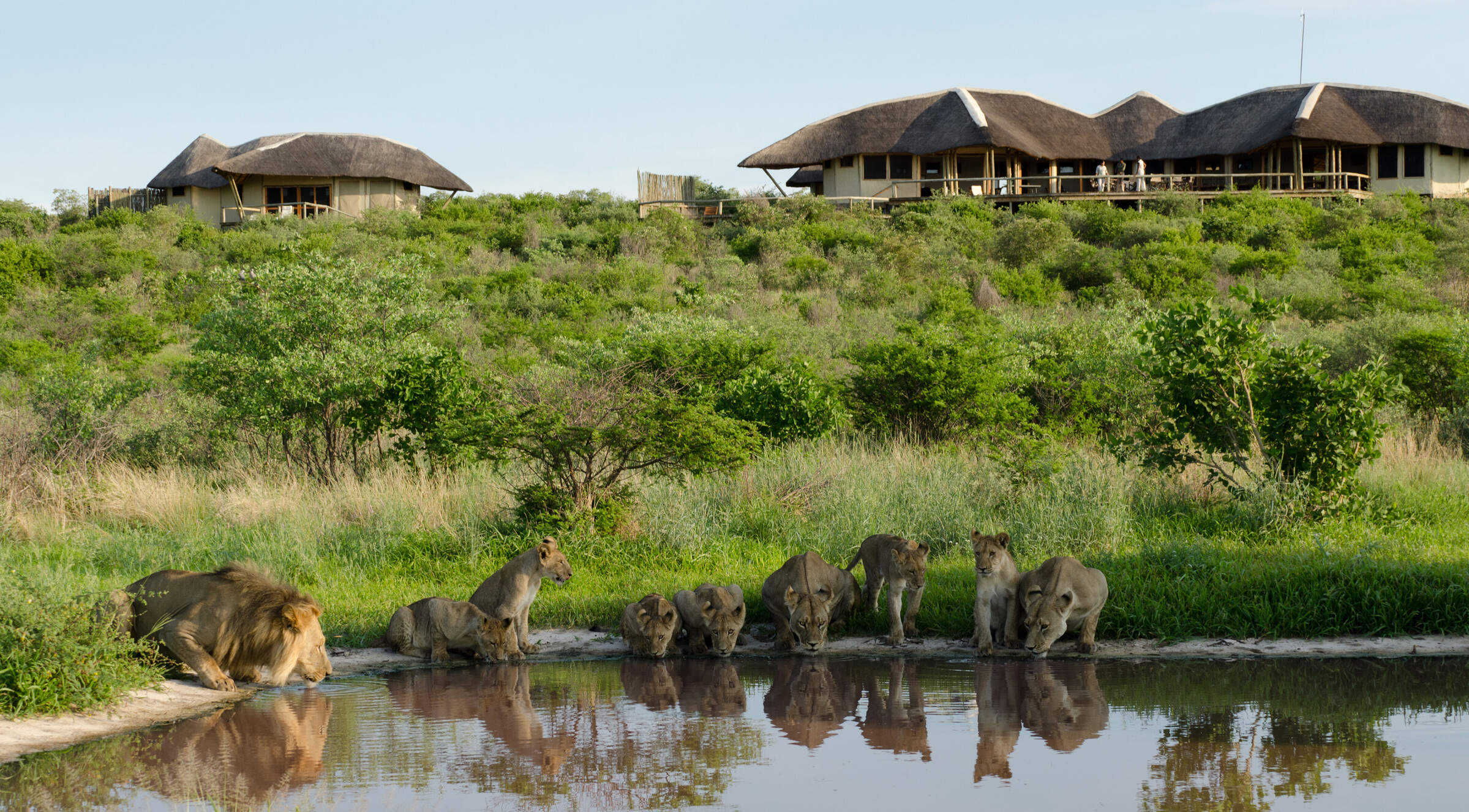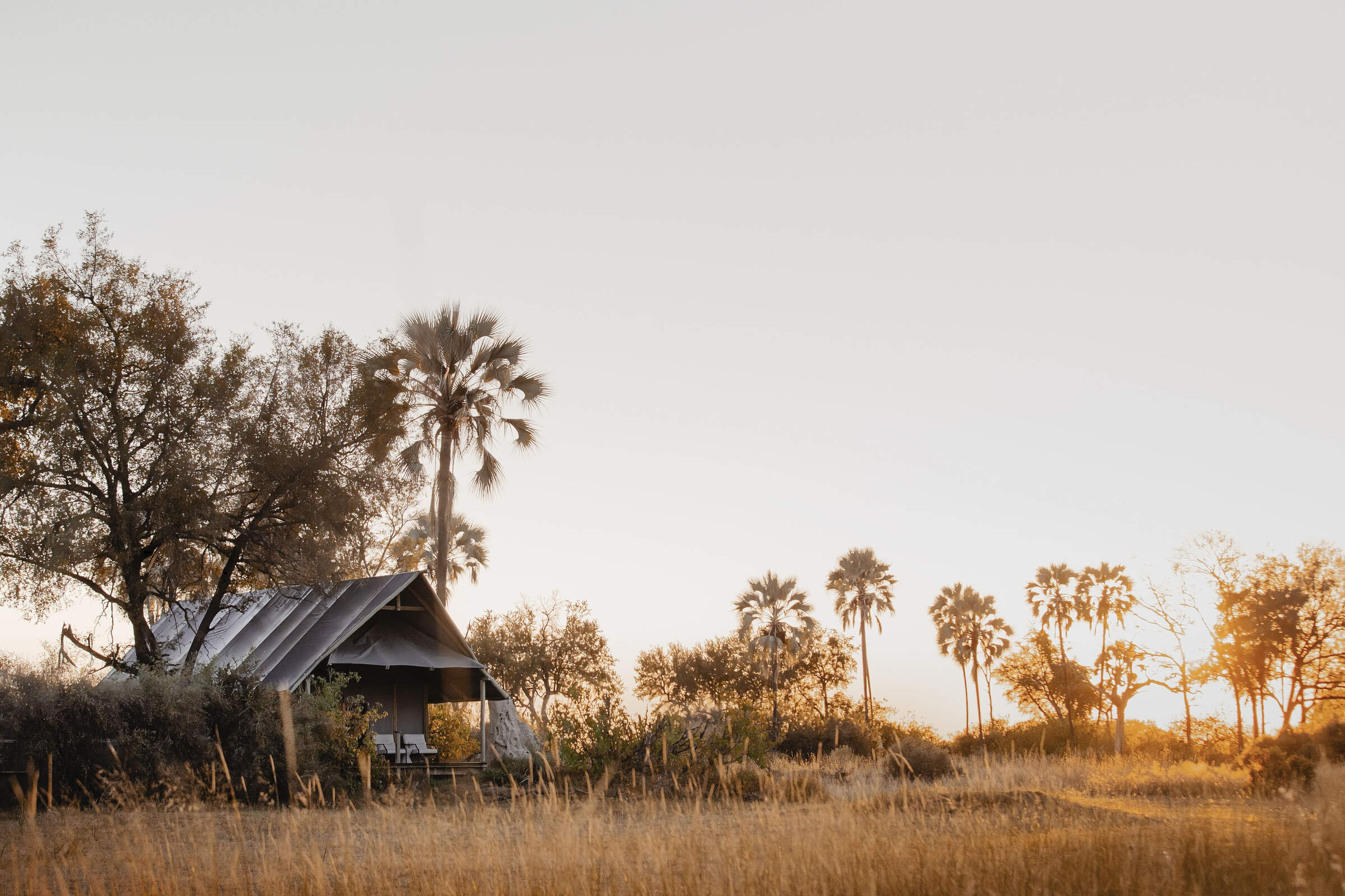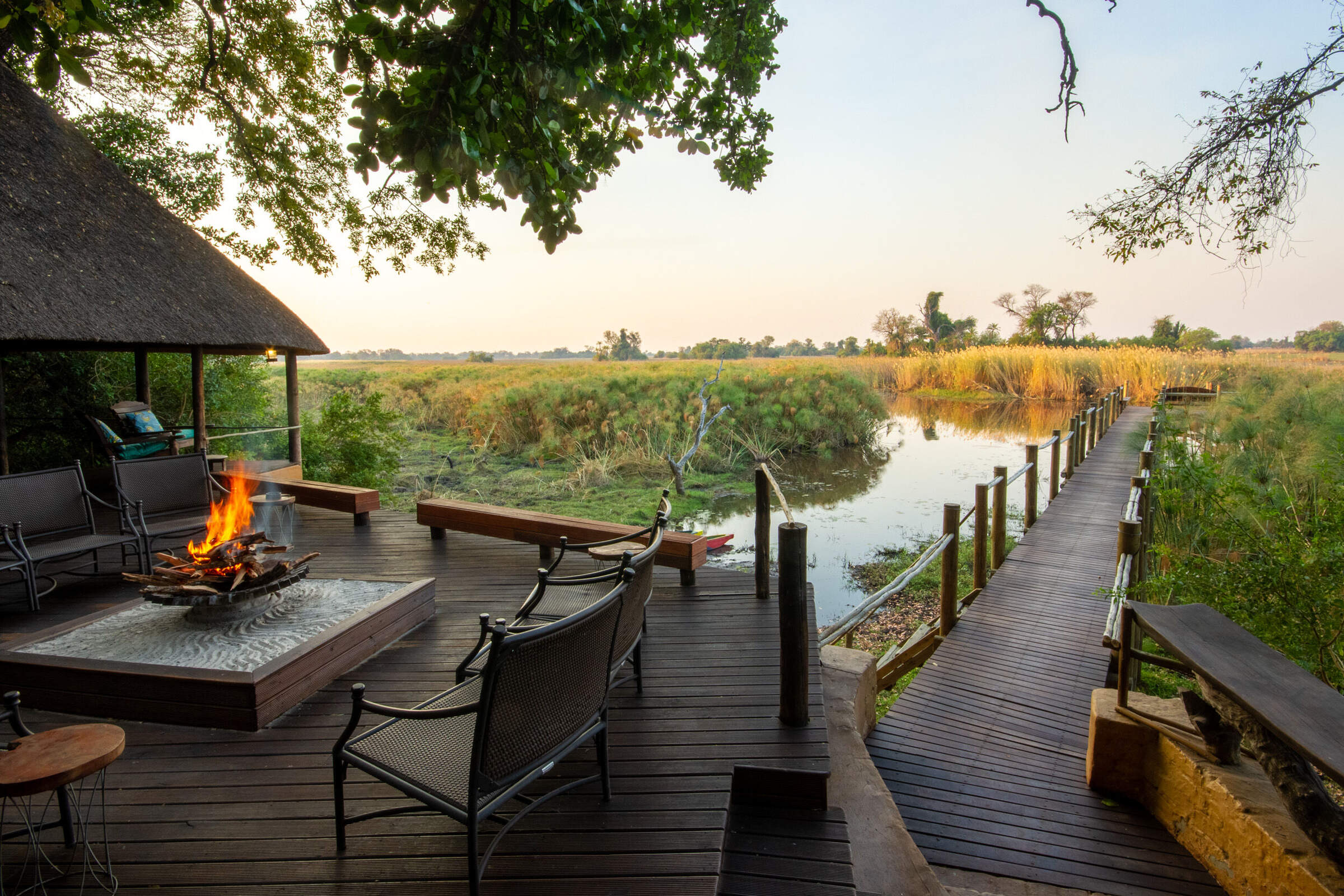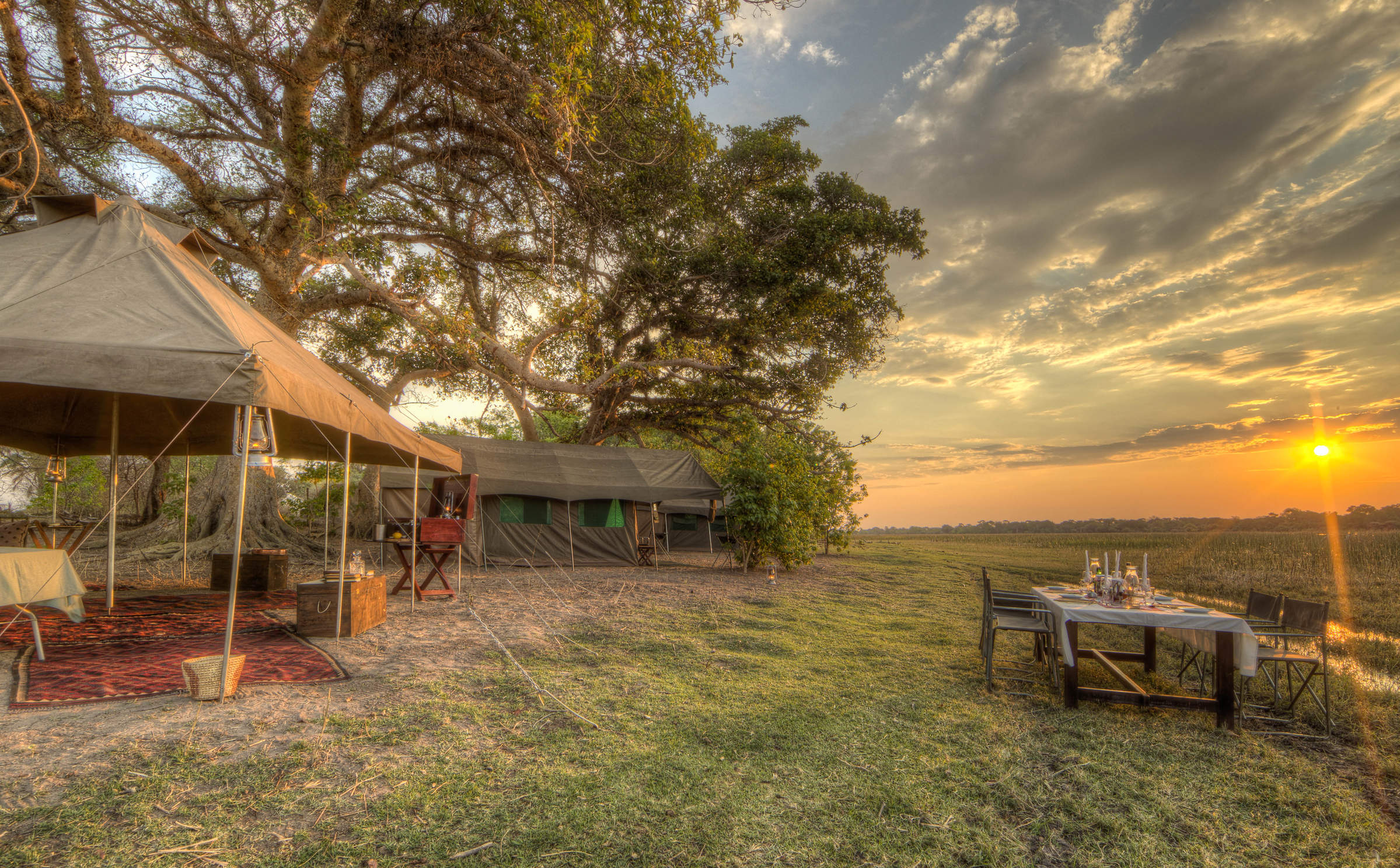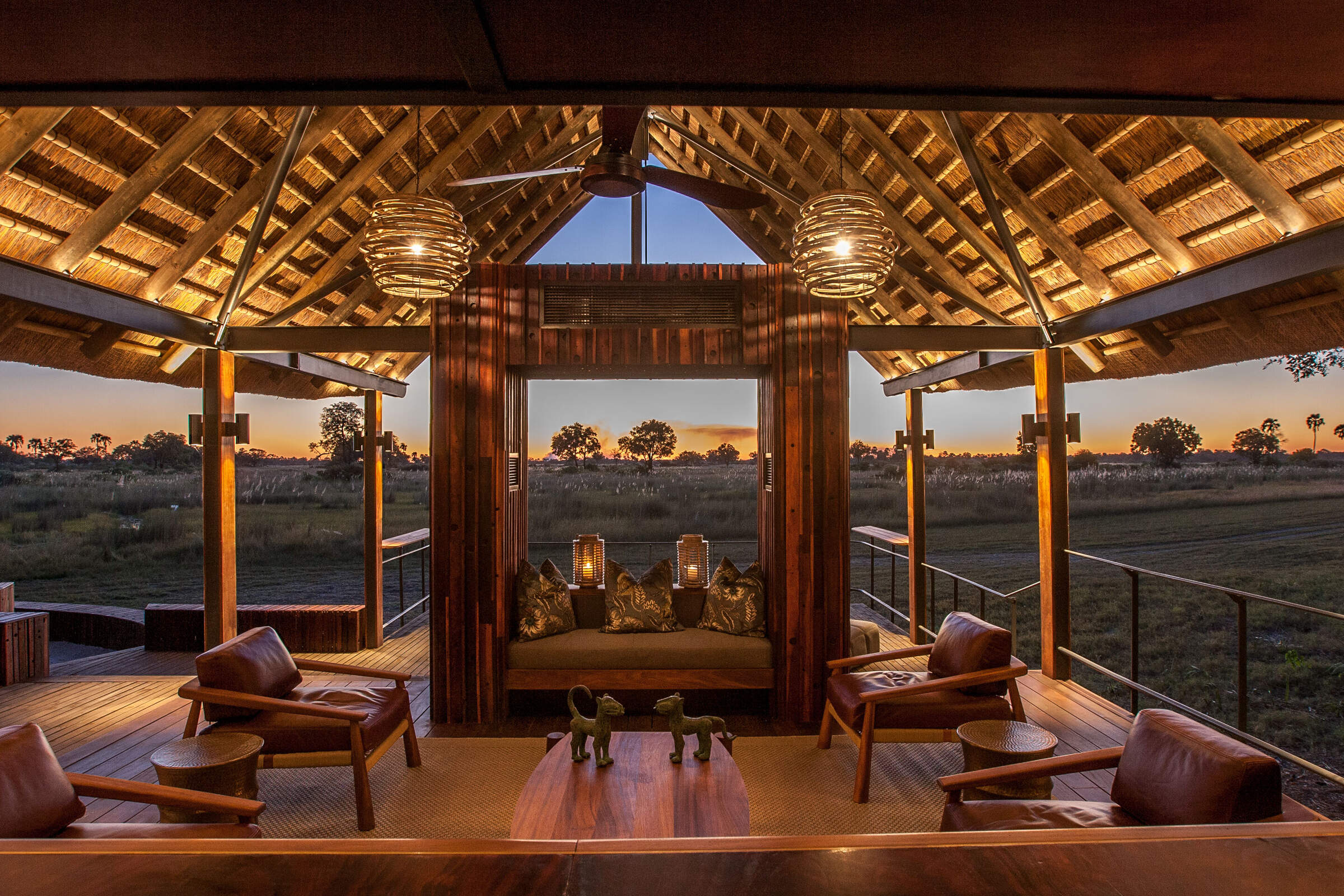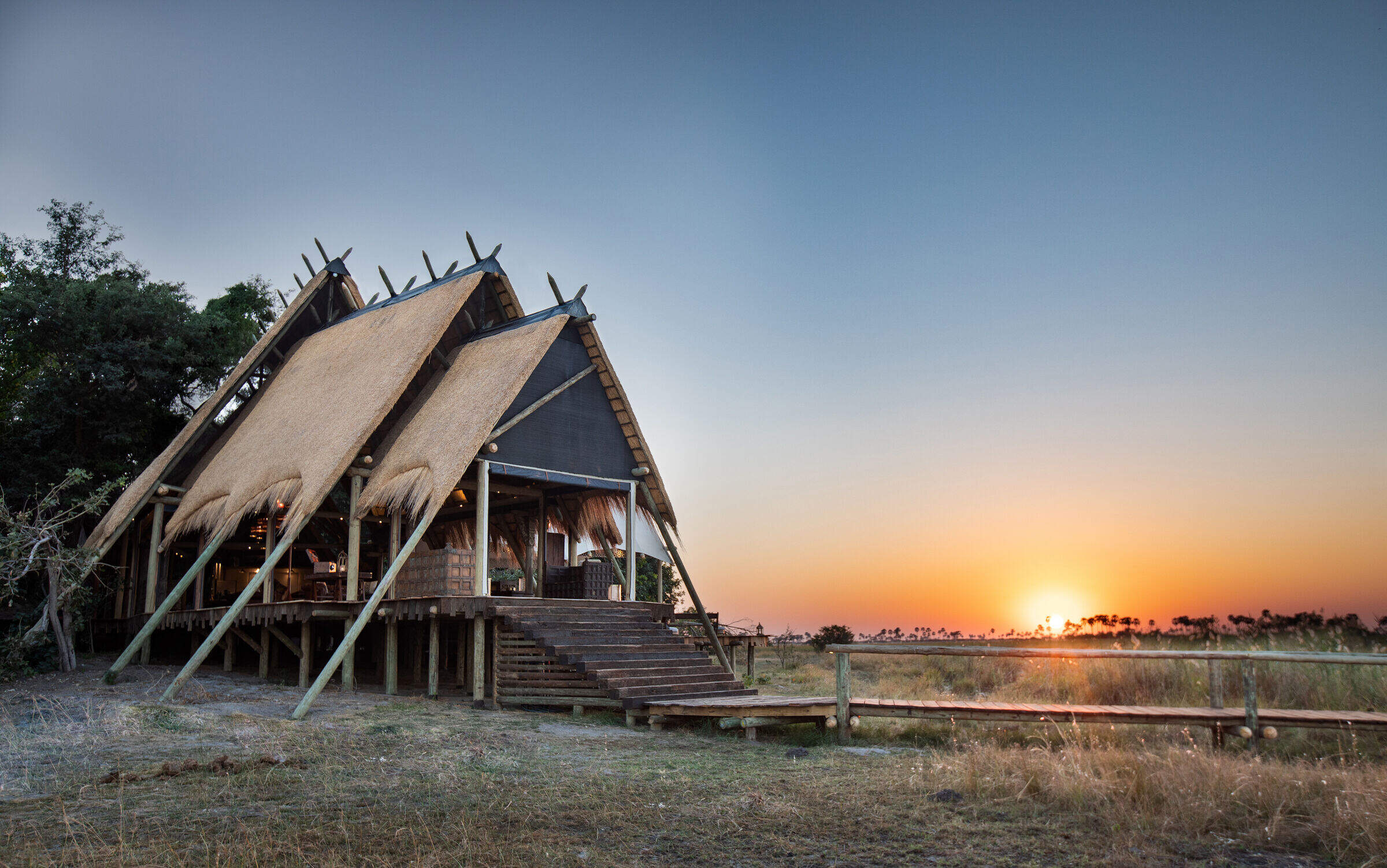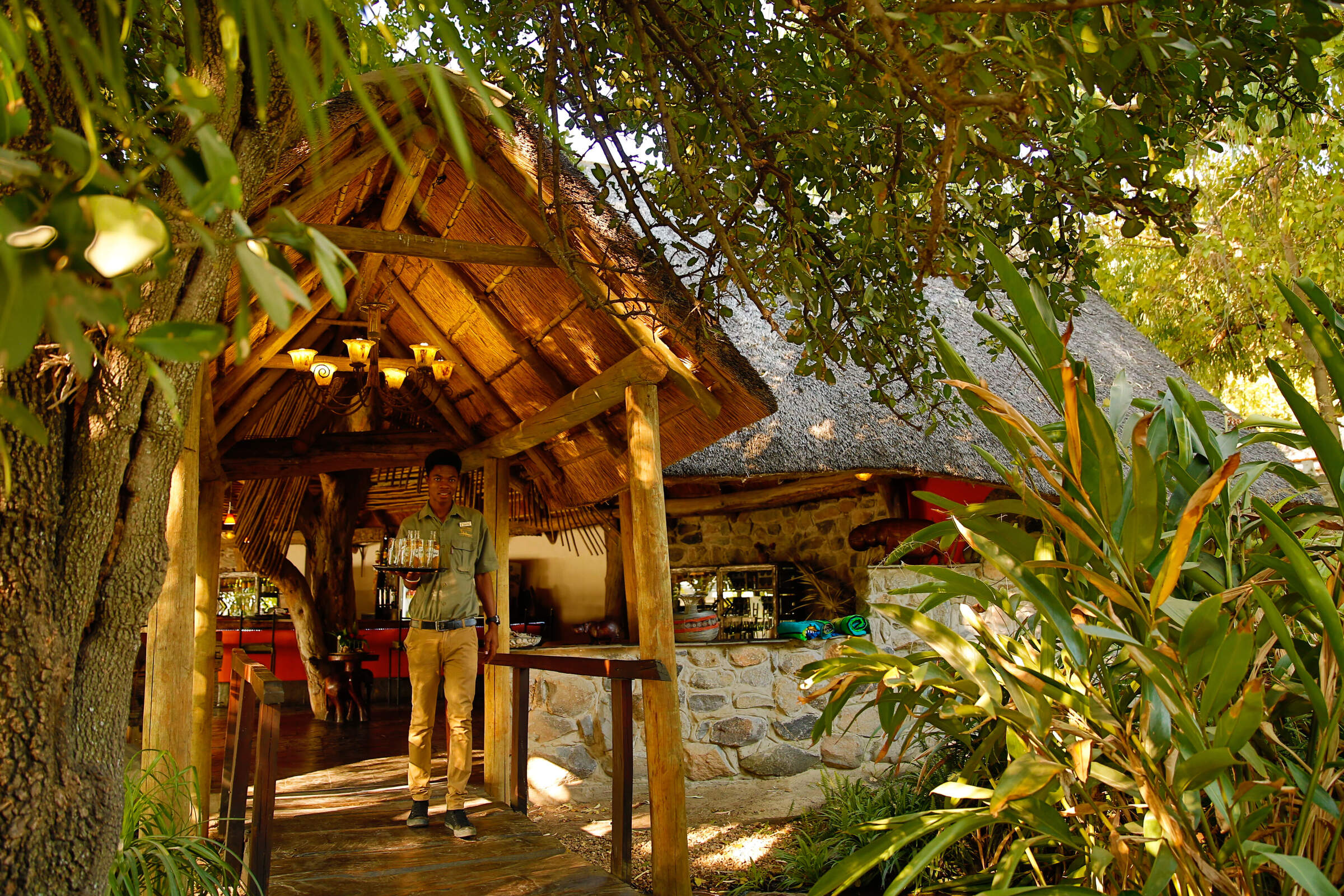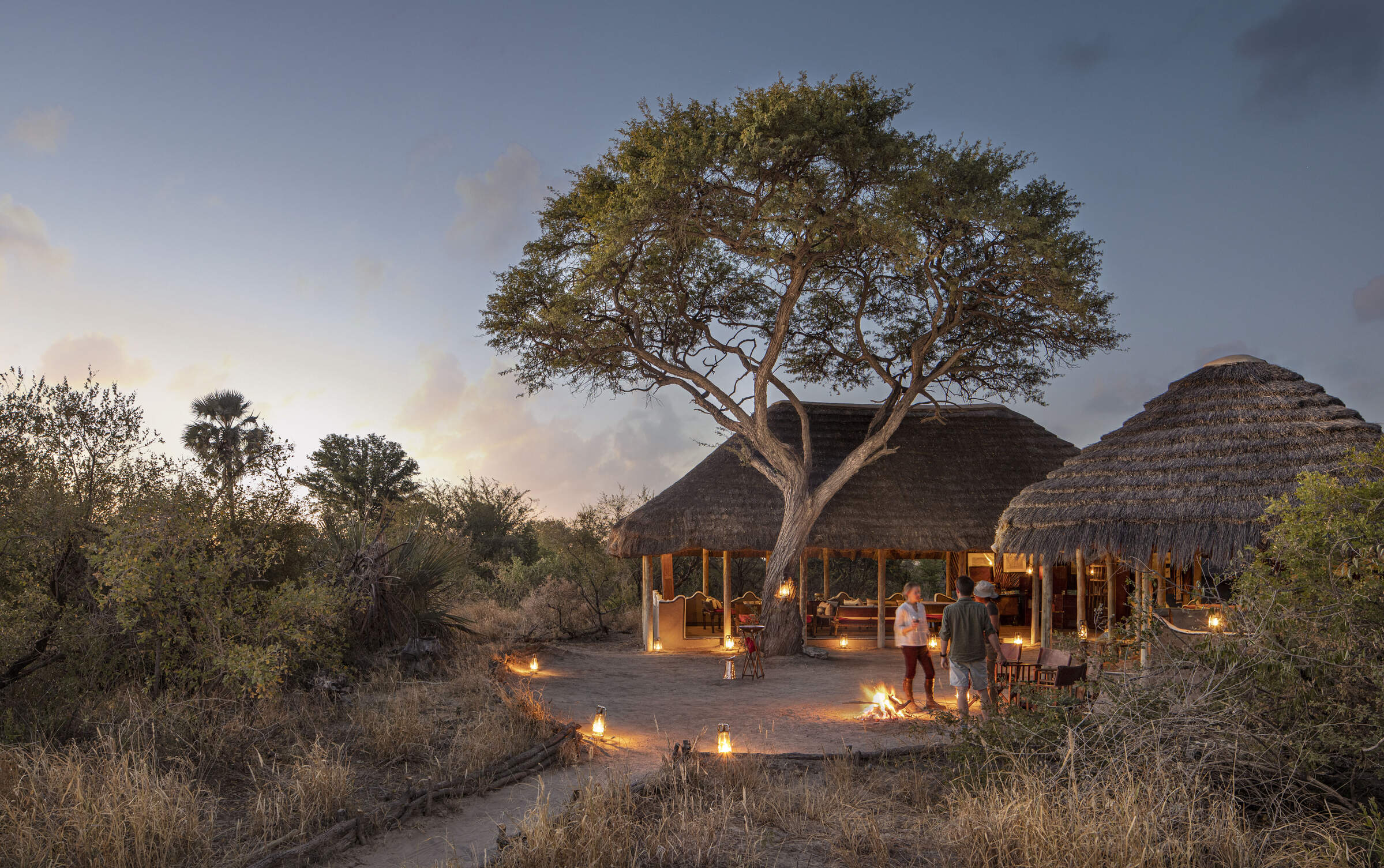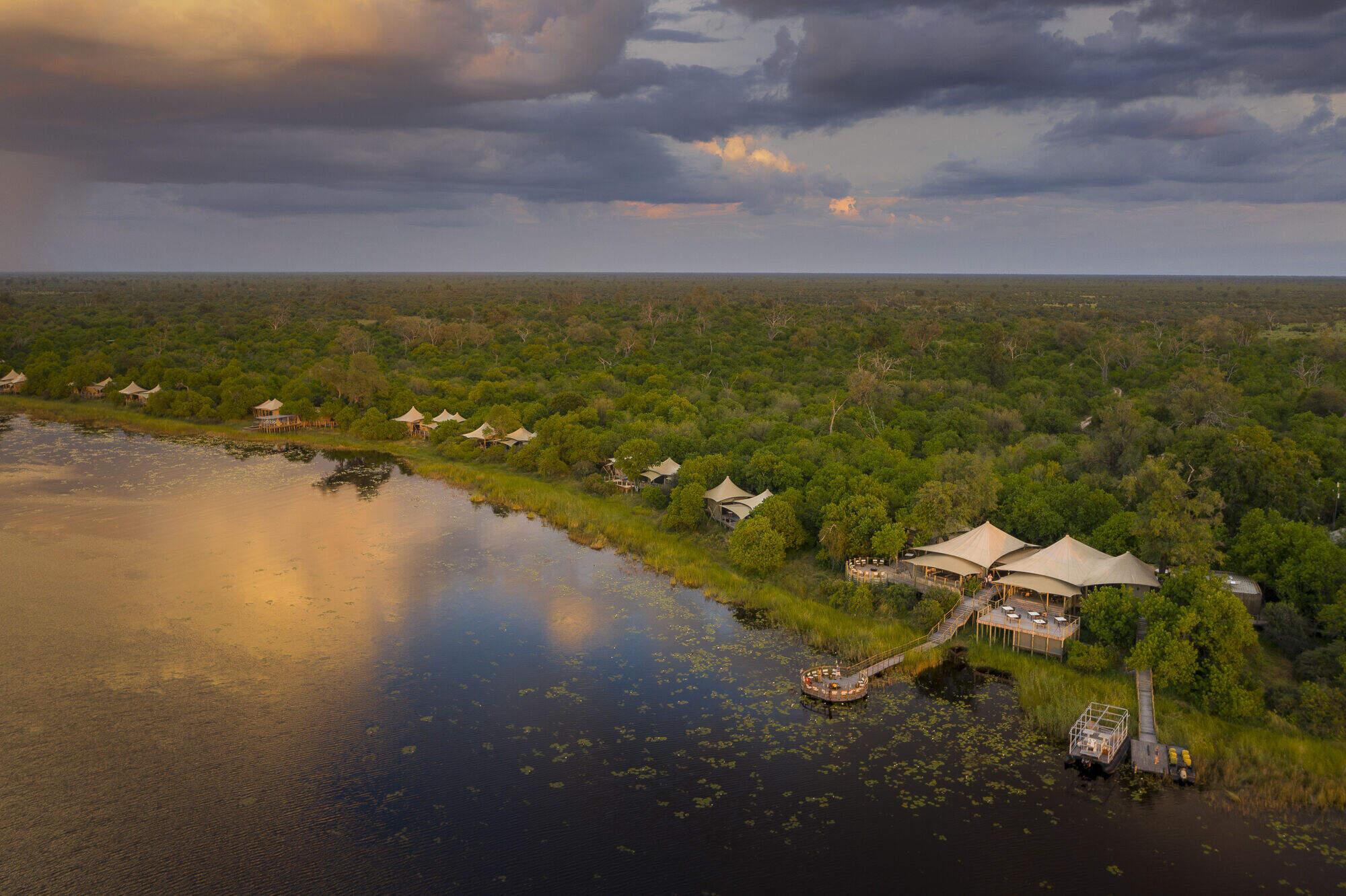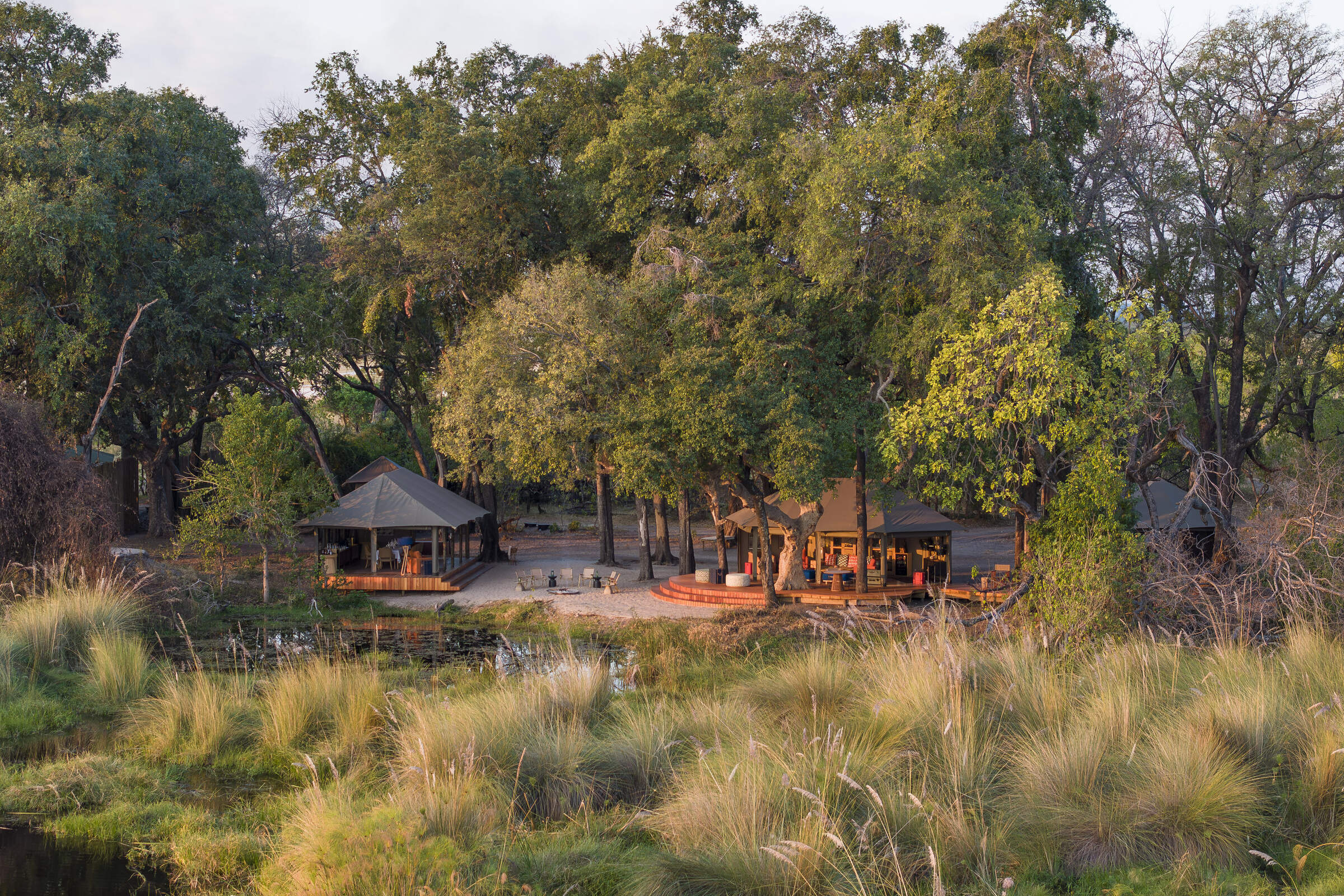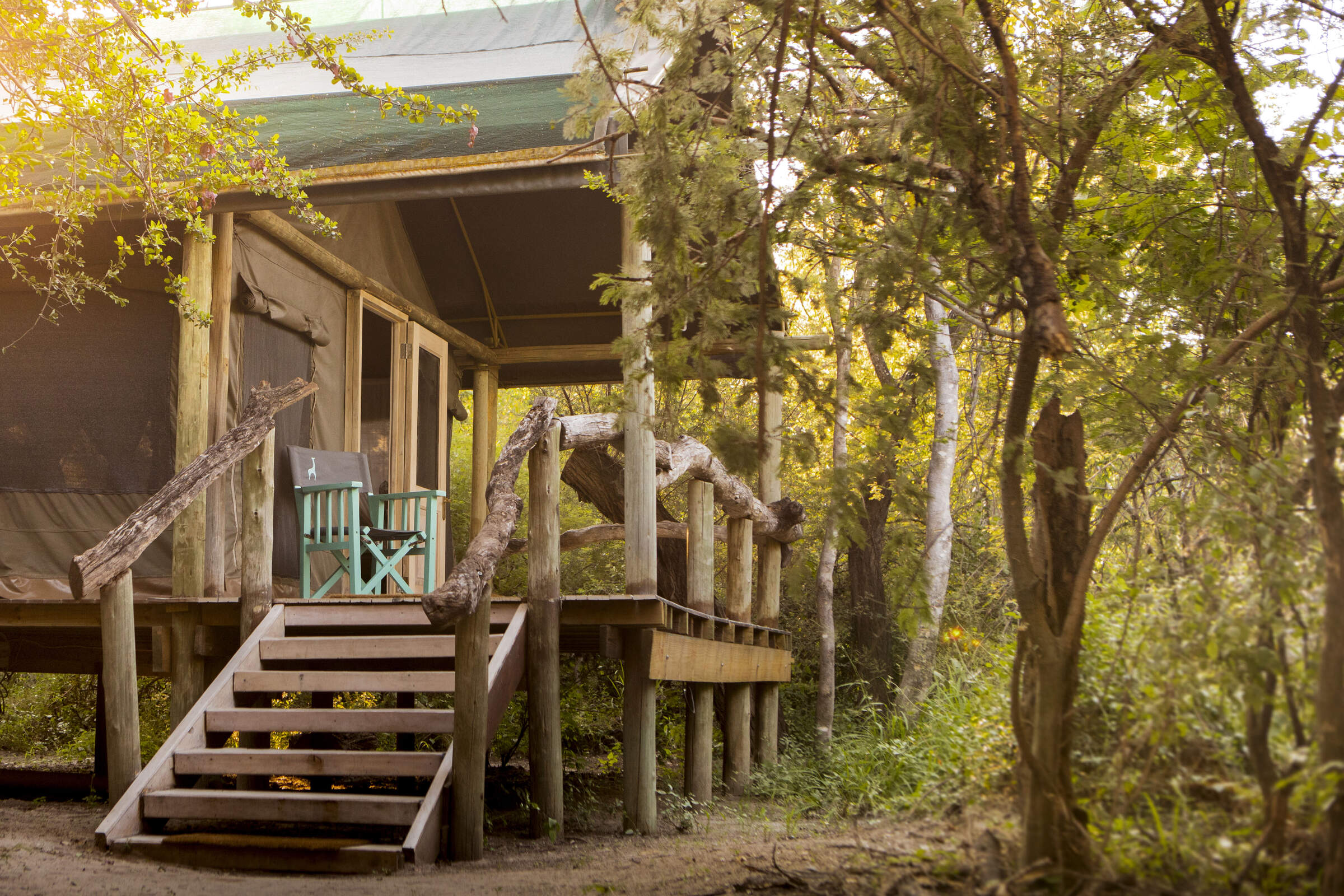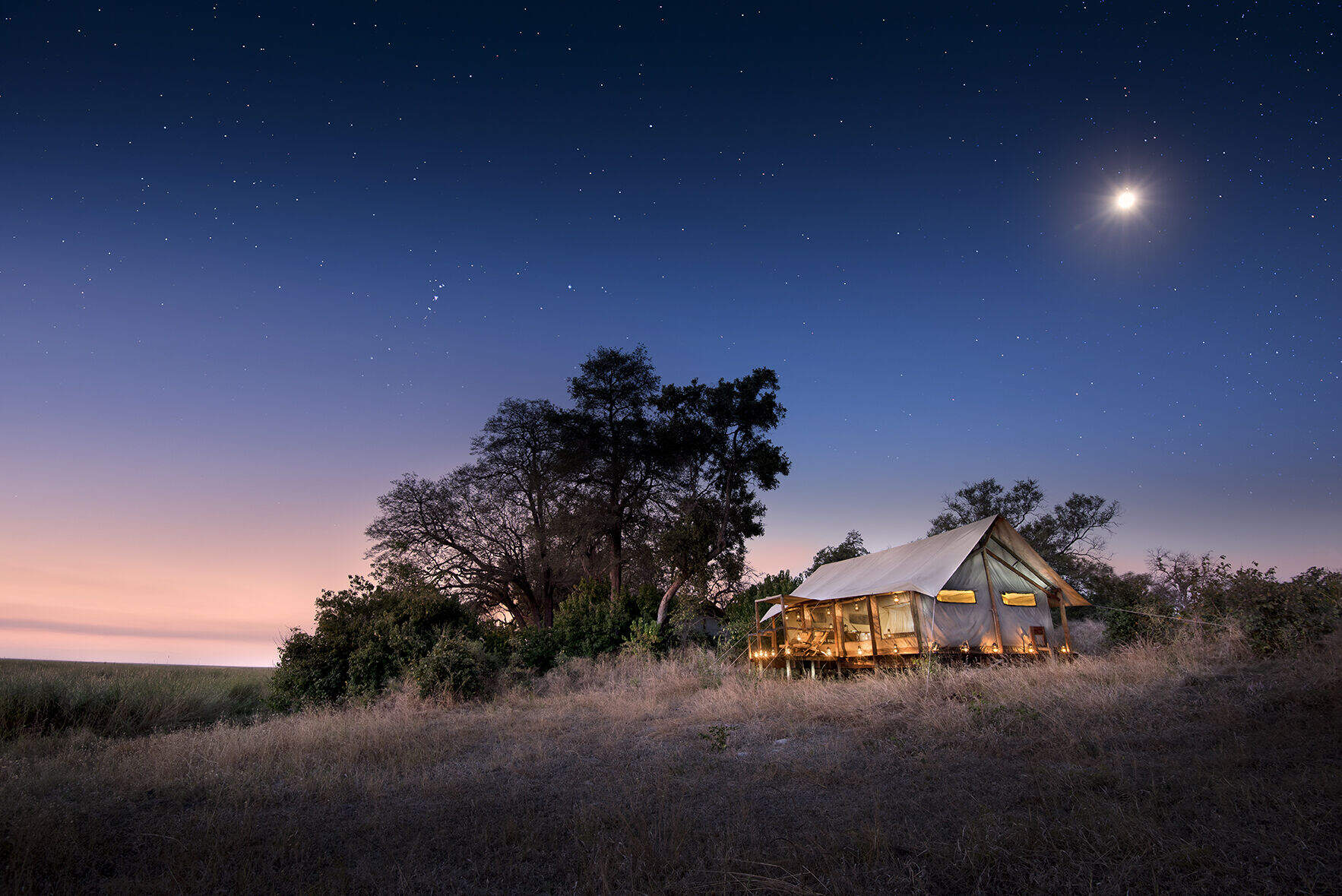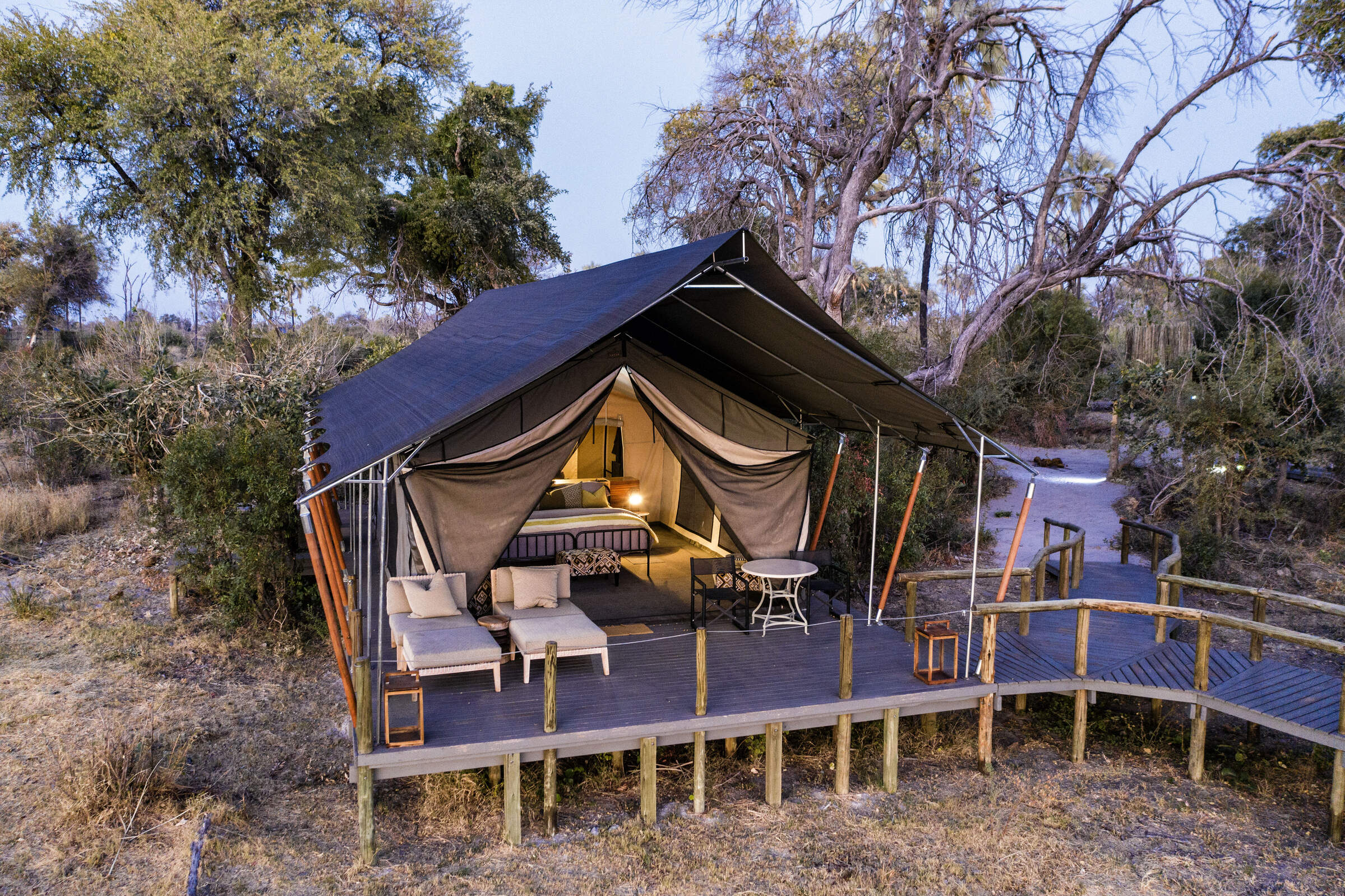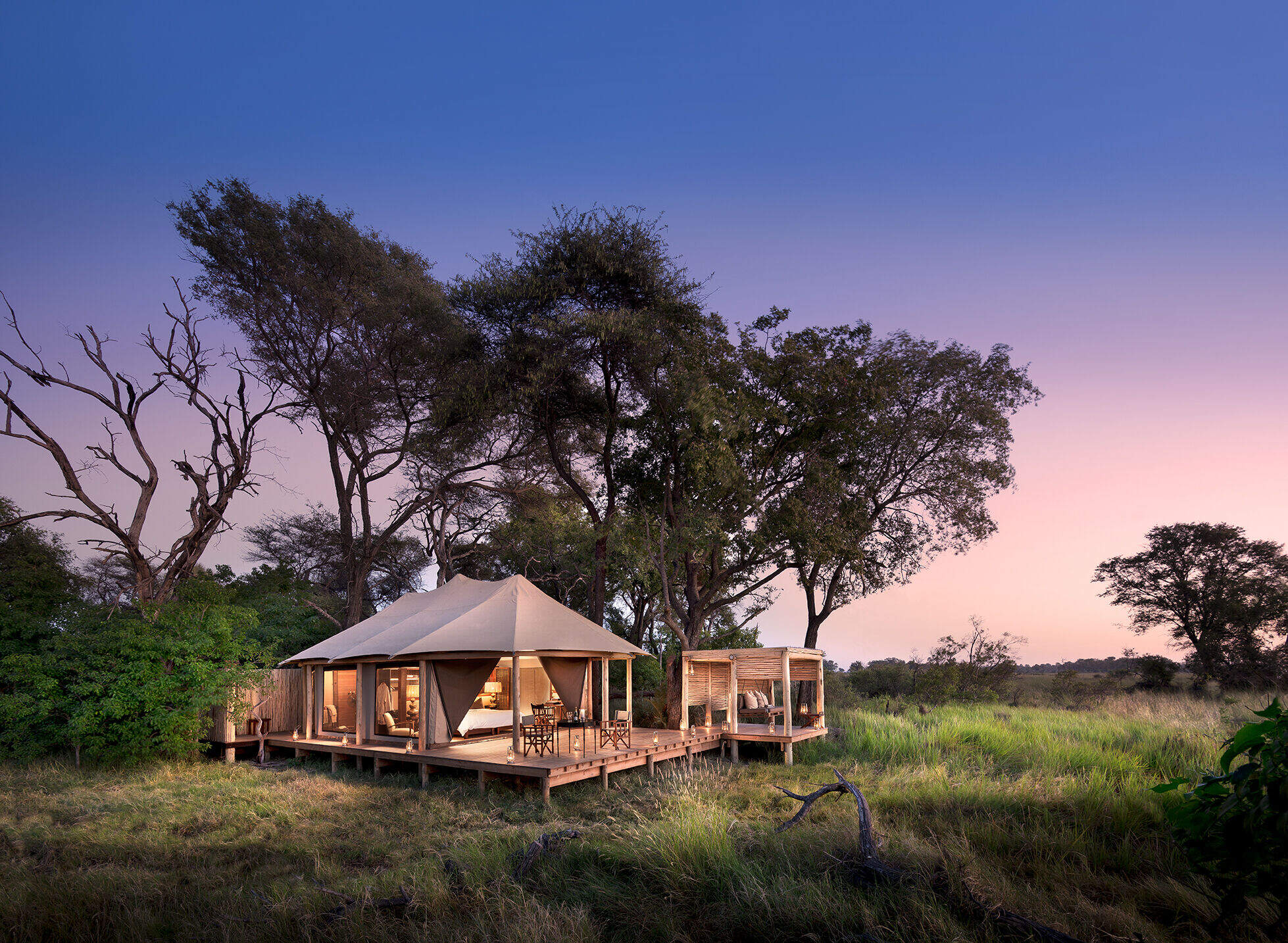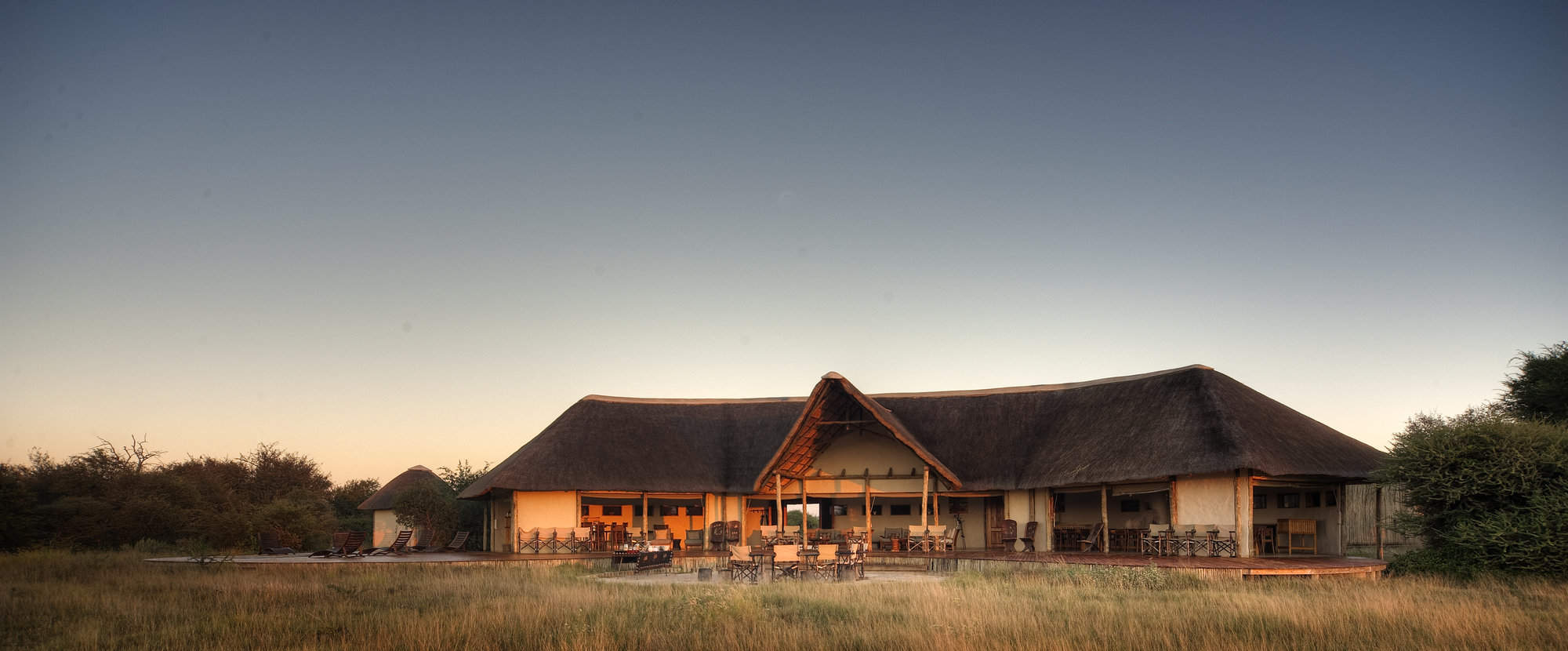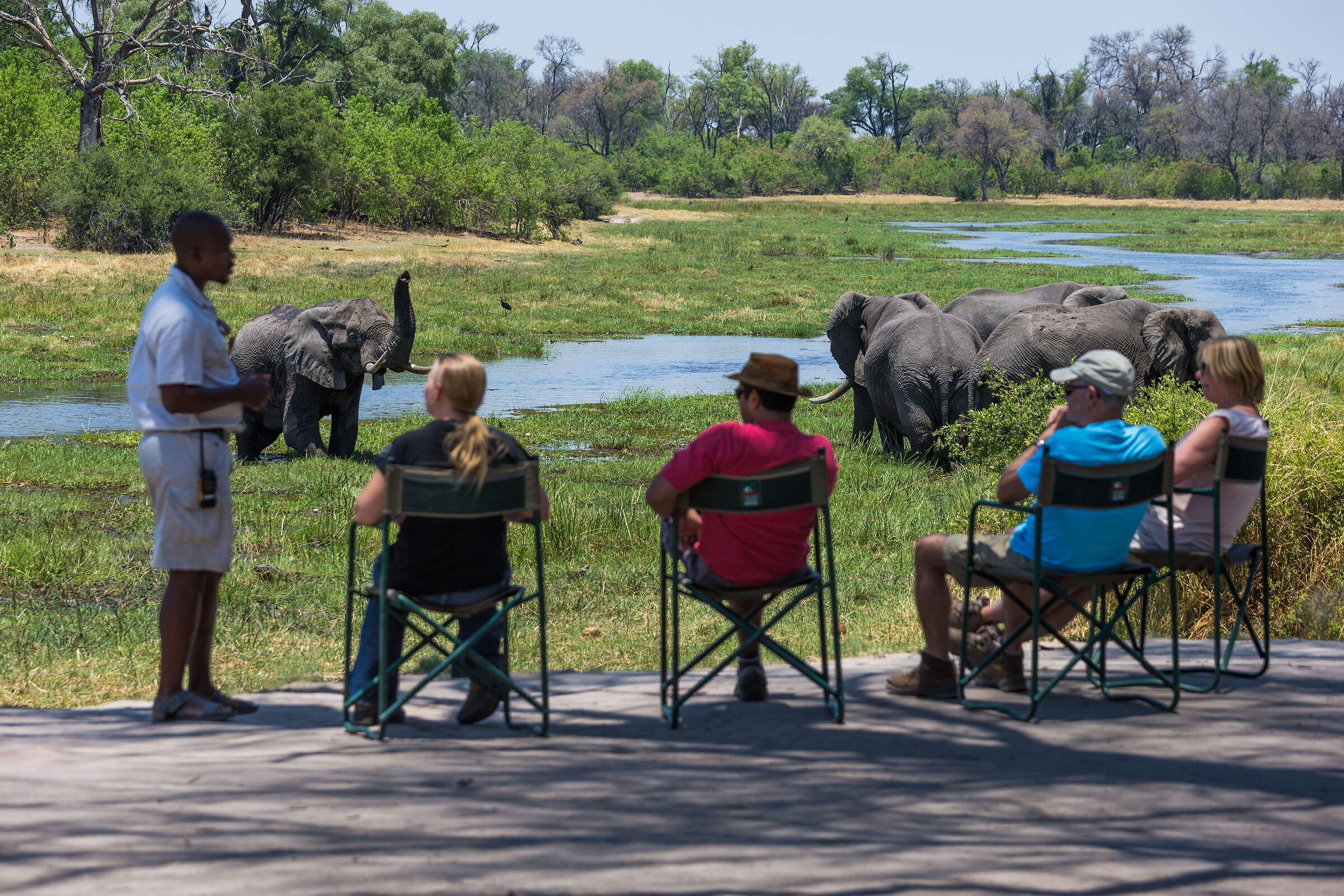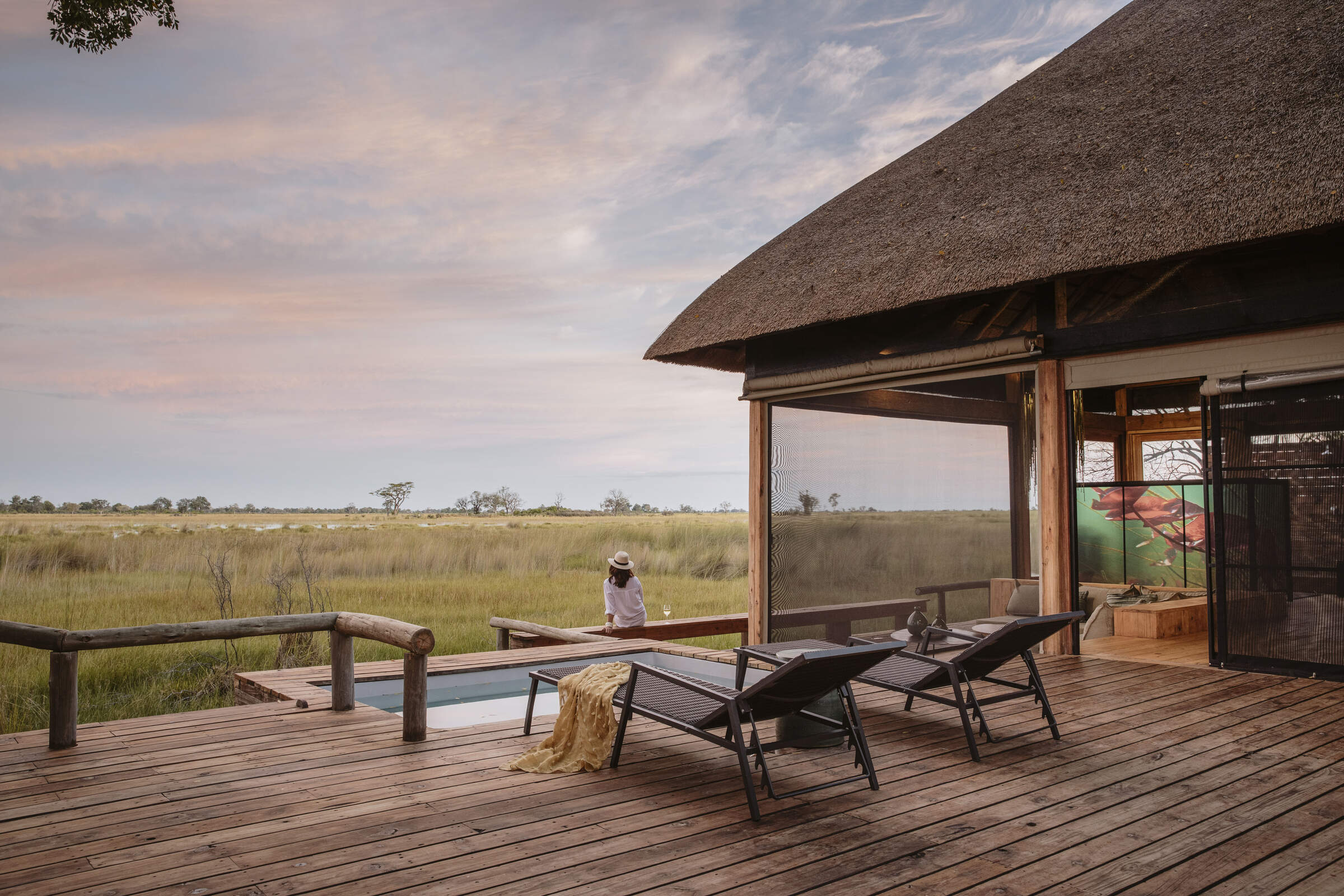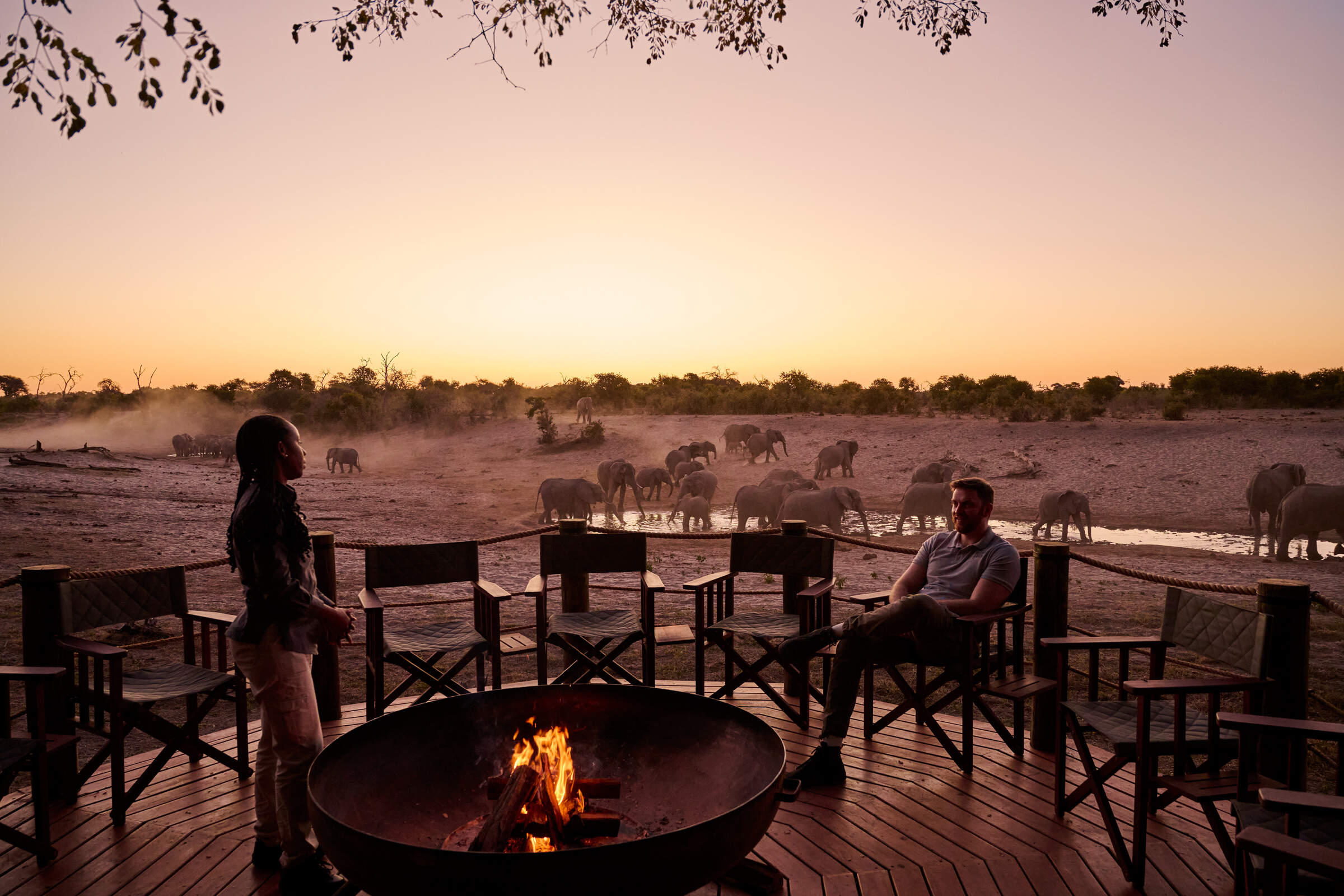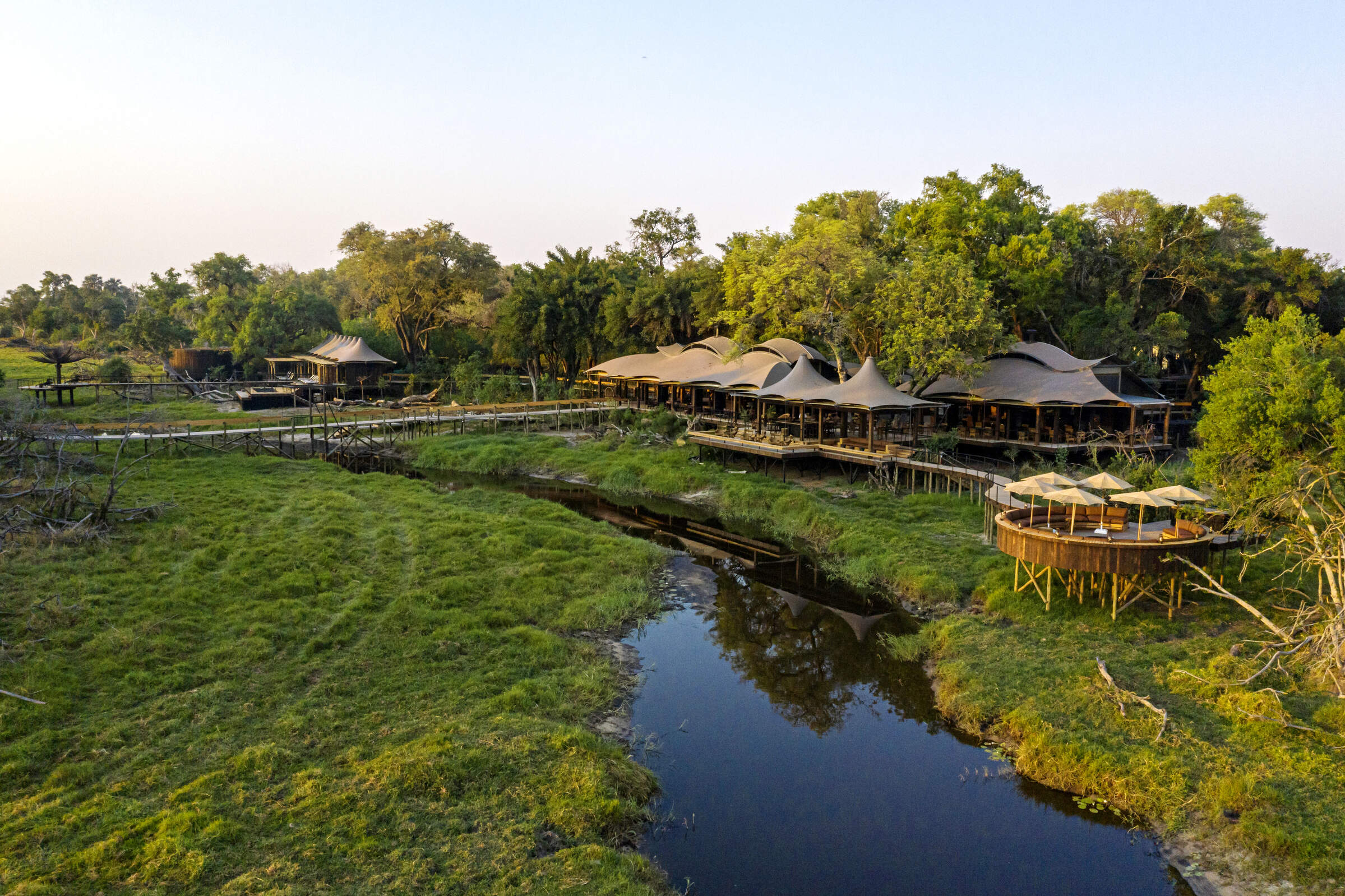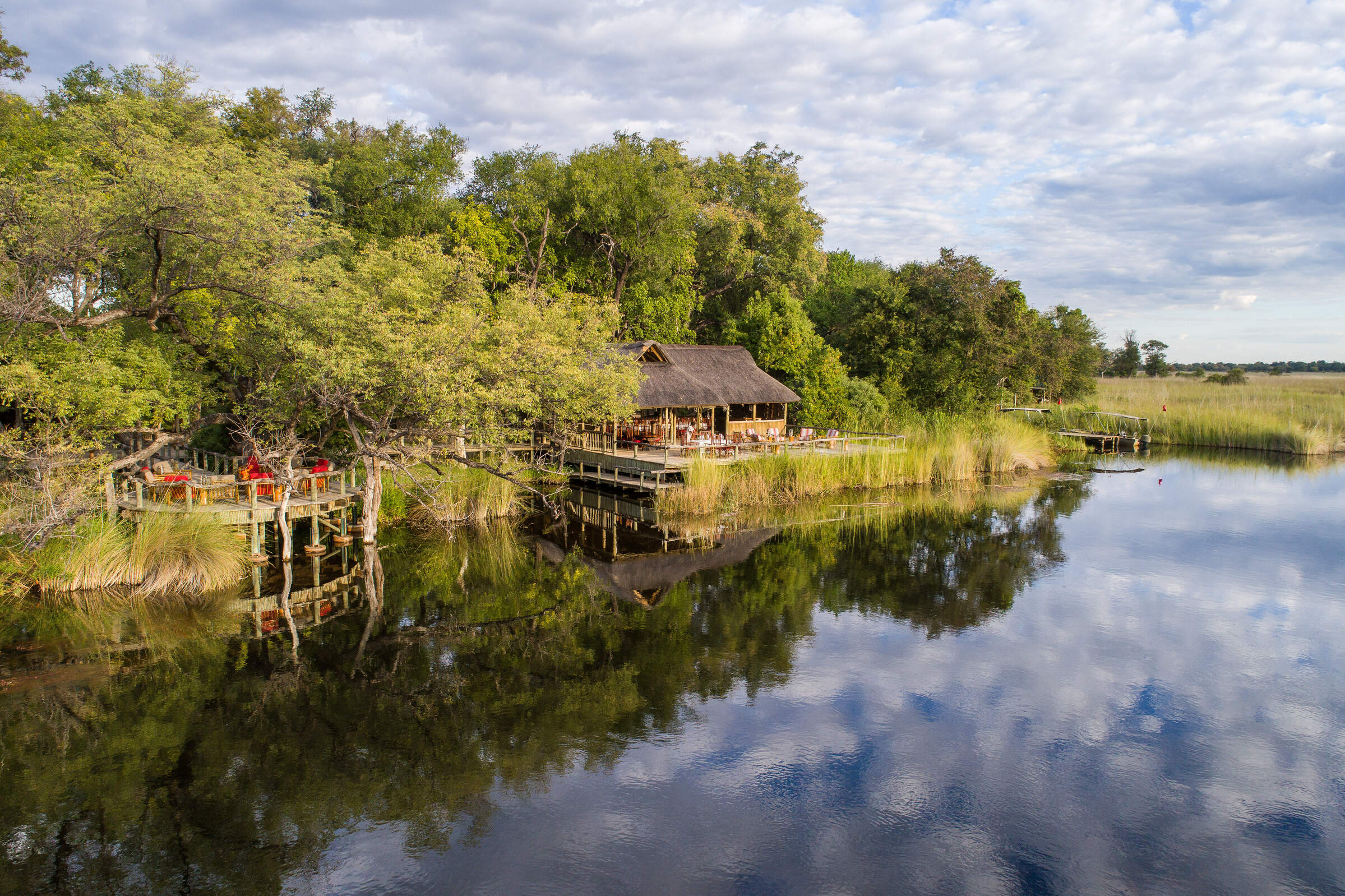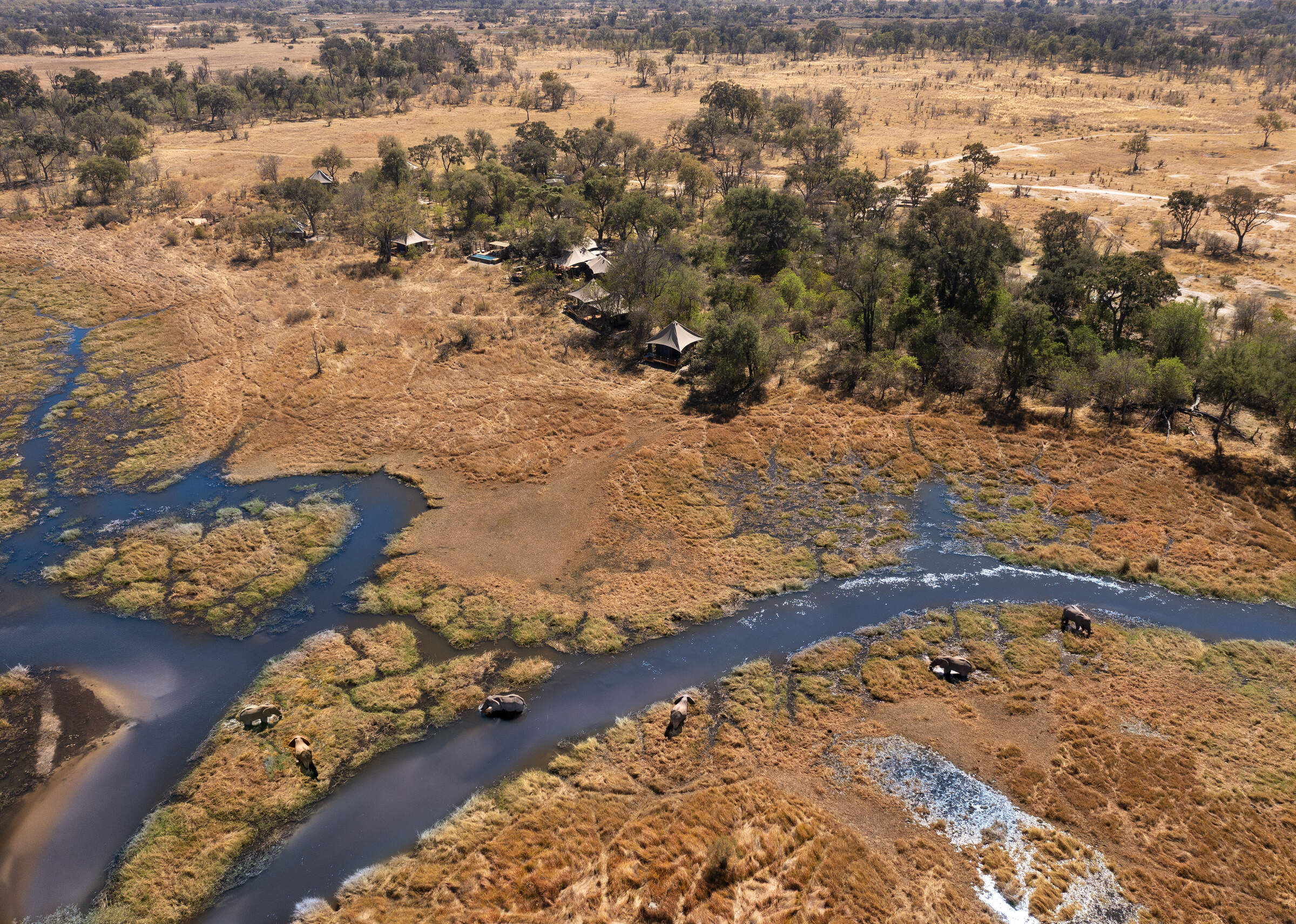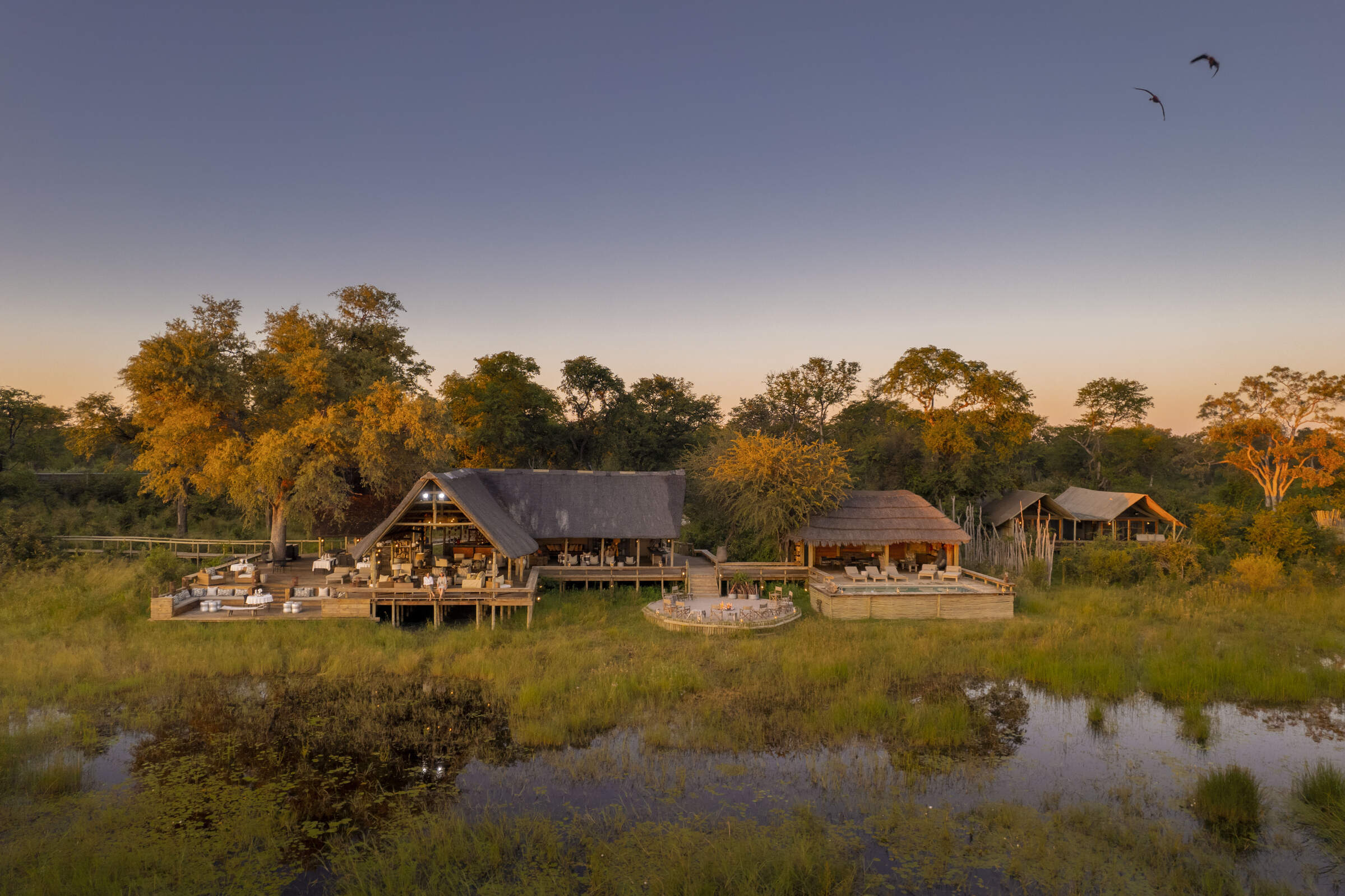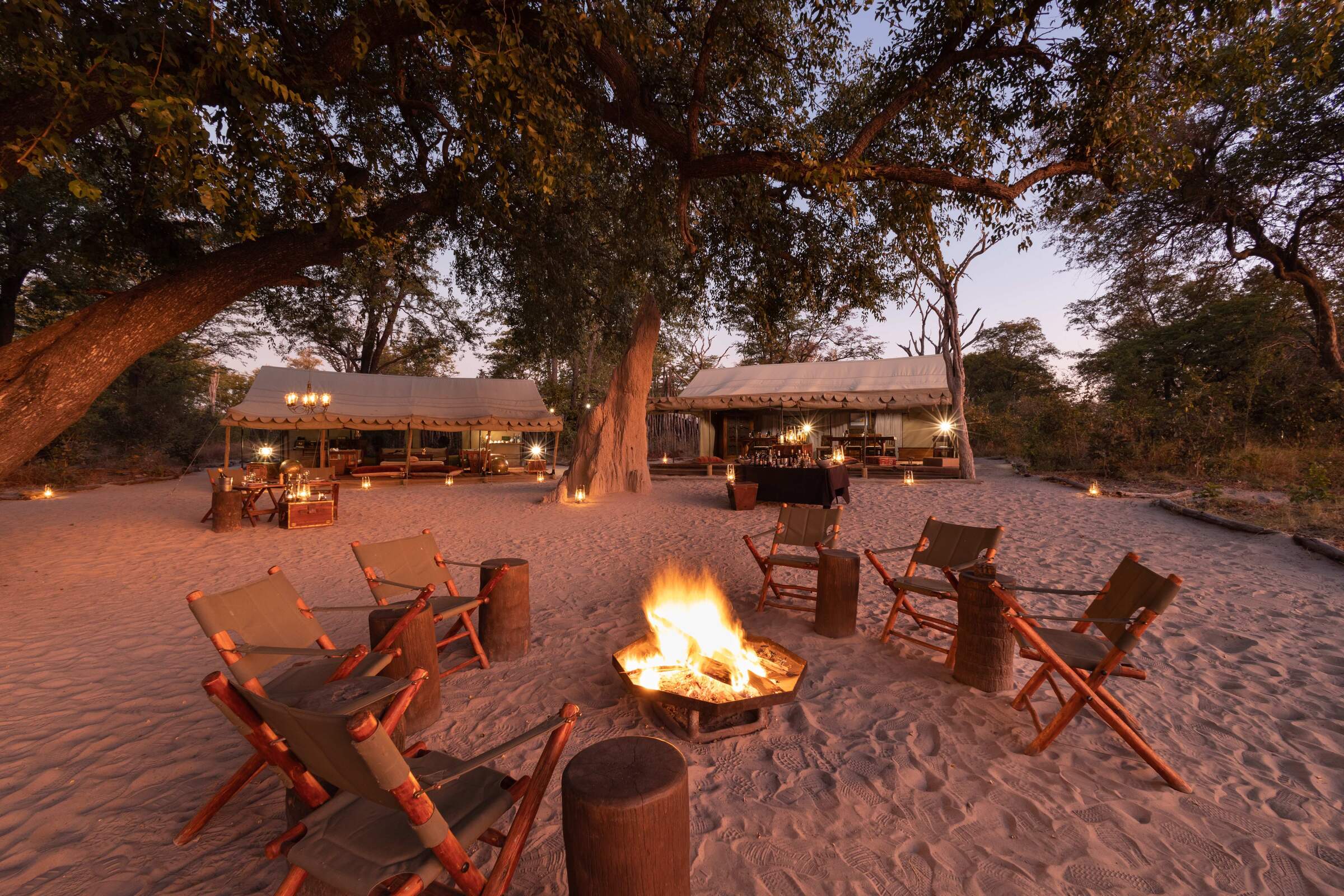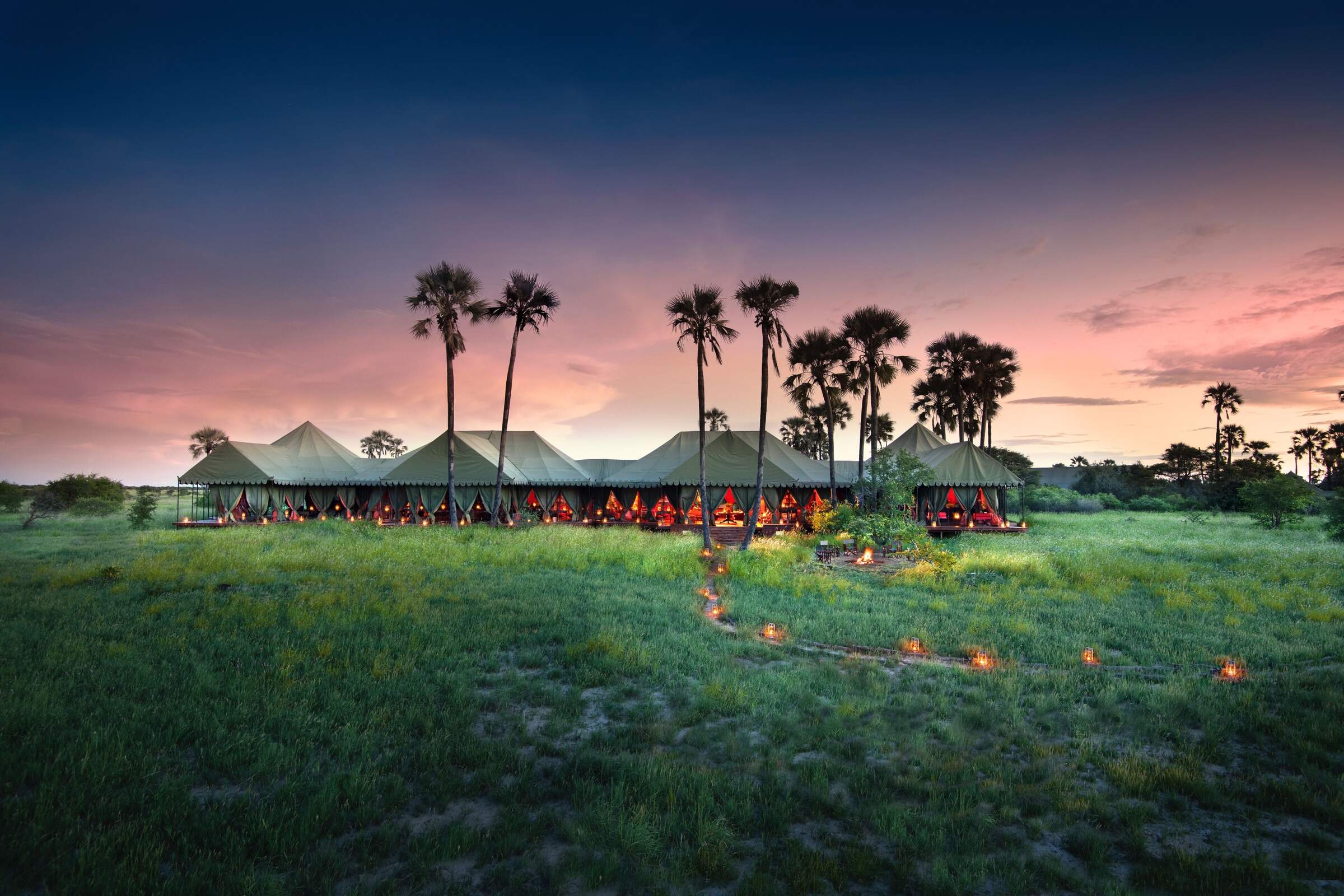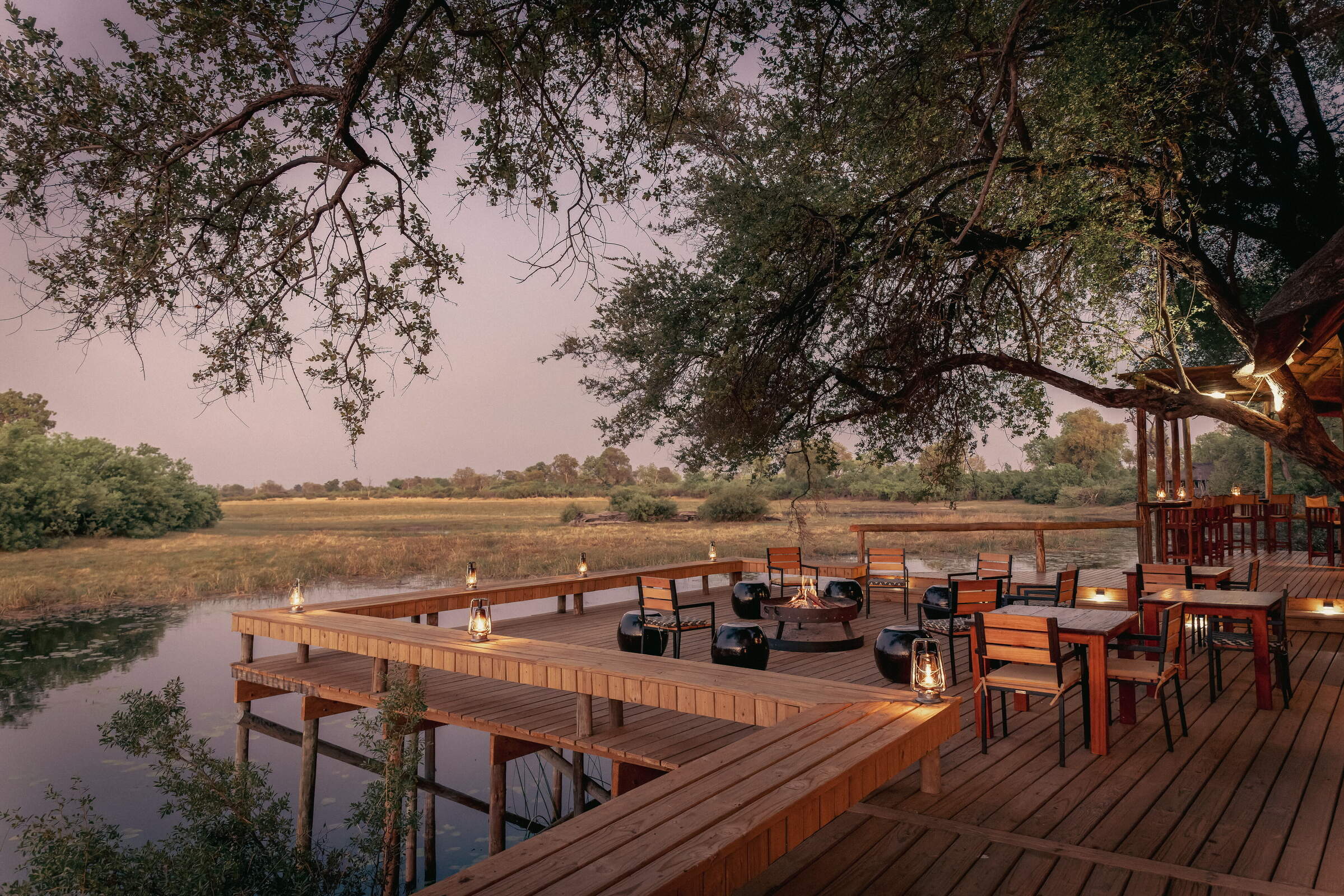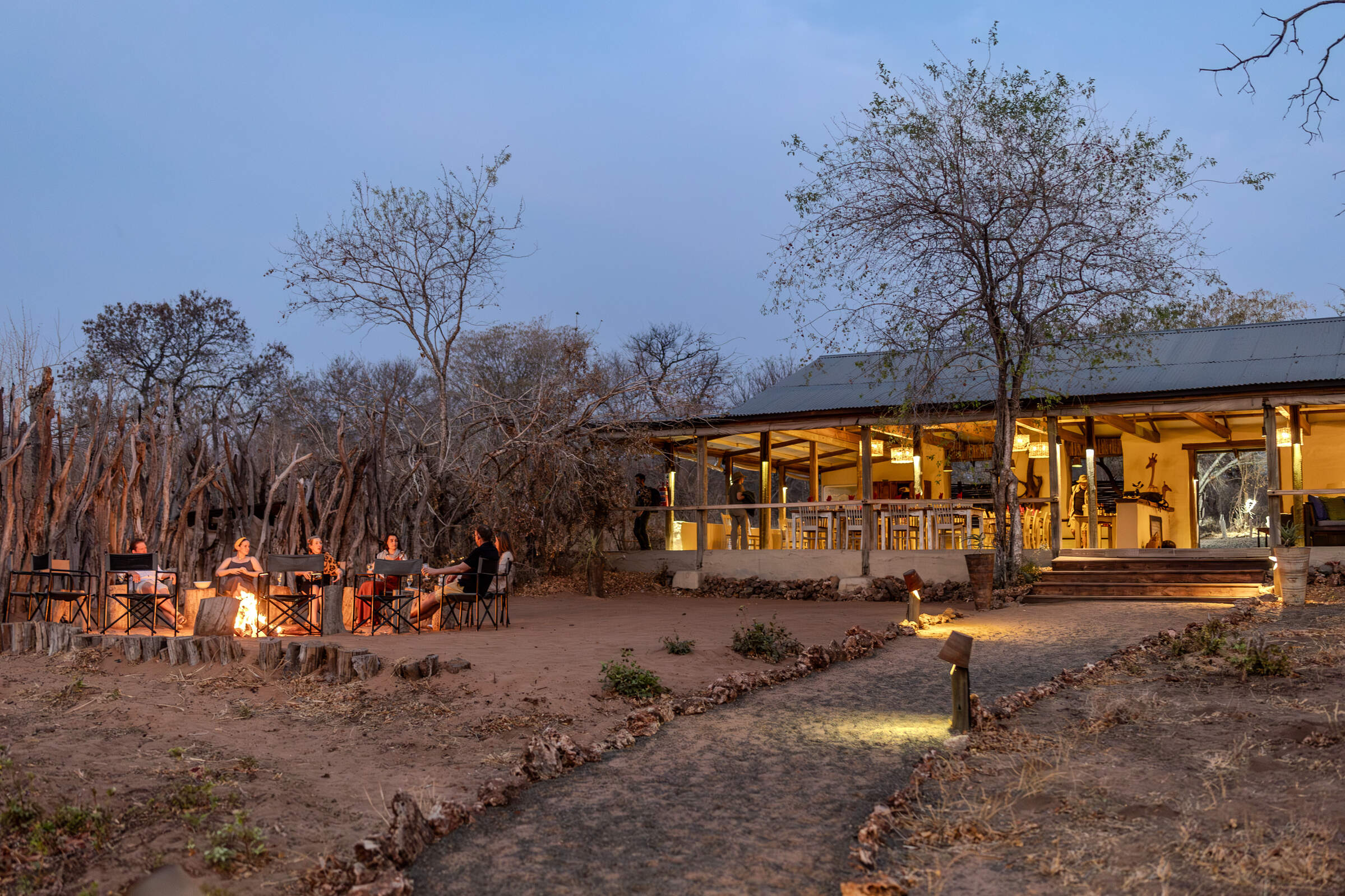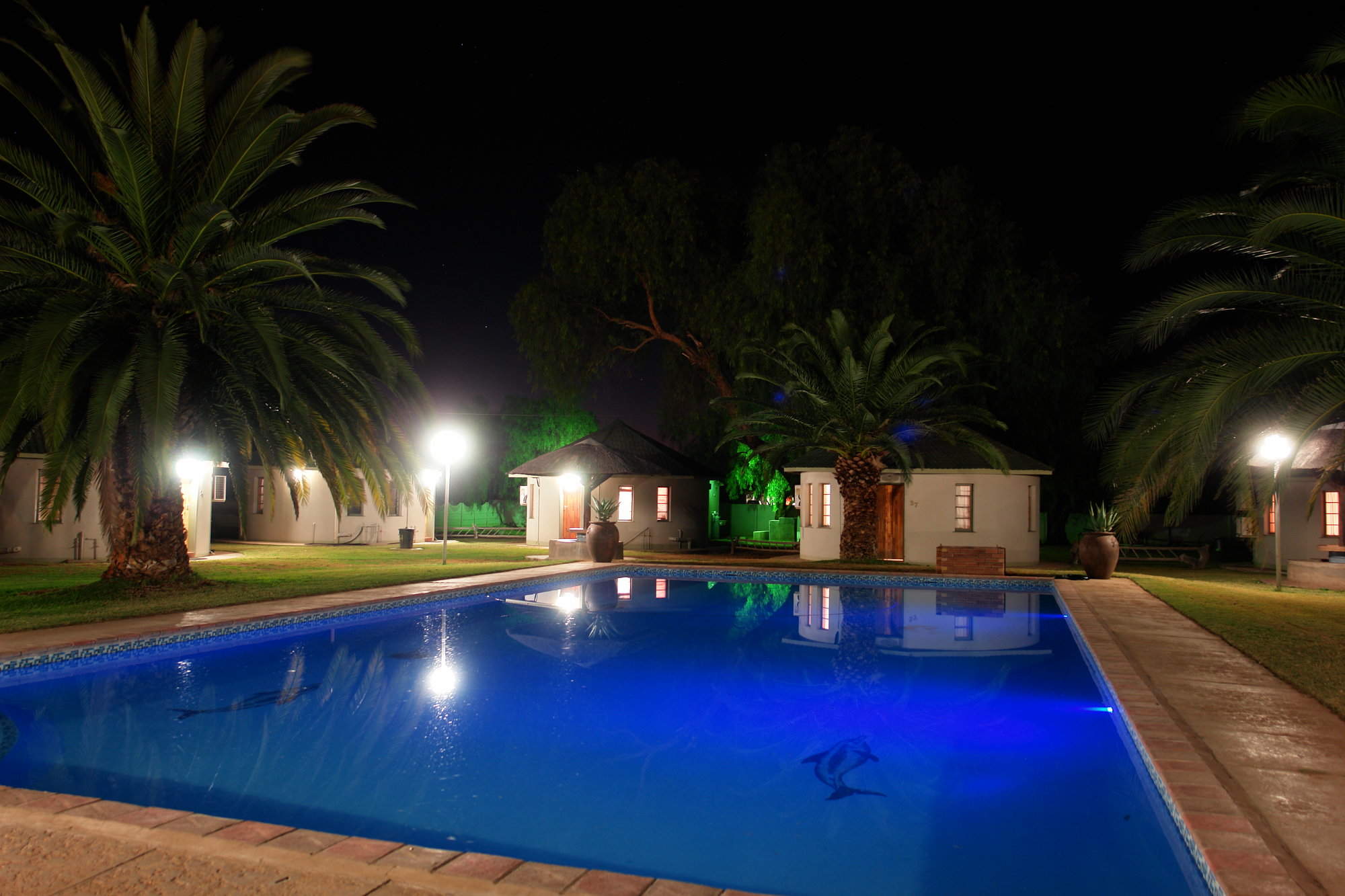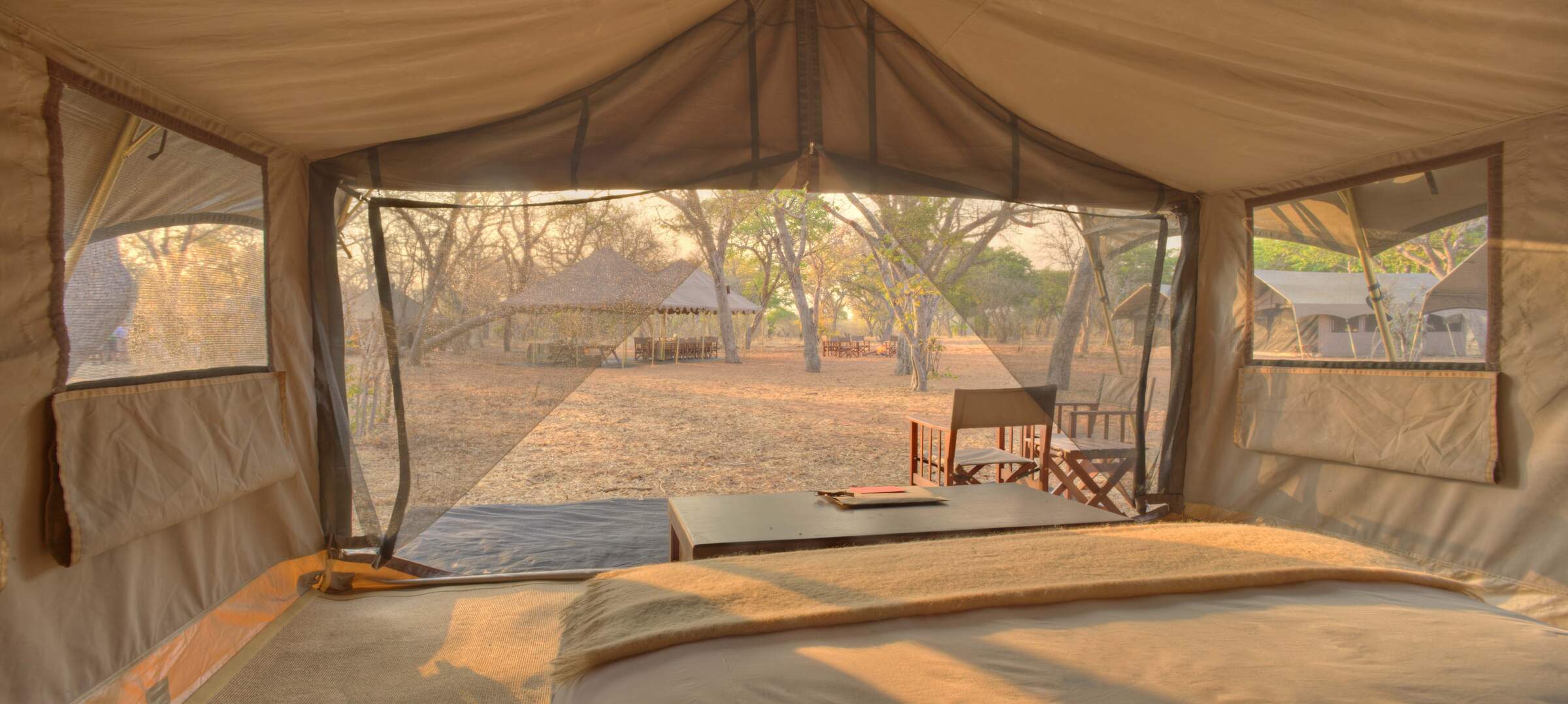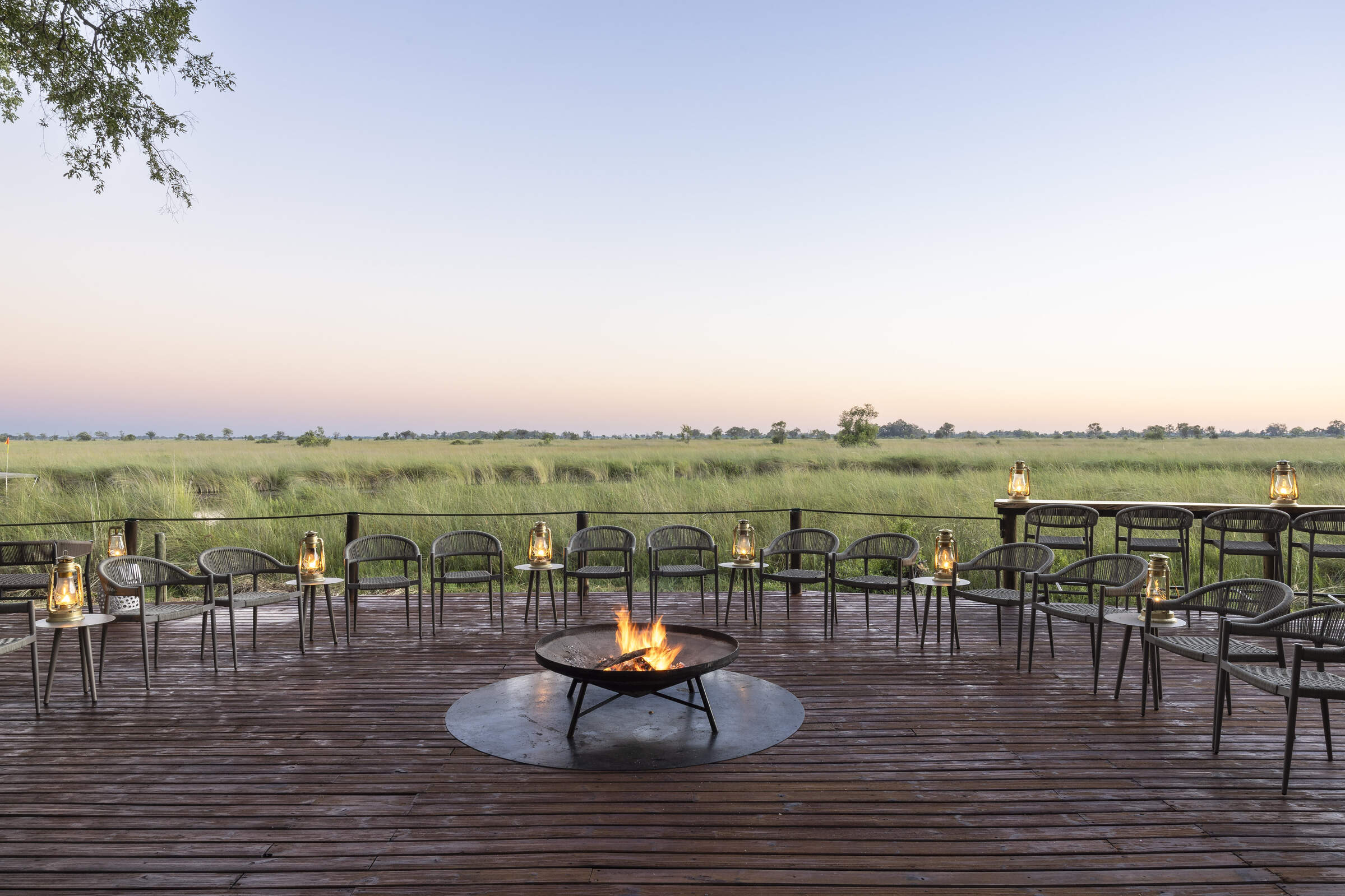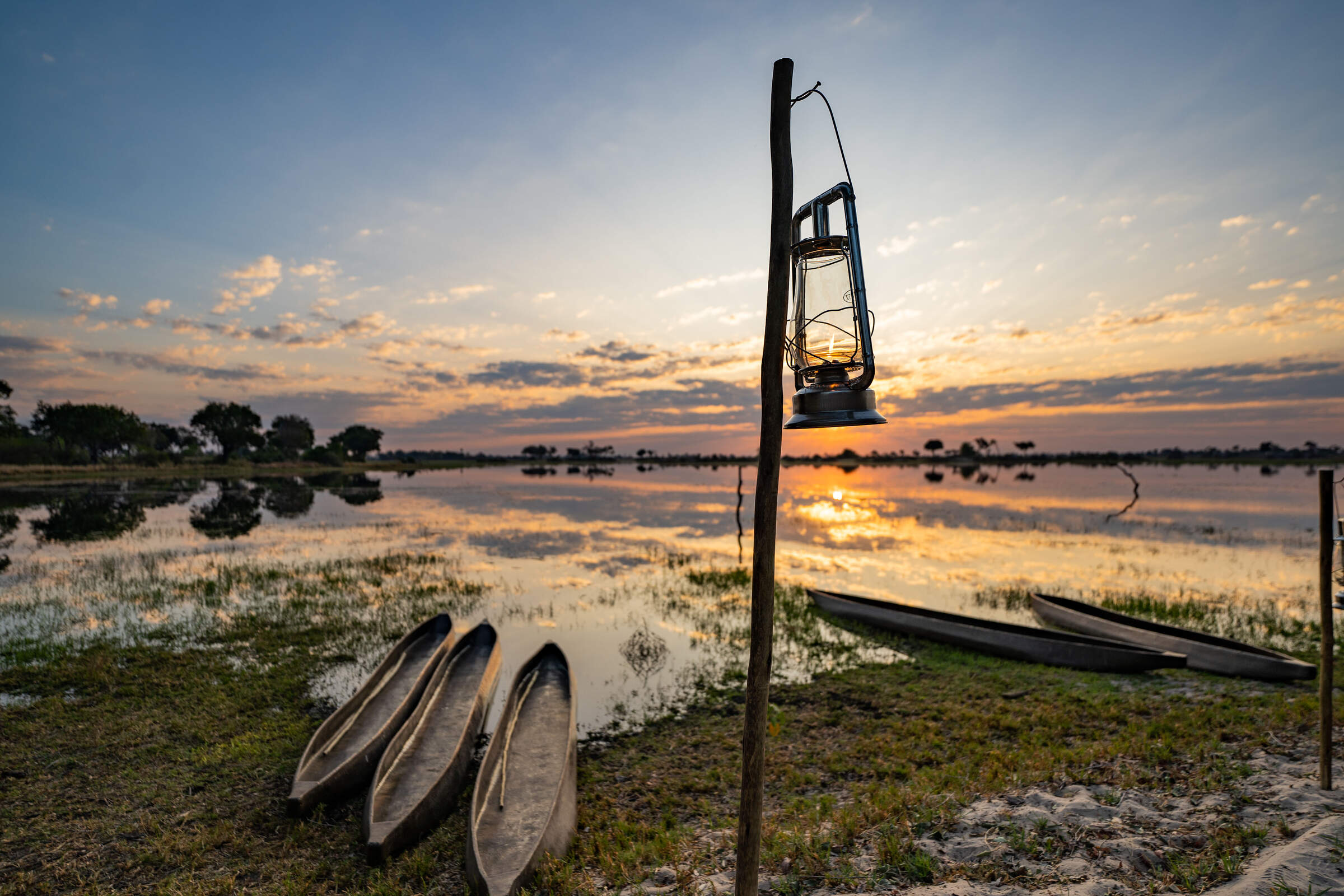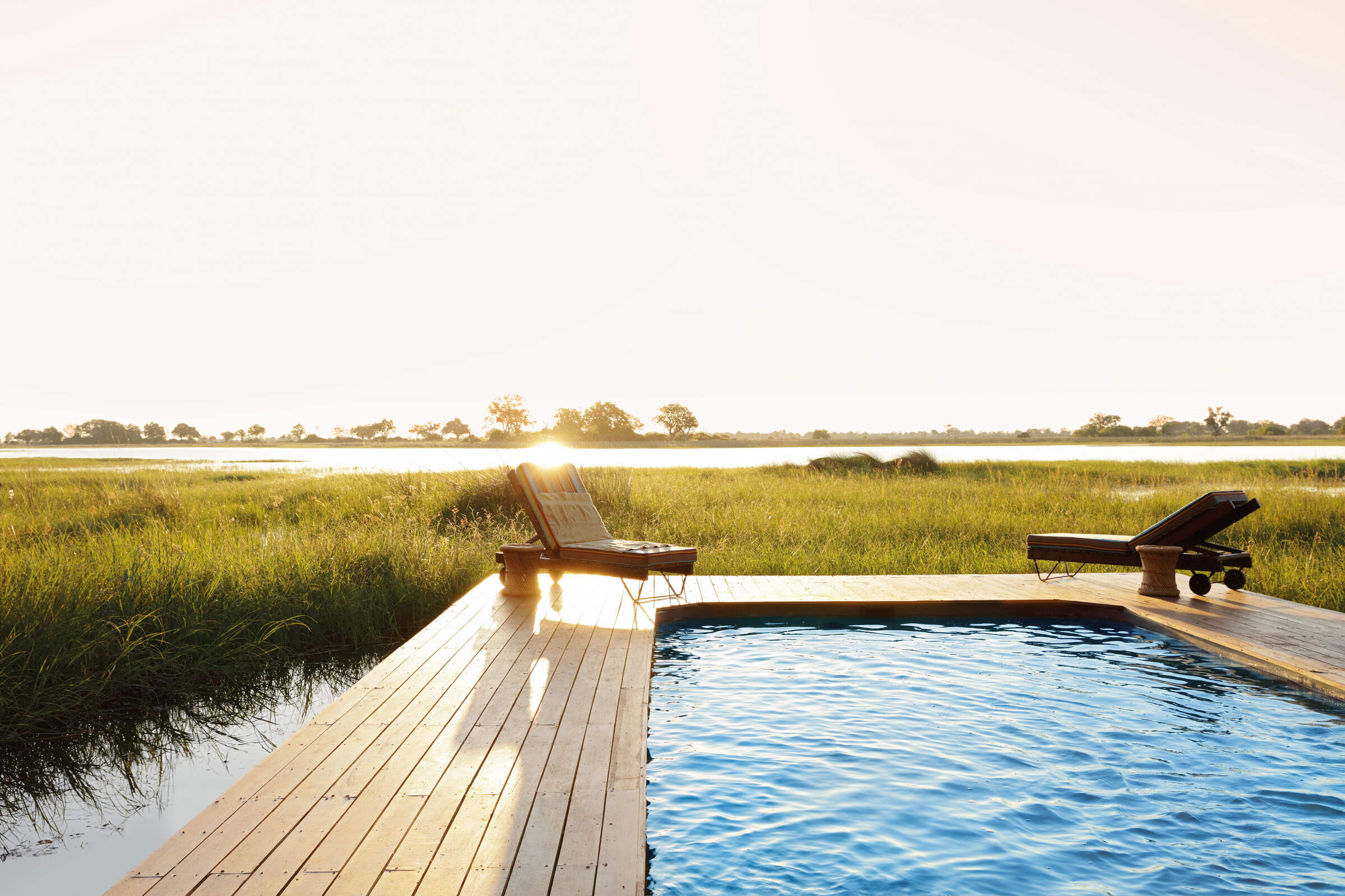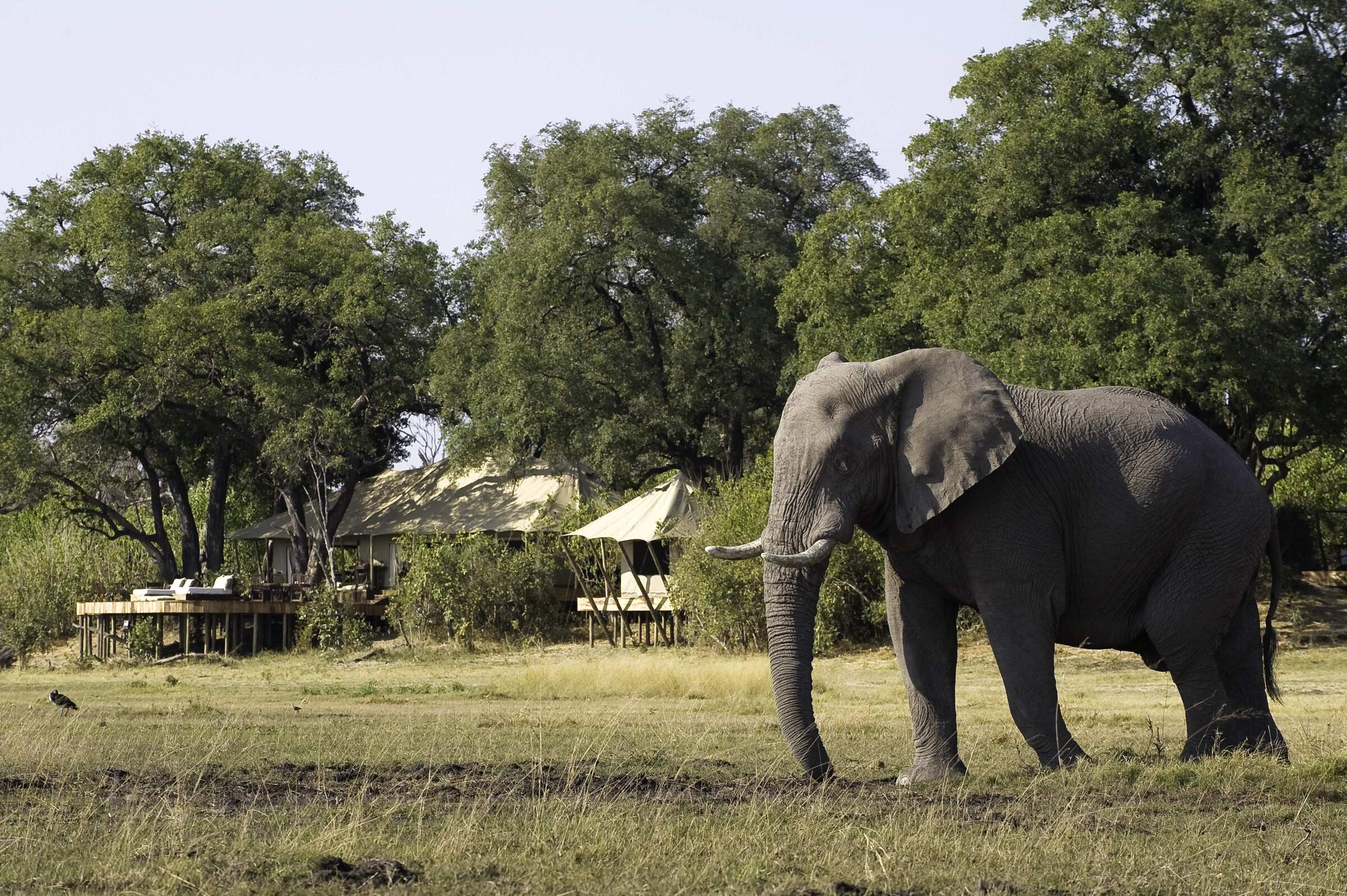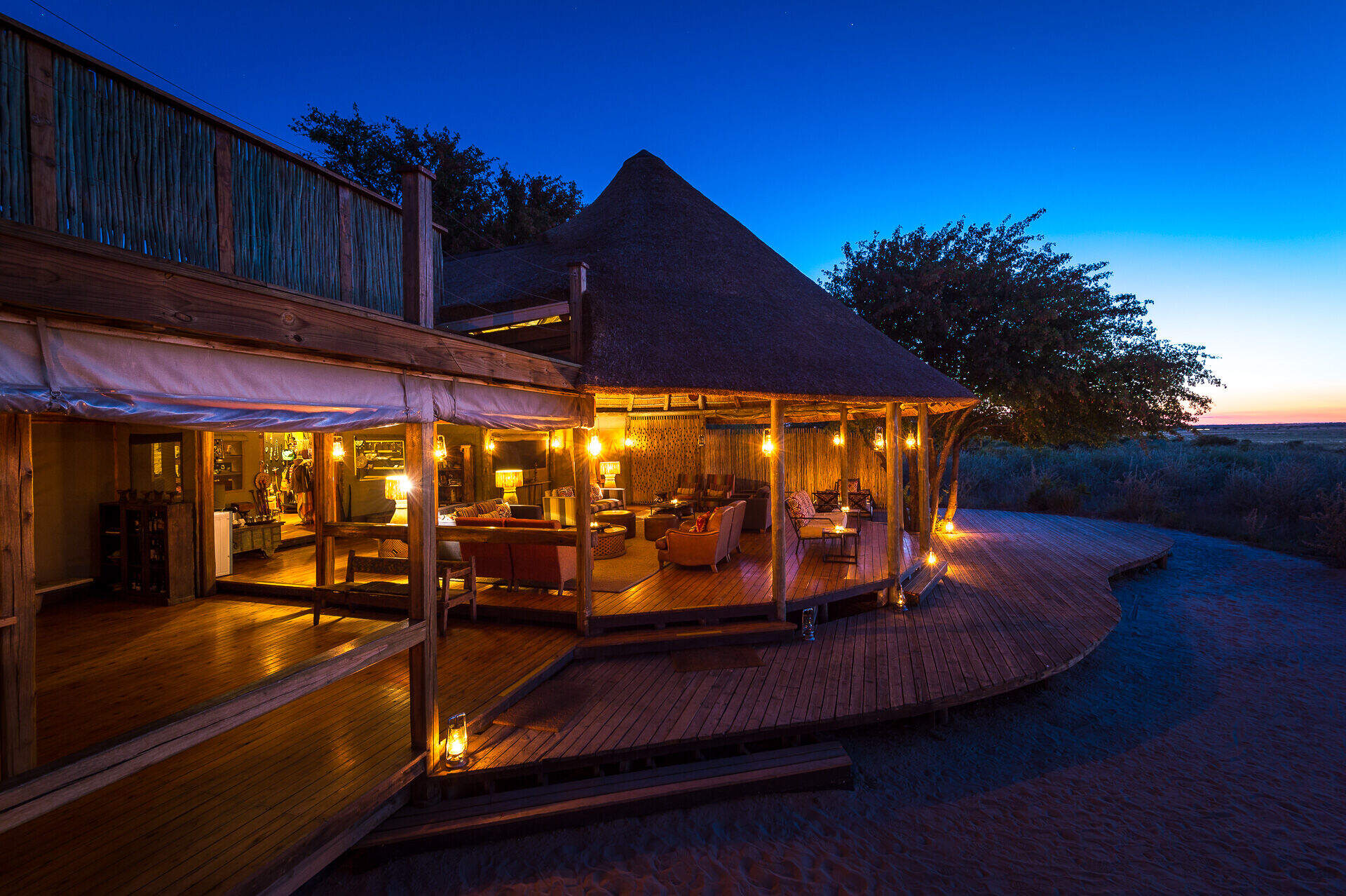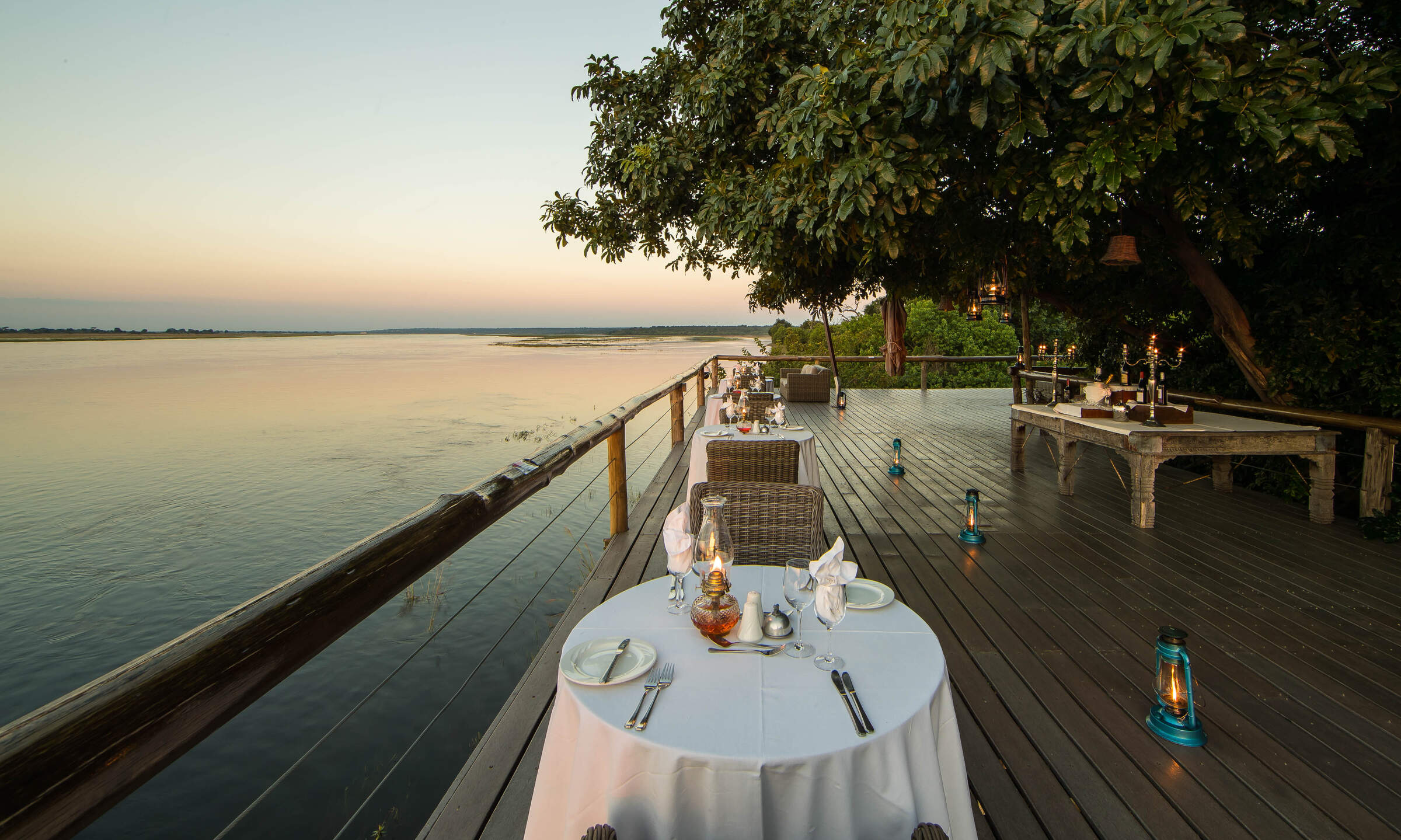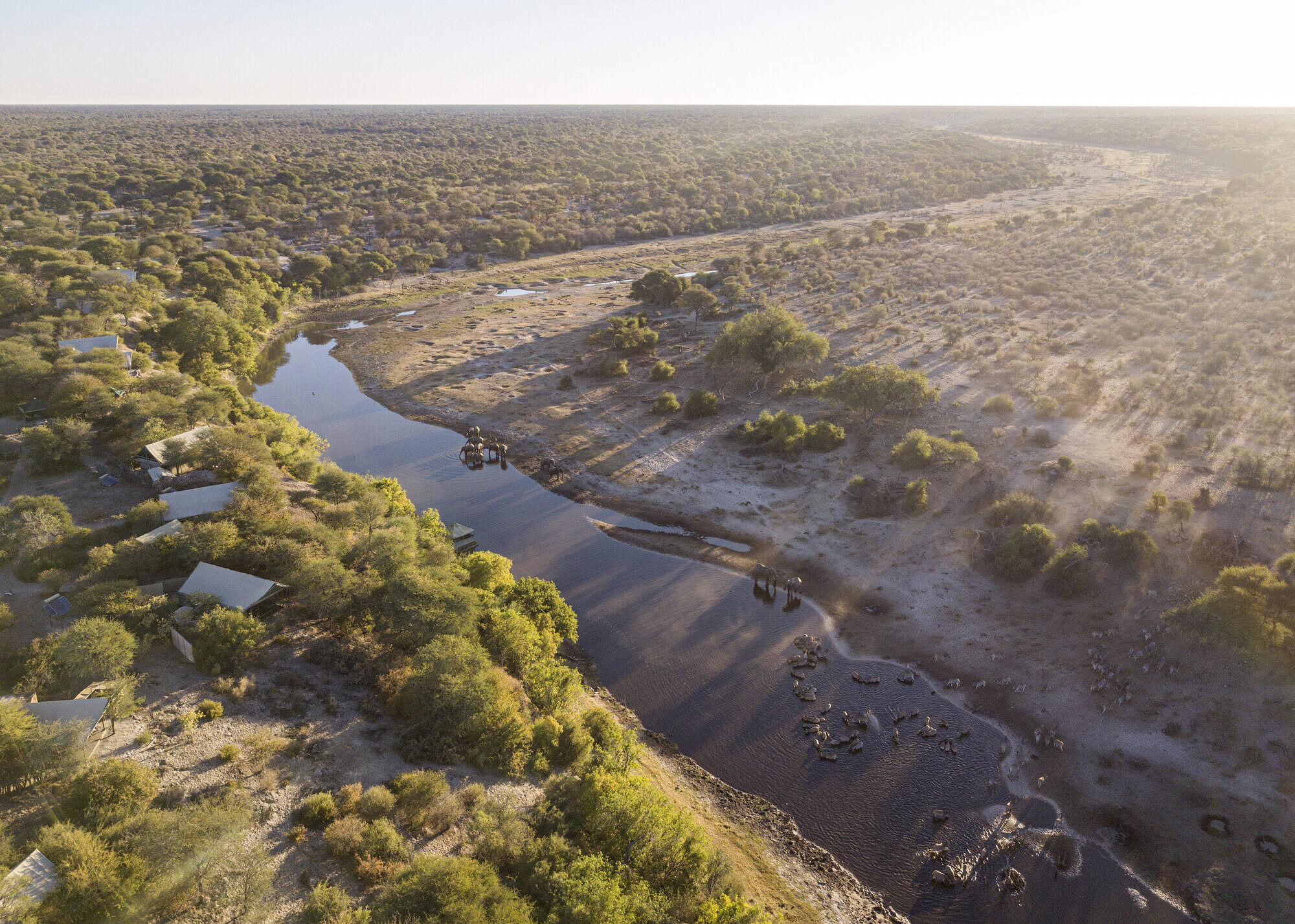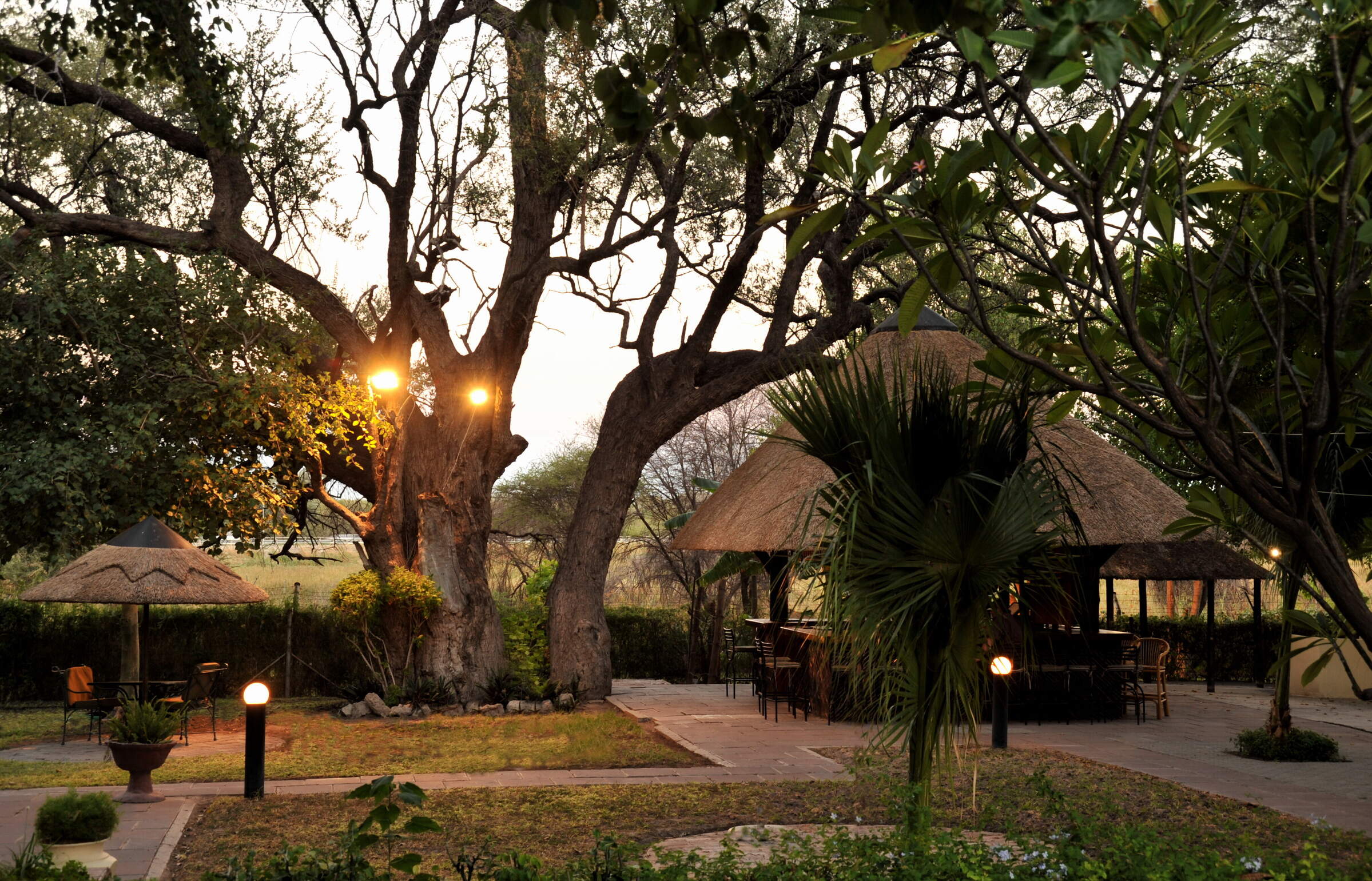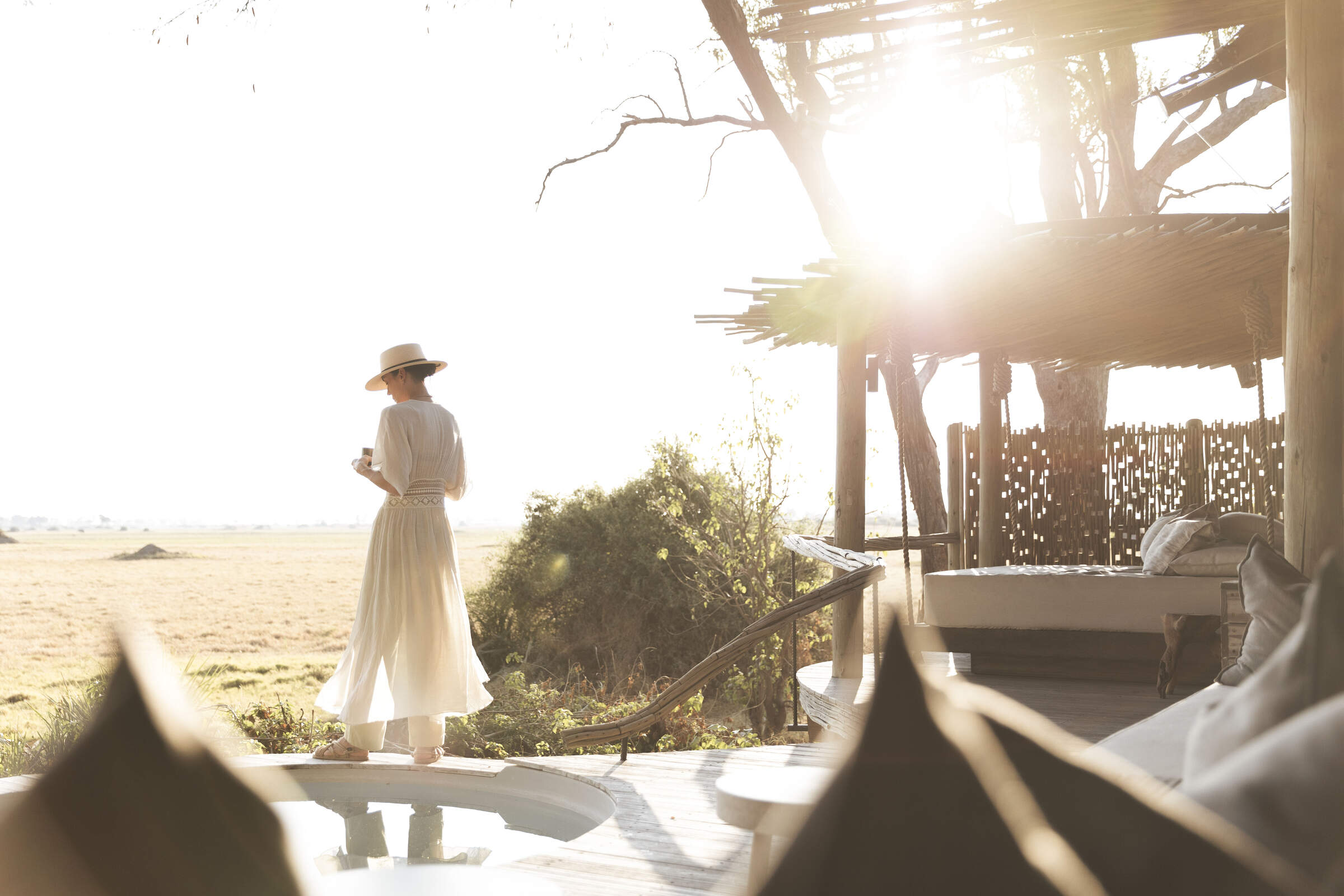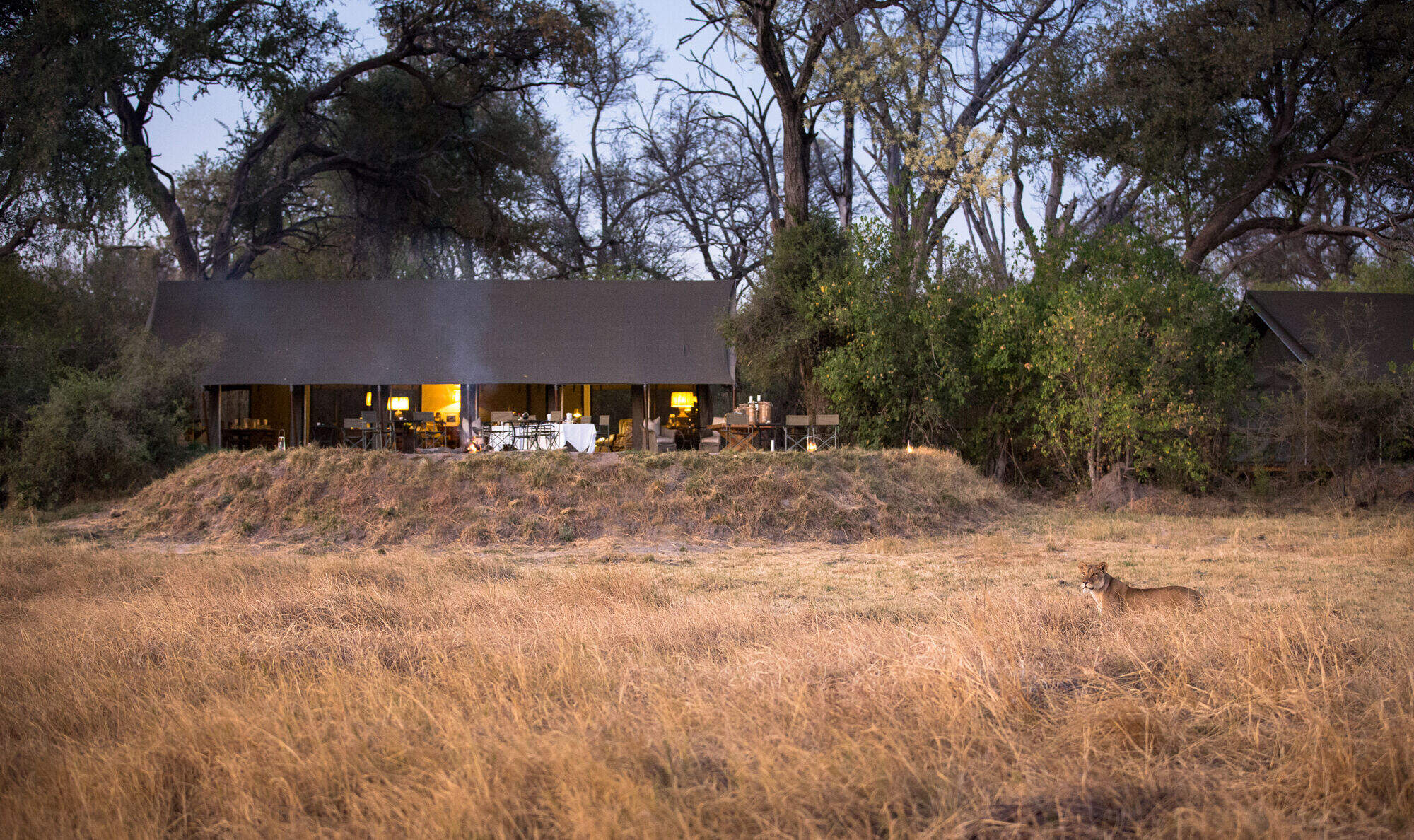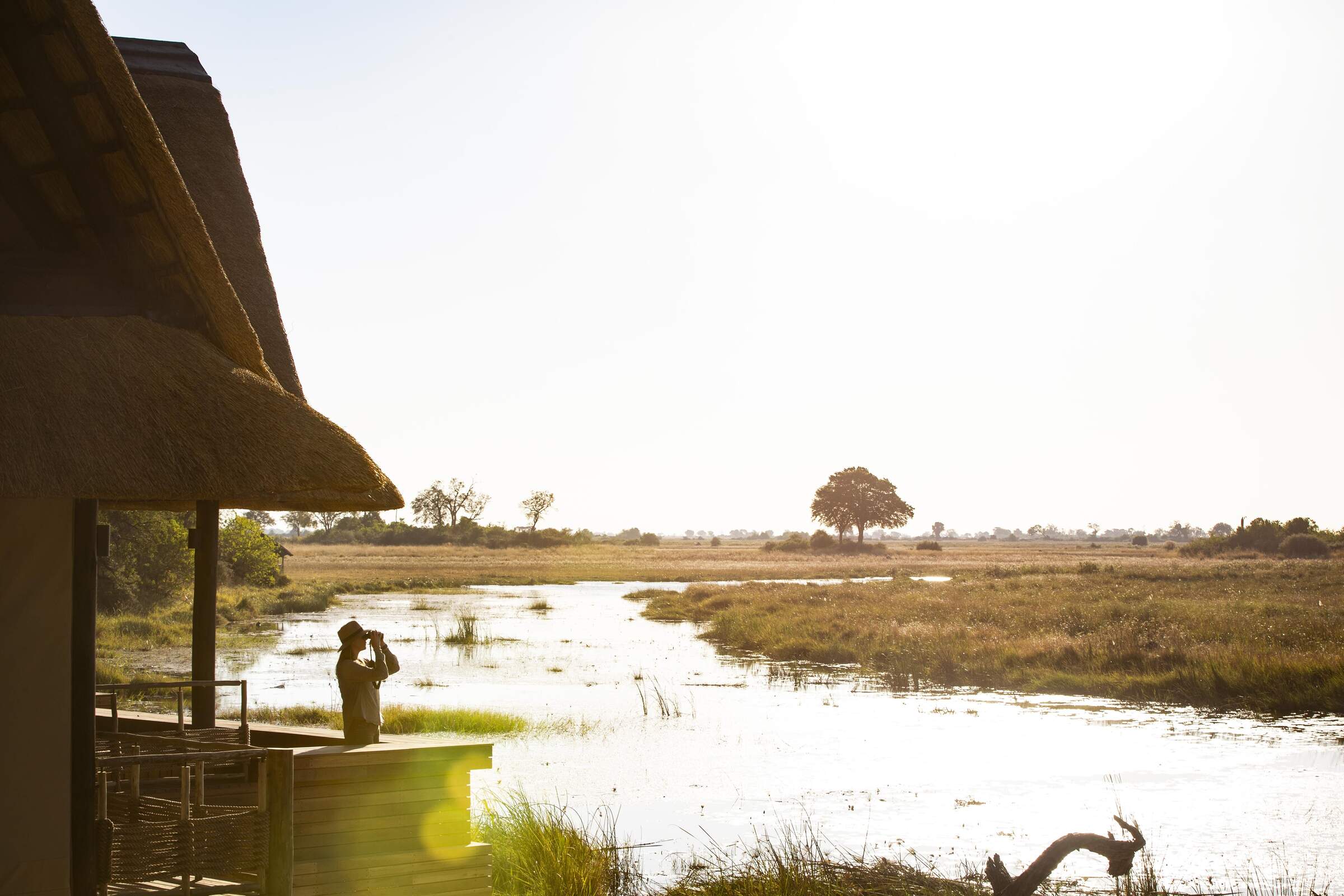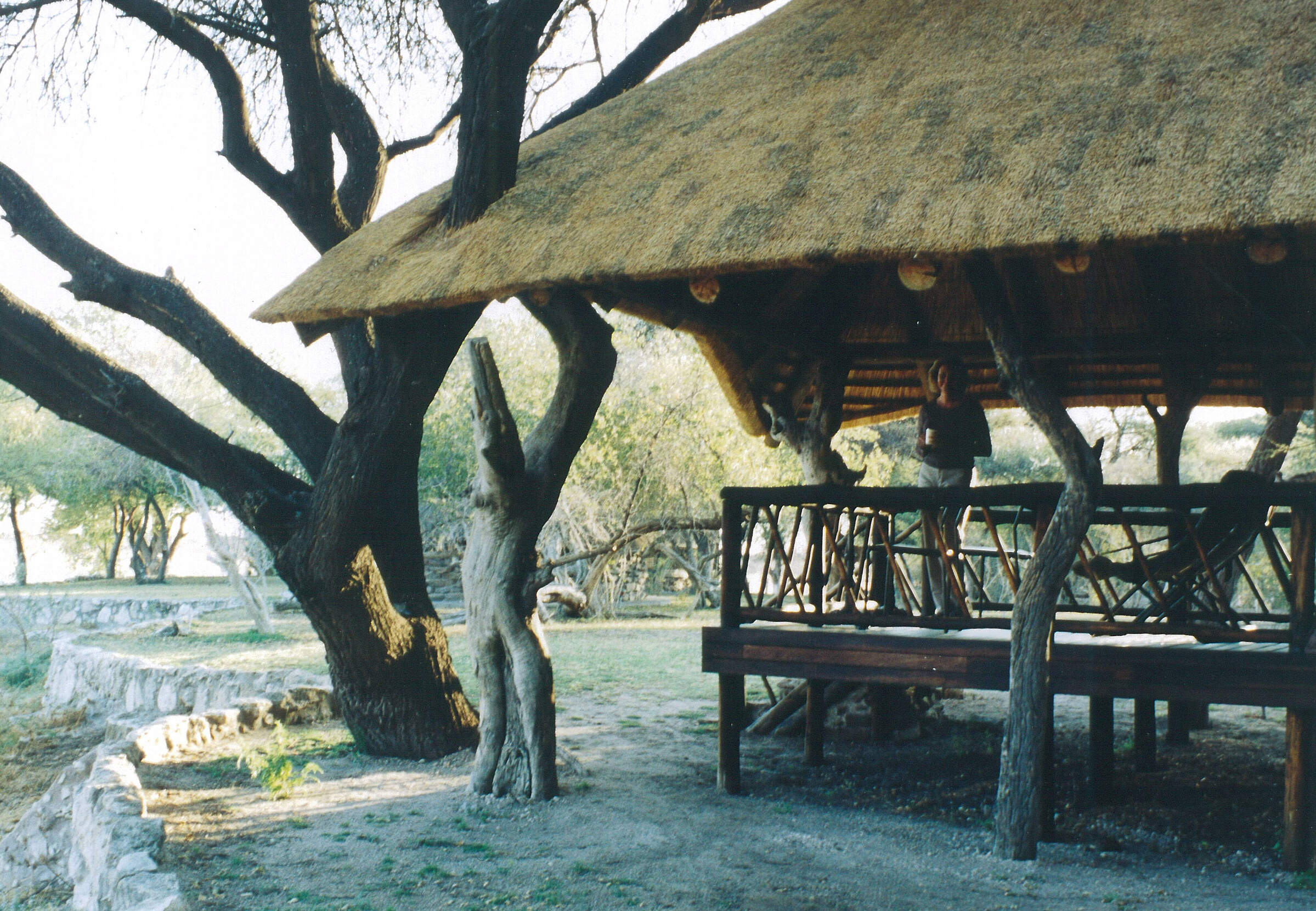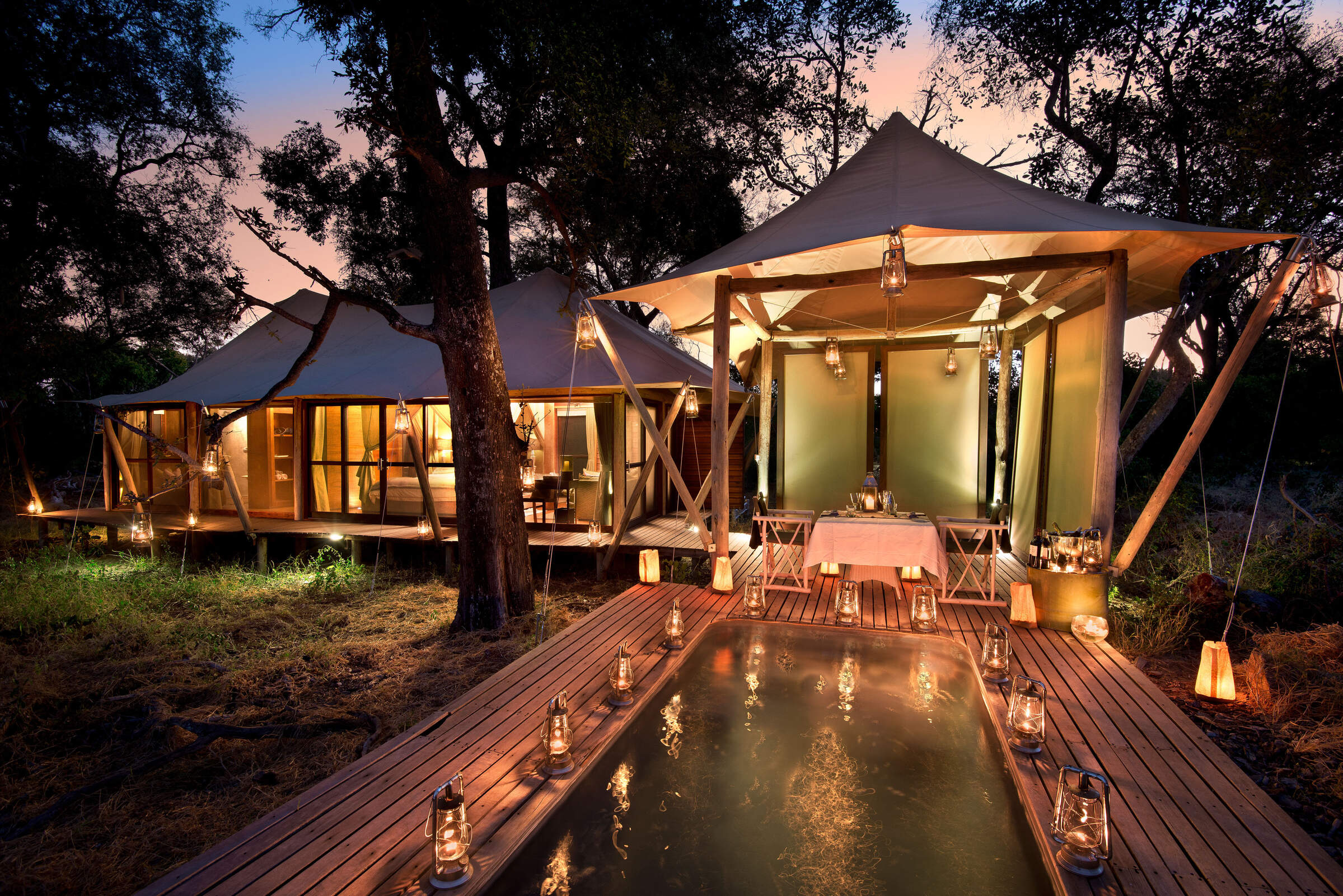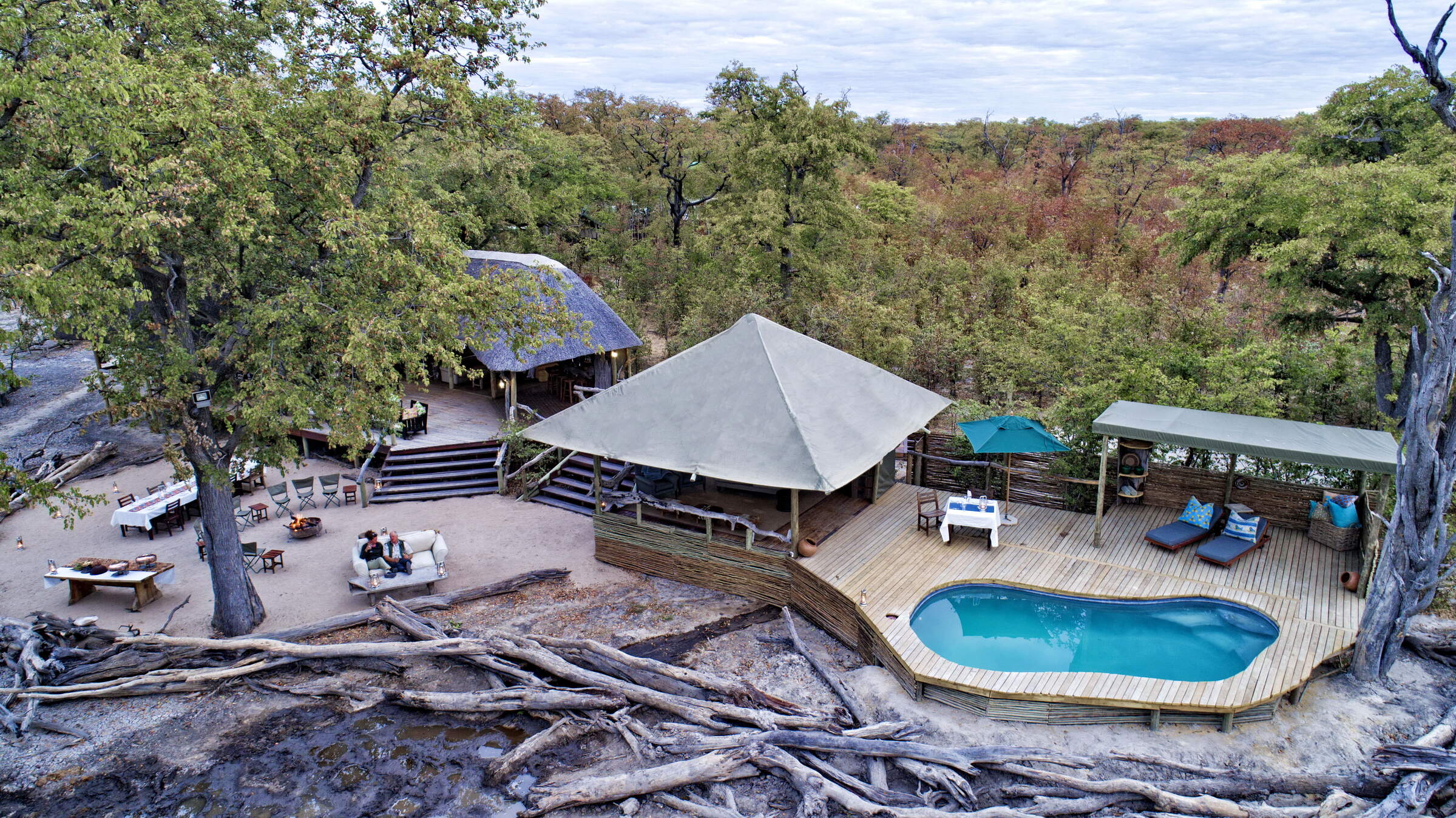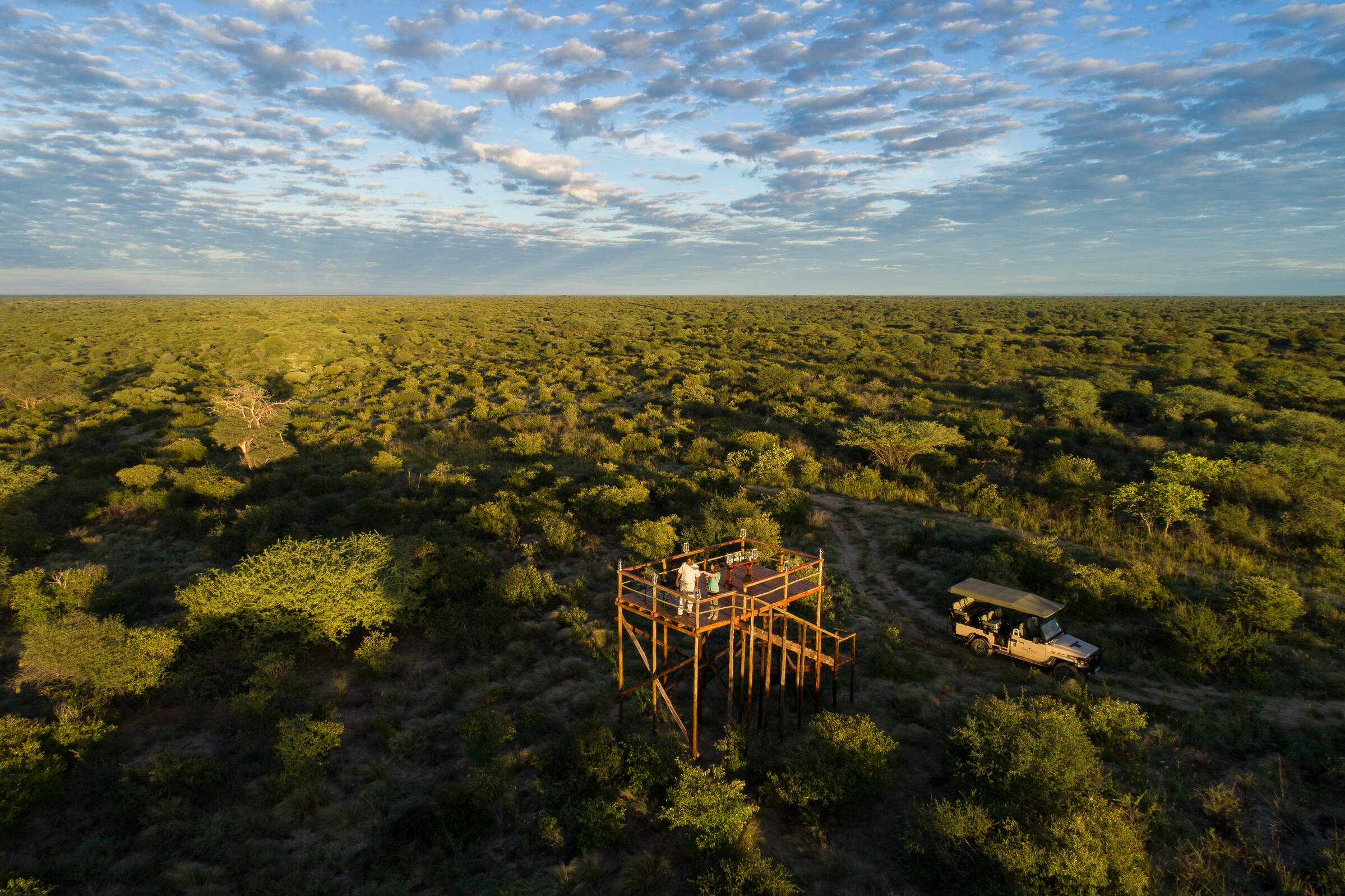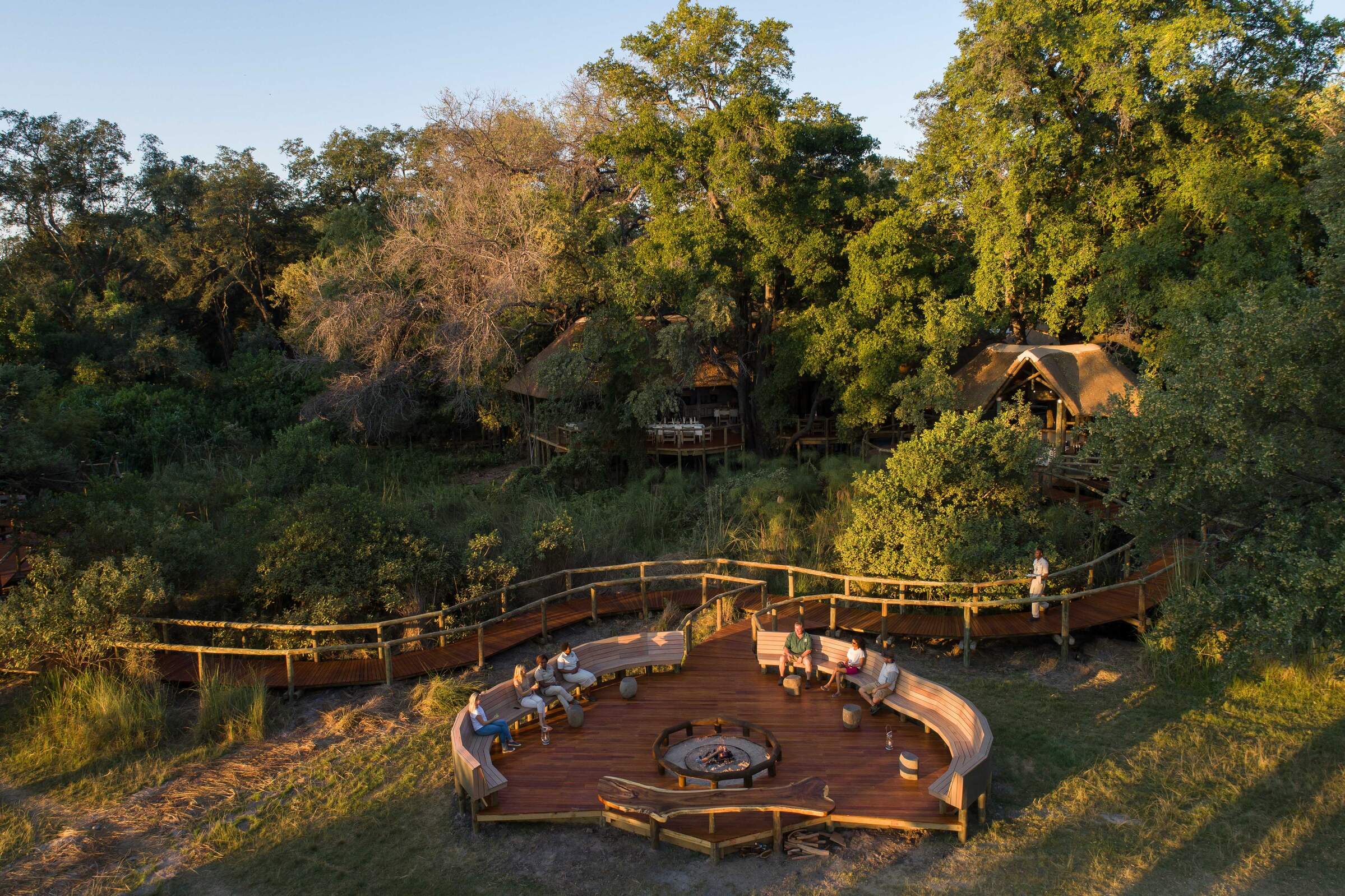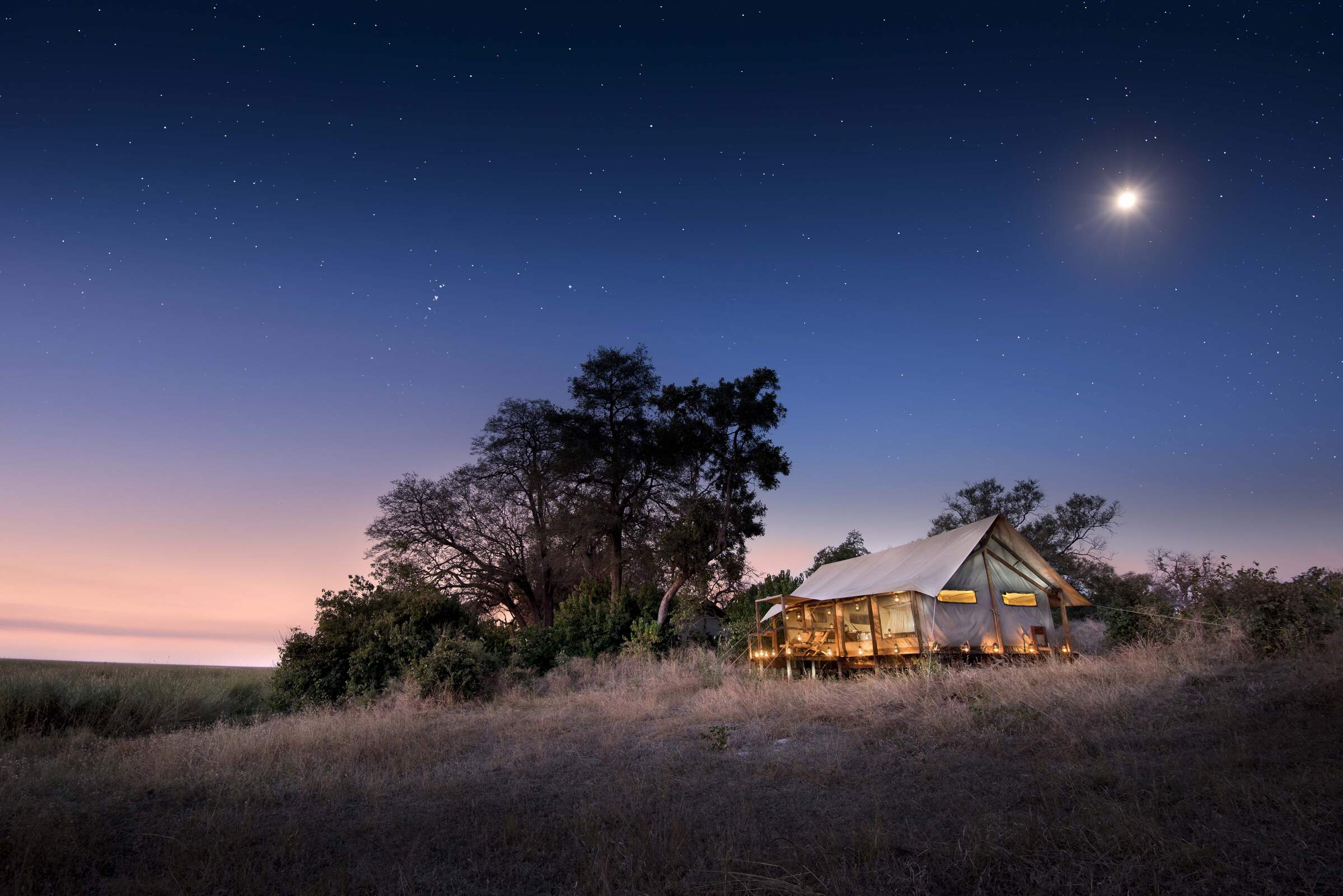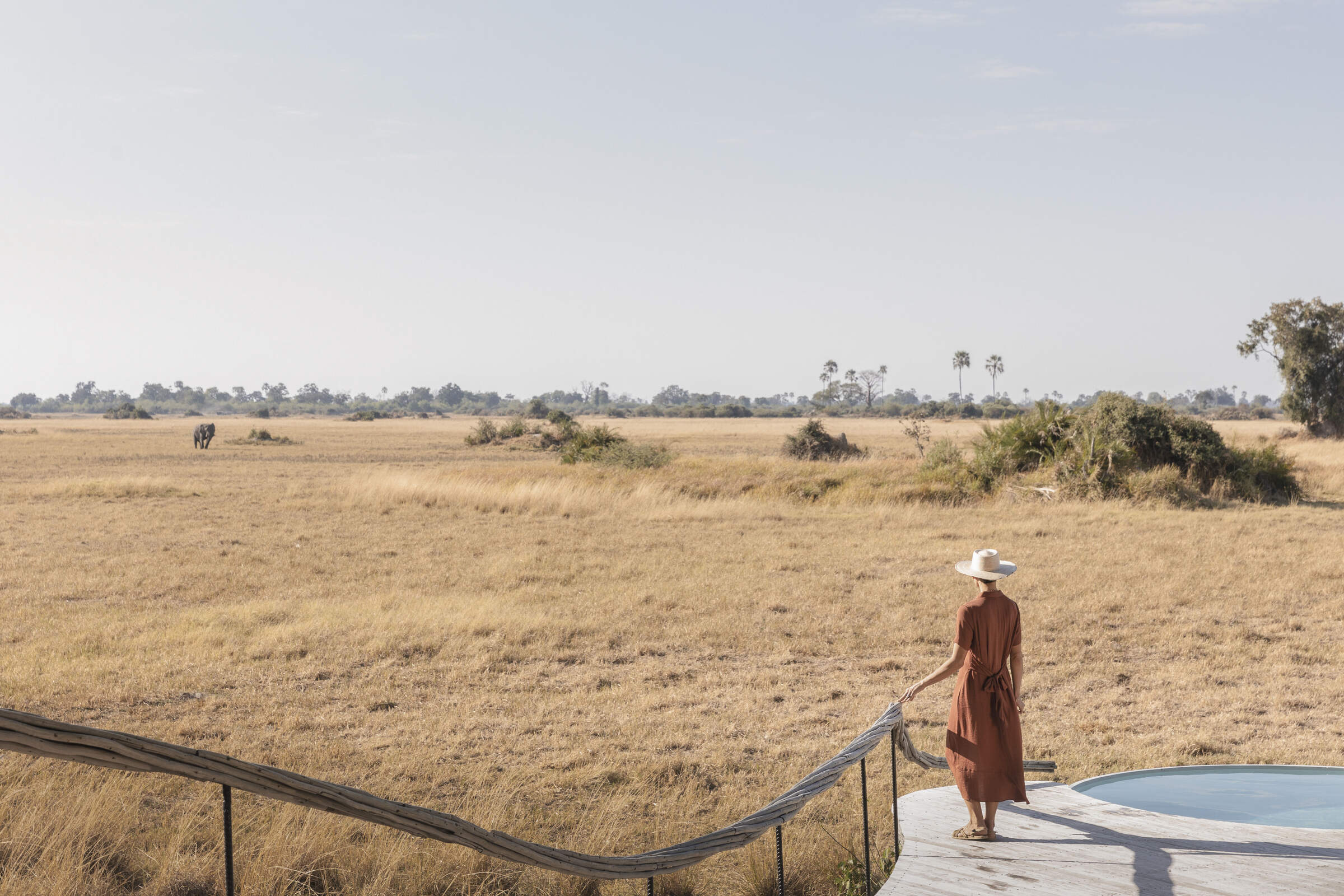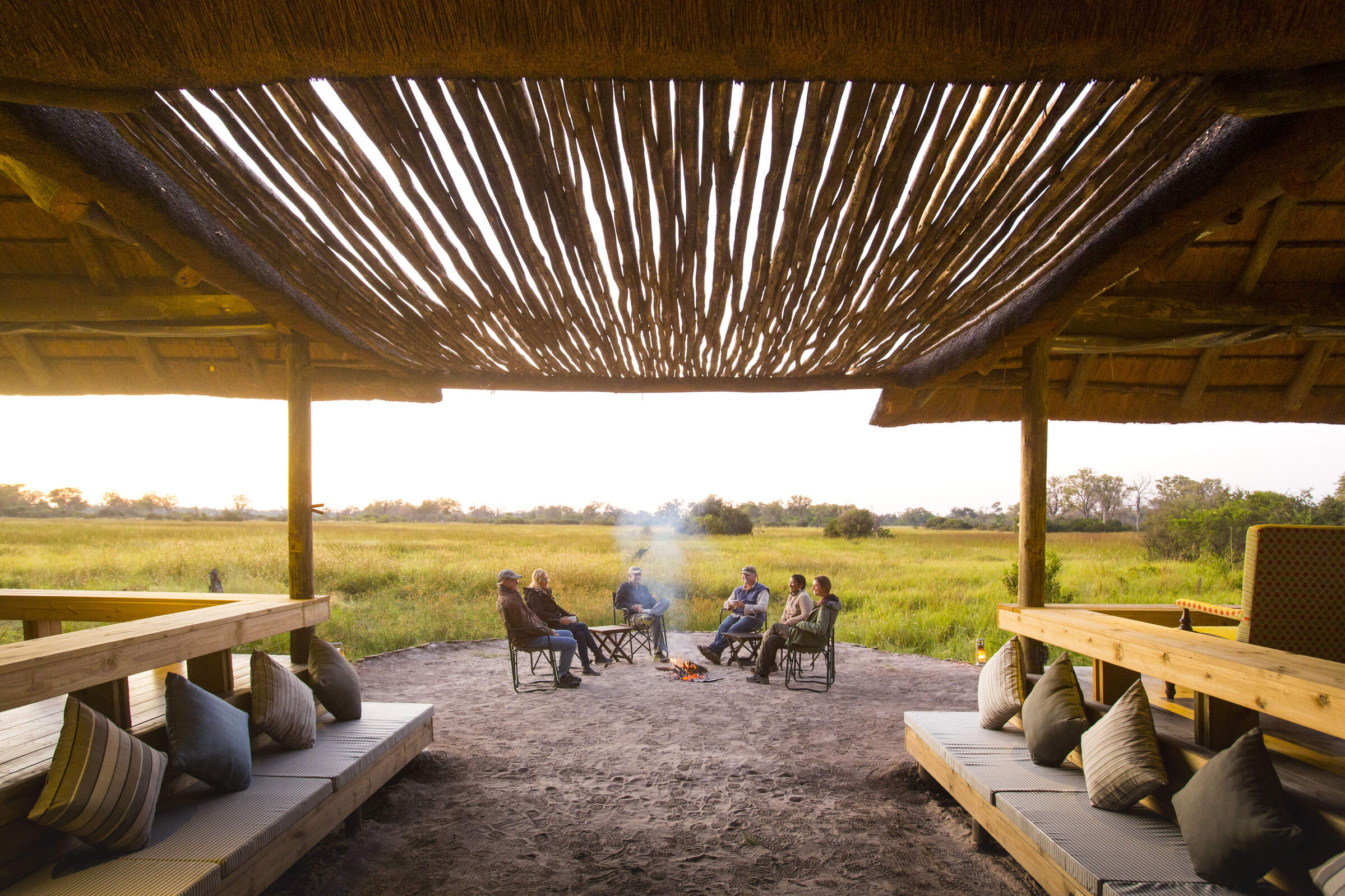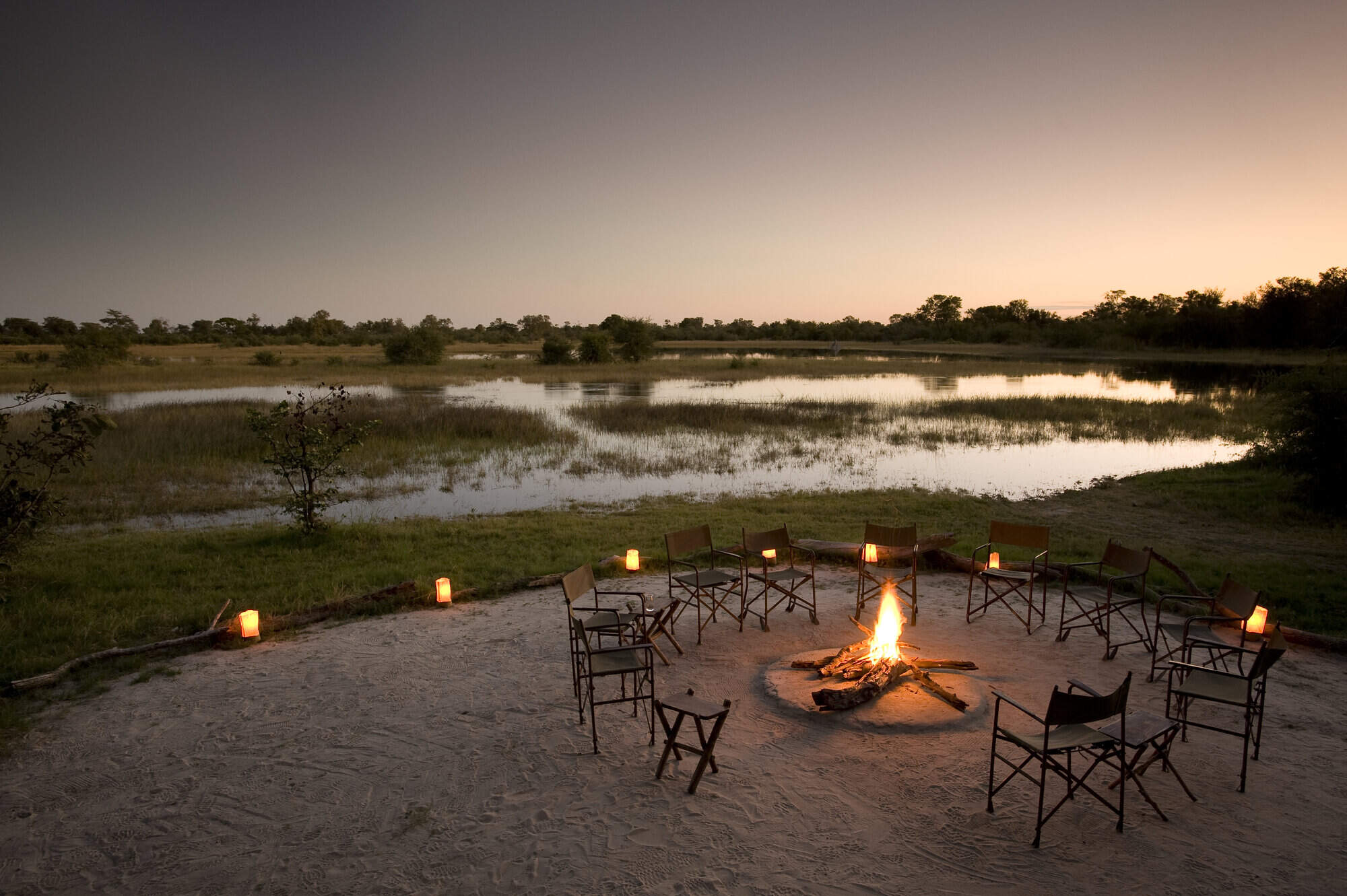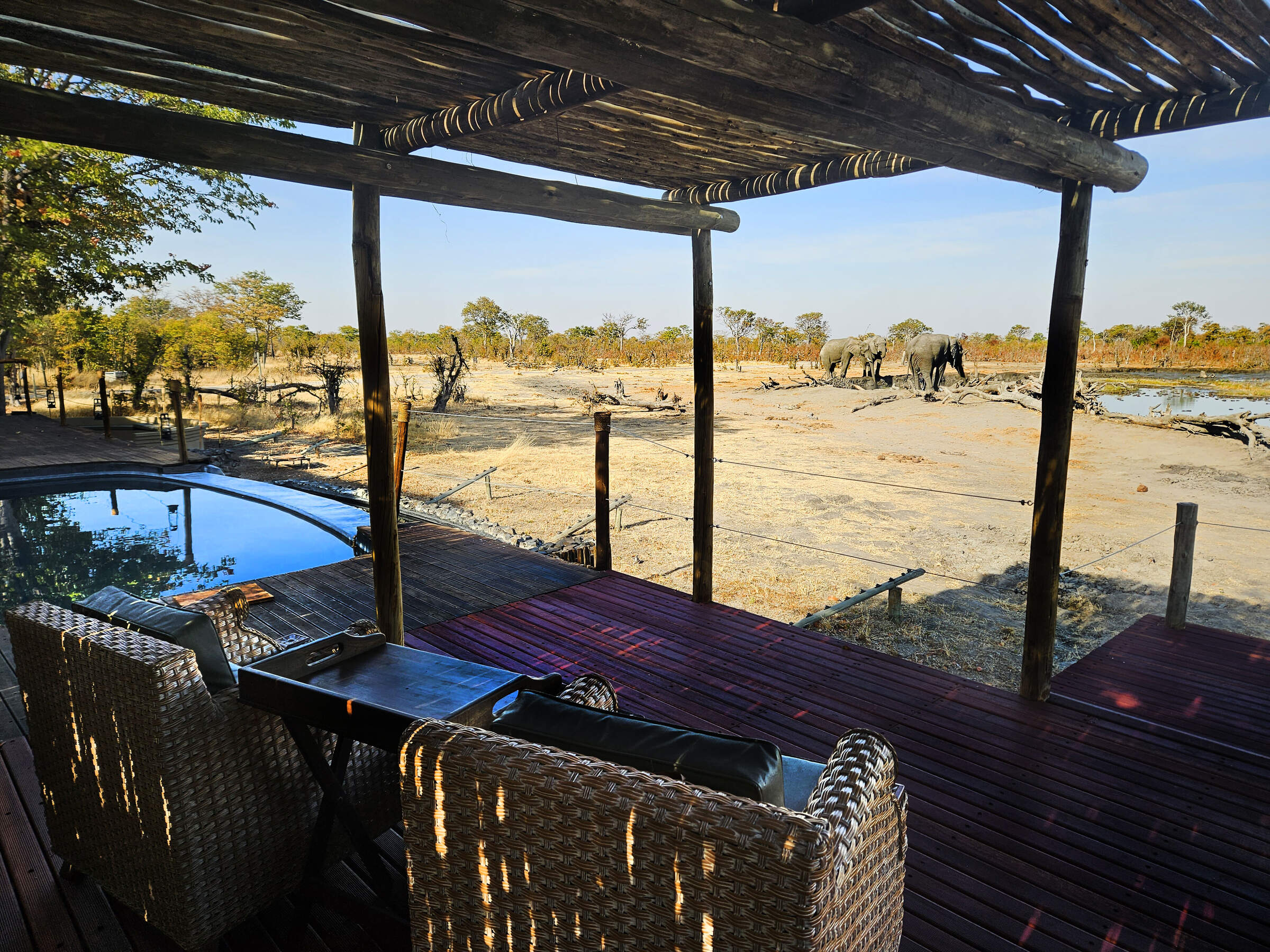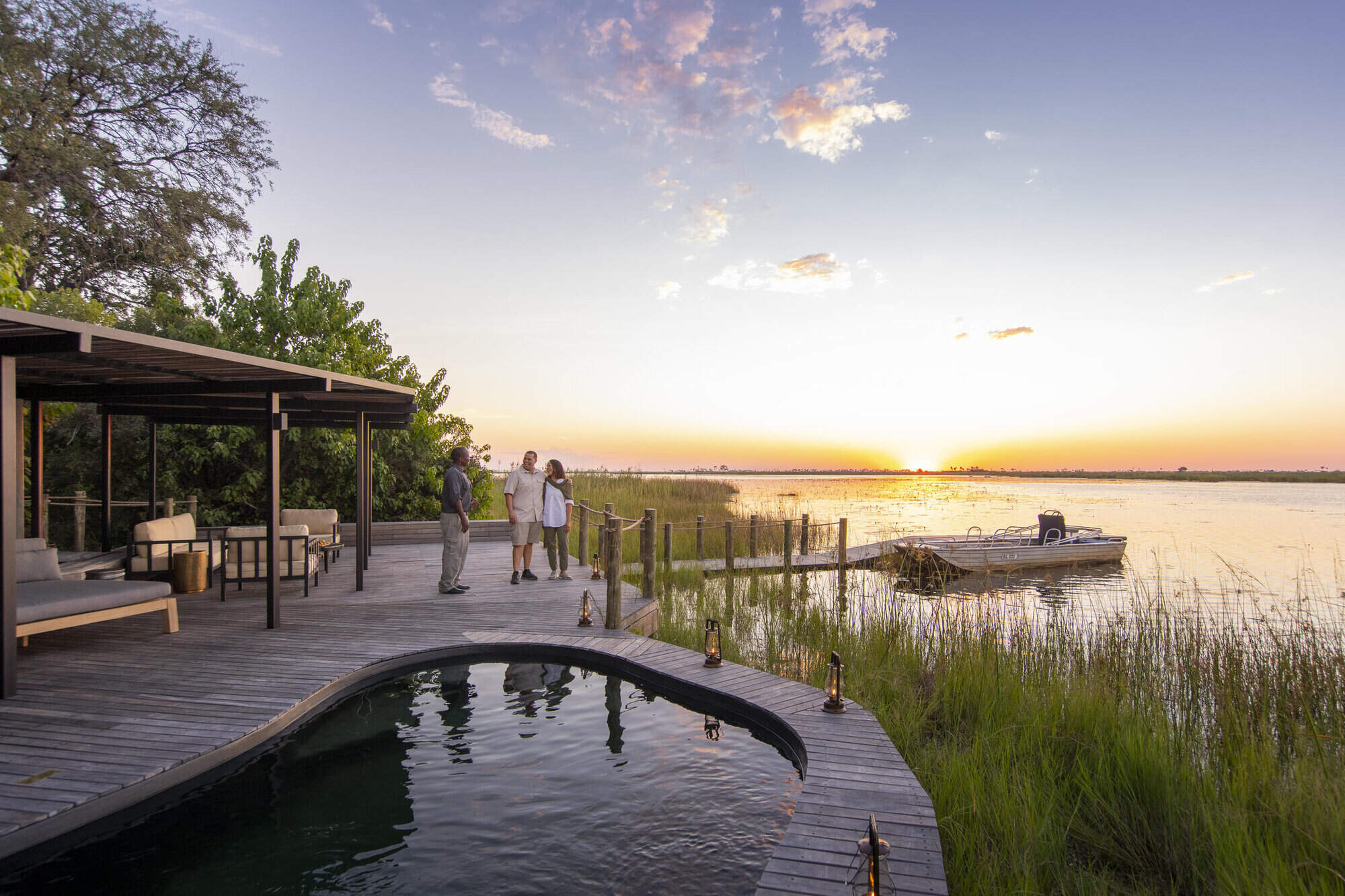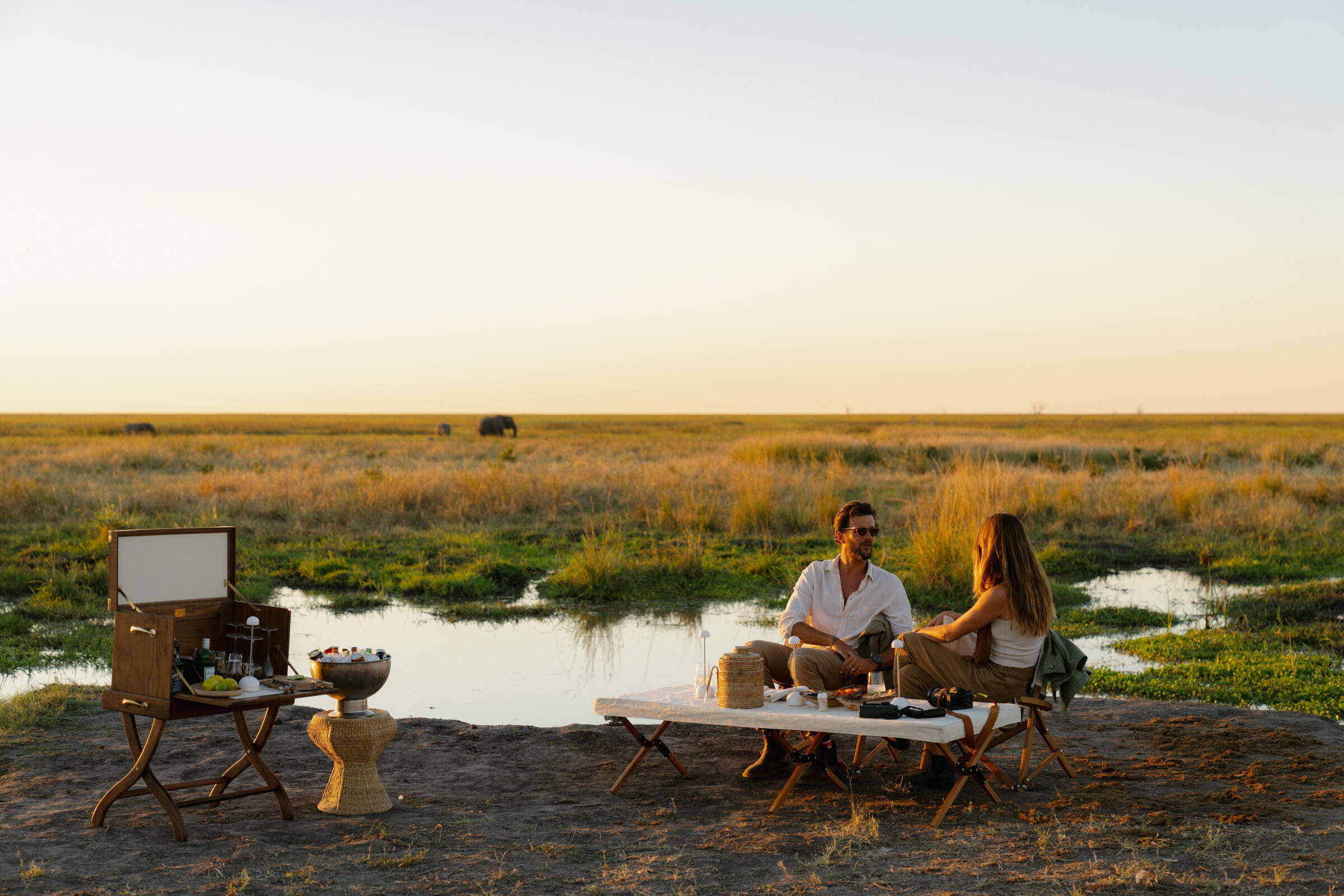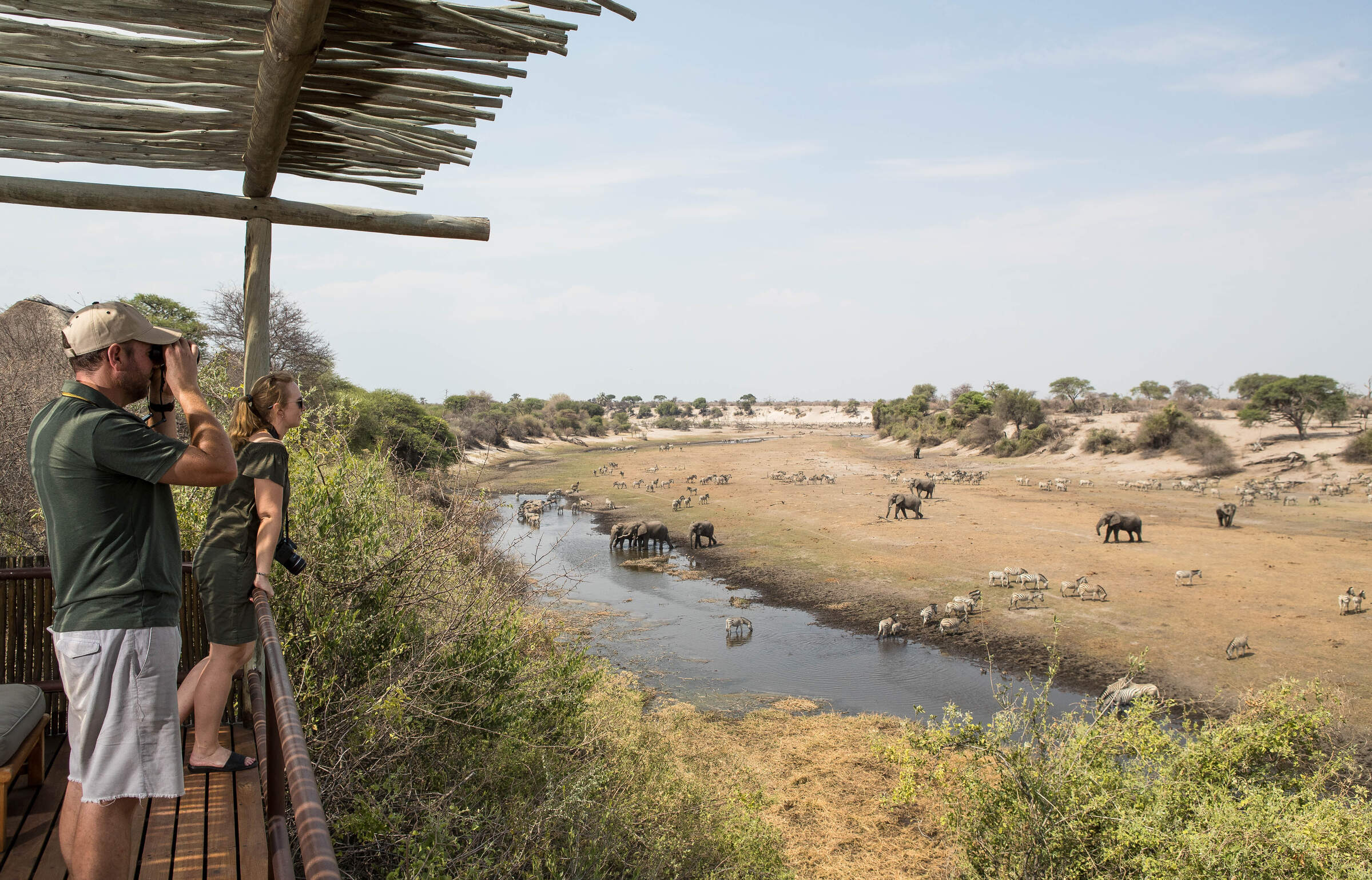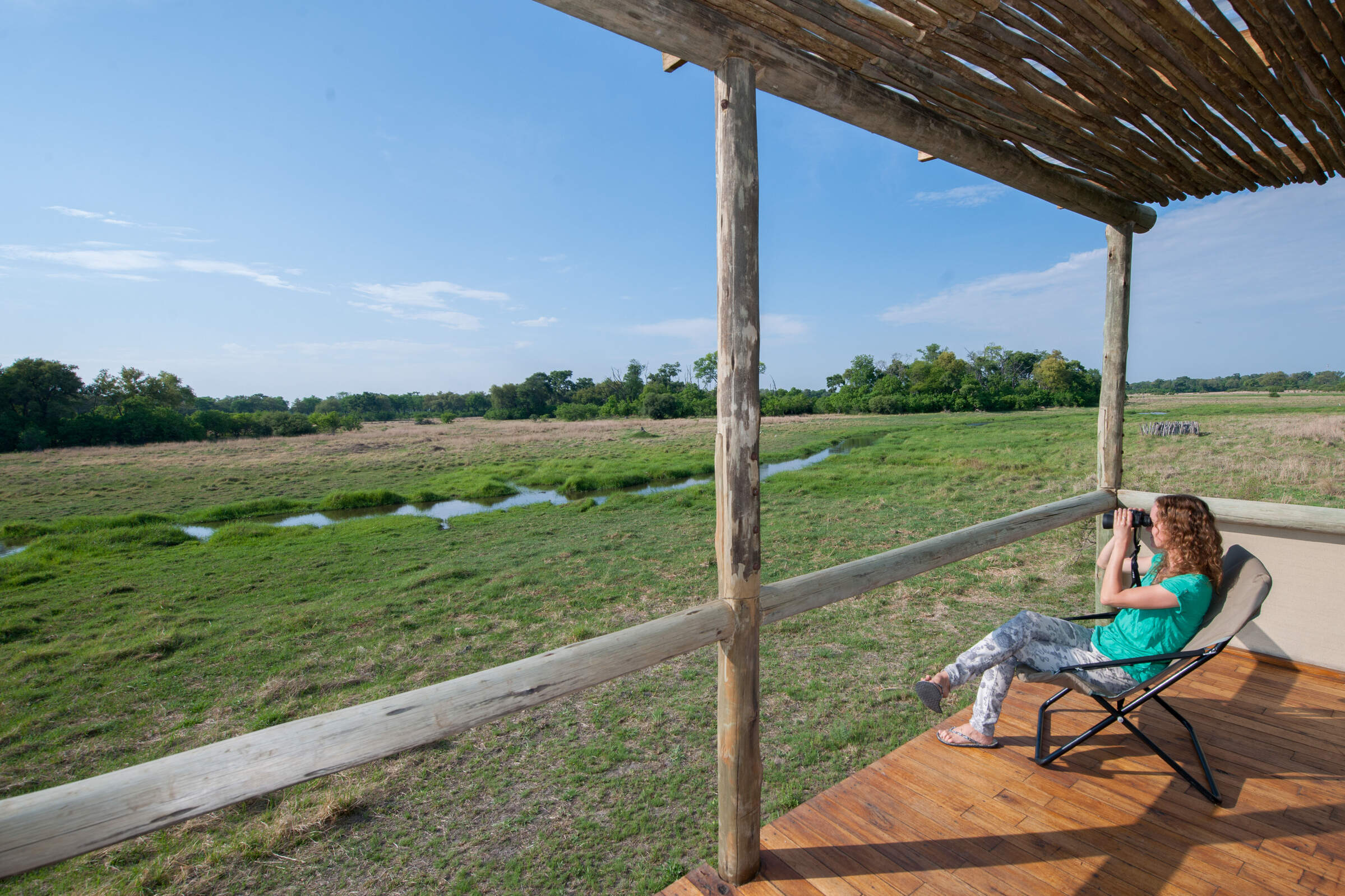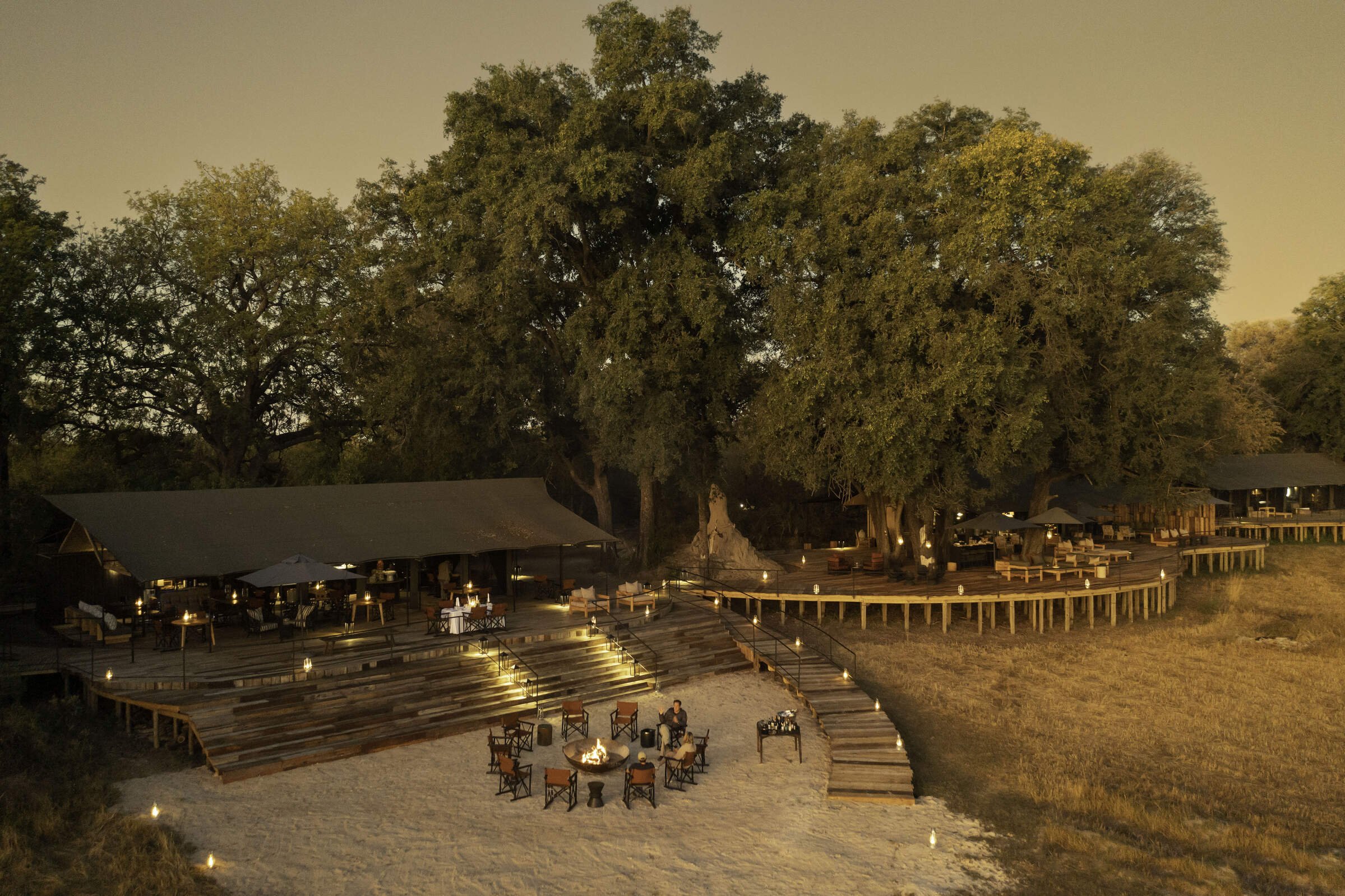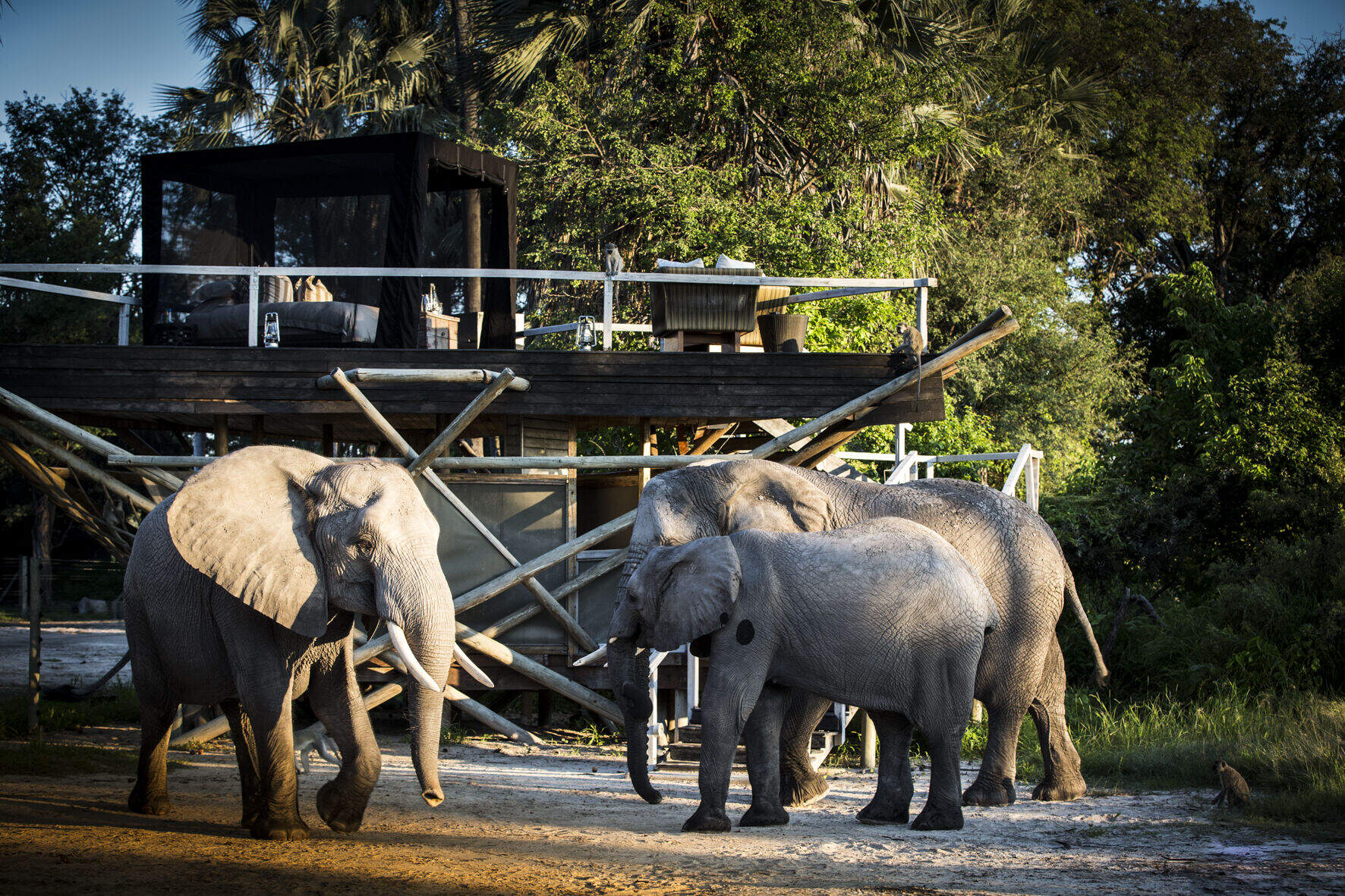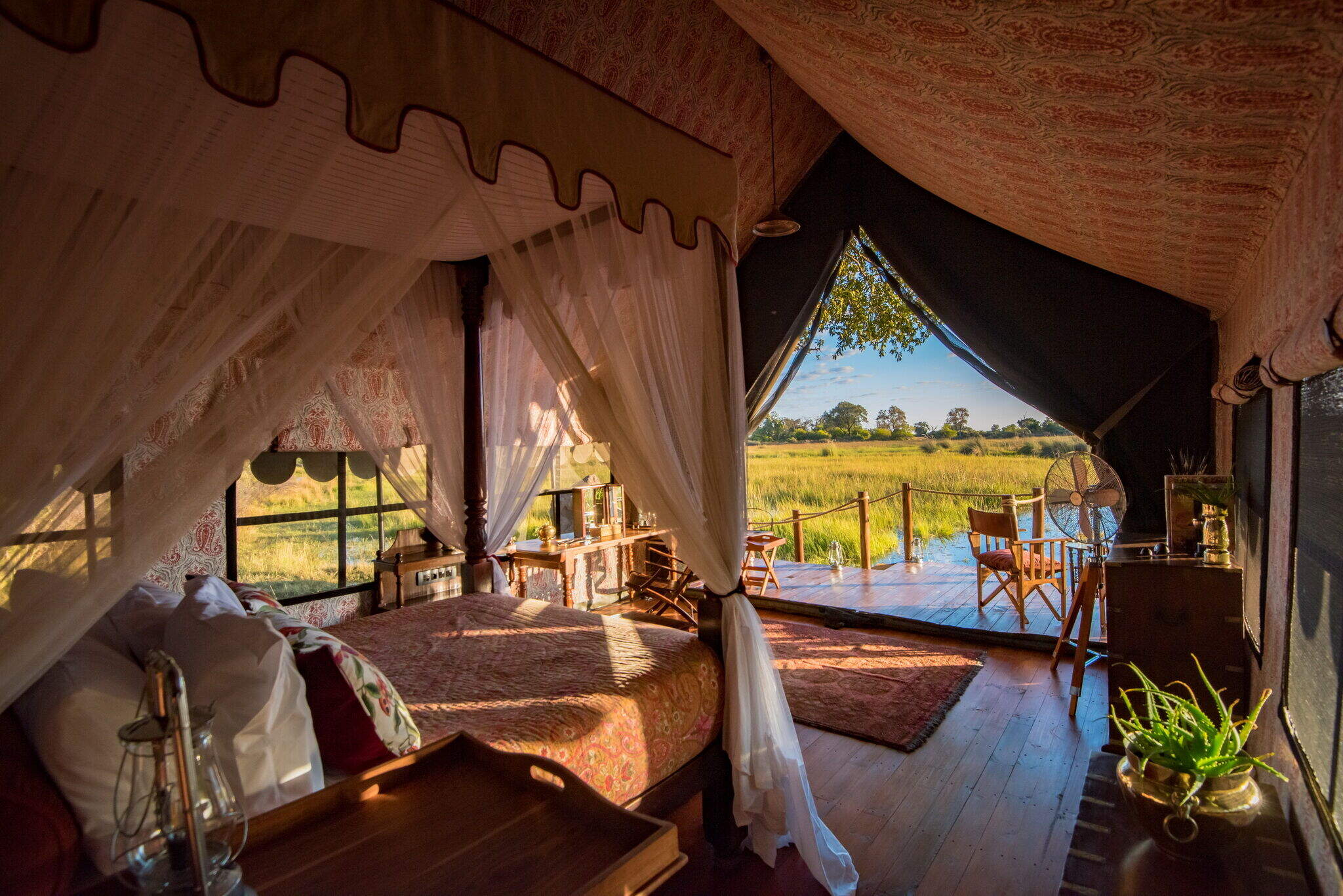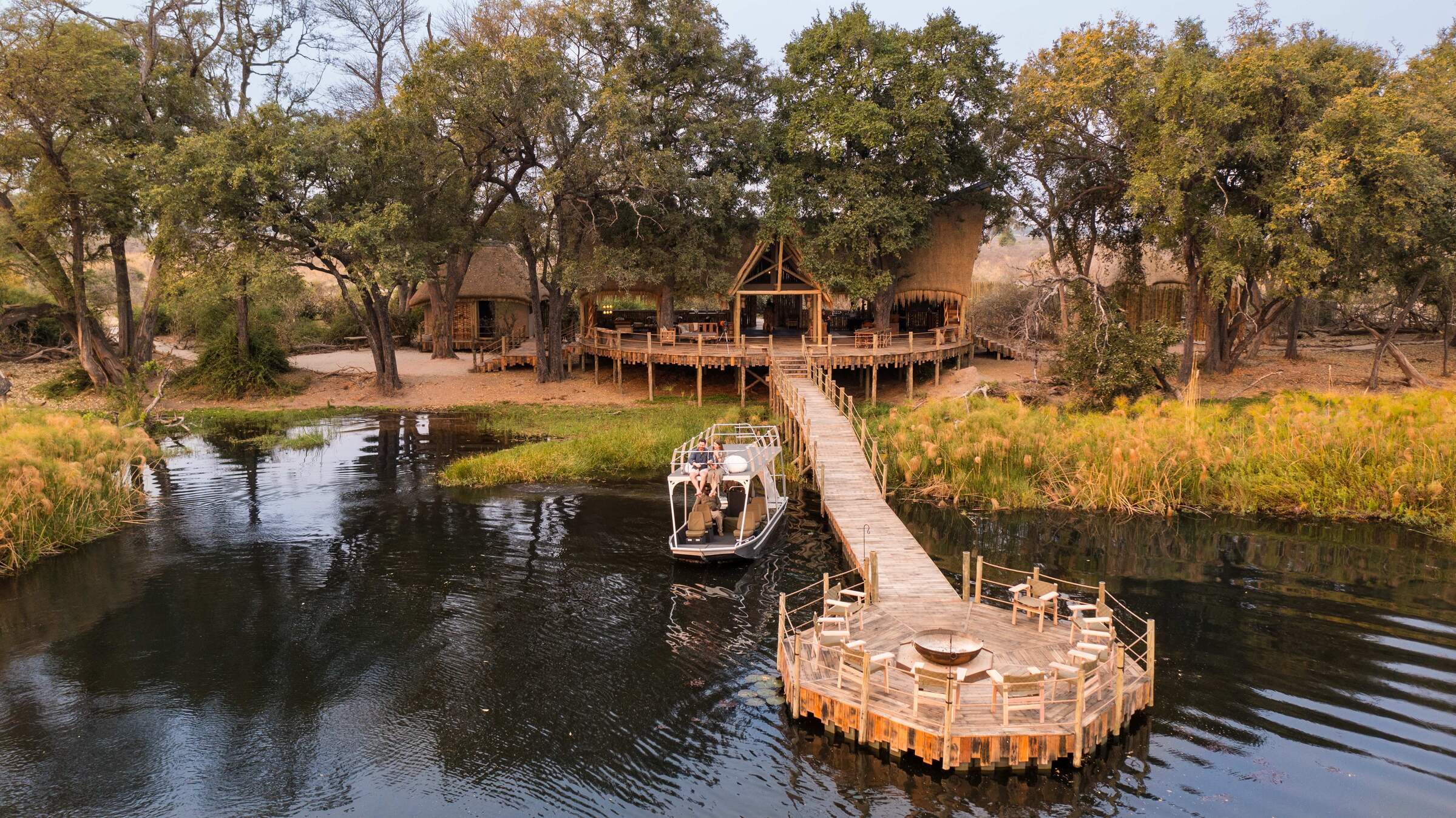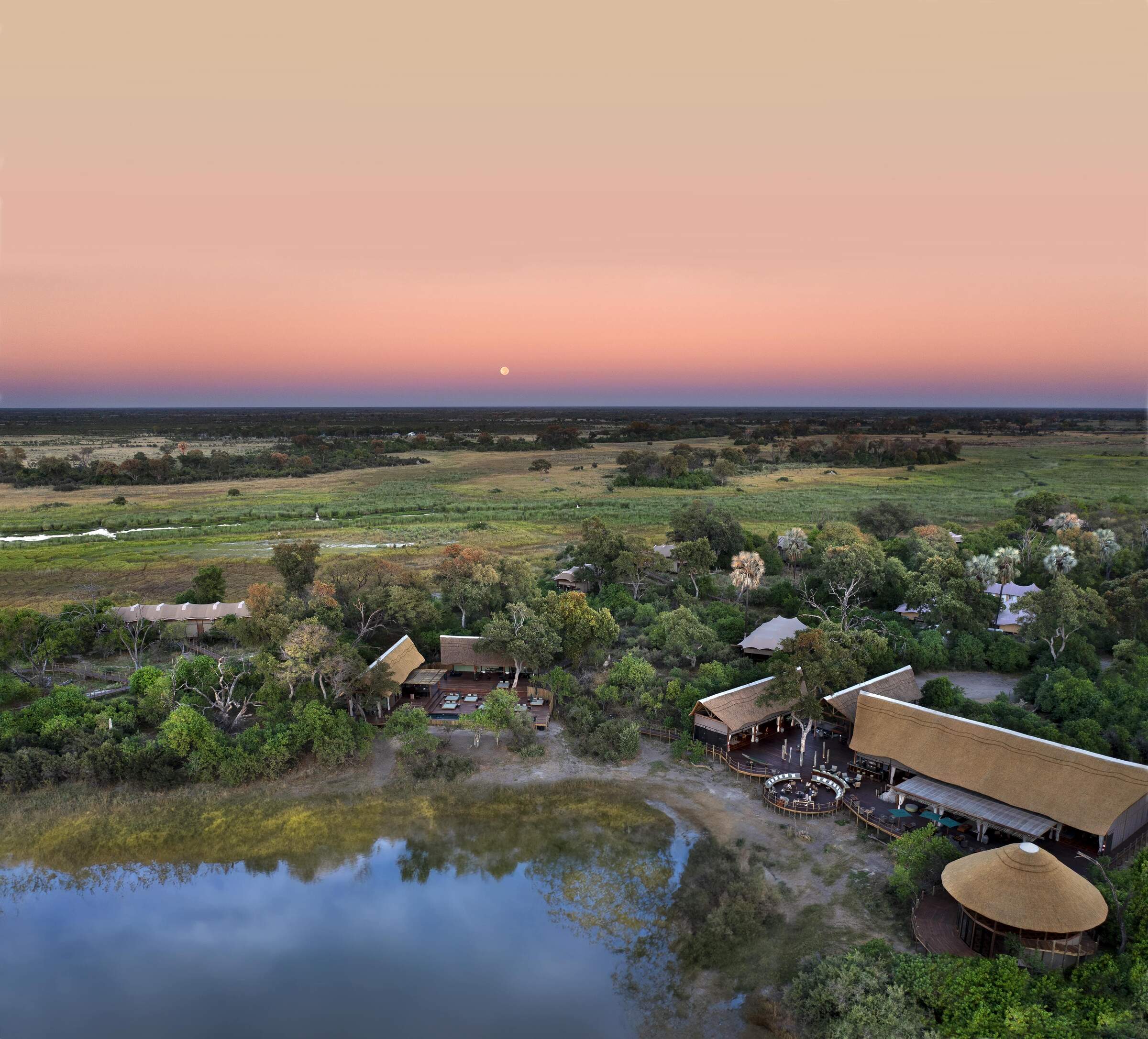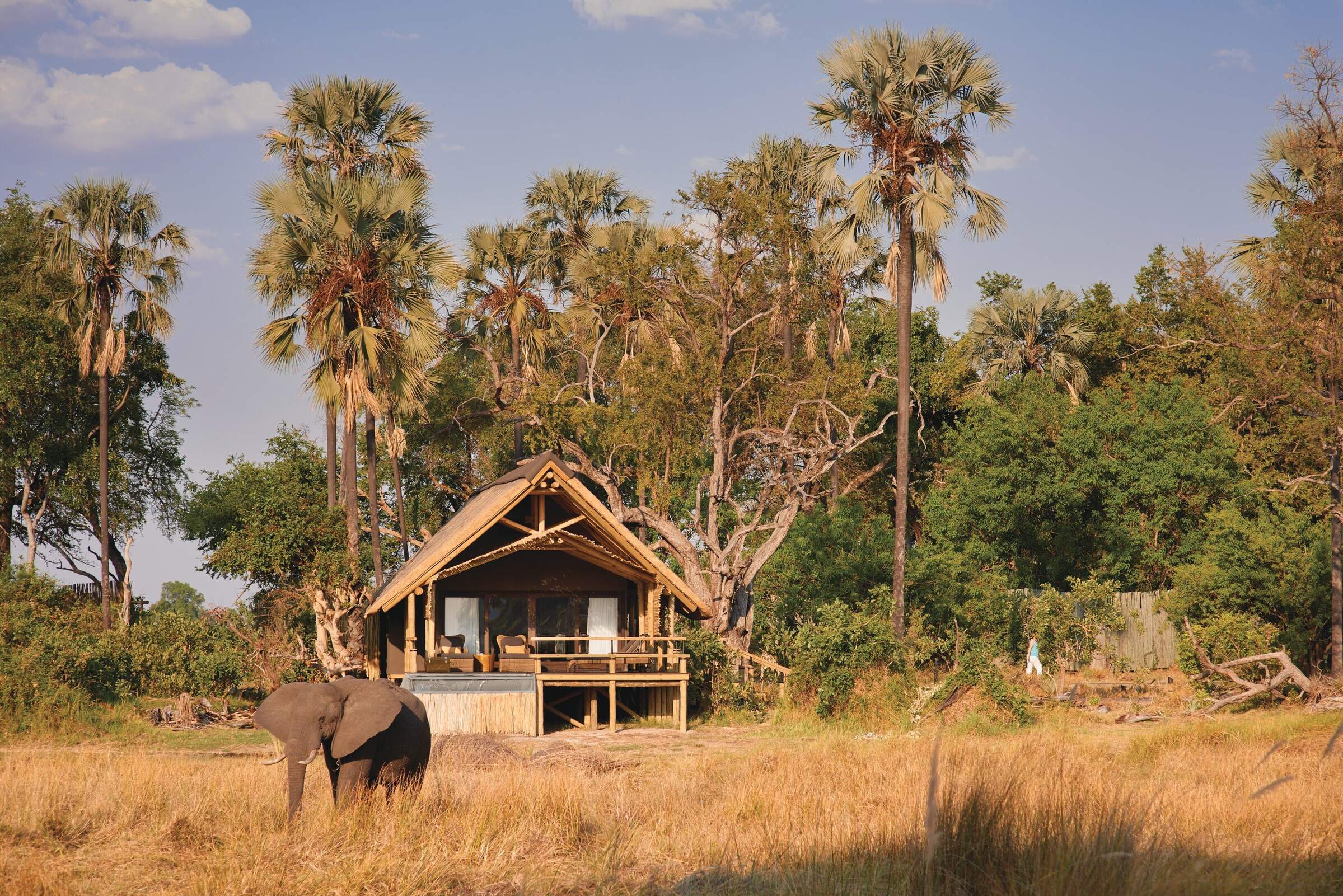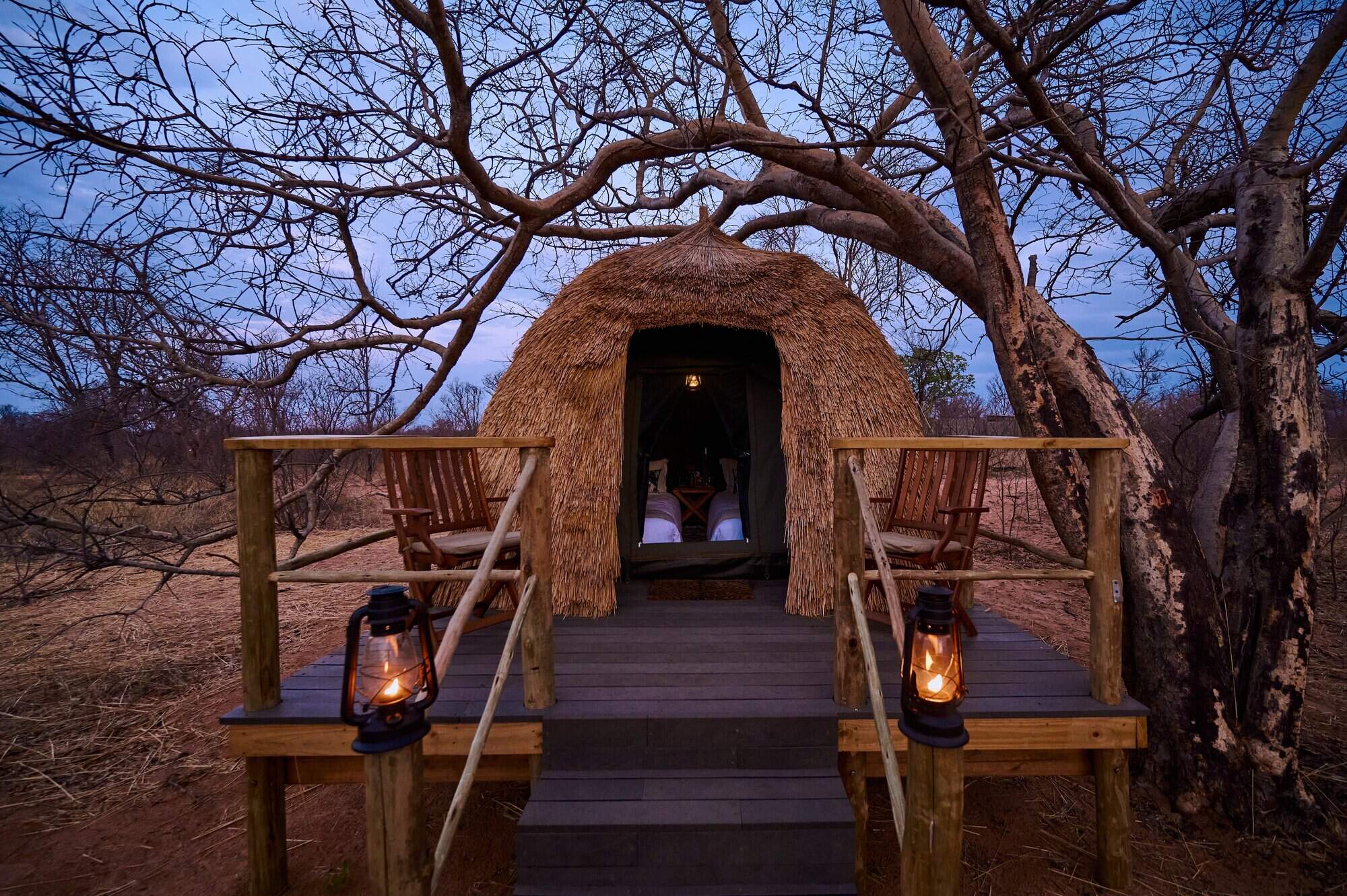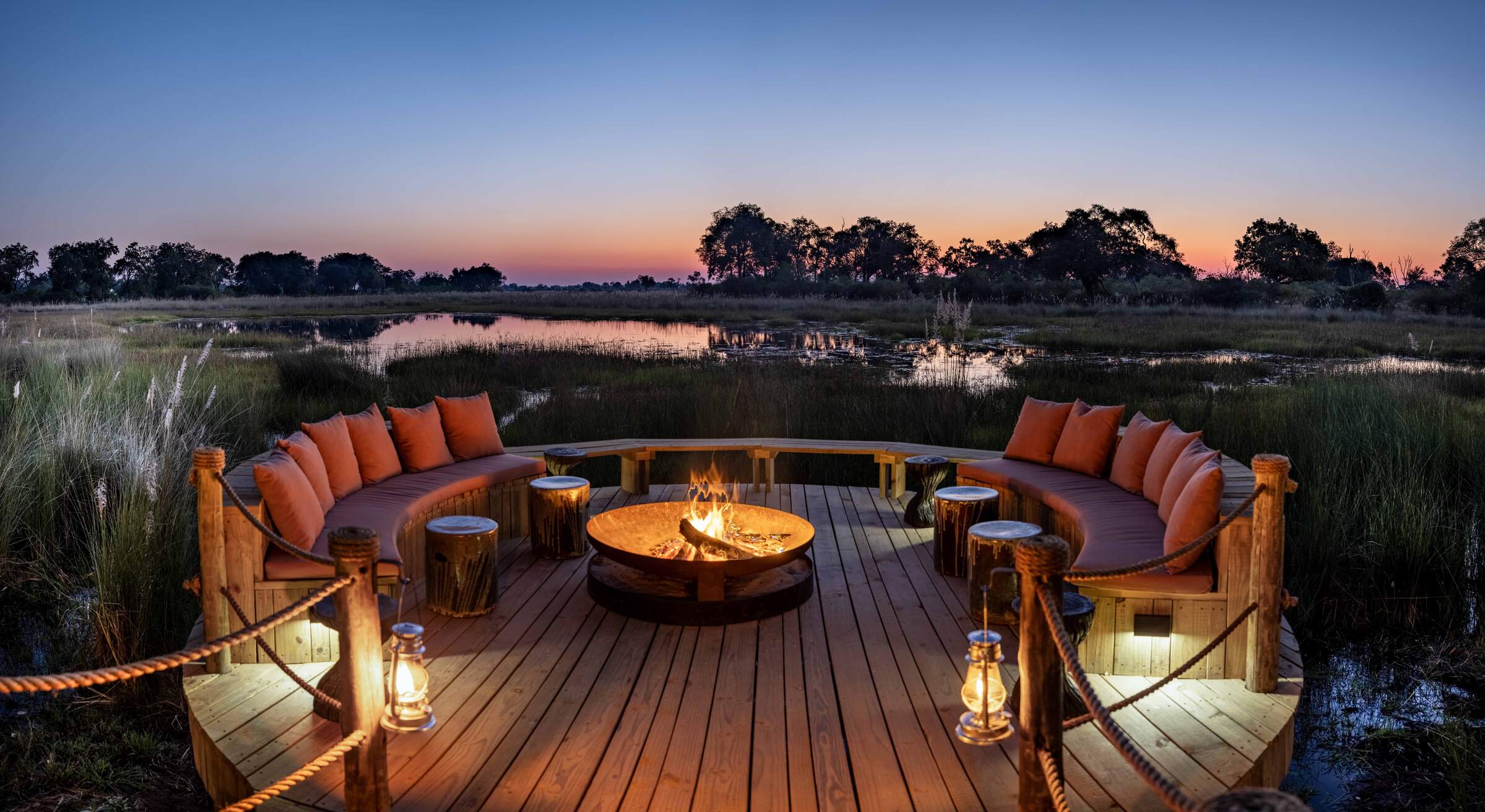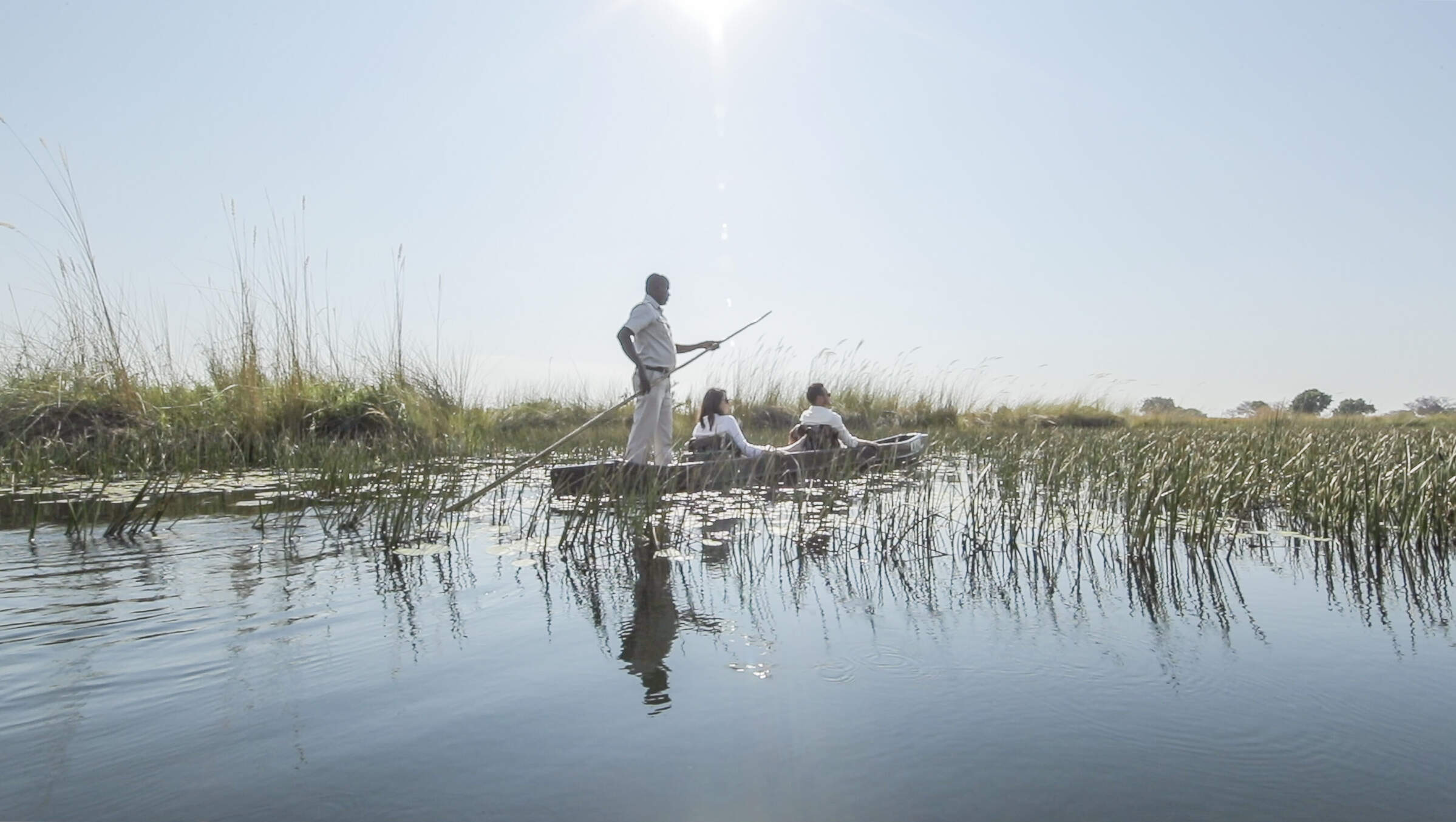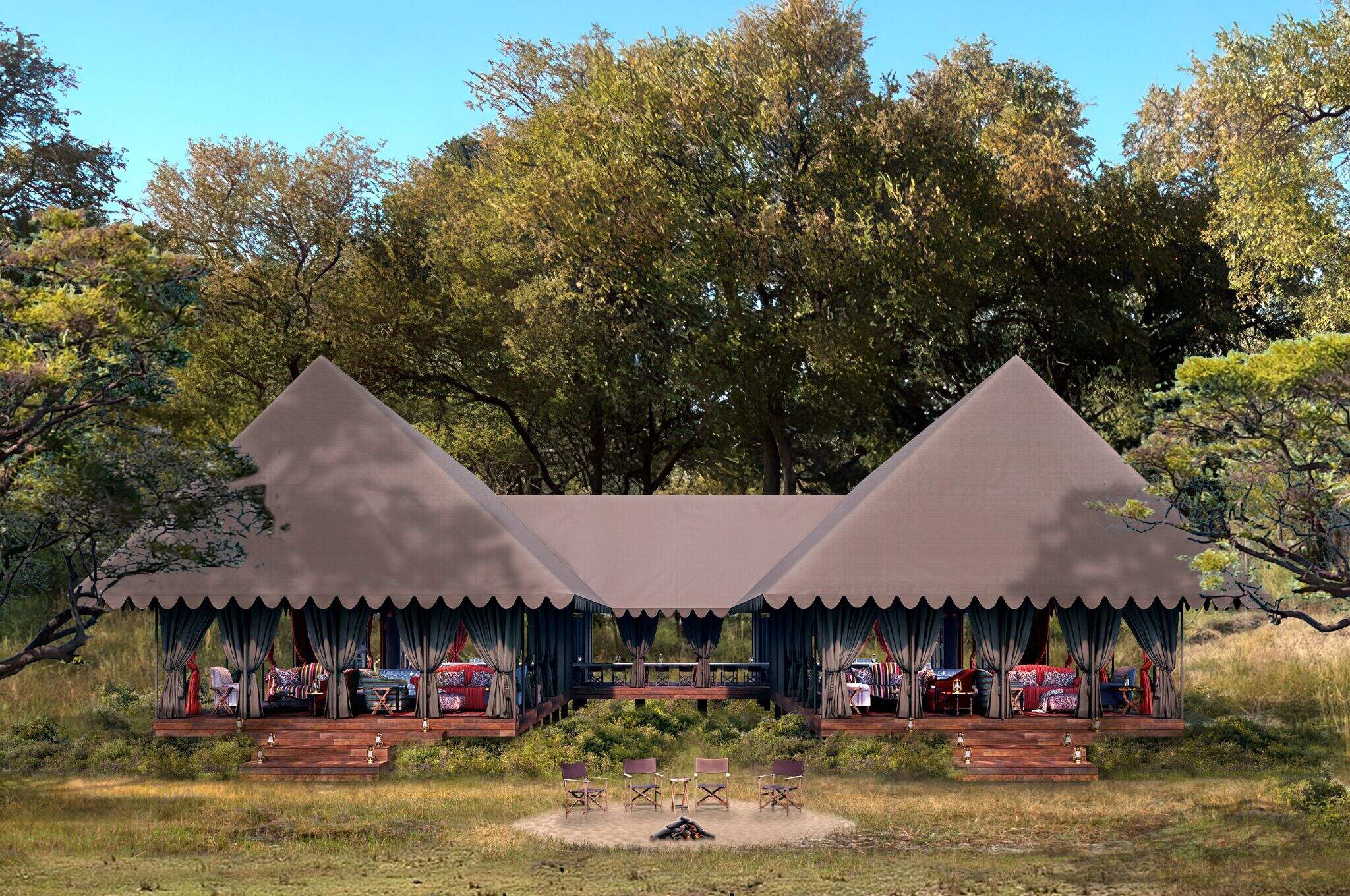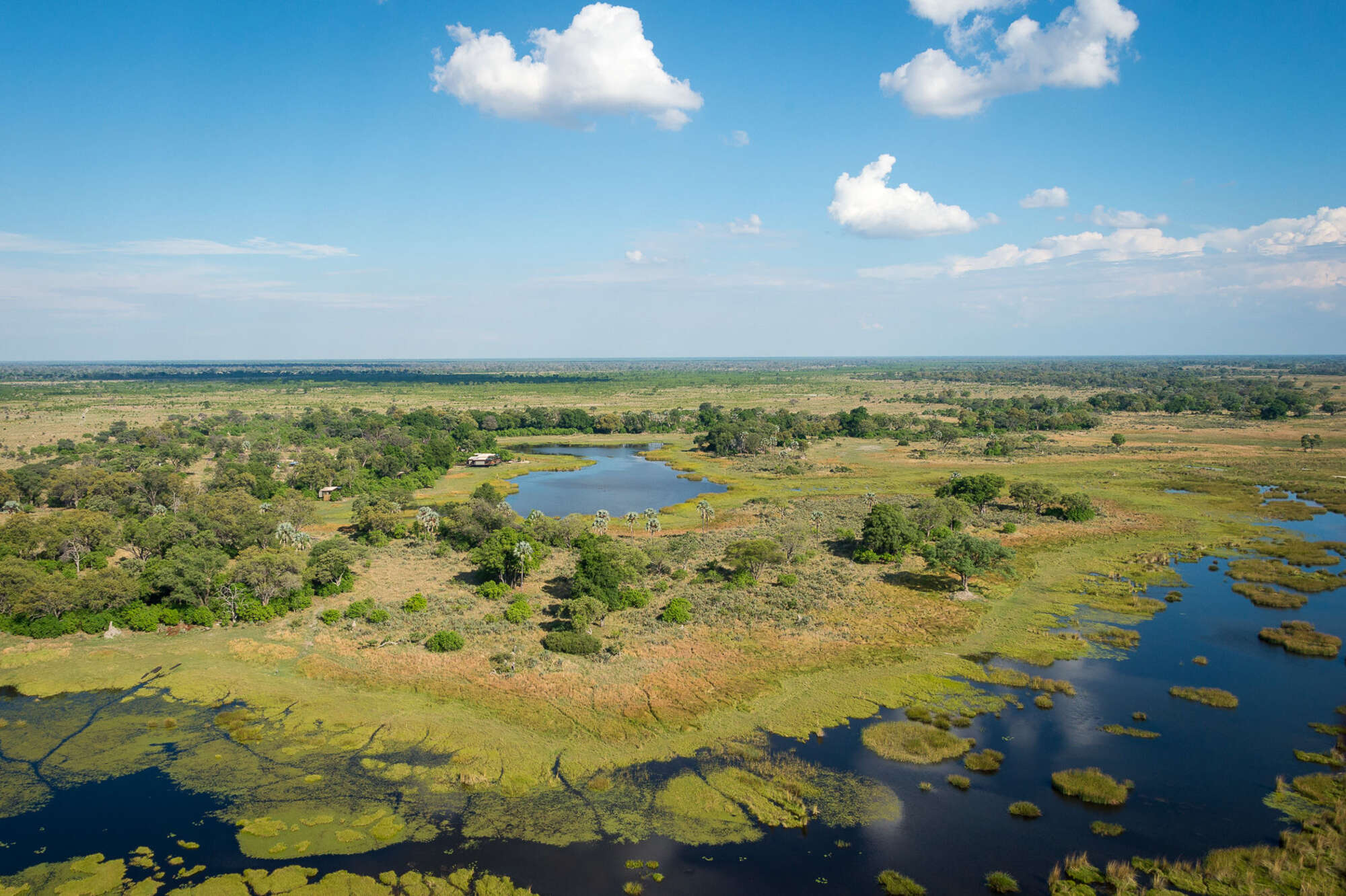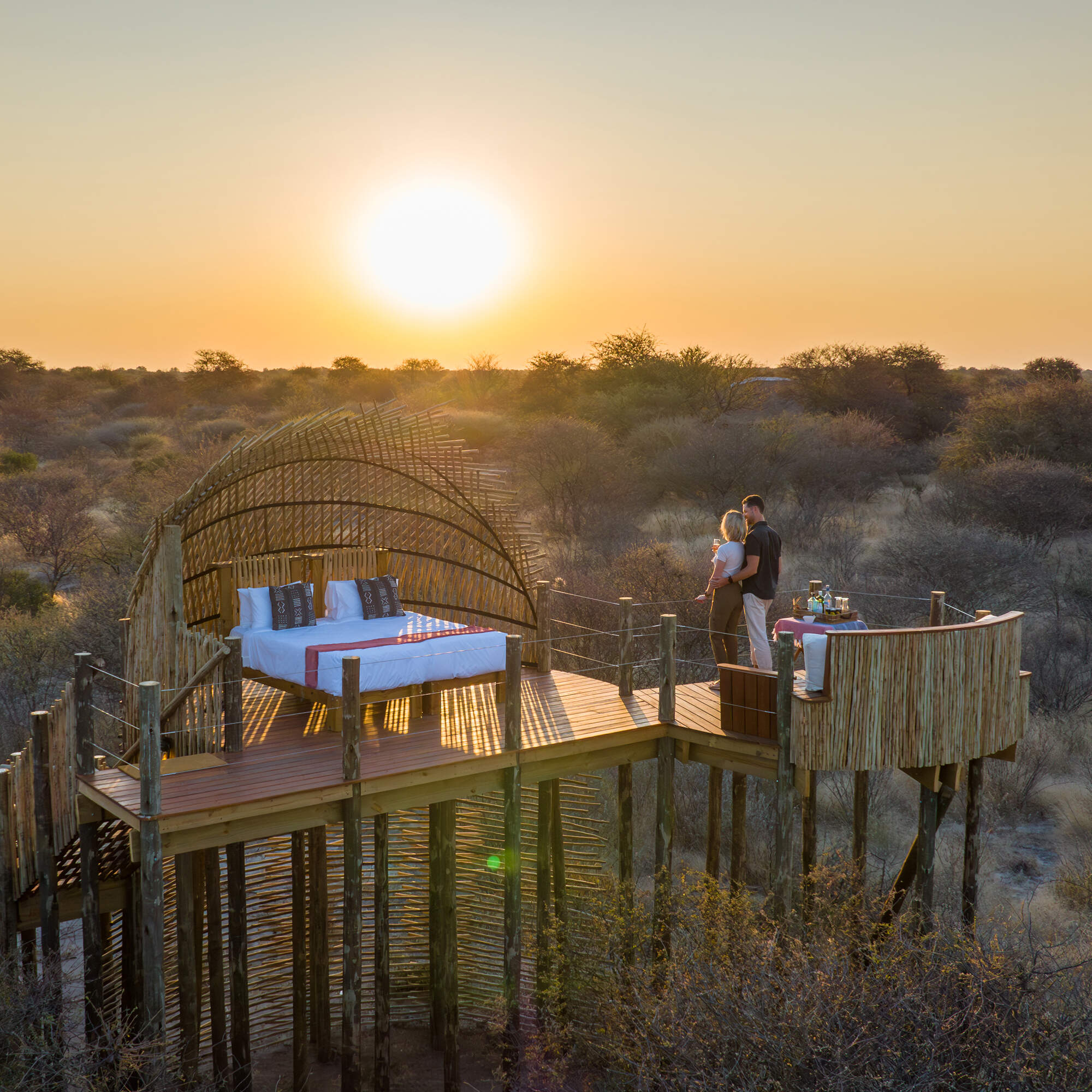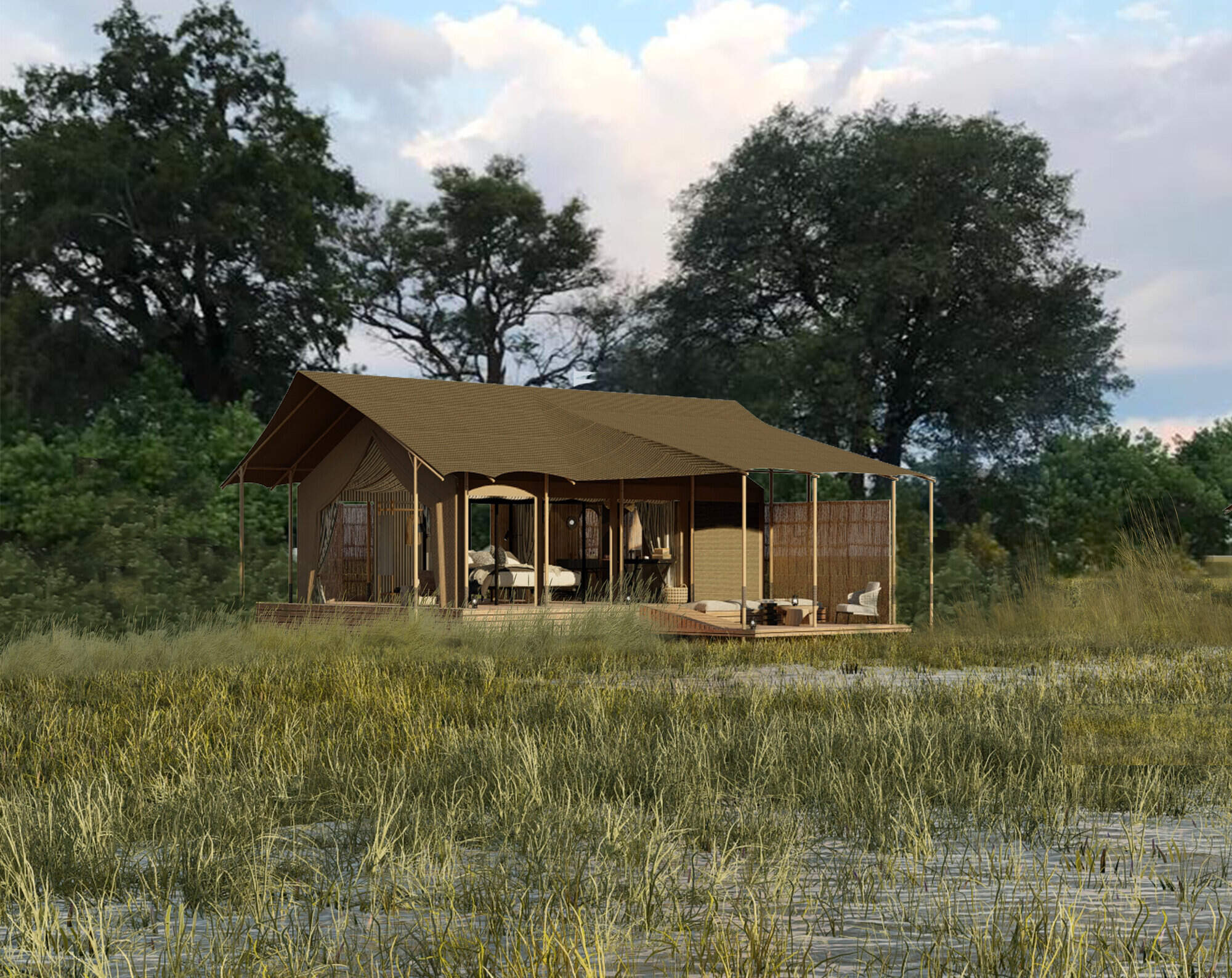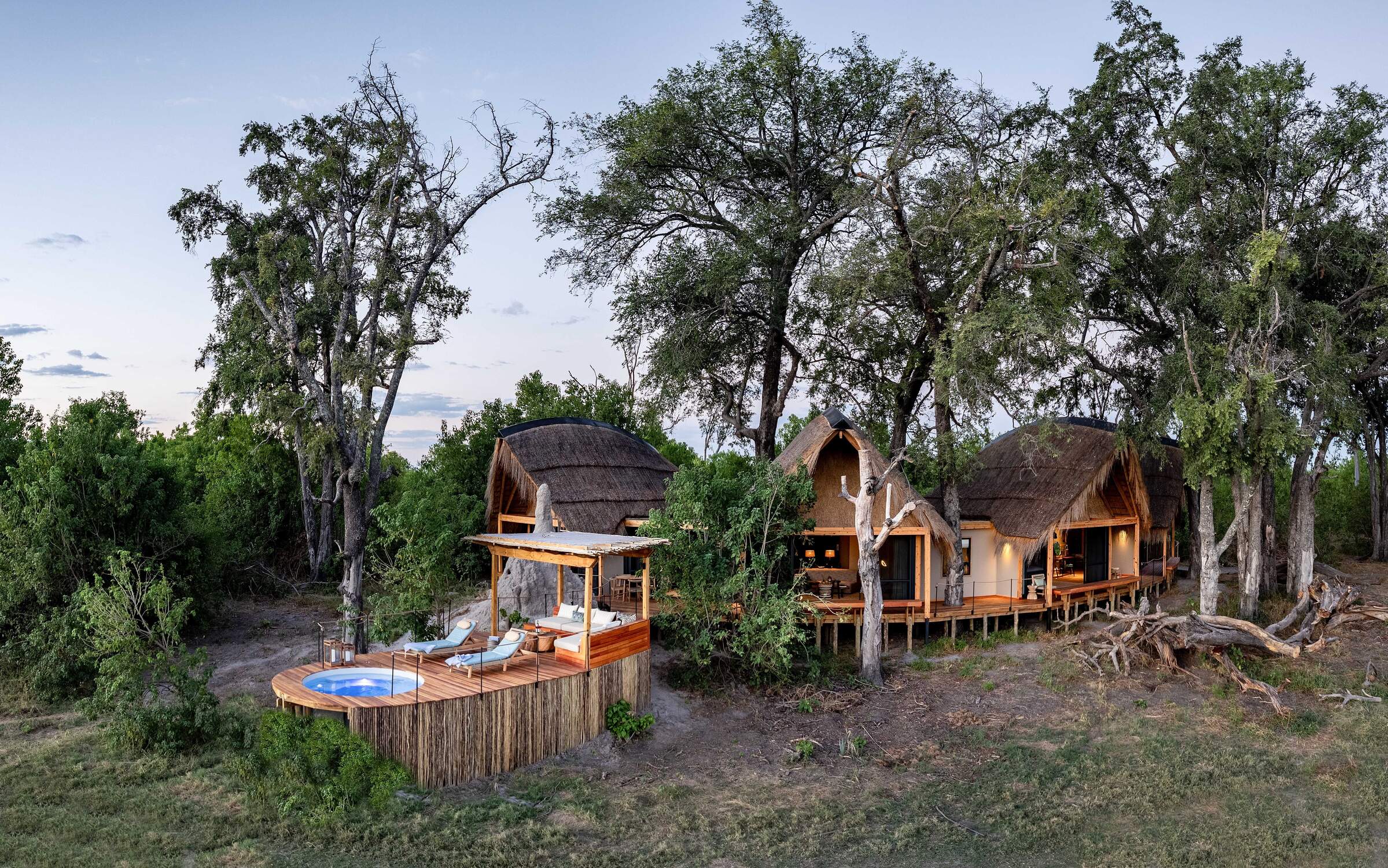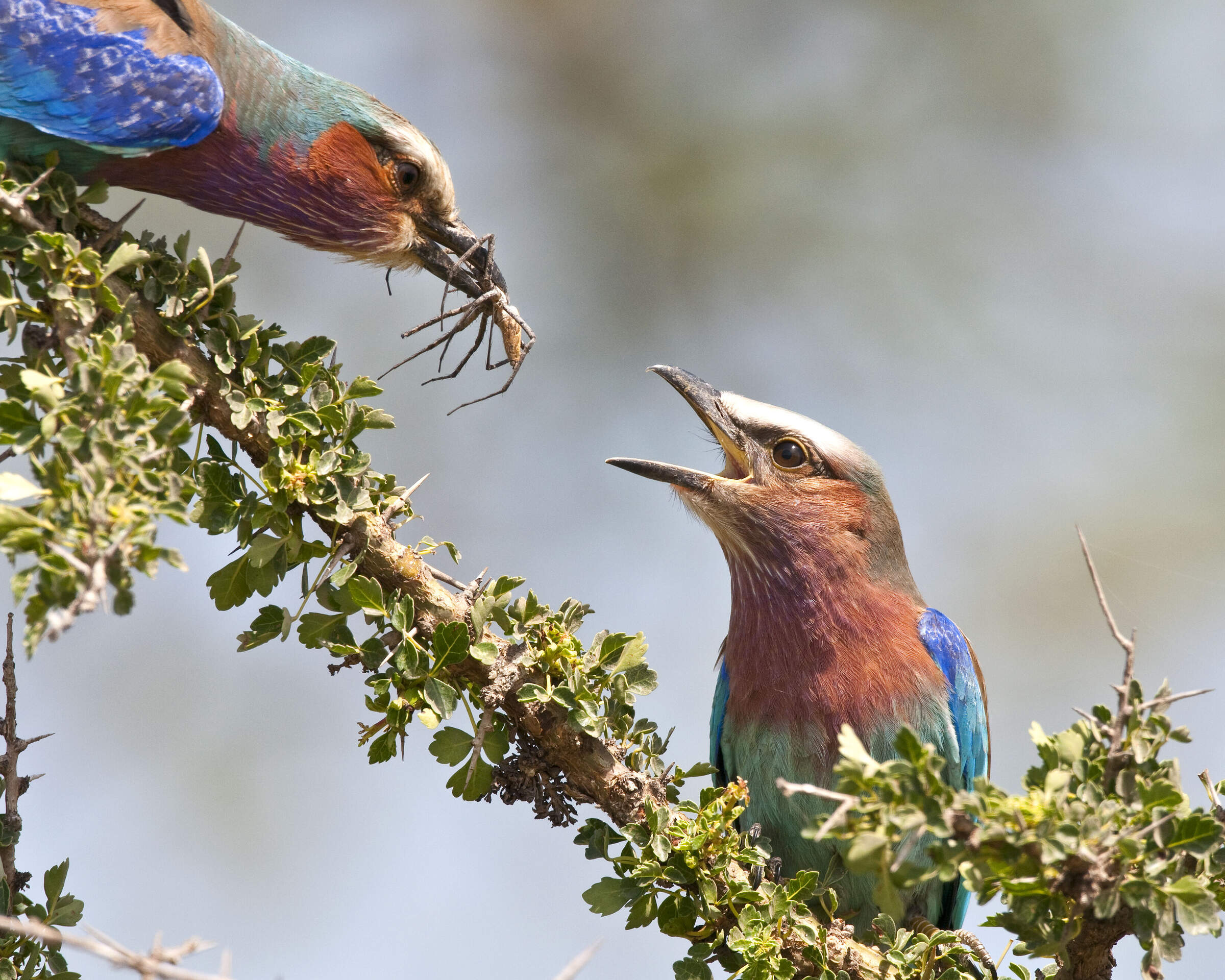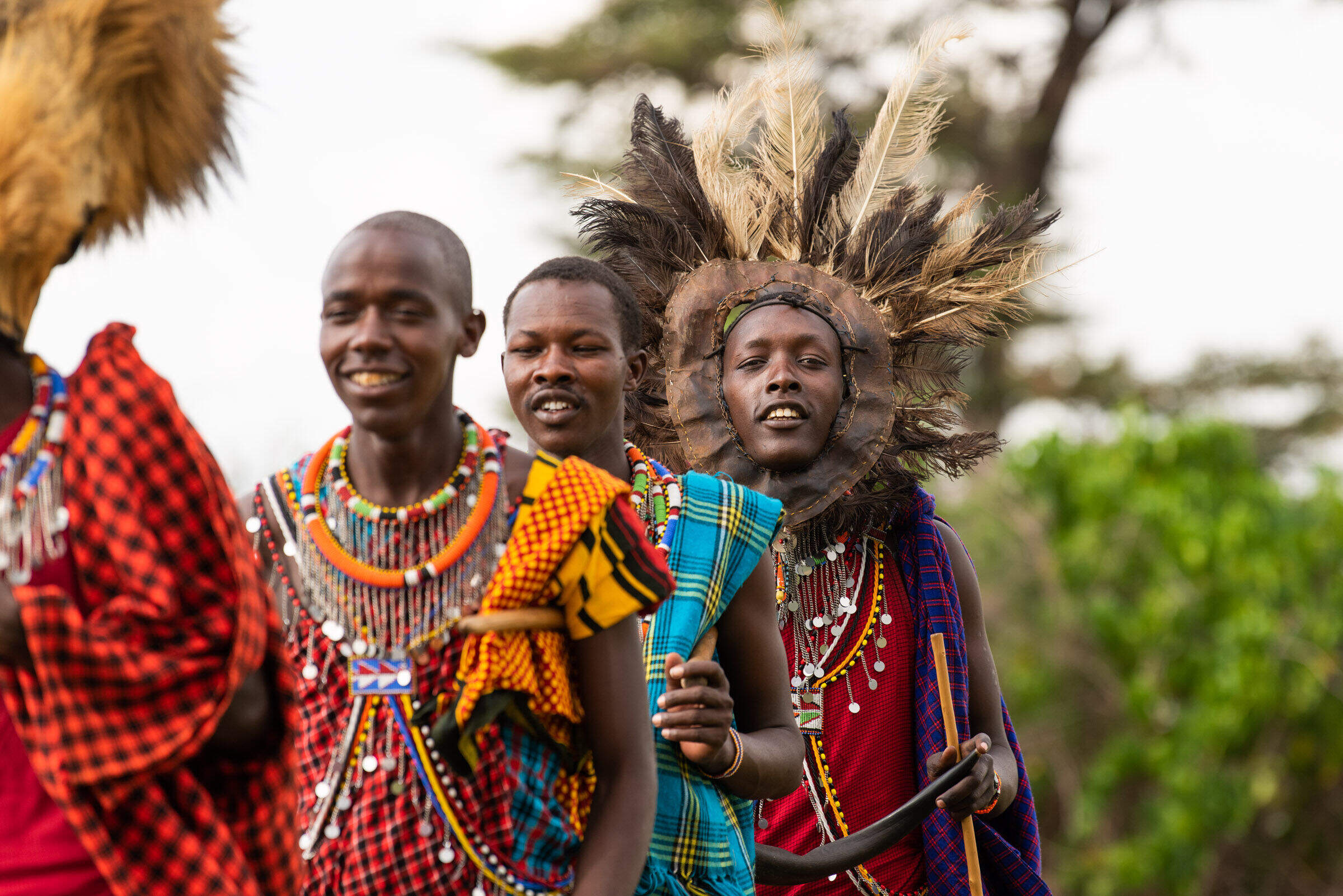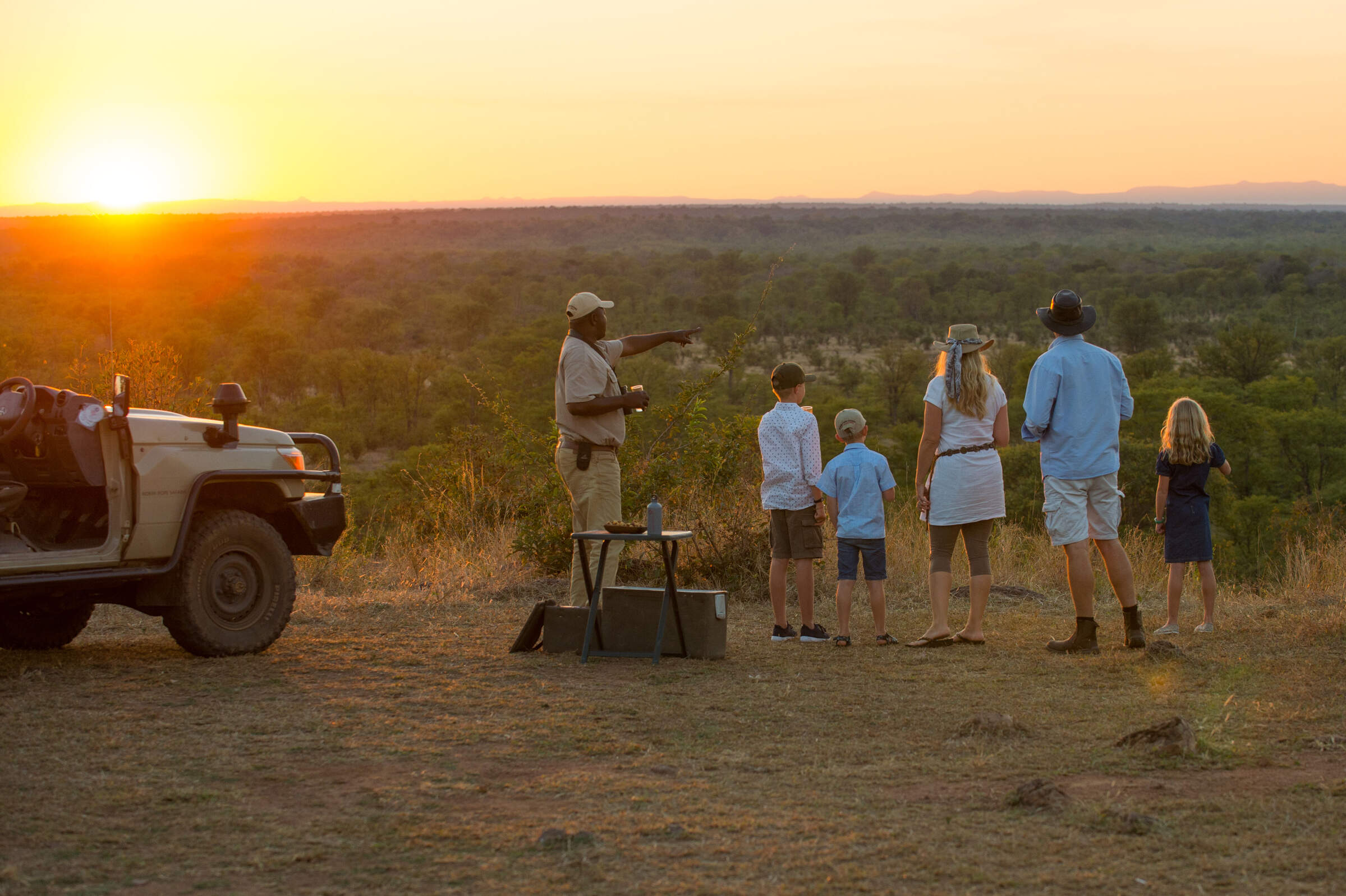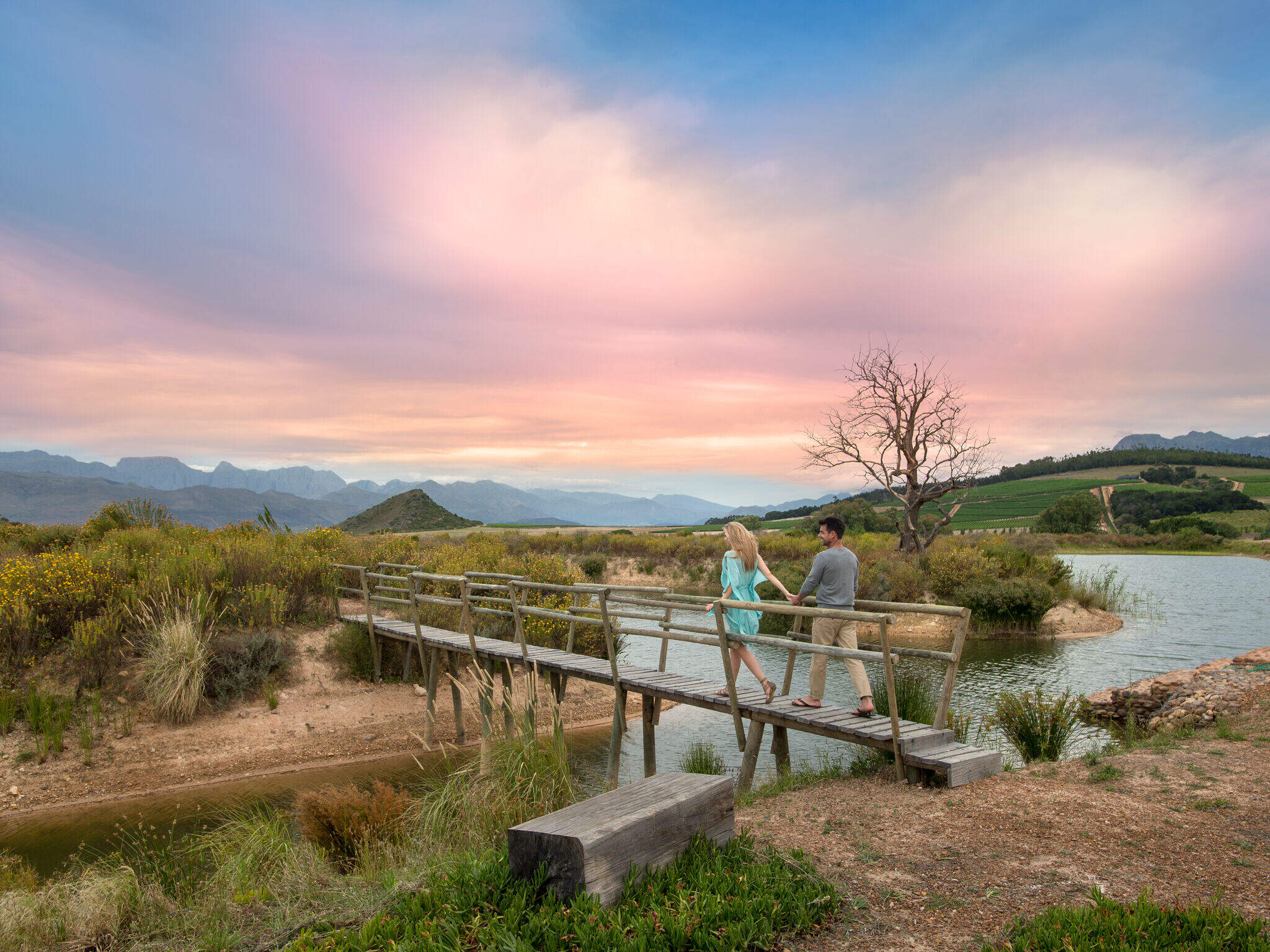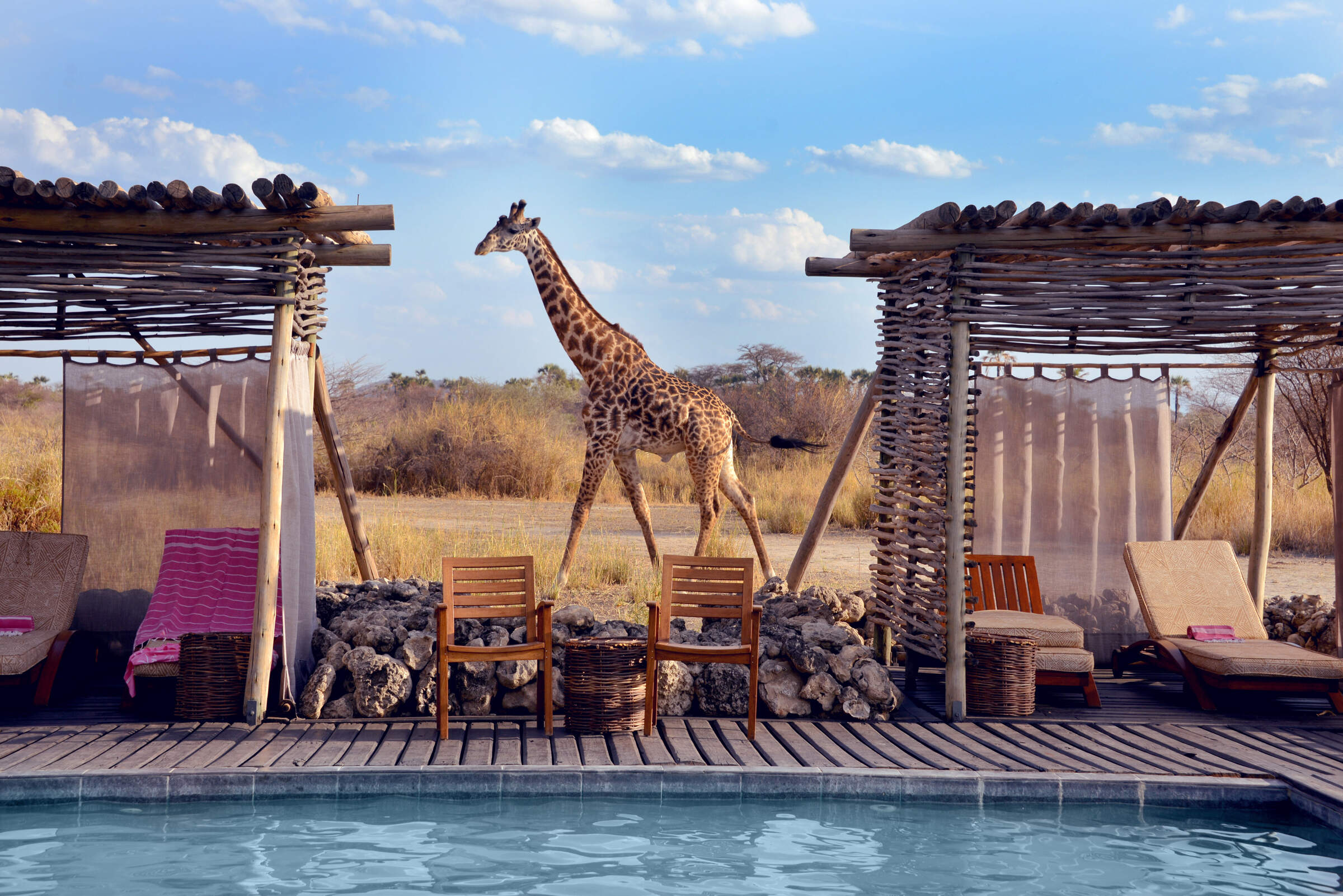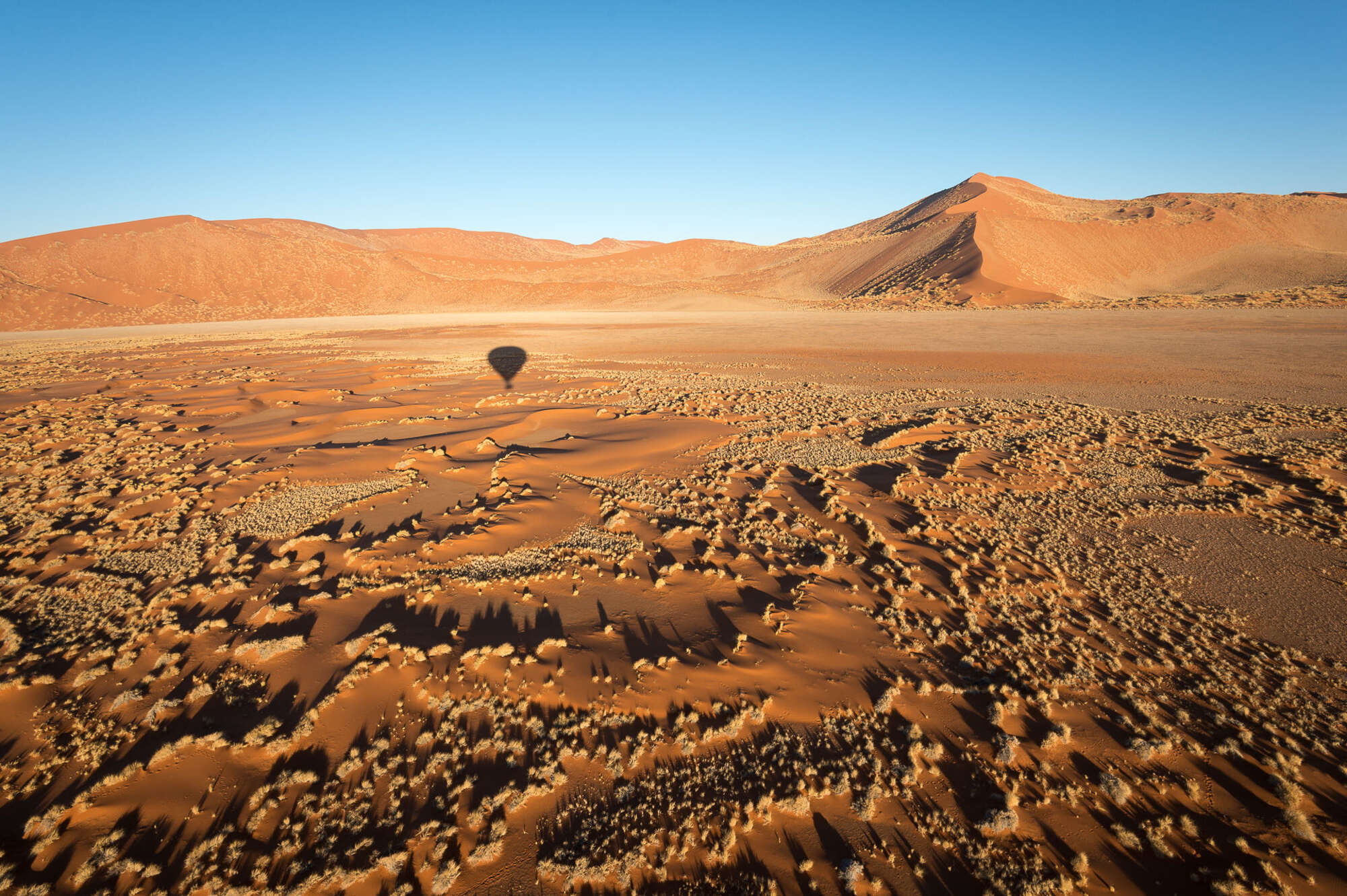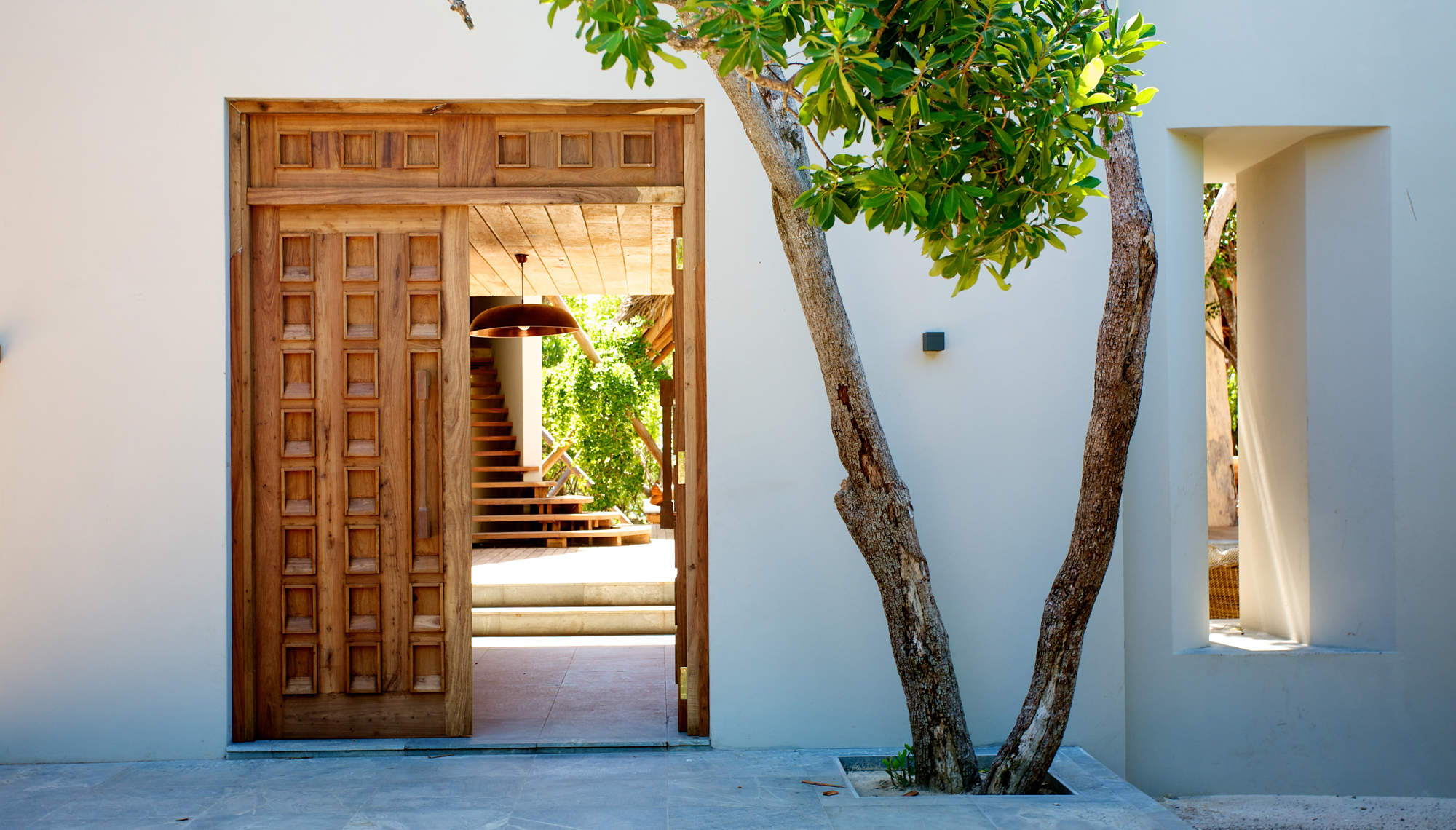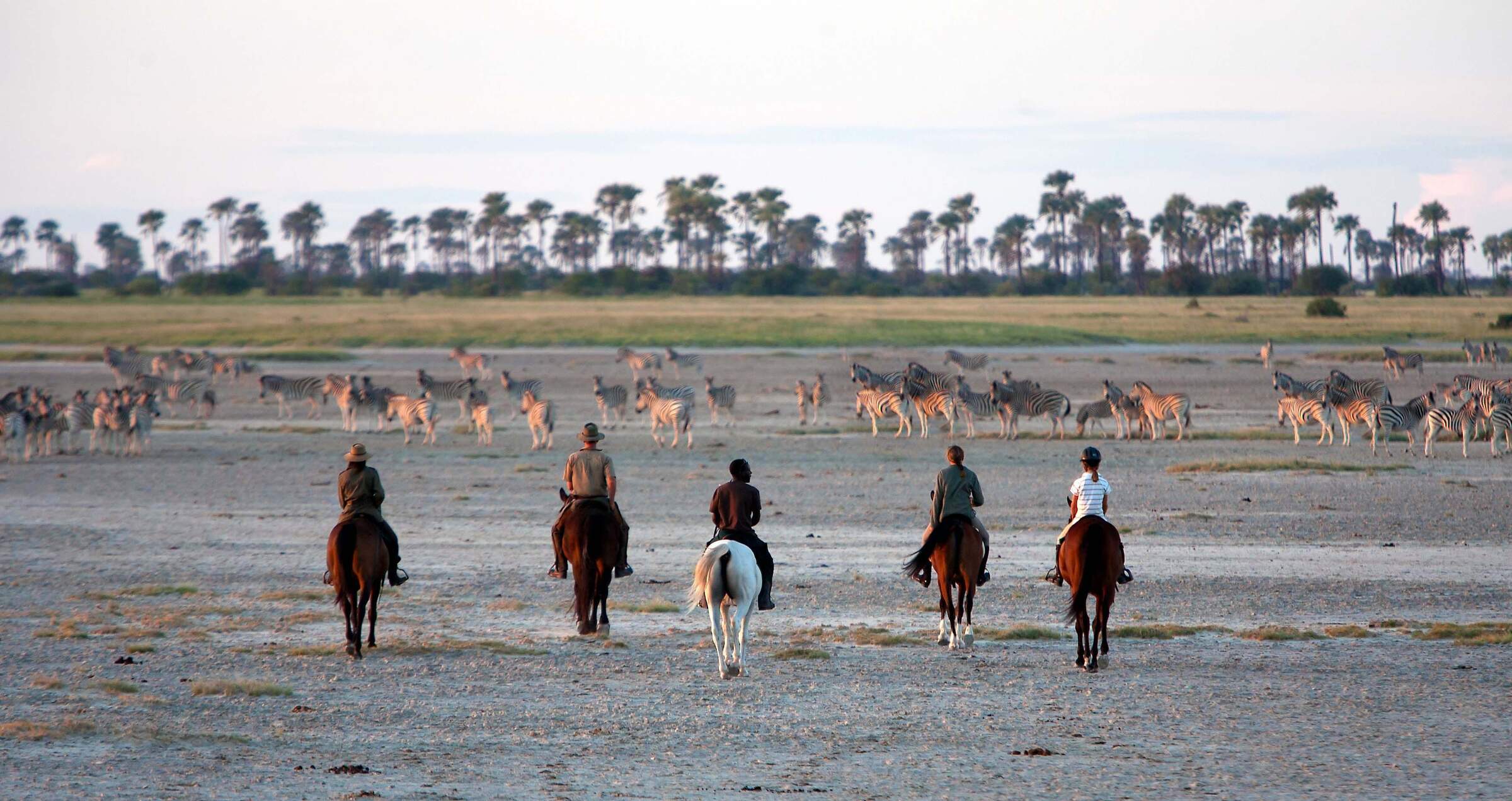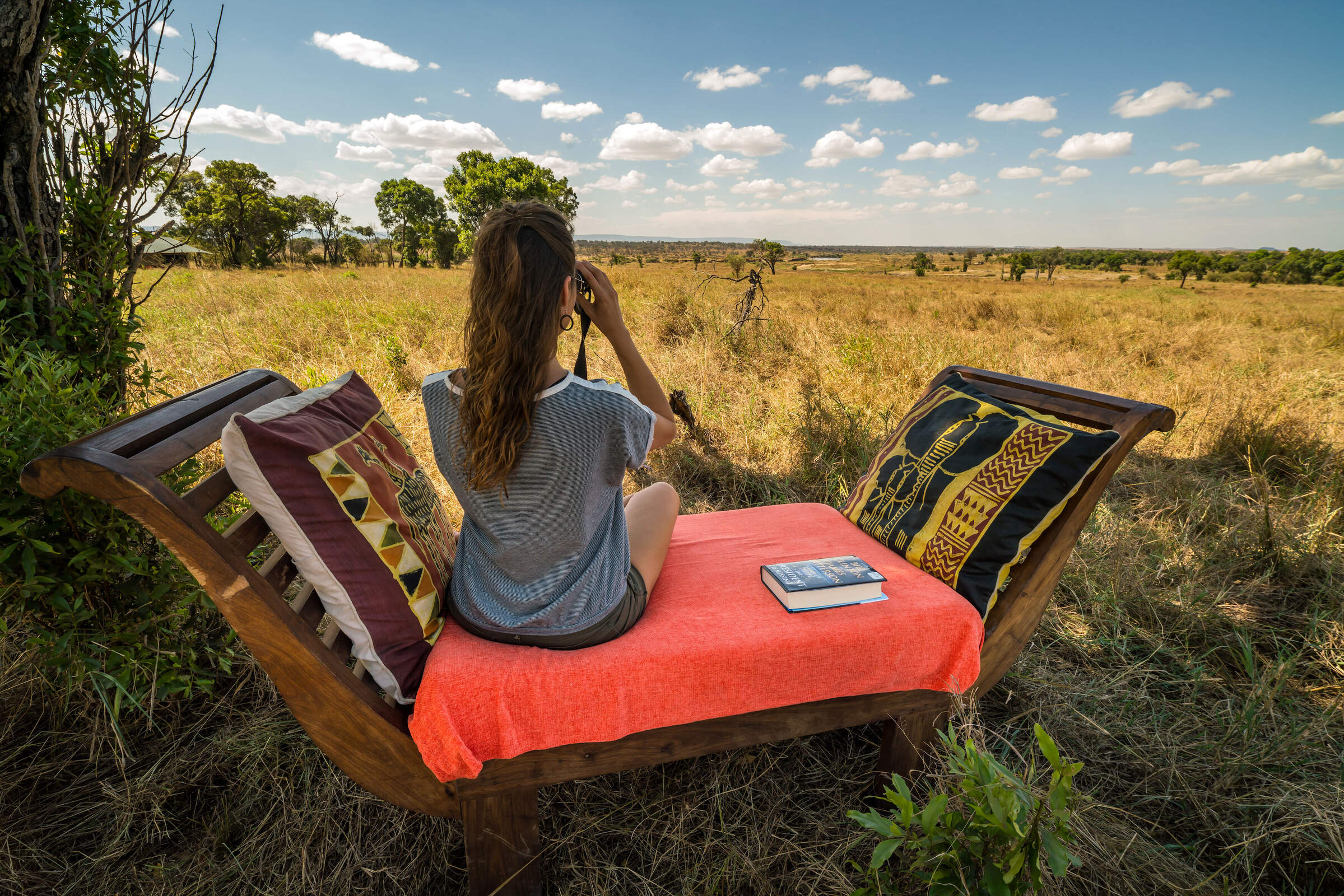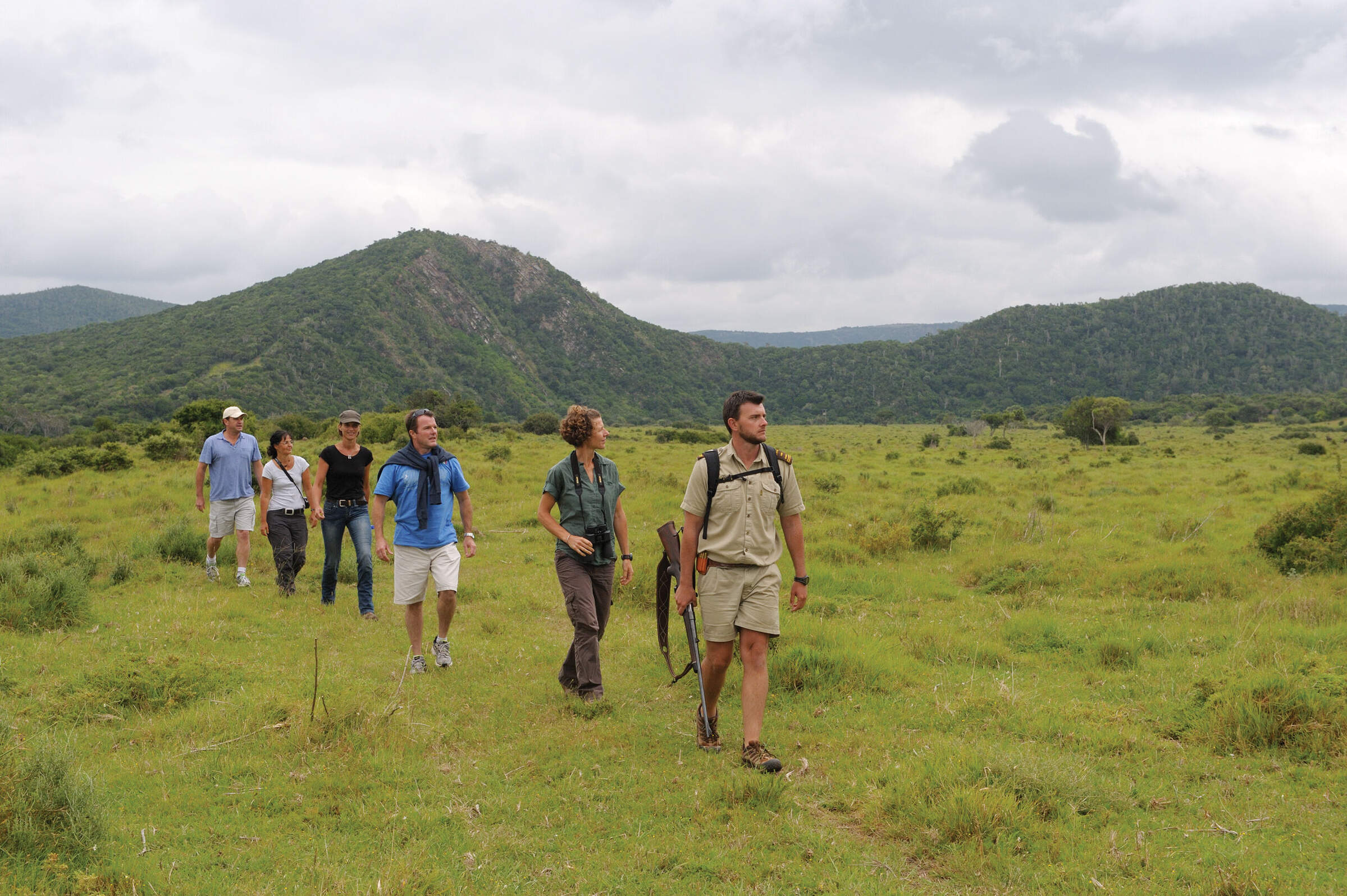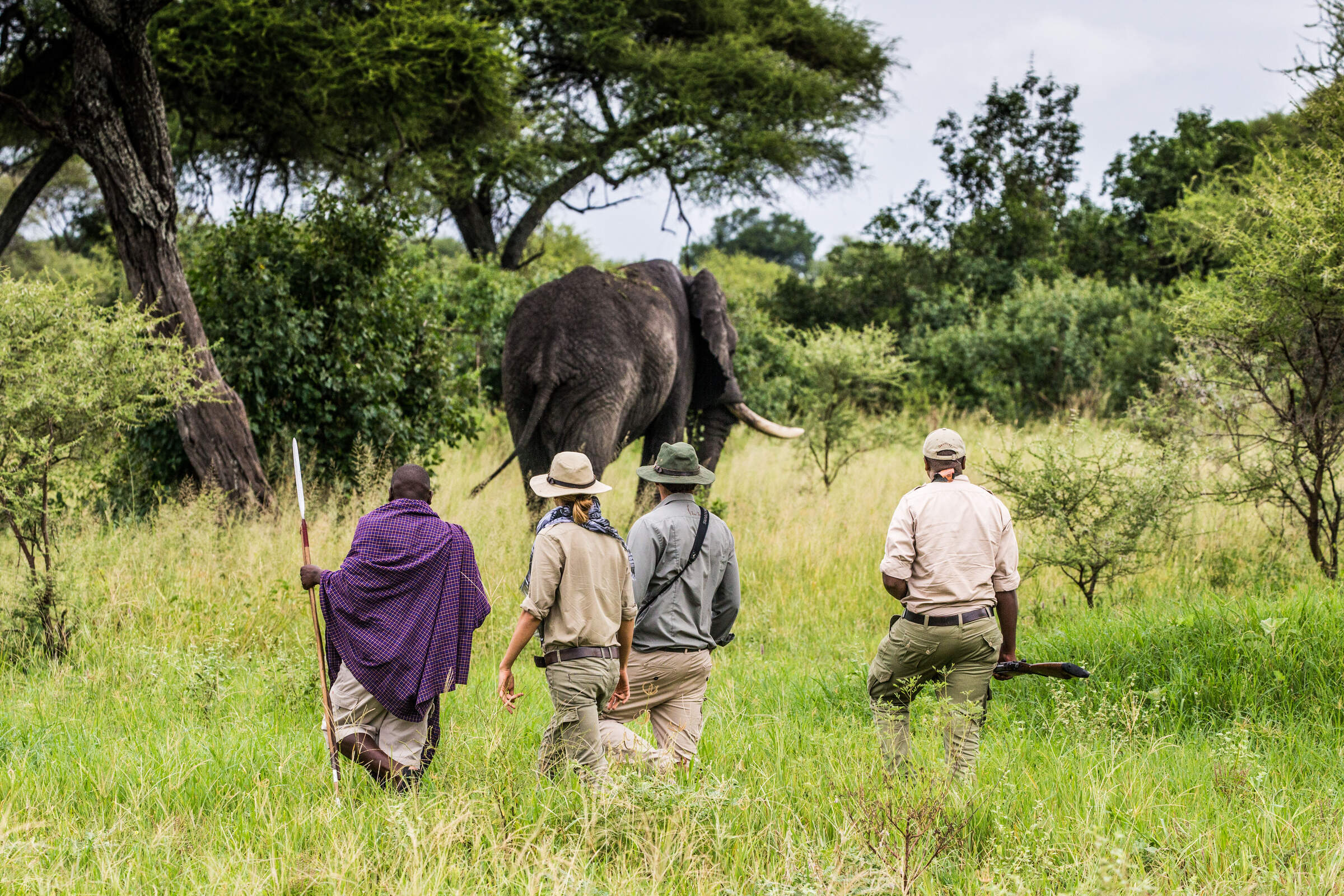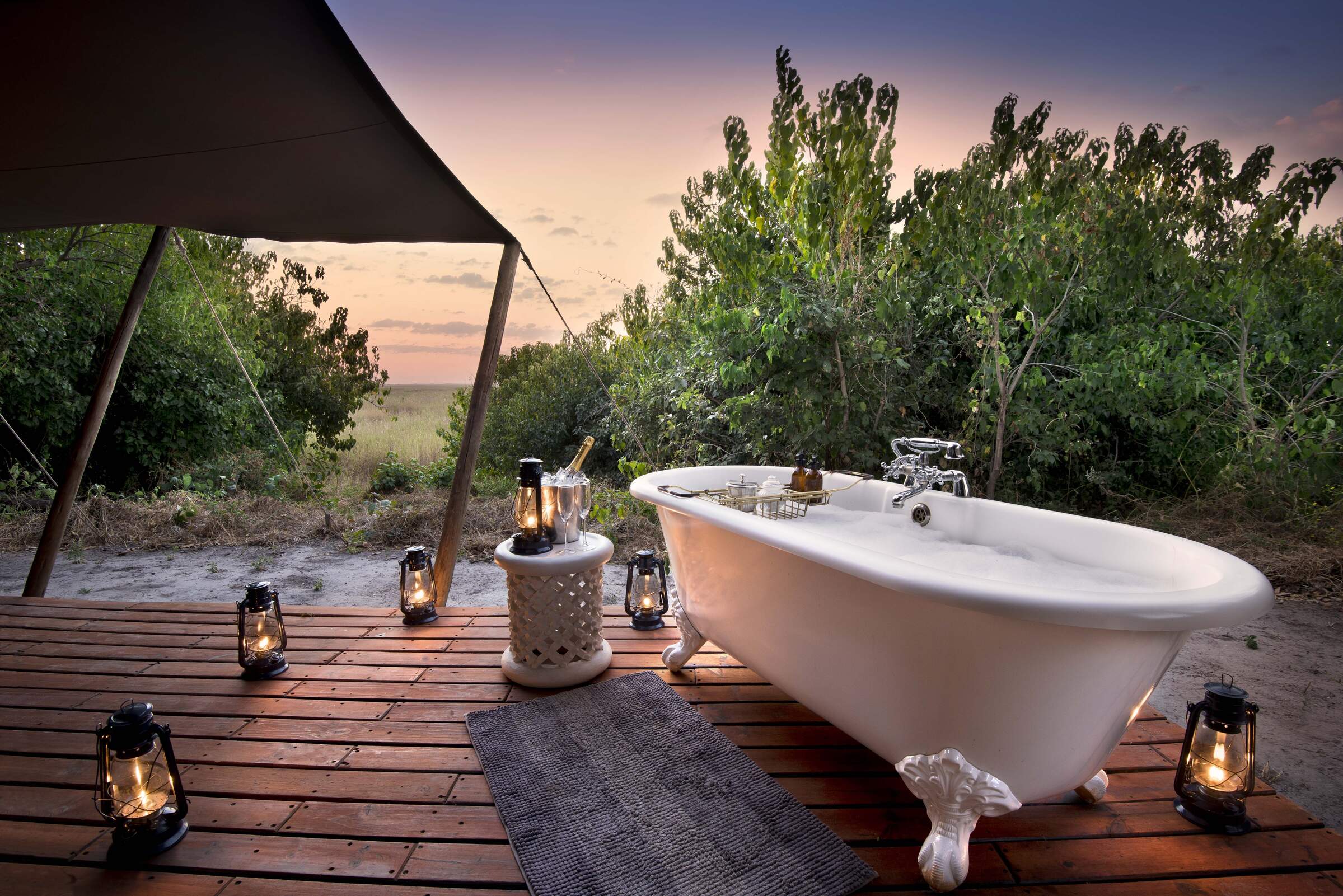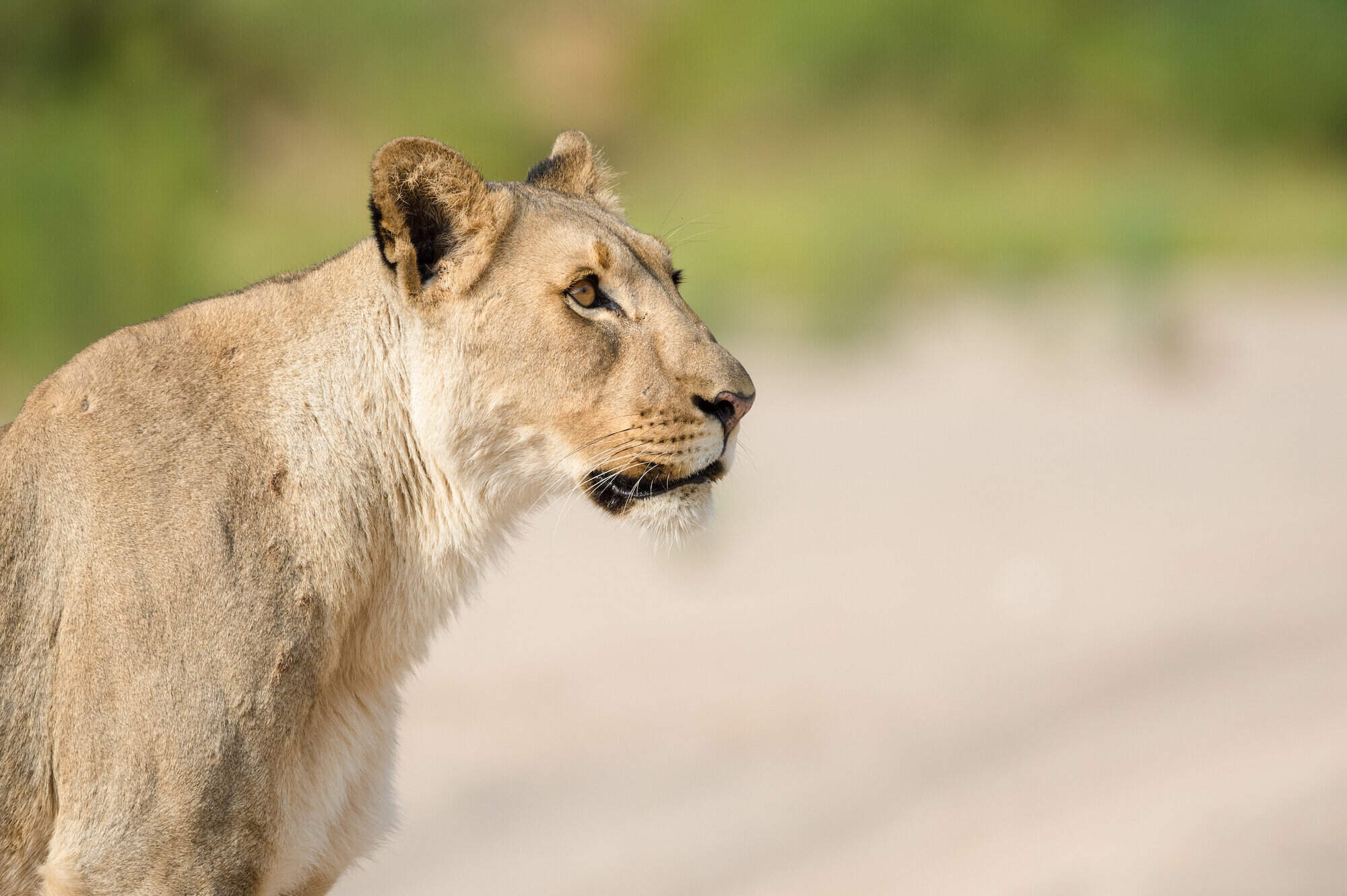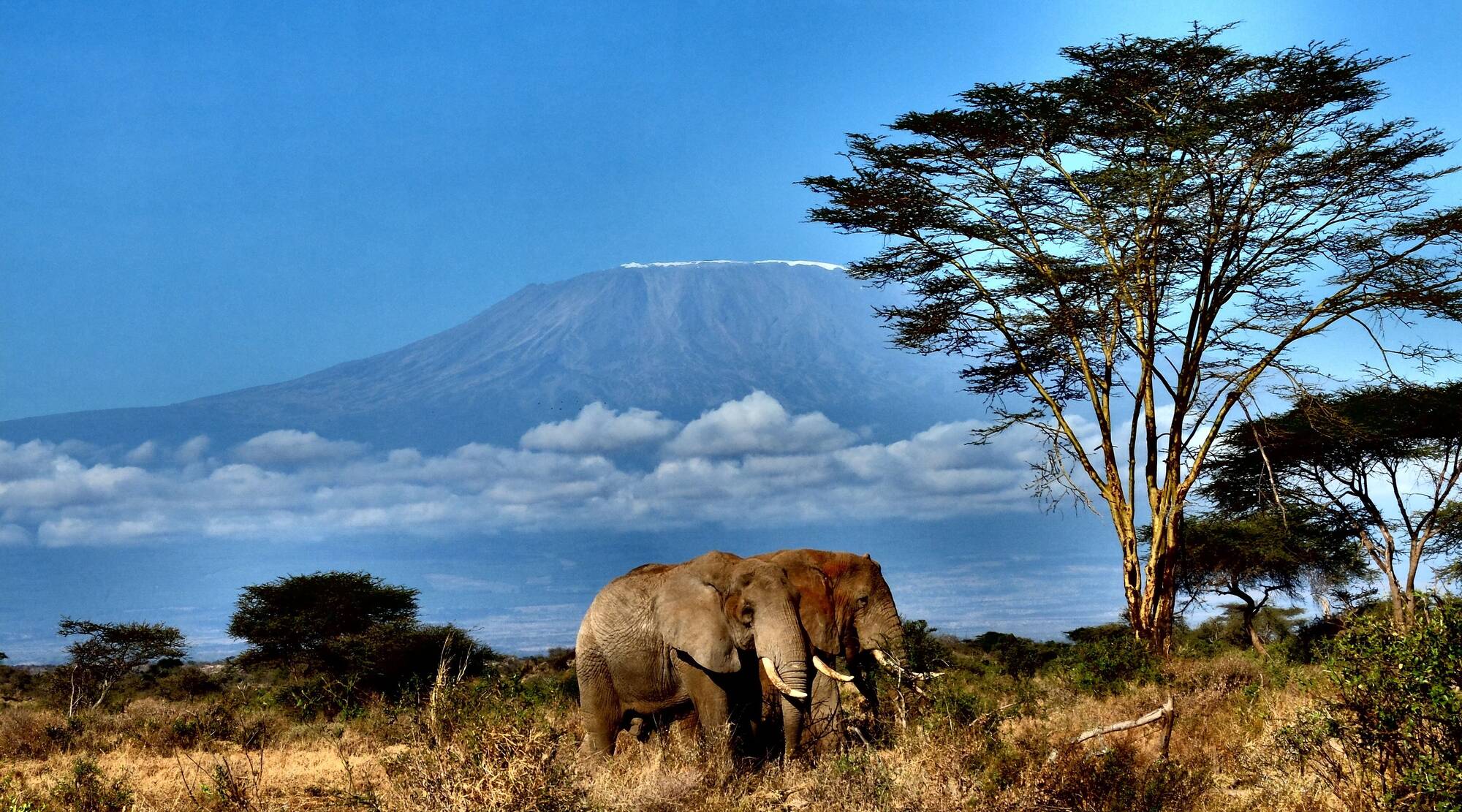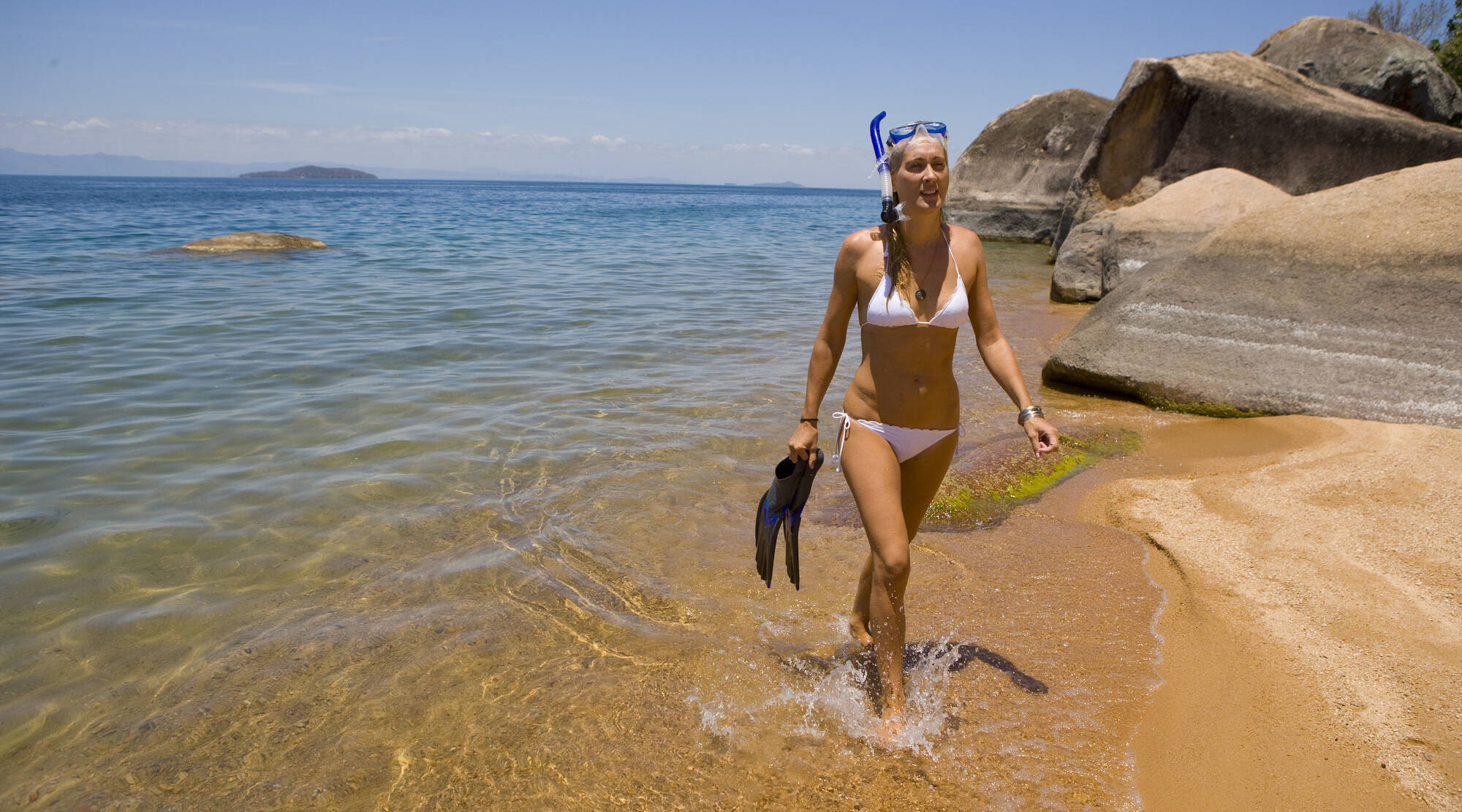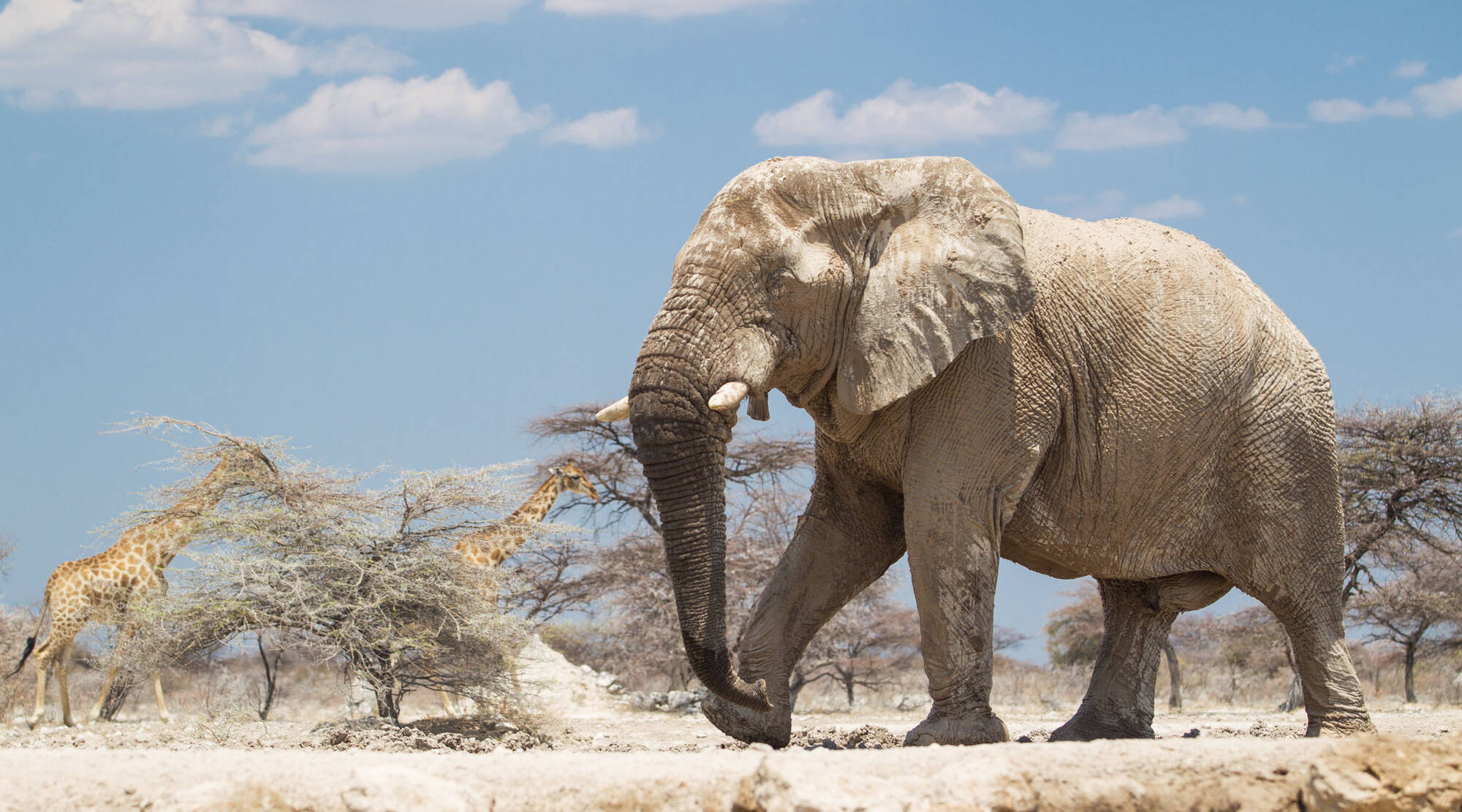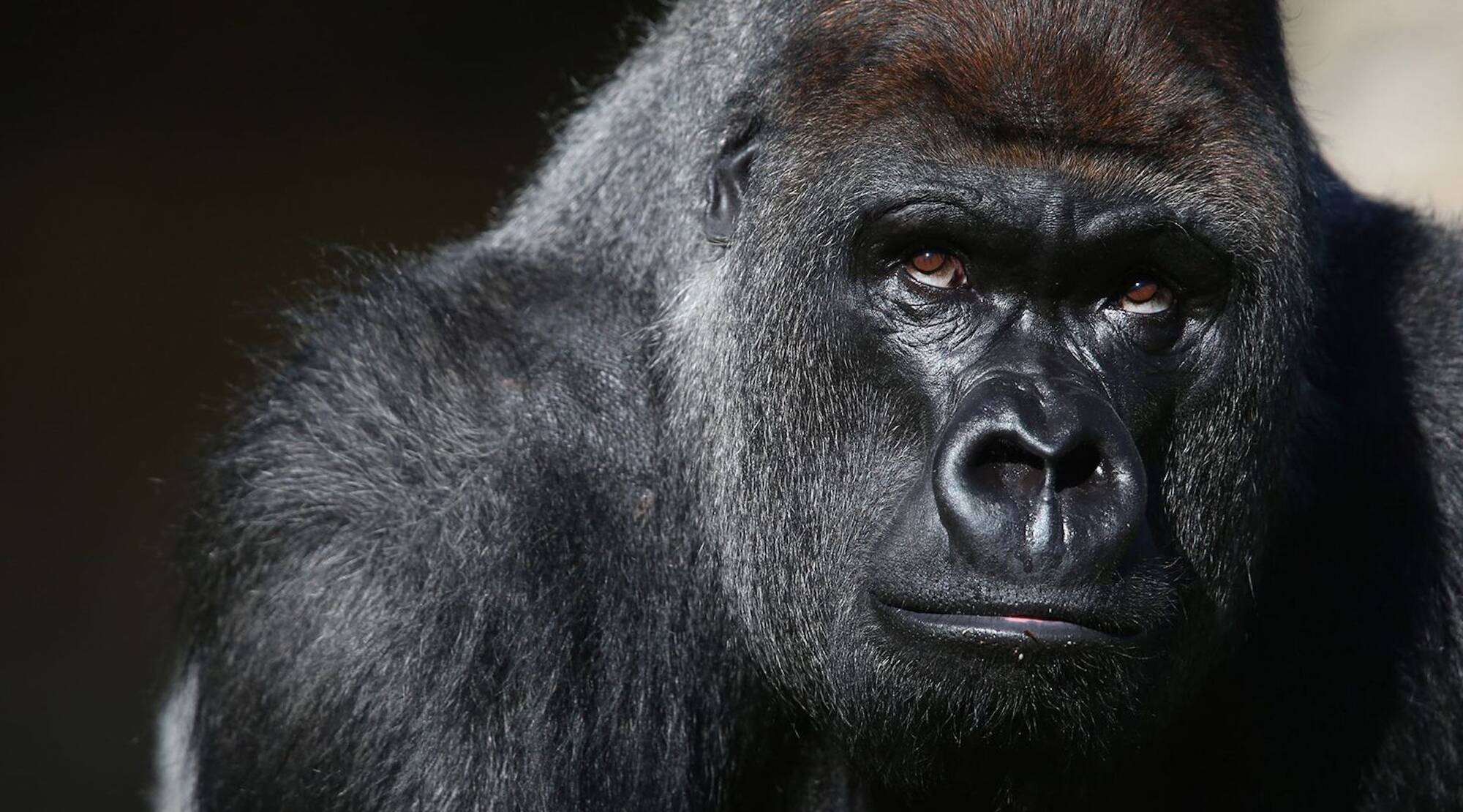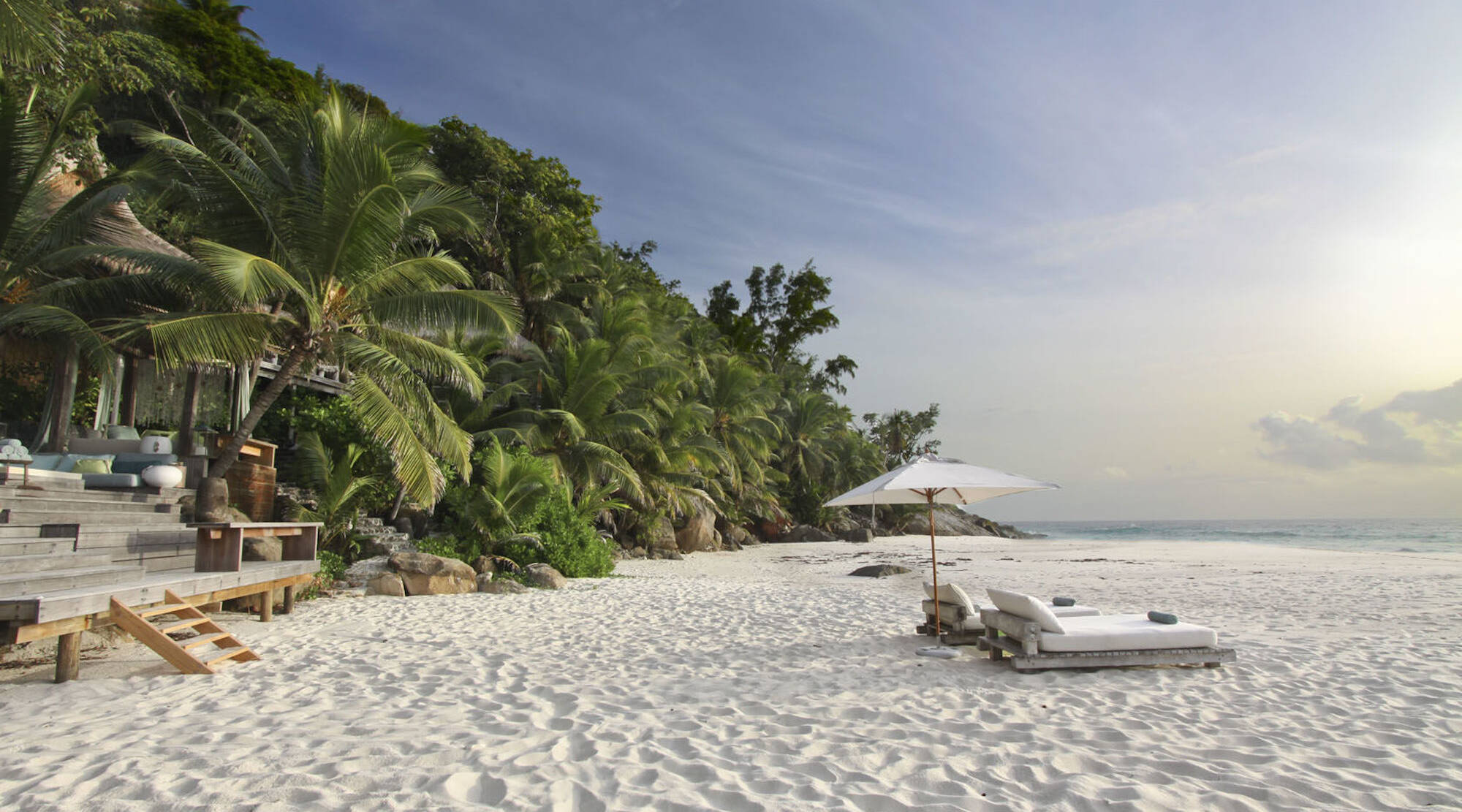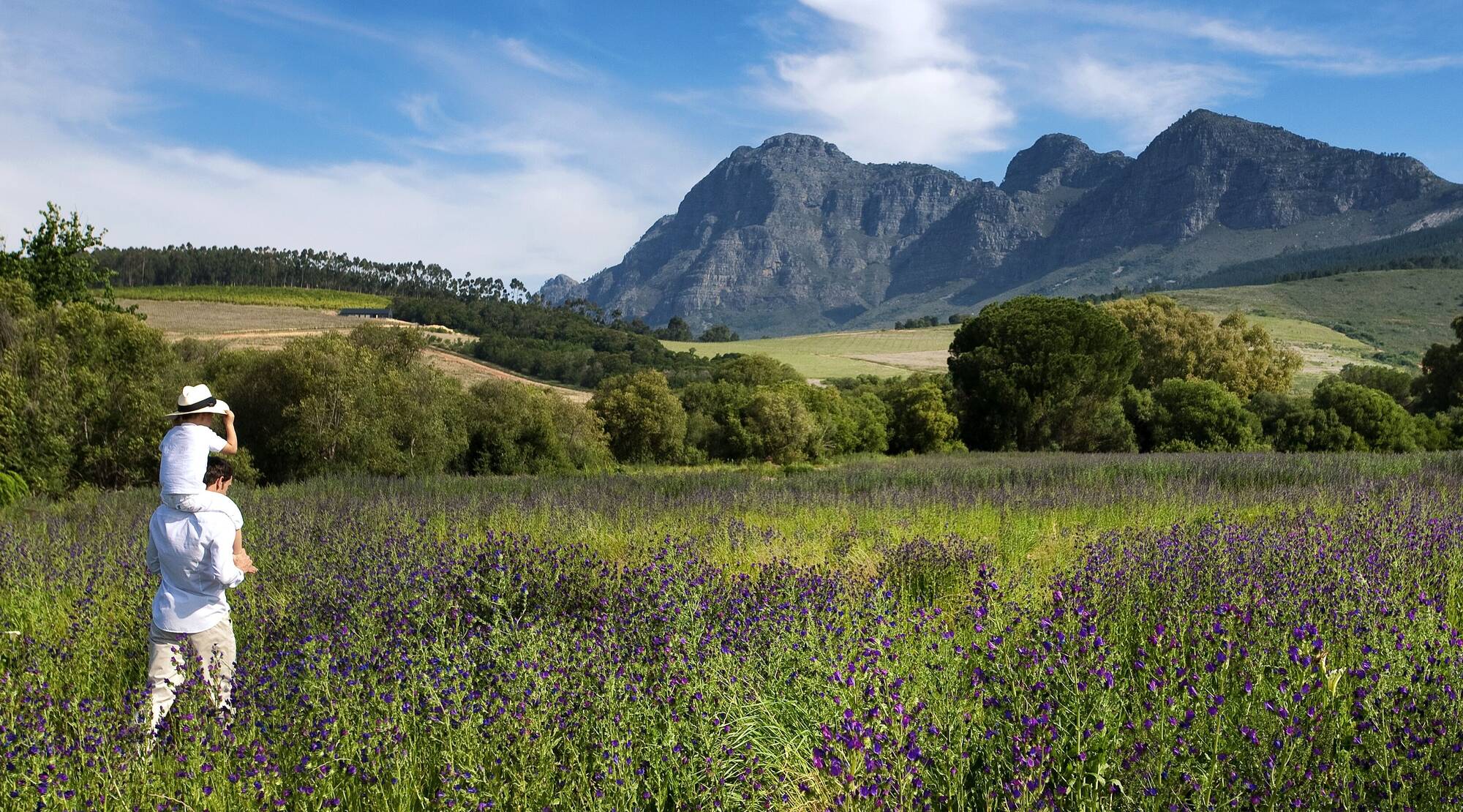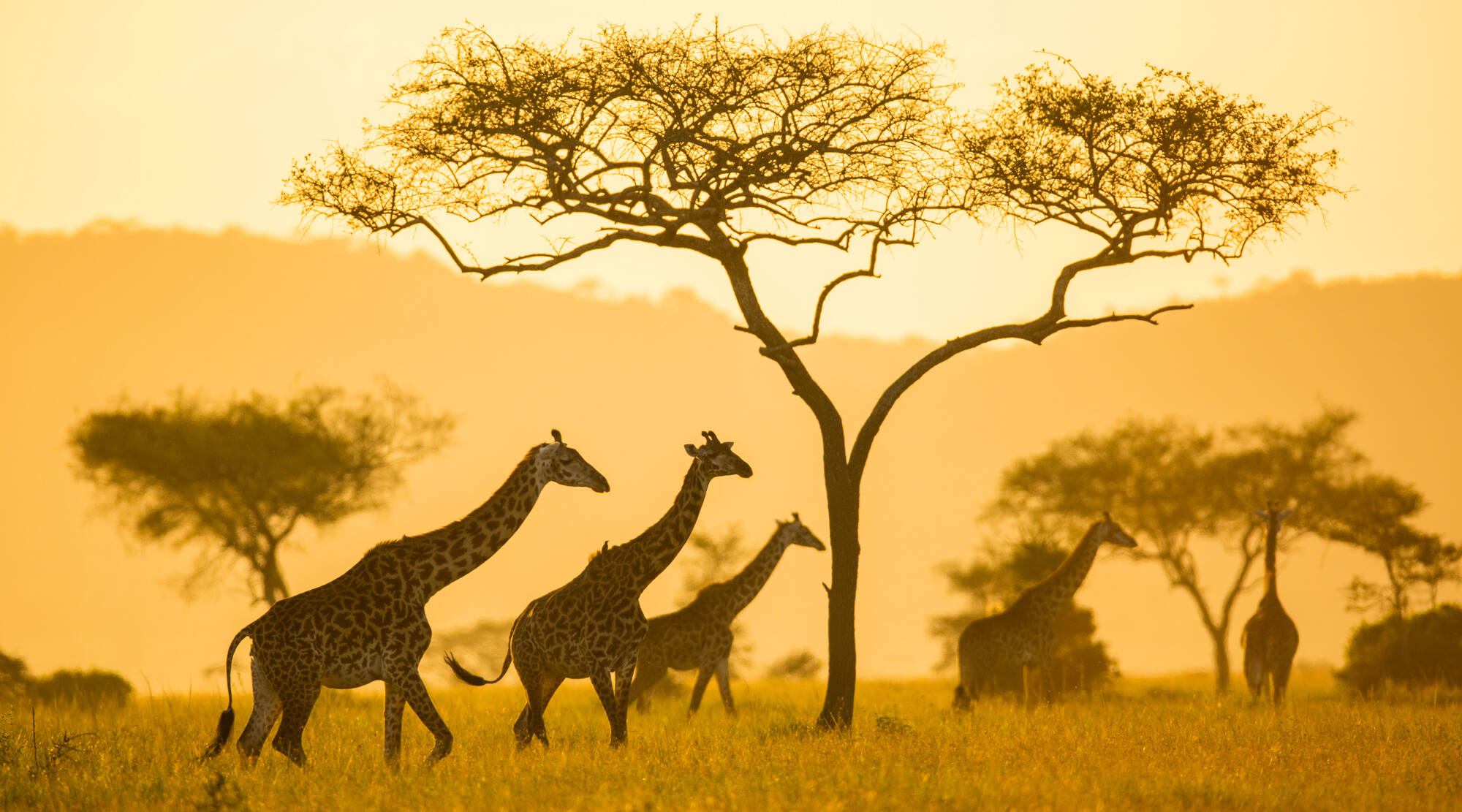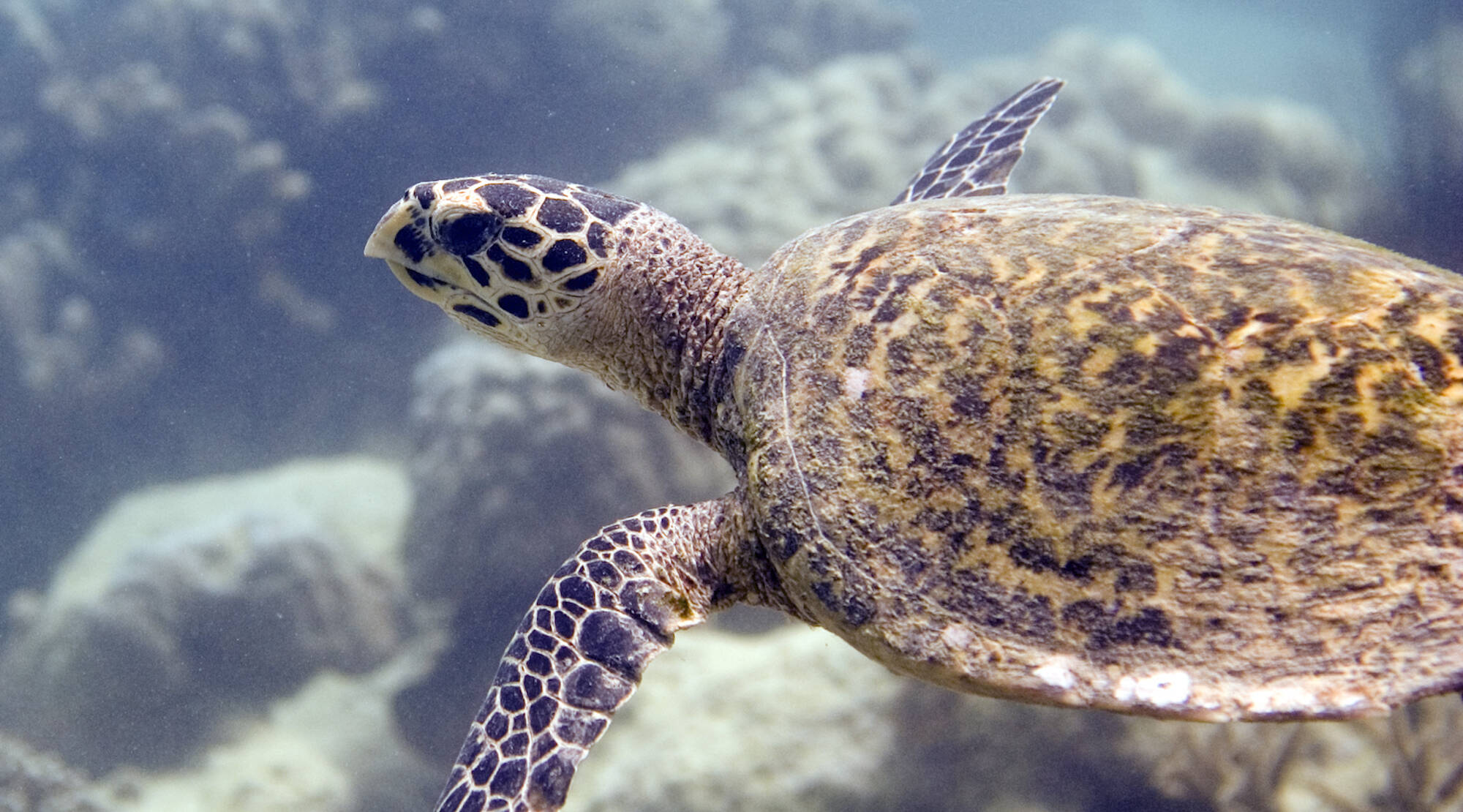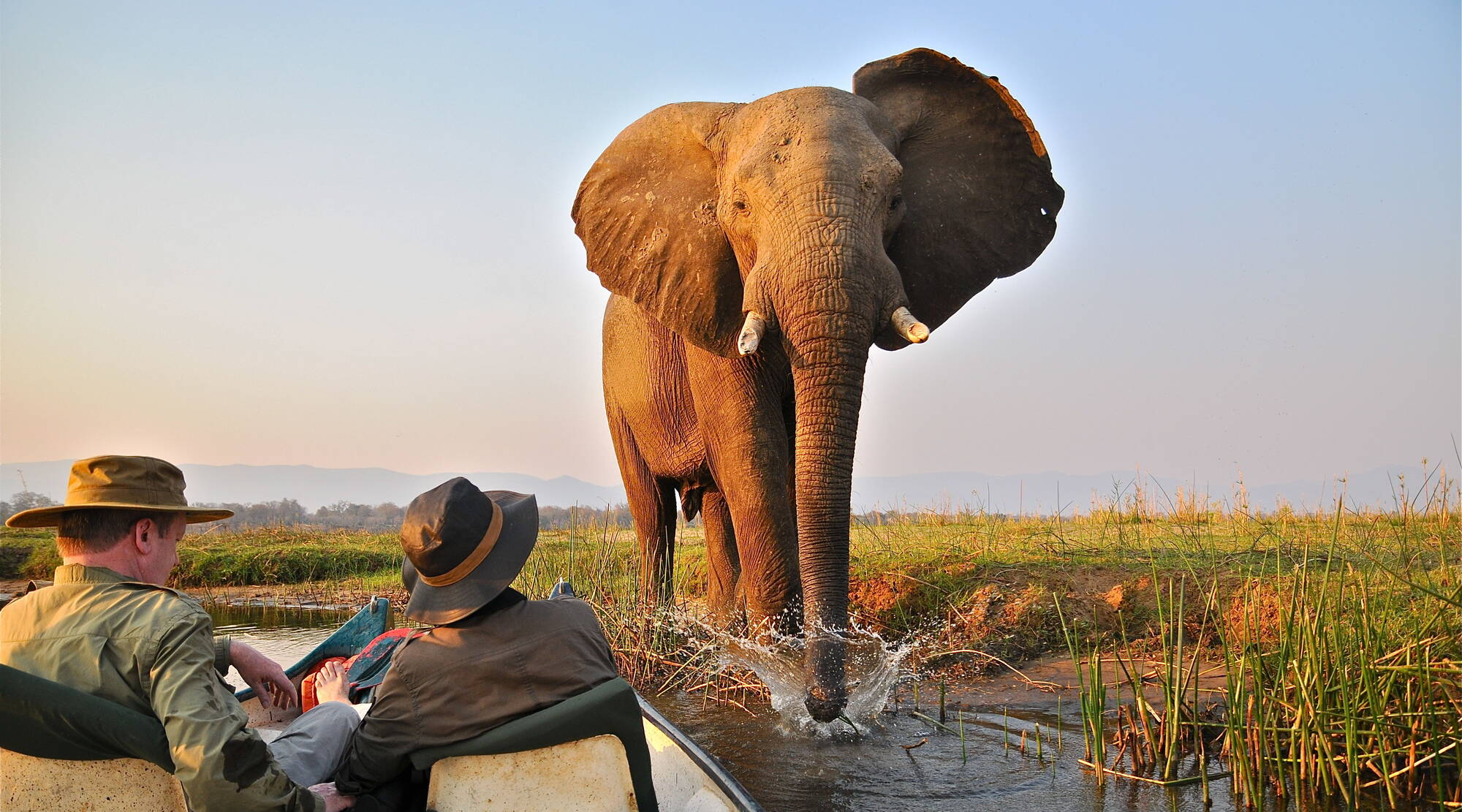Botswana Safari Holidays
Botswana is a land of raw beauty, protecting one of the last great wildernesses on earth.
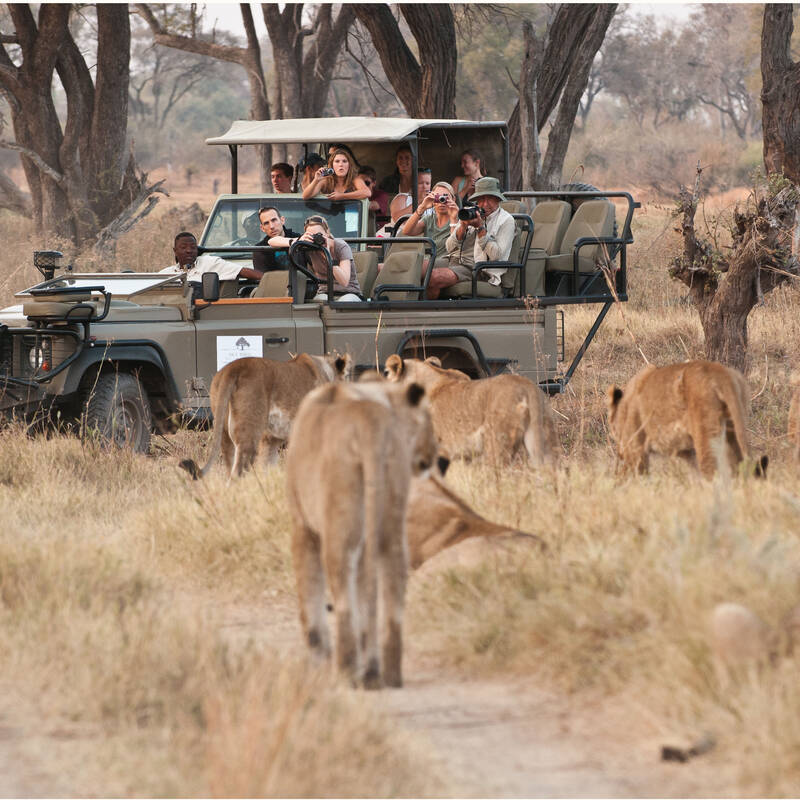
For a safari holiday, Botswana is hard to match. With no fences around the parks, reserves or wildlife concessions, the animals roam free across huge and mostly contiguous areas of the country. This, combined with strong protection of natural habitats, has resulted in healthy and stable wildlife populations.
Here you'll find one of the highest concentrations of elephants in Africa, as well as a wide variety of other big game species, from buffalo and giraffe to the big cats: lions, leopards and cheetahs all thrive here. Botswana is even one of the last strongholds for Africa's most successful predators, wild dogs.
For the visitor on holiday, the exclusivity of Botswana's safaris is a major draw – as is the UNESCO World Heritage-listed Okavango Delta. The government's policy of "low-volume, high-income" tourism has succeeded in spreading relatively few visitors across these vast expanses of wilderness, so you can expect a very private safari experience, one that you’ll share with animals, not people.
If you're looking for a safari destination that offers the best of the best, Botswana is the place for you. With its stunning landscapes, abundant wildlife, and exclusive safari experience, Botswana is a truly unforgettable destination.
Speak to one of our Experts to start planning your dream Botswana safari.
Botswana safari areas: the key destinations
A Botswana safari is often synonymous with the Okavango Delta, yet the entirety of northern Botswana mirrors the Delta's mosaic of ecosystems.
Even the Delta itself offers variety, with the central Moremi Game Reserve and surrounding private concessions providing secluded wildlife encounters. The private reserves in the Kwando-Linyanti area, and the Selinda Spillway, along with the popular Chobe Riverfront, boast impressive game sightings, and the lesser-visited Savuti in Chobe National Park is a magical spot for mobile safaris.
For a different Delta perspective, the more budget-friendly Okavango Panhandle to the north-west offers unique attractions and access to the ancient rock art of the Tsodilo Hills.
A comprehensive Botswana safari experience would also include the the vast, open saltpans like Nxai Pan and Makgadikgadi, set in the Kalahari with its transient wildlife and expansive skies, and the remote Central Kalahari Game Reserve.
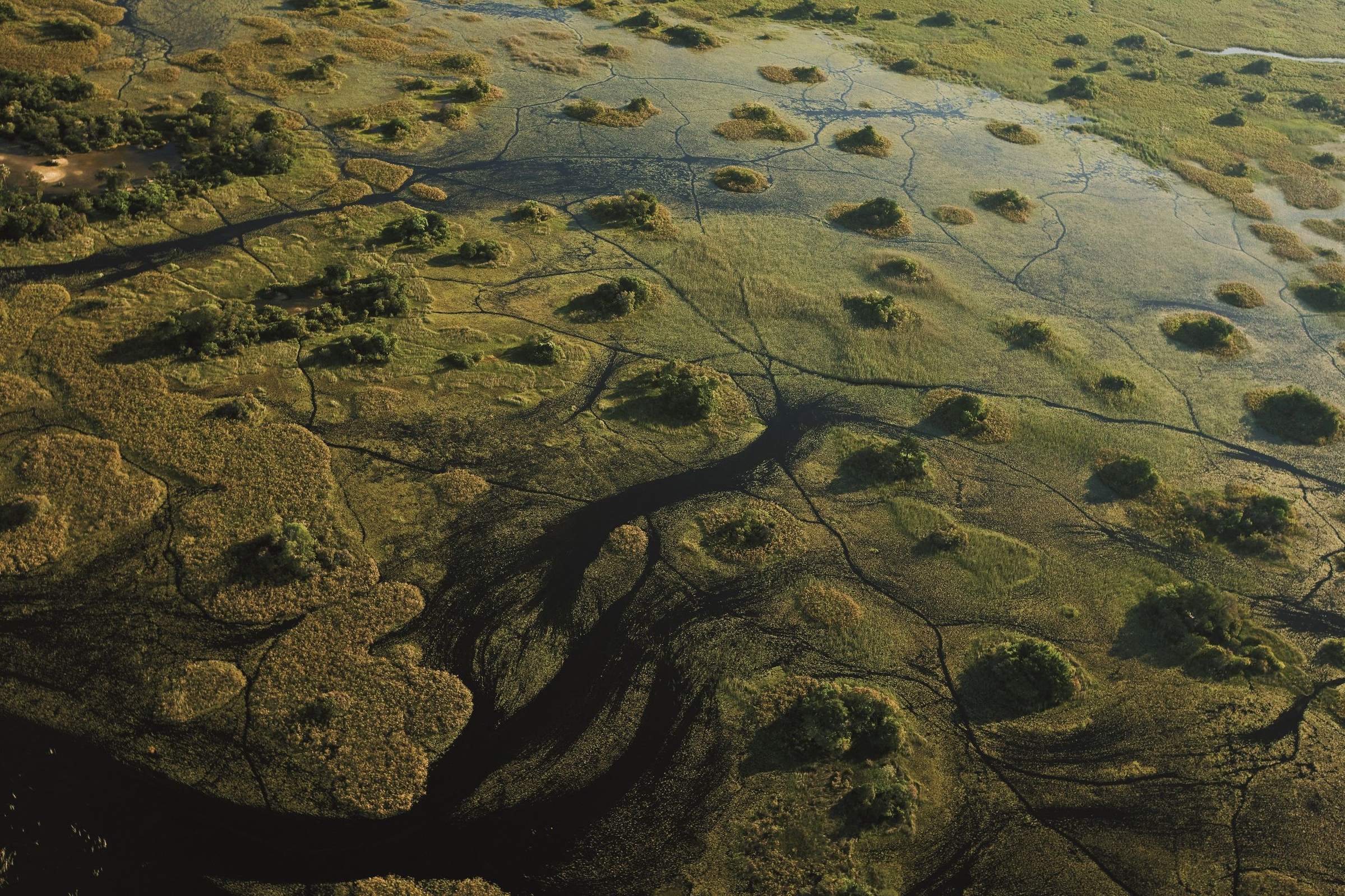
Okavango Delta
44 places to stay
Often glamorous, always exclusive, a safari in the pristine wilderness of the Okavango Delta offers the ultimate in wildlife viewing.
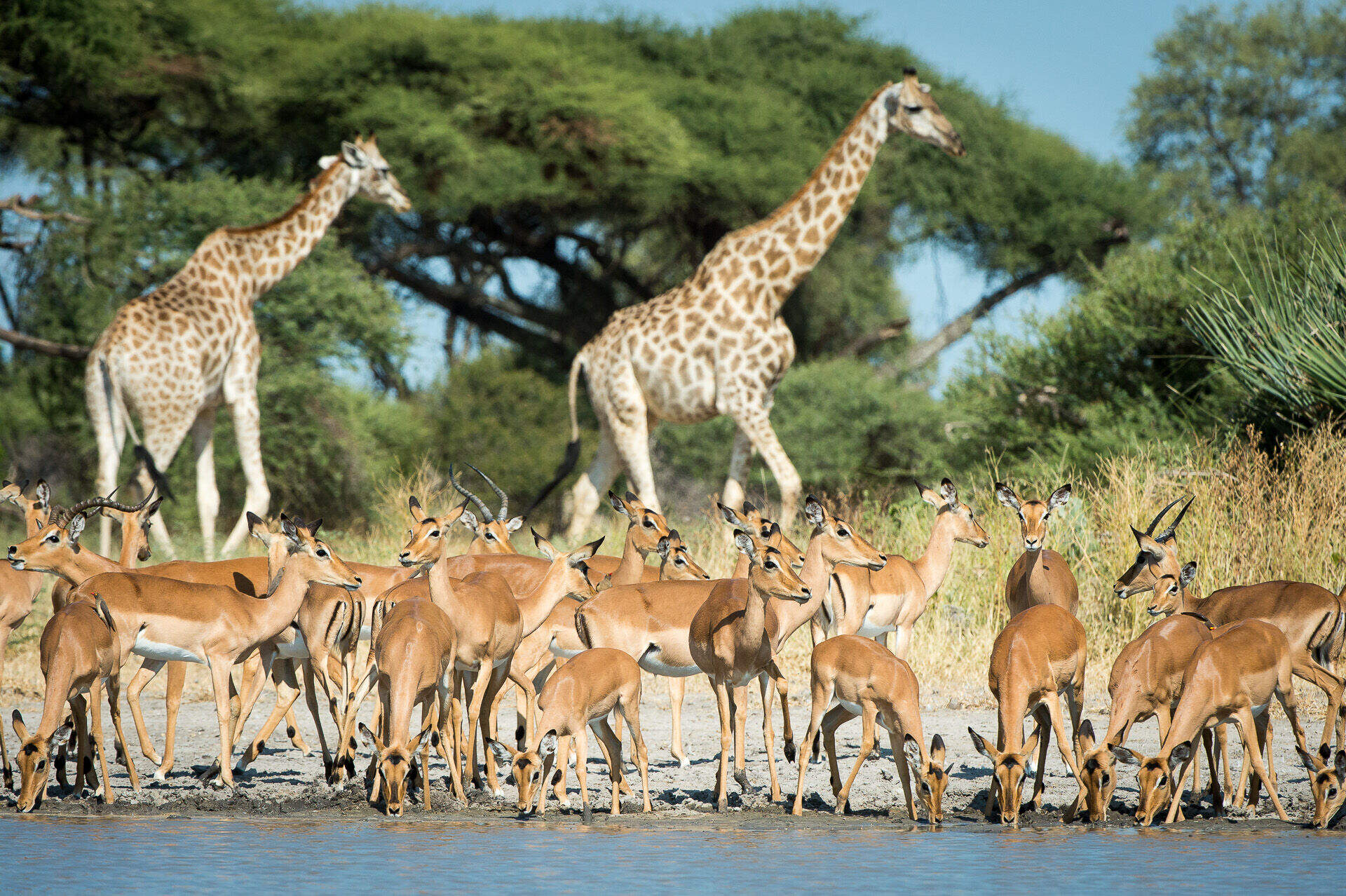
Moremi
22 places to stay
At the heart of the Okavango Delta, the game-rich Moremi has national-park status – without the exclusivity of the surrounding private reserves.
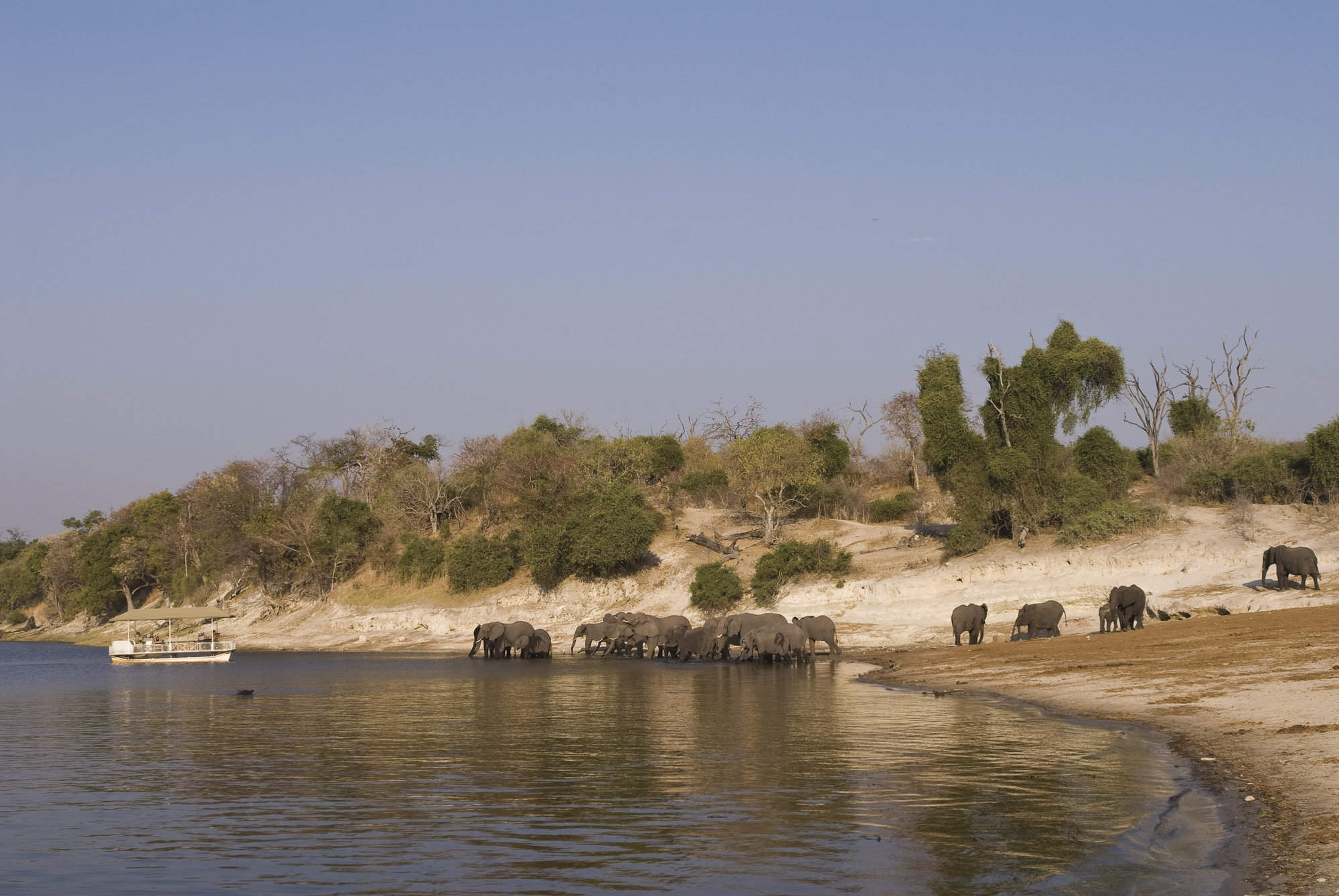
Chobe
13 places to stay
The most long-standing of Botswana’s safari destinations, Chobe is home to huge herds of elephant – and the lion who hunt them.
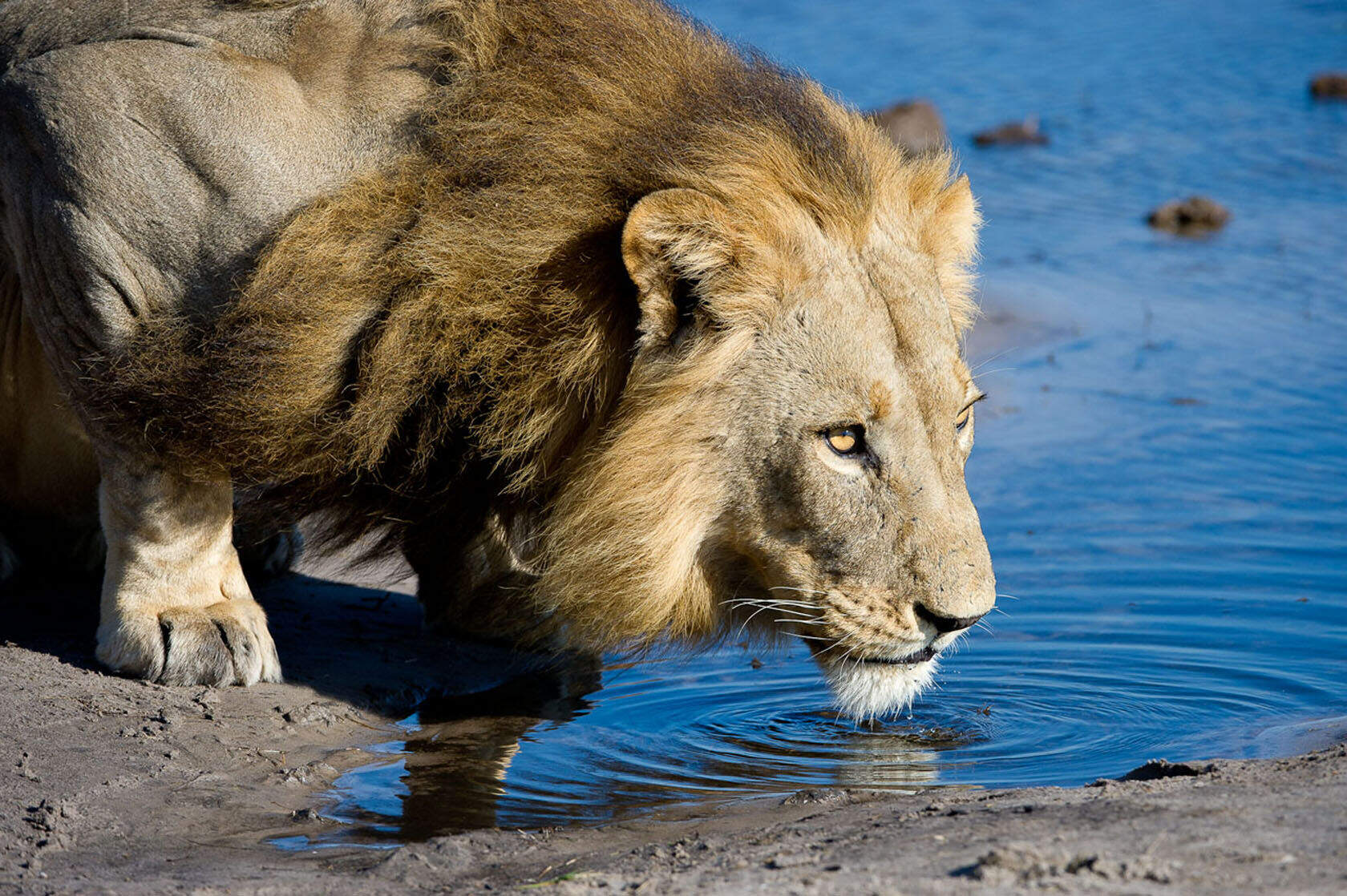
Kwando-Linyanti
12 places to stay
With wildlife aplenty and a heady mix of safari options, the exclusive private reserves of the Kwando-Linyanti area have serious appeal.
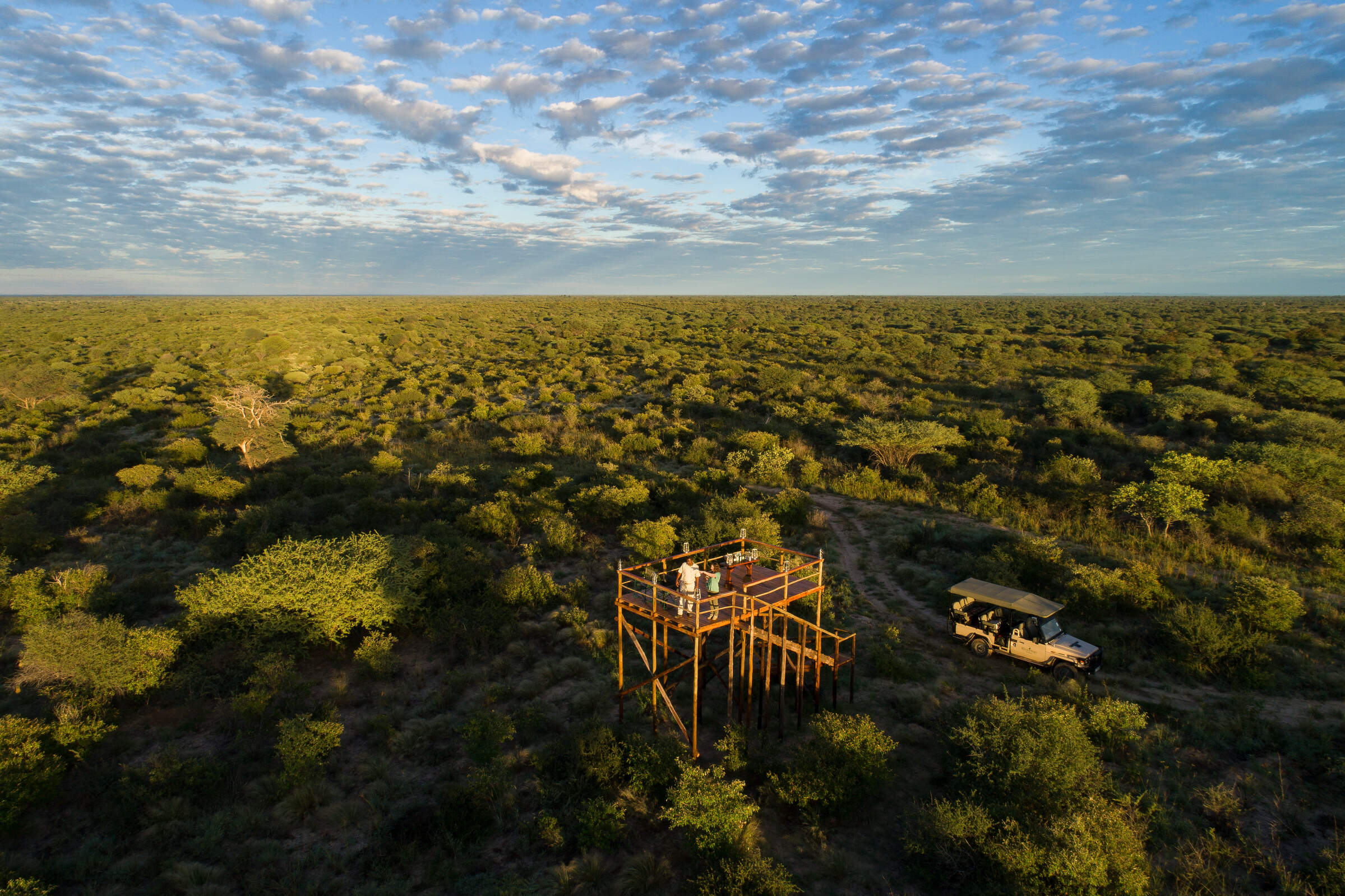
Central Kalahari
7 places to stay
Vast in scale, extreme in climate, the CKGR is the domain of adventurous-minded travellers in search of a very different wilderness.
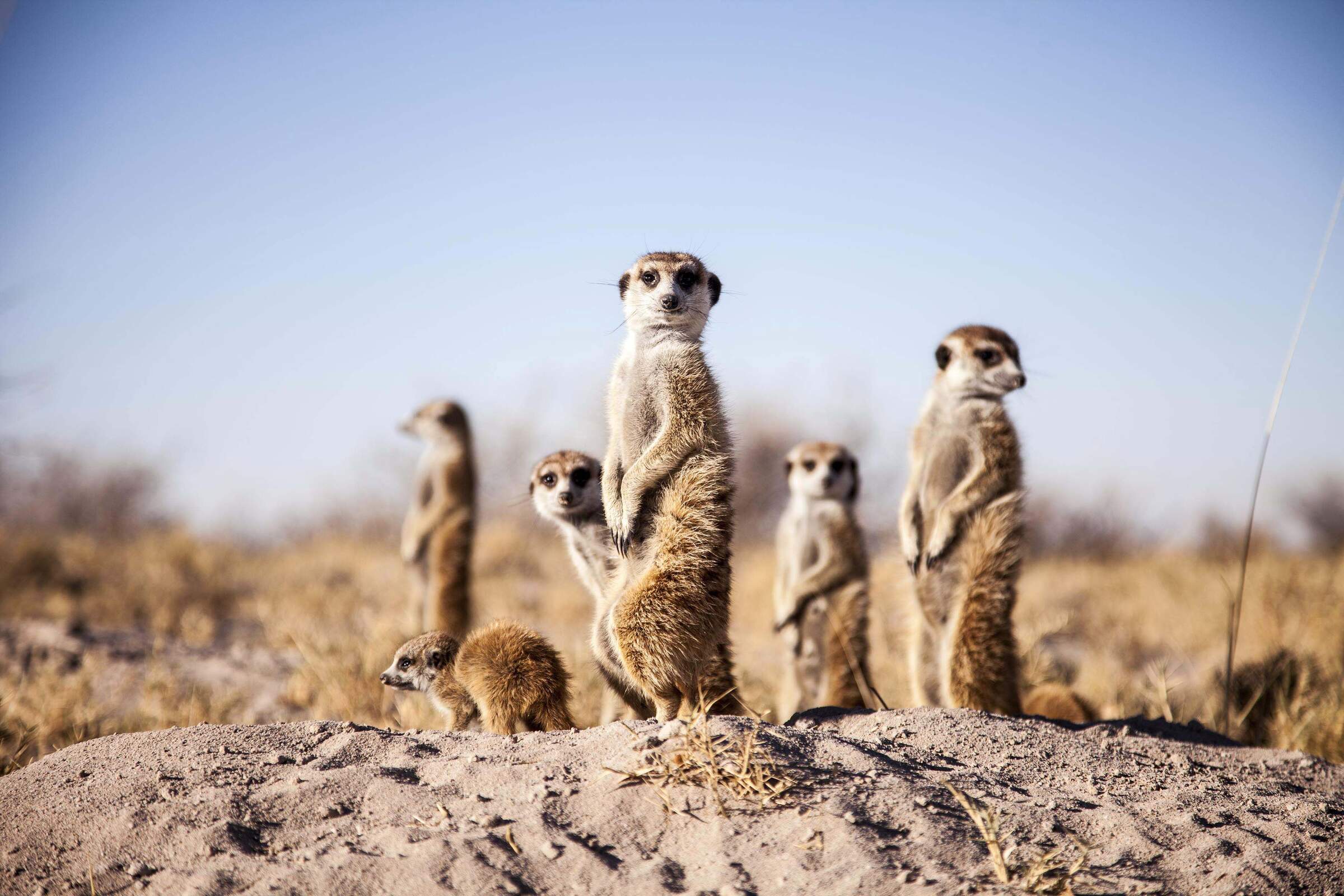
Kalahari Salt Pans
6 places to stay
Often overlooked, the vast, photogenic expanses of the Kalahari Salt Pans present unique rewards for the savvy visitor.
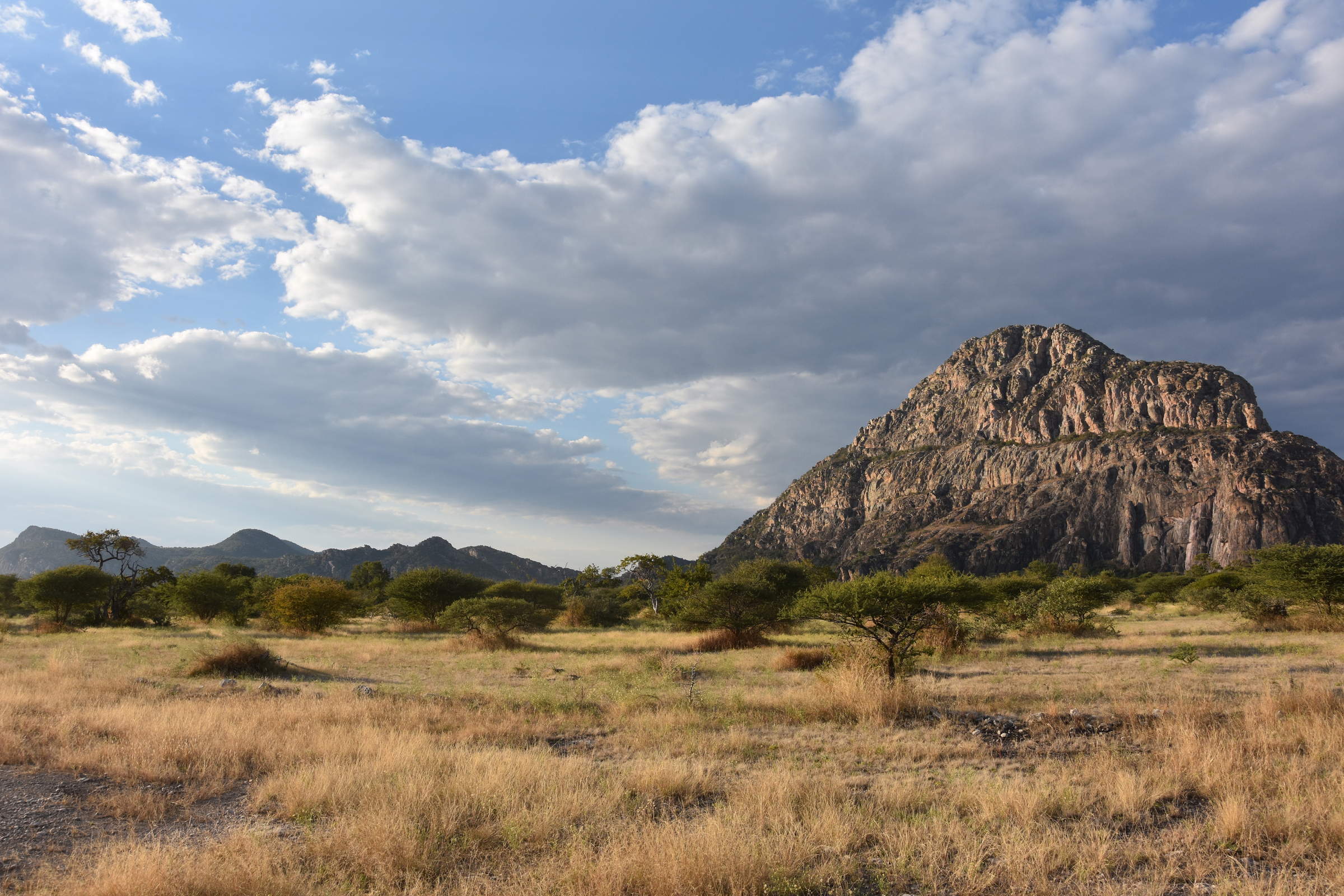
North-west Kalahari
3 places to stay
Much of the north-western Kalahari is very remote. There are a few good lodges here, but it is best visited on a mobile safari.

Maun
3 places to stay
Long the starting point for expeditions into the wild, Maun is bustling little town that is still the safari capital of Botswana.
Ten best safari holidays in Botswana
All our wildlife safari tours are tailor-made, but to set the ball rolling we have carefully put together ten popular suggestions here.
These holidays vary, but each features all-inclusive safari lodges, excellent guiding and the incredible diversity of wildlife for which Botswana is renowned. So whether you’re in search of leopard or wild dog, or seeking out a magical mokoro trip along reed-lined channels, or looking for the vast African elephant herds that roam Botswana’s wilderness areas, you'll find all of them here.
Then contact us when you’re ready to delve deeper, and we’ll help to guide you through the complexities to find a trip that will be perfect for you.
Our travellers' most recent reviews of Botswana safari holidays
Feedback from our travellers is exceptionally important for us.
It helps us stay up to date with changes; it helps our travellers to plan their trips; and it even helps us to understand our travellers better. It’s also very valuable to partners running lodges and camps across Africa who appreciate feedback that is guaranteed genuine and often constructive.
All of our Botswana holiday reviews are published in full without us editing them. See all 1350 Botswana safaris reviews here, or click on a card below to read one of our most recent reviews in full.
Our travellers' wildlife sightings across Botswana
Many of our travellers record their wildlife sightings for us – of the big cats, wild dogs, buffalos, elephants, giraffes, etc … – and kindly share these with us after their safari.
This is great citizen science! Analysing the data gives us a unique picture of the distribution of the species, and your chances of sighting a species at a camp on one of our Botswana safari holidays. (Read how this survey works.)
The percentages below just give an ‘average’ percentage showing how likely a visitor on safari is to see each species in Botswana. To see much more detail for individual camps and lodges, see our interactive map showing the best locations for wildlife species in Botswana.

96% success

95% success

95% success

95% success

91% success

87% success

83% success

65% success

59% success

58% success

51% success

51% success

40% success

37% success

31% success

27% success

20% success

16% success

8% success

3% success

2% success

1% success
Where to find Botswana’s key wildlife species
Our travellers’ wildlife reports help us to work out the best camps and lodges to see Botswana’s key wildlife species.
So whether it’s wild dogs or leopard you’re after, or you’re passionate about pangolins, take a look at our data-driven maps which show the best places to seek each species out amongst the abundant wildlife that characterises Botswana’s wilderness.
For a map of the best camps and lodges for sightings of a given species, click on a card:
When to go on safari in Botswana
Botswana’s weather is just one of the factors to consider when planning a safari holiday in Botswana.
The country’s climate pattern is typical of southern Africa, with a largely dry season between May and October, as daily temperatures rise to a sticky peak during October. Rain is expected November to April, typically afternoon thunderstorms. Then it can be harder to spot animals, but it’s an excellent time for birders. Click on the months below; see rainfall and temperatures here.
For water activities in the Delta, the Okavango Flood is relevant. Boating and mokoro trips are most likely to be possible between May and September – but choose your camps carefully.
Botswana peak season, when safaris are most expensive, is typically July to October. Wildlife watching can still be excellent during the “shoulder season” months of April, May and November – with the bonus of fewer visitors.
Jan
Feb
Mar
Apr
May
Jun
Jul
Aug
Sep
Oct
Nov
Dec
Botswana in January
January is at the peak of Botswana’s rainy season. These rains are often in the evening and are short but heavy, with occasional thunderstorms. Temperatures will still be high but cooler than October–December. Animals are generally dispersed, and not easy to spot, with the best game viewing found in the north of Chief’s Island and on the eastern and southern sides of the Okavango Delta.
January is also one of the best months to see the zebra and wildebeest migration in the Makgadikgadi salt pans and at Nxai Pan. Migratory birds abound throughout northern Botswana, along with a large number of breeding flamingos in the flooded salt pans. Rates are generally relatively low, making this a good time to visit on a budget.
- Temperatures are still warm, with occasional thunderstorms
- The bush feels alive; birdlife is at its most spectacular
- Big game is dispersed
- Zebra & wildebeest migration at its height
- Availability in lodges and camps is often very good
Our view
A good time to visit, with pros & cons
Weather in January
Botswana in February
The weather in February is very similar to January, with heavy rain most days – often towards evening – and temperatures on the high side, albeit cooling off from the rains and surface water. Across northern Botswana, the landscape feels green and alive; insects and smaller animals are more easily seen, and many birds and animals are raising their young. However, the rains have created pools and waterholes in the bush and thicker vegetation and tall grass makes it trickier to spot larger animals.
Further south, the game viewing is beginning to pick up in the Central Kalahari Game Reserve. Visitor numbers remain low, with attendant rates and availability in camps and lodges.
- Temperatures still warm with occasional thunderstorms
- Many animals with young; birdlife at its most spectacular
- Big game is dispersed
- Game viewing picking up in the Central Kalahari
- Visitor numbers are low, so camp availability can be very good
Our view
This is not a great time to visit
Weather in February
Botswana in March
March usually sees Botswana’s main rains starting to tail off. Many days will be clear, with a strong sun raising temperatures. On some days clouds will build, and the late-afternoon may see a short thunderstorm. Across the country, the landscape is green and alive. Many birds and animals are finishing raising their young. Much of the migration is now moving north towards the Savute area or Chobe National Park, though thick vegetation still makes it trickier to spot even larger animals.
March is one of the best times to be in the Central Kalahari Game Reserve, where many of the pans fill up and animals come to drink, closely followed by predators. With few visitors in most areas, rates may still be relatively low.
- Variable weather: rains tailing off but still hot
- Occasional small thunderstorms
- Many animals finish raising their young; birdlife still spectacular
- The best time to visit the Central Kalahari Game Reserve
- Few tourists visit during March, so rates often low
Our view
A good time to visit, with pros & cons
Weather in March
Botswana in April
During April the rains have usually stopped, though there may be still be the odd late downpour. This results in clear skies and a lovely green, lush landscape. Night-time temperatures usually start to drop during April with this being most noticeable in the Central Kalahari and the Makgadikgadi areas. The Central Kalahari is really coming into its own at this point and from April through to May/June the Savute region is a particular favourite of ours, with good predator/prey interaction.
In much of northern Botswana, the camps are coming into their “shoulder” season, so rates are on the rise but still relatively low.
- Evening temperatures cooling with just the odd shower
- Northern Botswana is green and lush
- Many animals still with young; good predator/prey interaction
- Central Kalahari and Savute the best places for wildlife
- A popular shoulder season time to book. Rates relatively low
Our view
A good time to visit, with pros & cons
Weather in April
Botswana in May
May is a very popular month to visit Botswana, often the last month of the “shoulder” season before camp rates hit their peak. While there is very little chance of rain, the annual floods from Angola are starting to make their way through the northern part of the Delta, and will eventually reach the majority of the Okavango late June.
With cooler temperatures morning and evening, predator activity tends to be higher, although tall grasses can still obstruct game viewing. With cool crisp evenings, and the game viewing really picking up, this is the favourite time to visit for many of our team – and camp bookings throughout Botswana are snapped up quickly.
- Cool mornings and evenings with little chance of rain
- Game viewing is beginning to pick up
- Predator activity increasing, though grasses still quite high
- Last month of “shoulder” season for most camps
- Availability goes quickly throughout Botswana
Our view
A very good time to visit
Weather in May
Botswana in June
June is the real start of the dry season. Temperatures are still cool in the morning and evenings with night-time temperatures sometimes reaching freezing, rising to 25–30 degrees Celsius during the day, with blue skies. Along with this comes a certain clarity to the air, favourable for serious photographers. Surface water and waterholes begin to dry up during this period and many animals begin to congregate around the remaining areas with water.
Visibility is improving as the grass is beginning to die back, and game viewing is very good everywhere, with particular improvement in the Kwando–Linyanti areas. Not surprisingly, camp availability is becoming scarce and rates are high.
- Warm, comfortable days; cold nights, morning & evenings
- Air clarity favours serious photographers
- Wildlife is gravitating to waterholes, making game-viewing productive
- Grasses beginning to die back
- Most camps are into peak season, with rates correspondingly high
Our view
Fantastic: the very best time to visit
Weather in June
Botswana in July
Evenings and mornings are still cool in July, and this combined with great game viewing makes it one of the most popular times to visit Botswana. Vegetation is really thinning out now making game easier to spot, with the few remaining waterholes attracting lots of wildlife. The north-eastern side of Chobe National Park, along the Chobe River, is also very rewarding, although this area can become very busy.
Game viewing is extremely good in the Khwai areas, too, but again, this is a public area and – unlike in the private concessions of the Delta – vehicle numbers can be high. Camps are now very much into the peak season, and tend to be full.
- Comfortable days; cold nights, morning & evenings
- Game viewing very good as vegetation dies back and waterholes dry out
- Chobe Riverfront and Khwai areas become very busy
- Private concessions helps to avoid potentially high vehicle numbers
- Now very much into peak season
Our view
Fantastic: the very best time to visit
Weather in July
Botswana in August
August is a popular time to visit Botswana, coinciding with the European summer holidays, and camp availability is difficult. Temperatures are generally cool at night, and comfortable during the day, although towards the end of the month they can rise above 35 degrees Celsius (albeit with low humidity). Cloudless skies bring spectacular star-gazing. Wildlife has congregated around the few remaining water sources, and much of the vegetation has now died back, so wildlife viewing tends to be varied and rewarding, particularly in the Okavango Delta.
Depending on the rains in Angola this can also be one of the best times to see the delta floods at their peak.
- Dry, warm days, with mainly cool nights
- Cloudless skies with spectacular stars at night
- A fantastic time for wildlife watching, particularly in the Okavango
- Traditionally one of the best times to see the Delta in full flood
- Peak season: so high rates and many lodges full
Our view
Fantastic: the very best time to visit
Weather in August
Botswana in September
September is another favourite month for some of our team members. Daytime temperatures are getting warmer, but nights remain cool. With the drier conditions, most of the greenery has faded from the landscape, and dust or even smoke create hazy conditions that aren’t great for photographers – though this does result in fantastic sunsets.
This is another extremely good month for game viewing, with large numbers of elephant and buffalo congregating in the Chobe region and migrant birds begin to return to Botswana. Rates remain high – and availability correspondingly low.
- Warmer days and cool nights
- One of the best months for wildlife viewing
- Large congregations of elephant & buffalo in the Chobe region
- Hazy conditions less good for photographers, but brilliant sunsets
- High season rates; many lodges & camps are full
Our view
Fantastic: the very best time to visit
Weather in September
Botswana in October
October is the one of the hottest months of the year, and usually one of the driest. Towards the end of the month the chances of rain can increase, and along with this can come greater humidity. The air is usually dry and hazy, making photography more challenging, but the lack of water and vegetation result in very good big-game viewing.
Water levels are now much lower, so water-based activities such as boating, mokoro trips and fishing cease in many of the camps which are not on major tributaries.
- Hot temperatures, with the chance of rain towards the end of the month
- Great big-game viewing
- Less opportunity for water activities in camps as floods recede
- Hazy air not great for photographers
- Final month of the peak season in camps
Our view
Fantastic: the very best time to visit
Weather in October
Botswana in November
November usually marks the end of the dry season in Botswana, when increasing temperatures drive a rise in humidity, sometimes culminating in the first rains. These are often short but very heavy showers in the late afternoon or during the night, and can be spectacular. The rains lower the temperatures slightly but bring a flush of green back into the dry landscapes. As waterholes in surrounding areas fill, wildlife will gradually begin to disperse as it is not restricted by the availability of water.
November is a great time for birdwatching, with the arrival of many migrant birds. The first couple of weeks are very popular with travellers looking for great game viewing at lower rates as Botswana enters the “shoulder” season.
- Hot in the middle of the day; sometimes humid
- Heavy showers increasingly likely as the month progresses
- Wildlife watching still good, but less reliable once it rains
- Migrant birds start to arrive
- “Shoulder” season brings mid-range rates in camps
Our view
A good time to visit, with pros & cons
Weather in November
Botswana in December
The rains in Botswana have now started, bringing some respite to the high temperatures. Game viewing becomes harder as wildlife is more dispersed but great sightings can still be had in the right areas such as Khwai and the Kwara and Mombo concessions.
Areas such as the Makgadikgadi Pans change completely with the salt pans becoming covered in a shallow layer of water attracting large numbers of breeding flamingos. Low-season rates at many camps are a draw.
- Temperatures starting to fall from the highs of October/November
- Very high chance of rain, usually large heavy storms for short periods
- Flamingos return to breed at the Makgadikgadi Pans
- Wildlife more dispersed, so game viewing more challenging
- Typically low-season rates in the camps
Our view
A good time to visit, with pros & cons
Weather in December
Country guide
A guide to visiting Botswana
At first glance, the choices for a Botswana safari are bewildering. Public or private parks? Wet or dry areas? Permanent lodges or guided mobile safaris?
Whatever your choice, Botswana safaris are seldom cheap, but can be good value. Most trips include meals, activities, laundry and park fees; some even include drinks. There are no hidden extras. You'll see superb wildlife and have pristine environments virtually to yourself. For a holiday, a Botswana safari is wild, magical and very exclusive!
Where to go on a Botswana safari holiday
Northern Botswana’s key destinations include the exclusive private reserves of the Okavango Delta Safari Reserves which, like similar reserves along the Kwando and Linyanti rivers, come with a hefty price tag. Two national parks offer similarly excellent wildlife but are slightly less exclusive: Moremi Game Reserve at the heart of the Delta, and the busier but more affordable Chobe Riverfront within the Chobe National Park, while for something seriously remote, make for the big, open skies of the Kalahari's Salt Pans and the Central Kalahari Game Reserve.
Botswana’s best wildlife areas: public parks or private reserves?
Surrounding these parks, however, is a patchwork of private wildlife reserves or “concessions”. Each covers about 800–2,500 square kilometres (some 300–950 square miles), yet each contains just a handful of small, private safari camps, with guests arriving by air. They have no campsites or public access so wildlife watching is generally undisturbed. They also offer much greater flexibility. Their guides may drive off the tracks when searching for game; most offer night drives; and some offer walking safaris guided by expert armed guides.
Environment: dry or wet areas?
Most camps stand on, or close to, large dry areas, which are easiest to explore by 4WD on a game drive. It's in these drier areas that you'll usually have the best sightings of big game, plus dry-country bird species.
Many camps also have access to wet areas – some with deep water, others with shallow. You'll usually explore areas with deep water by motorboat, driven by a guide. Shallower floodplains are best seen from a mokoro, or dug-out canoe. Birdwatching can be excellent, and the ambience amazing, but you'll usually see less game in a wet area than in a dry one.
Permanent camps or guided mobile safari?
Comfortable camping and luxury tented mobile safaris are a great way to explore the best wildlife areas in Botswana, led by a professional and knowledgeable guide. Join a small group of like-minded travellers on a scheduled holiday or take a private guided mobile safari to a location of your choosing on dates that suit you.
Botswana in context: history, environment & people
A land-locked country just a little larger than France, Botswana consists mainly of a gently undulating sandsheet punctuated by the occasional isolated outcrop of rock. In northern Botswana, two major features stand out: the vast inland river delta of the Okavango and the Kalahari’s enormous saltpans. Botswana’s climate follows a similar pattern to that of most of southern Africa.
The people of Botswana date back some 60,000 years to the hunter gatherers of the Kalahari, whose ancestors are the San (or Bushmen). Today’s society is dominated by the Batswana, whose Bantu language of Setswana is one of the country’s official languages – the other being English. For some general country information, see our General Information on Botswana.

Looking for inspiration on where to travel next?
Visit our trip chooser to explore your options and find inspiration for your perfect African adventure
Inspire meUnderstand more about Botswana
Information to help you prepare for your trip to Botswana.
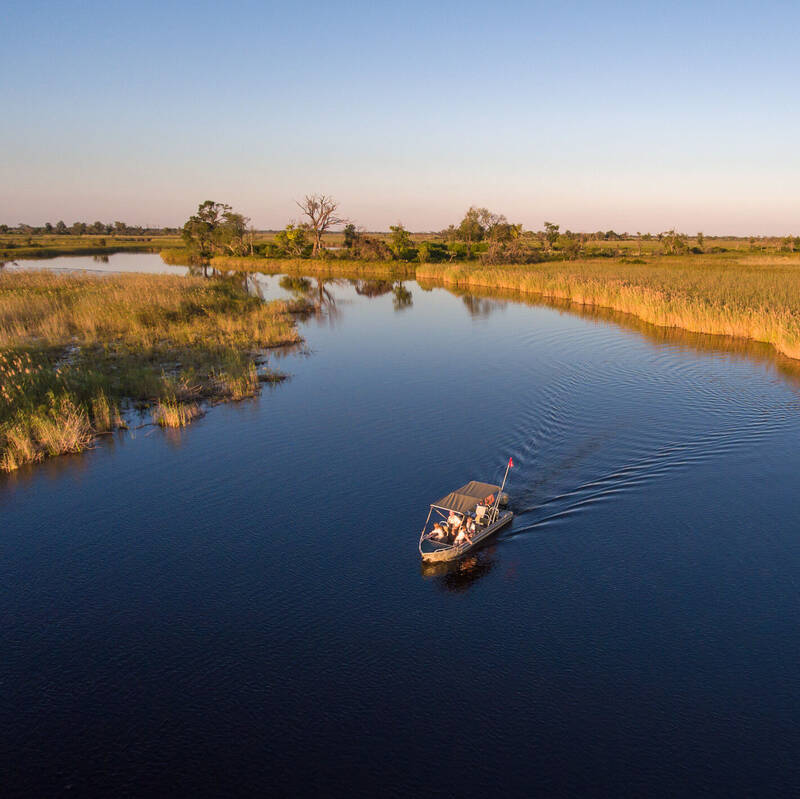
Okavango Delta Flood
This complex variable may seem like a minor point for most visitors – but both the flooding levels, and the levels of local recent rain, will influence your activities and should be taken into account when choosing where you visit in the Delta.
The water levels at any point in the Okavango Delta depend mainly on three variables: first, the local rainfall in your location; second, the height of the seasonal flood of the Okavango; and third, your location within the Okavango Delta. Roughly speaking, the further north and west you are in the Okavango, the higher the flood you’re likely to experience.
So read up more by clicking here, and chat to our Botswana experts who will be able top guide you in much more detail as to the current situation is.
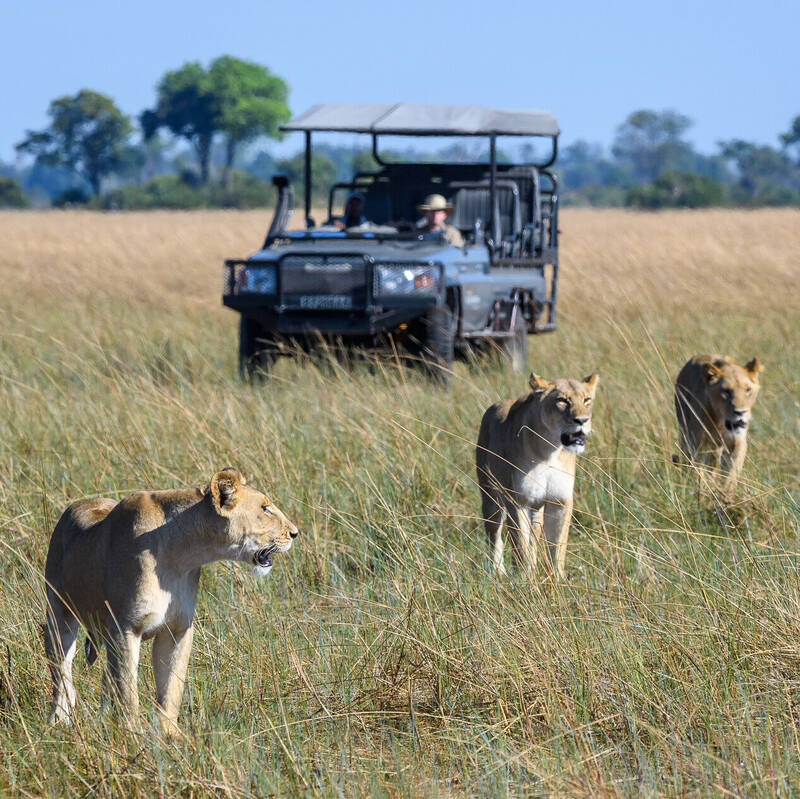
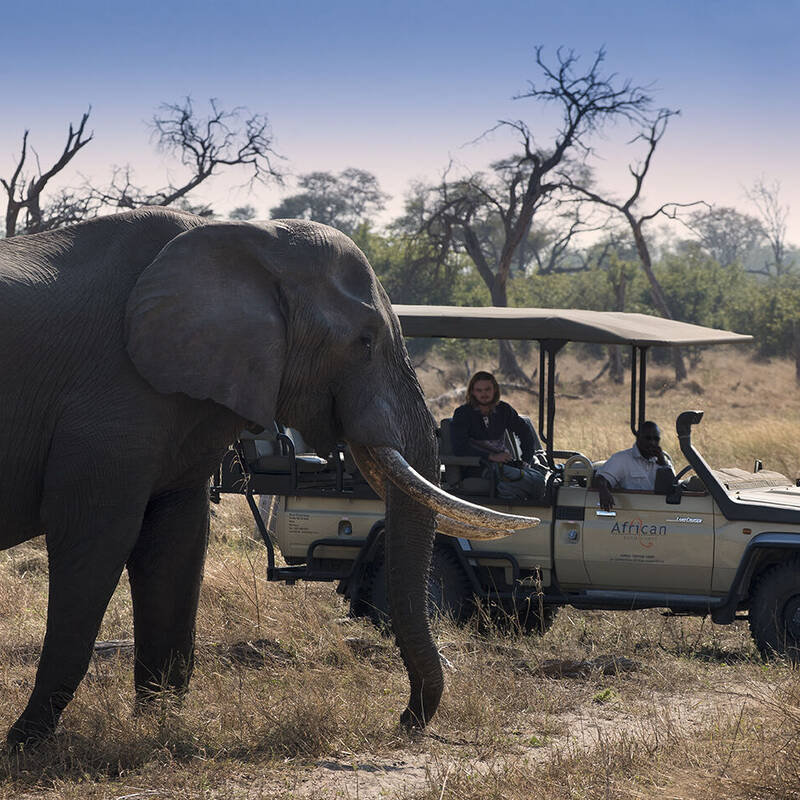
Types of Botswana safaris
Most travellers visit northern Botswana on a fly-in safari, so can explore a combination of environments. Flight transfers between camps are quick and easy, and seeing Botswana’s key safari destinations from the air is a scenic flight in itself: all part of the adventure. Most of our Botswana safari holidays are fly-in safaris, suitable for single travellers, couples, or small groups of friends or family.
We offer a variety of private mobile safaris in Botswana, like our private guided mobile in Moremi. These safaris focus purely on you and your companions, using small, private camps which are exclusive to your group. Expect a team of staff looking after you, spacious tents, excellent food and private guiding.
Visitors who prefer very independent holidays occasionally ask us about self-drive safaris in Botswana – but with routes through the national parks which are barely tracks in the sand. We can’t recommend self-driving holidays in Botswana: best look west, where we there are some great self-drive safaris in Namibia.
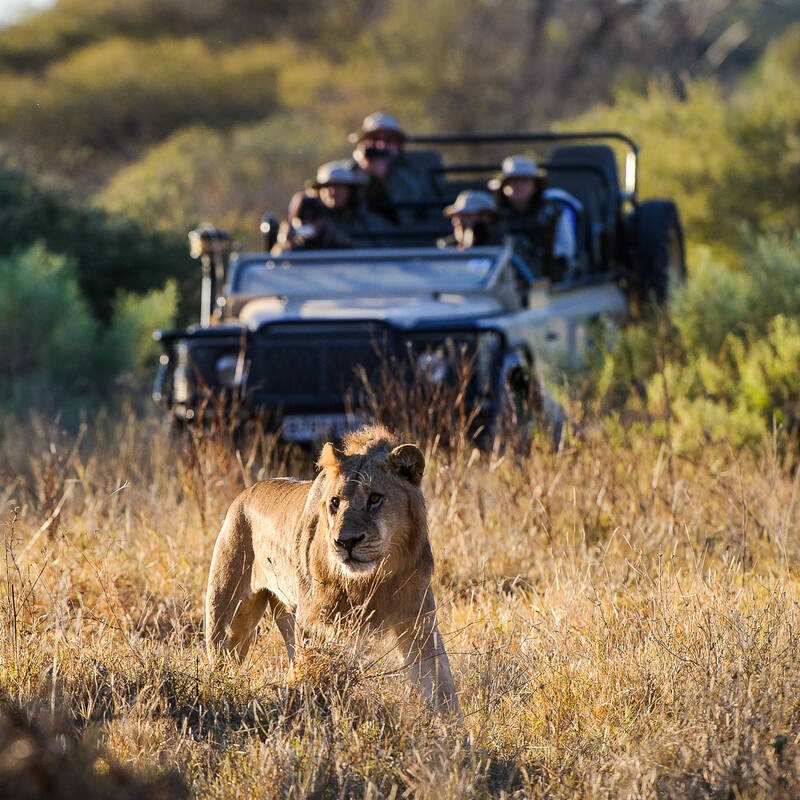
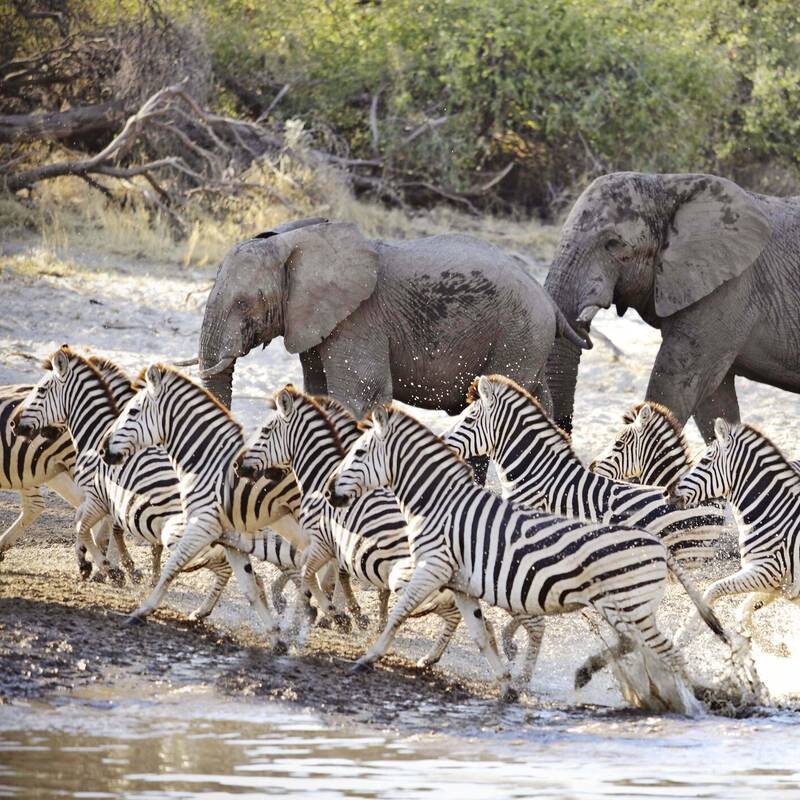
Migrations in Botswana
Much of southern Africa’s wildlife moves with the seasons, including zebras, wildebeest, buffalo and elephants. Large numbers of these animals seem to spend the driest months beside permanent water – the Chobe River, the Kwando–Linyanti rivers and the Okavango Delta – and then move into the vast vegetated sand-sheet of the Kalahari for the wetter months.
During the rainy season, researchers have shown the great Salt Pans in the Kalahari to be the focus of one of the longest terrestrial migrations in Africa, primarily zebra but also including wildebeest and other animals.
Bird migration may have a lower profile, but Botswana’s wet season sees huge numbers of migratory birds arriving into the Okavango Delta from the northern hemisphere, making this a mecca for birders.

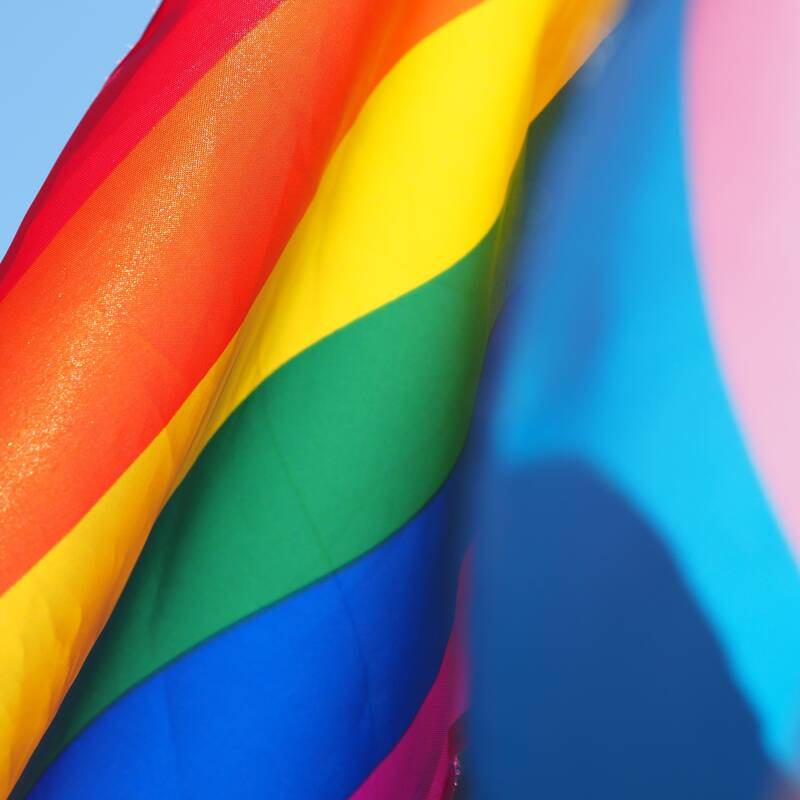
Lesbian, Gay, Bisexual and Transgender (LGBT) travel to Botswana
The vast majority of Botswana’s people are very friendly to visitors, and we have never heard of any issues experienced by our travellers, or other travellers in Botswana, due to their sexuality – including any LGBTQ+ travellers.
To put this in context, Botswana has long been recognised as one of Africa’s most stable countries, with the longest continuous multi-party democracy in Africa. The constitution implies freedom of individuals and expression, and while there are some laws against homosexuality, we aren’t aware of them ever having been applied to tourists.
That said, it's important to be aware of both the law and the current climate of opinion. So read on and do please check your government's latest travel advice before you go.

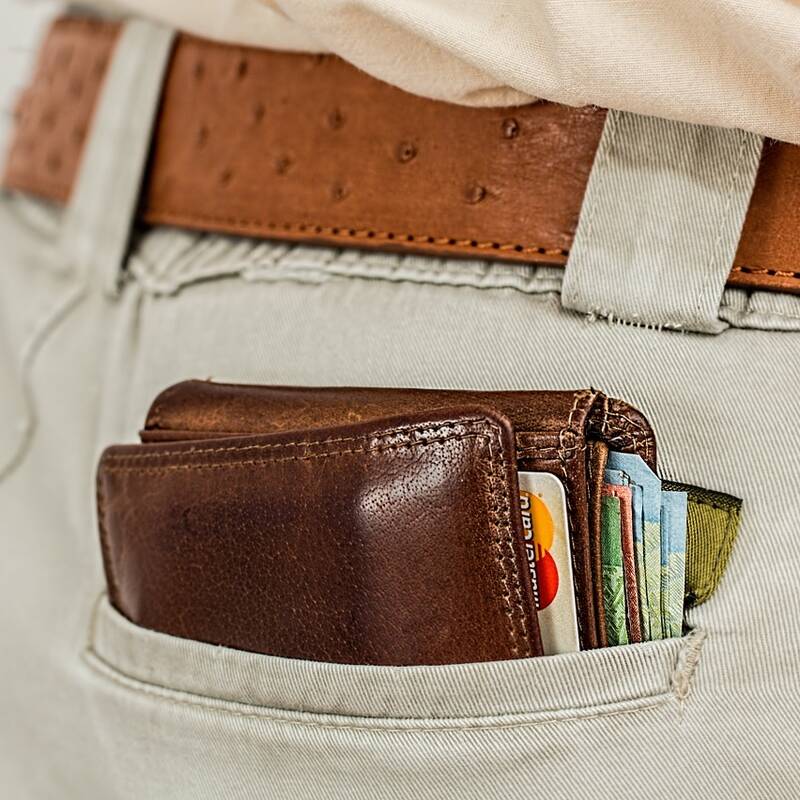
Tipping in Botswana
Tipping in Botswana is always voluntary, and should depend on the quality of service received. While we would encourage visitors to tip in appreciation of good service, we’d also like to point out that excessive tips can throw out the local economic balance.
Before you decide on what to tip, consider who and when. Behind every successful safari is a dedicated team of staff, all of whom have worked hard to ensure that you have enjoyed your trip – so do consider them as well as your guide and your waiter. Usually we would recommend tipping at the end of your stay, perhaps using the staff tip box, or placing your tip in a labelled envelope or series of envelopes so that there can be no misunderstanding.

Ideas for safari holidays in Botswana
In the heart of southern Africa, northern Botswana offers a real variety of options for an unforgettable safari holiday.
From the arid Kalahari in the south to the well-watered forest glades further north, the region’s varied ecosystems attract the large numbers of big (and small) animals for which Botswana safaris are famous. Huge herds of elephants and buffalos, for example, gravitate to the Okavango Delta , the area close to the Kwando and Linyanti rivers, and the northern Chobe Riverfront . Whilst cheetahs and other dry-country species frequent the drier areas, including the Central Kalahari Game Reserve.
Every bit as impressive as the wildlife on a Botswana holiday is the wilderness: endless pristine areas almost untouched by human influence. The feel of remoteness in the middle of stunning landscapes combined with the constant presence of wildlife make a safari holiday here unique.
Look through the ideas below, then Talk to us; we can create the ideal Botswana safari holiday for you.
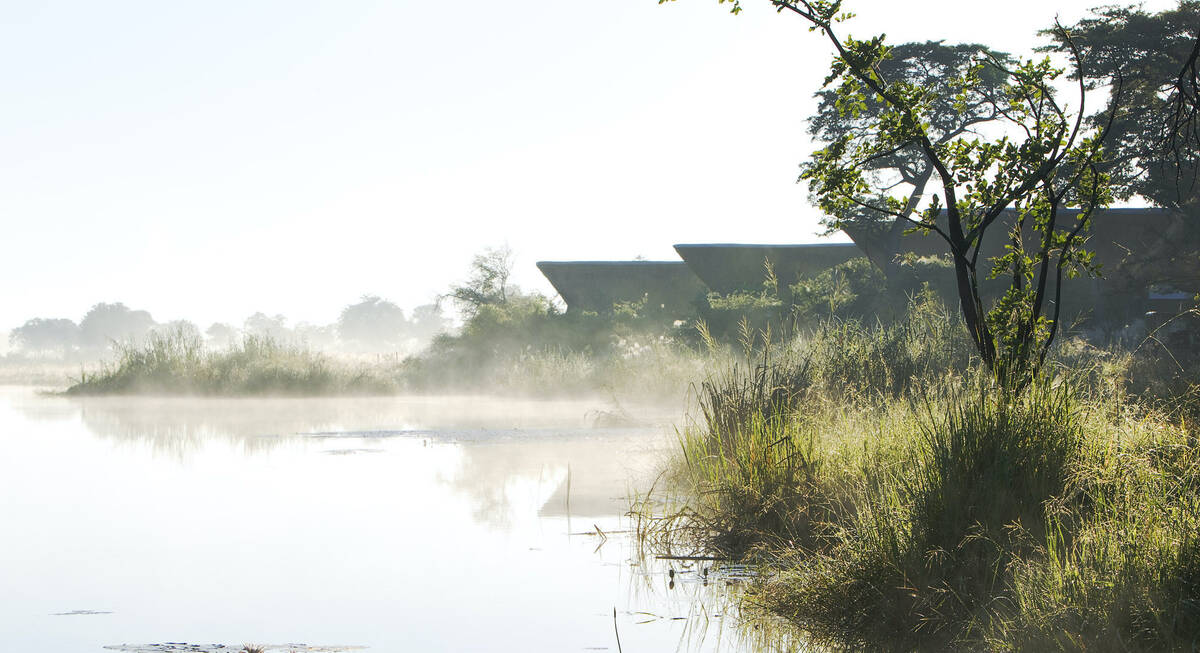
Pangolin Safari
8 days • 3 locations
MAUN AIRPORT TO MAUN AIRPORT
Three relaxed, local feeling camps in pristine settings – the Kwando Reserve and Okavango Delta. Guided by a driver and tracker at each, this a great trip for spotting Botswana’s top predators.
US$9,730 - US$16,340 per person
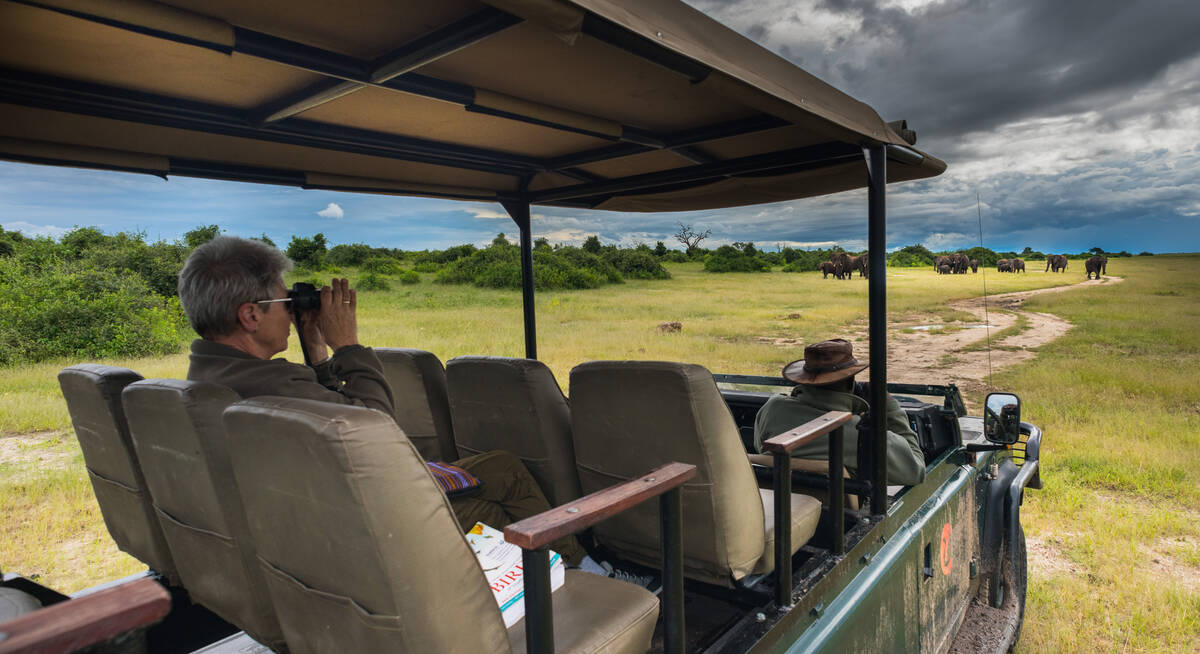
Pygmy Mouse Self-drive Safari
18 days • 10 locations
WINDHOEK AIRPORT TO VICTORIA FALLS AIRPORT
A truly epic southern African self-drive safari adventure from Namibia’s mountains and deserts, along the lush Caprivi Strip to Botswana and Victoria Falls in Zimbabwe, staying at luxury lodges throughout.
US$8,590 - US$10,270 per person
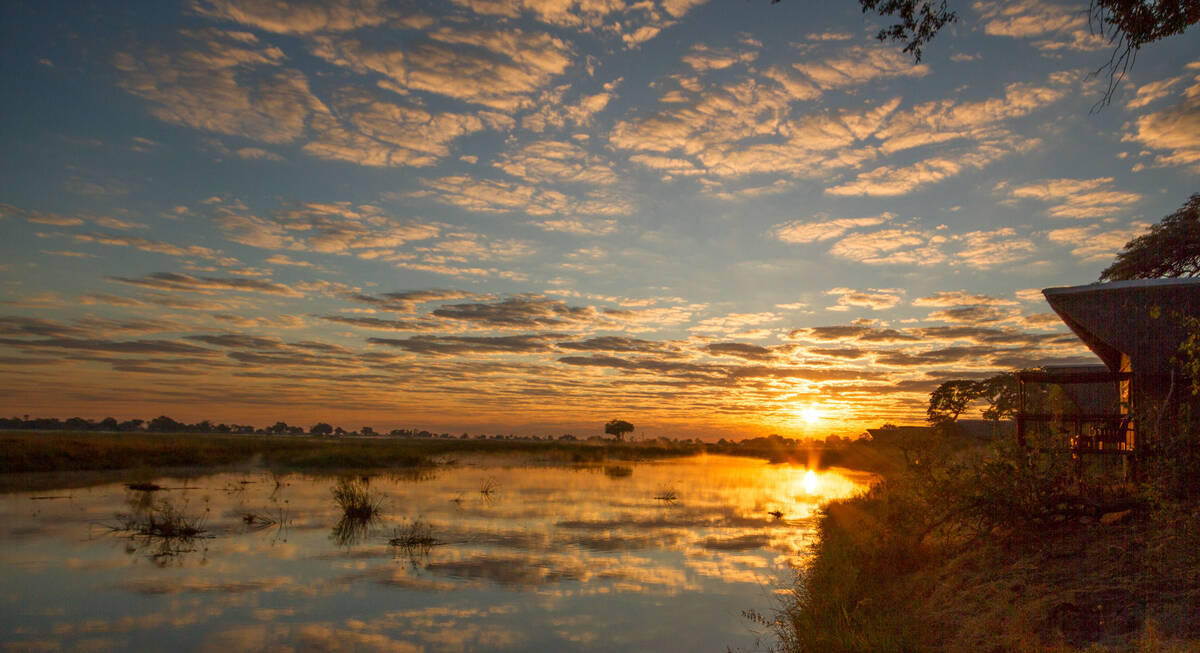
Mopane Squirrel Safari
6 days • 2 locations
MAUN AIRPORT TO MAUN AIRPORT
Visit two wildlife-rich private reserves in an exploration of the Okavango and Kwando regions. Sister camps Splash and Lagoon camp provide a range of immersive activities, and their long-stay discounts make for an excellent-value safari.
US$6,990 - US$11,760 per person
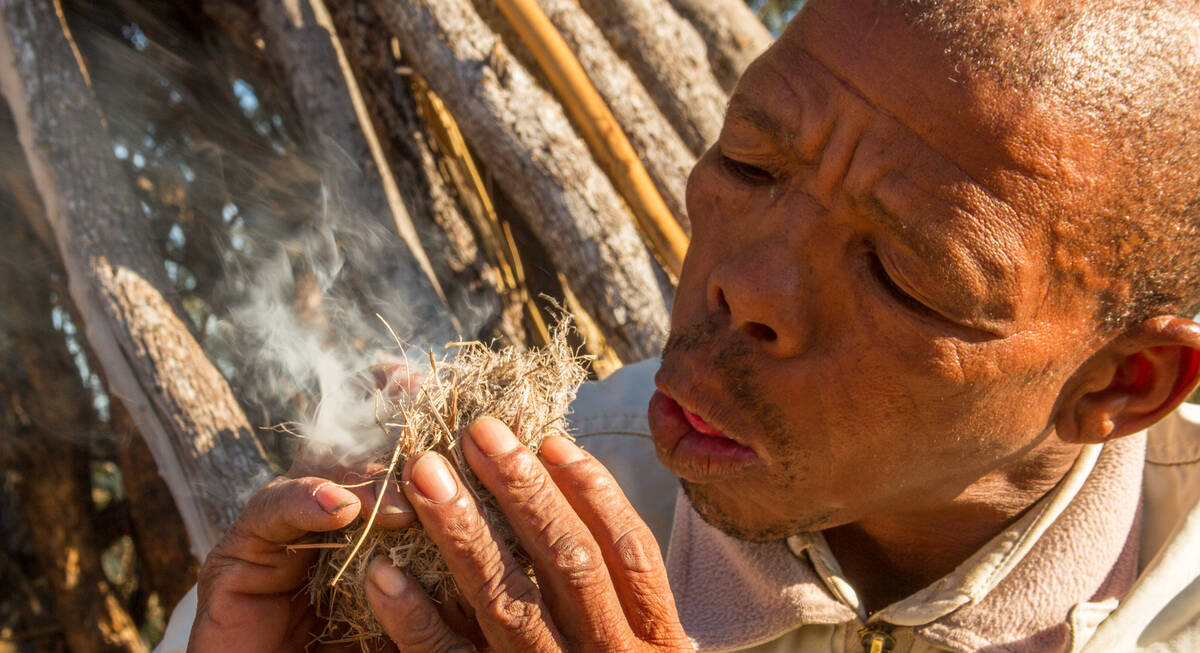
Honey Badger Safari
6 days • 2 locations
MAUN AIRPORT TO MAUN AIRPORT
Two smart sister camps offer access to the Central Kalahari Game Reserve and the heart of the Okavango Delta. Experience a spectacular range of habitats and wildlife through diversely exciting safari activities.
US$7,410 - US$10,800 per person
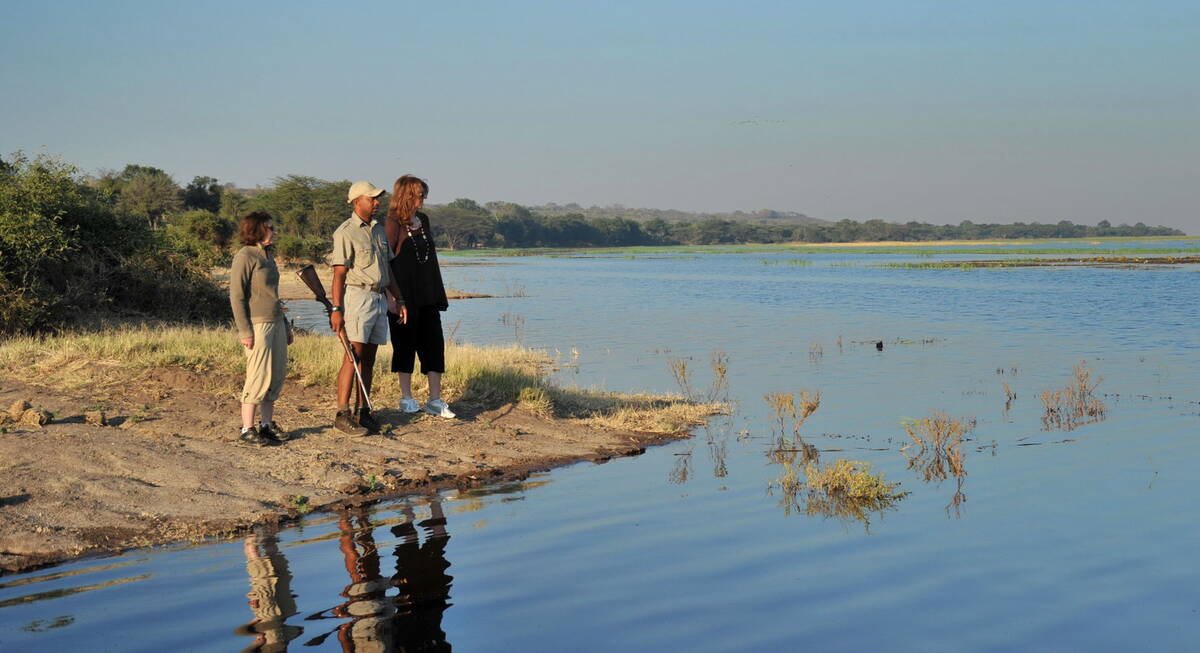
Wild Dog Safari
13 days • 5 locations
KASANE AIRPORT TO MAUN AIRPORT
An in-depth discovery of northern Botswana’s wilderness, from Chobe and the private Kwando Reserve to the Moremi and iconic Okavango Delta with a great variety of activities and wildlife.
US$12,930 - US$21,350 per person

Great Egret Safari
12 days • 4 locations
MAUN AIRPORT TO VICTORIA FALLS AIRPORT
This wonderfully varied adventure combines Botswana's Okavango Delta and a live-aboard houseboat safari on the Chobe River, with big game in Zimbabwe's dry Hwange National Park and the stupendous Victoria Falls.
US$10,330 - US$17,370 per person
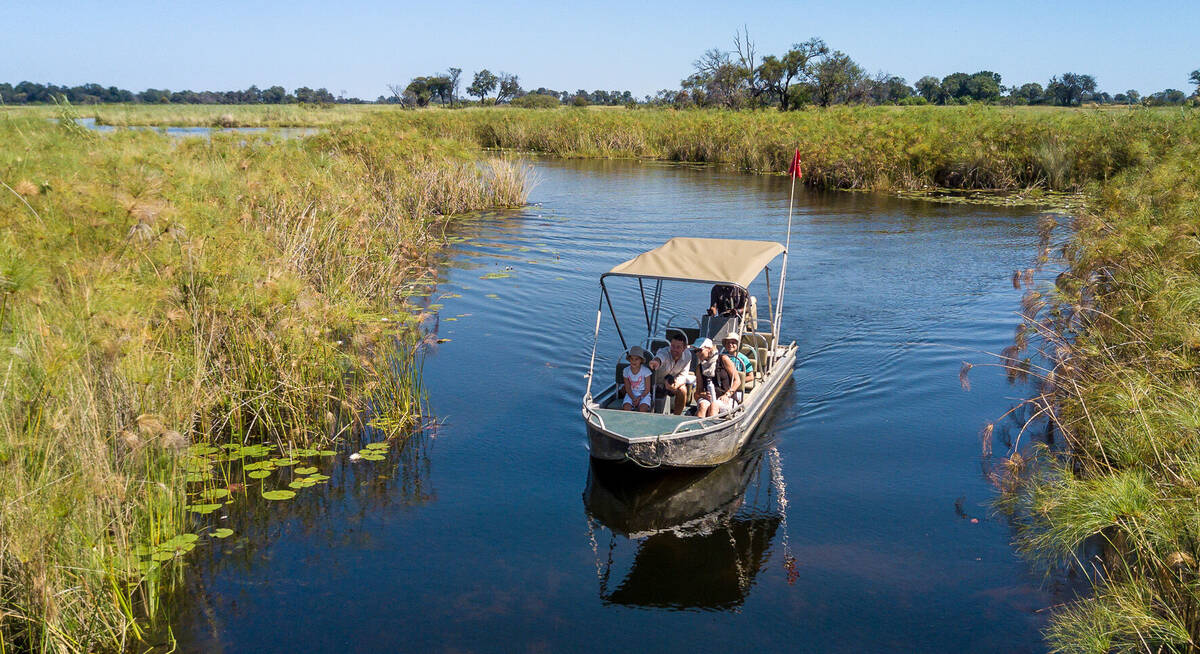
Slaty Egret Safari
4 days • 2 locations
MAUN AIRPORT TO MAUN AIRPORT
Two luxurious, intimate camps provide a highly personalised exploration of the Chitabe concession and private Vumbura reserve within the Okavango Delta. A range of water and land activities allows for stunning sightings.
US$7,920 - US$14,550 per person
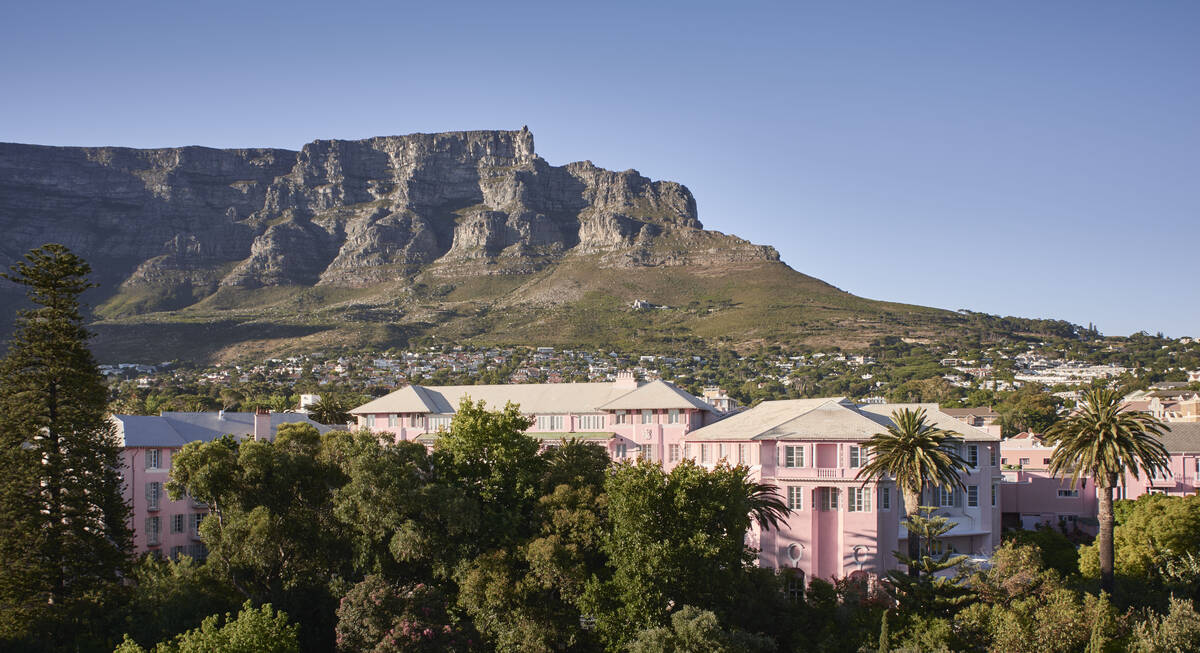
The Highlights of Africa
17 days • 7 locations
CAPE TOWN AIRPORT TO KIGALI AIRPORT
An epic adventure taking in some of Africa’s most incredible sights and wildlife experiences, from Cape Town to the Okavango Delta, Victoria Falls, the Maasai Mara and an encounter with mountain gorillas.
US$16,360 - US$19,760 per person
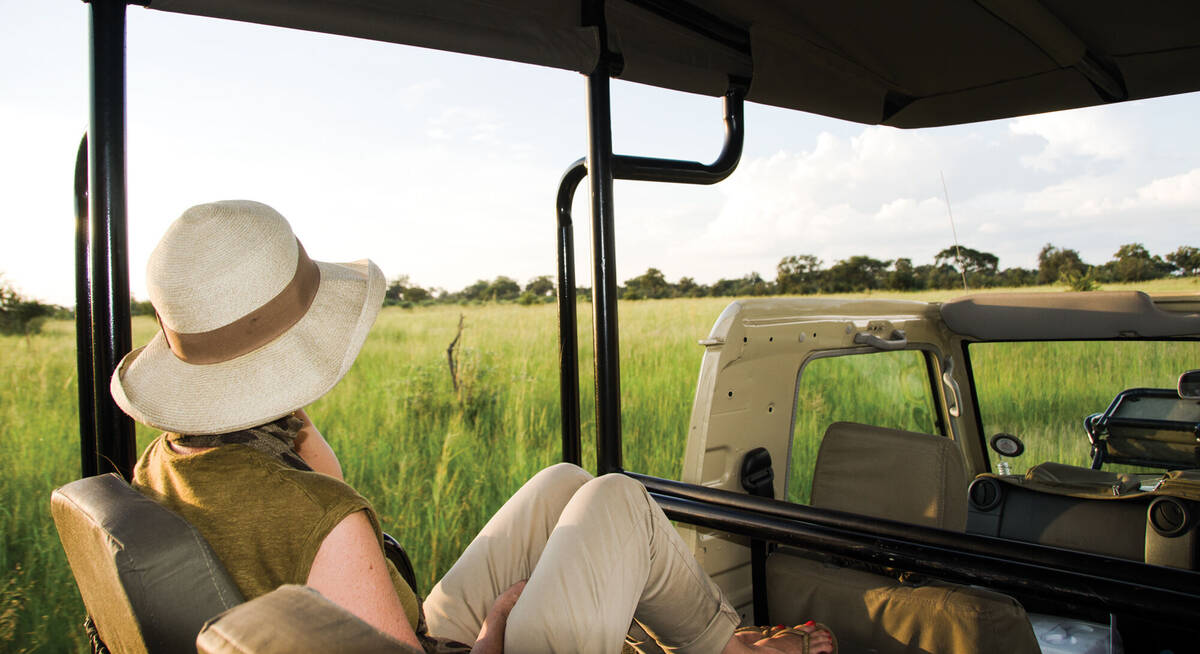
Rock Hare Self-drive Safari
20 days • 12 locations
WINDHOEK AIRPORT TO VICTORIA FALLS AIRPORT
An in-depth look at Namibia from the Namib Desert to the Caprivi, with additional stops in Botswana and Victoria Falls. This three-week adventure includes an unrivalled mix of environments and is great value.
US$7,230 - US$8,180 per person
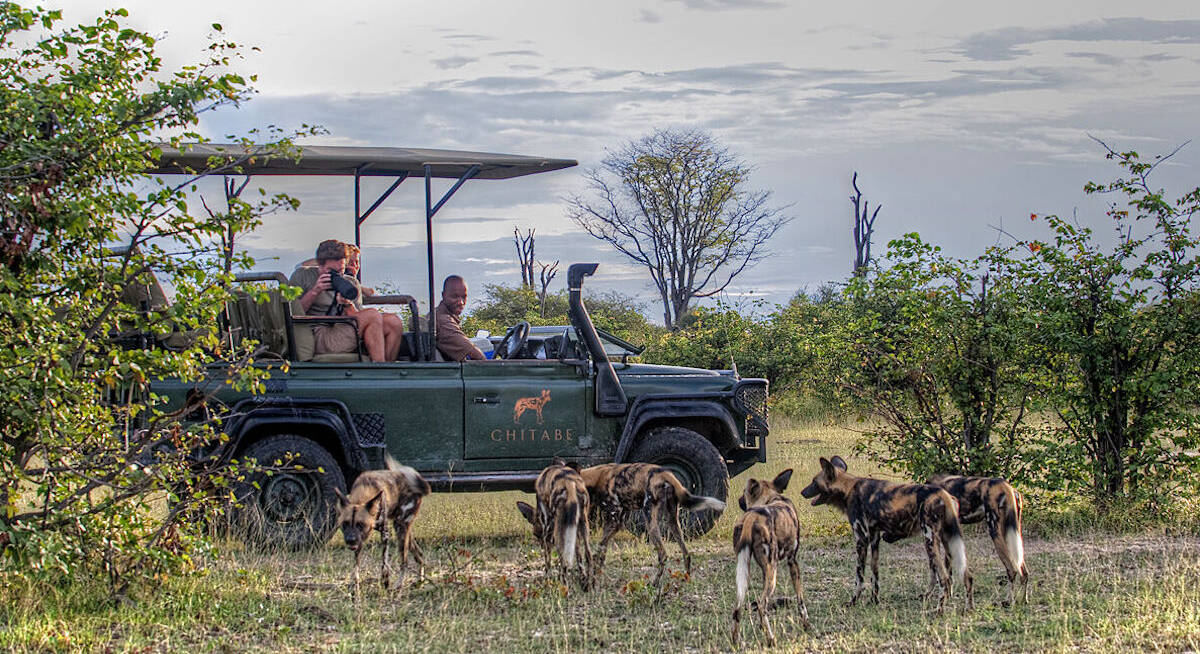
Bushbuck Safari
8 days • 3 locations
MAUN AIRPORT TO MAUN AIRPORT
Discover three of Botswana’s best game-viewing regions with stays in the private Linyanti, Chitabe and Vumbura reserves. Intimate, smart camps offer a range of activities by which to discover these stunningly varied habitats.
US$18,020 - US$31,740 per person
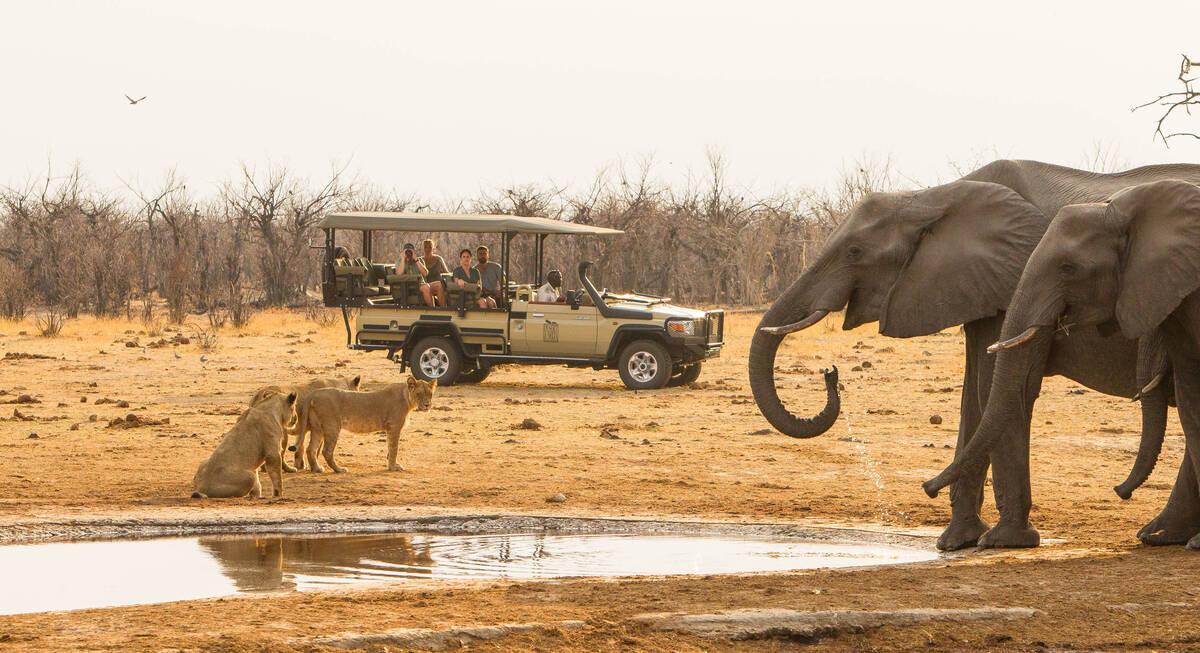
Spring Hare Safari
9 days • 3 locations
KASANE AIRPORT TO MAUN AIRPORT
An authentic and diverse safari to Botswana combining the Chobe Forest Reserve, Savuti Marshes and the Okavango Delta. Strong wildlife viewing, a variety of activities and excellent value camps.
US$8,710 - US$14,180 per person
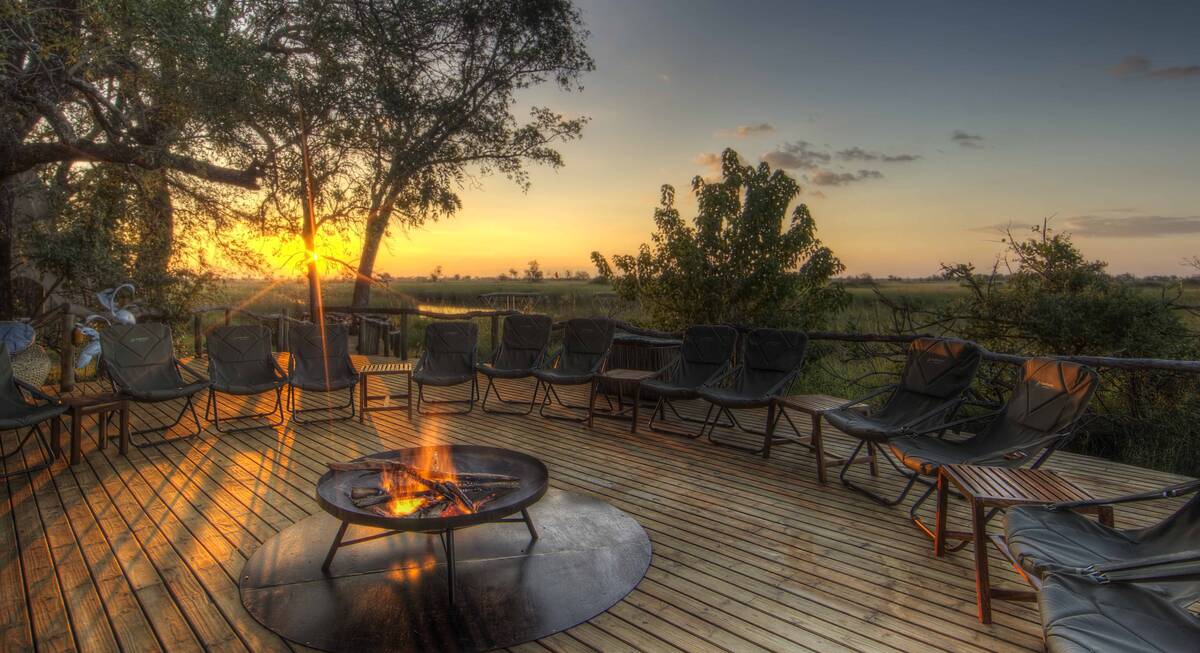
Tsessebe Safari
7 days • 3 locations
MAUN AIRPORT TO MAUN AIRPORT
Visit three sister-camps in and around Moremi Game Reserve during this thorough exploration of the Okavango Delta. A range of activities provide excellent opportunity to observe the local birdlife, mammals and fauna.
US$8,240 - US$11,410 per person
Plan and book your trip with Expert Africa
All of our trips are tailor-made, so we'll always adapt them to suit you. Talk to an Expert and let us plan and arrange your perfect trip.

Talk to an Expert
Call or email us now! We’ll match you with the Specialist in our team who is best suited to help you. Then together we can start planning your trip.

Set up your itinerary
Based on our experience and your ideas, your specialist will create a detailed, costed itinerary. We’ll refine it together, until we have a trip that you’re perfectly happy with.

Prepare for your trip
The same Specialist will make the seamless arrangements for your trip, send you detailed travel documents, and be available to answer any questions before you depart.

Travel with peace of mind
After you set off, you’ll be cared for by our partners in Africa, most of whom have worked with Expert Africa for decades. And if you ever need us urgently, we’re available 24/7.

When you return
We love to learn about your trip, and so will always be grateful if you’ve the time to give feedback to your Specialist when you return.
Where to stay: Botswana's best camps & lodges
On this carousel below, you’ll find over 100 of Botswana’s most interesting safari camps and lodges, ranked by their popularity. From the luxurious retreats where every detail whispers opulence, to the simpler charms of a safari experience that's anything but ordinary, they all offer adventures tailored for you.
Whilst even the humblest, like our private mobile camp in Moremi, may not be lavish, it does offer its guests something far more precious – exclusivity amidst the wilderness: an adventure that belongs only to you.
Dive deeper into each camp's story by clicking on it below, or choose one of the areas of Botswana to explore the spectrum of camps and lodges nestled there.
Special kinds of holidays in Botswana
From Family safari holidays to the most indulgent, luxurious safaris – Botswana has an exceptionally broad appeal.
Wildlife is a given, but so are the birds; with more than 400 species to be found in the Okavango Delta alone. Less obvious, perhaps, are adventure activities, all with expert guides, from walking safaris to riding safaris.The exclusive private reserves offer the perfect setting for a Botswana honeymoons safari: think moonlit baths, dinner by candlelight and sleeping under the stars.
Lodges with spas add a further touch of indulgence. At the other end of the spectrum, family-friendly safaris offer real flexibility, with some exciting “bush” school options. Then there are specialist photography holidays in Botswana: camps have specially-adapted game-viewing vehicles and boats; some even have high-end cameras and lenses available to guests.
Whatever matters to you about your safari holiday; talk to us about it and if it can be done – we’ll make it happen.
Frequently Asked Questions
Botswana FAQs
Numerous questions occur when you’re planning a Botswana safari, the sort of thing that you’d like to ask a friend who has been before, but may seem trivial.
Those below are some of the questions that we’re frequently asked, from what to expect on a mobile safari, to why Botswana is expensive. Everyone is different, though, so please do contact us with your questions – however trivial; we’re here to help.
Why are Botswana safaris so expensive?
For the visitor, the rewards are many. Exclusivity is at the heart of a Botswana safari, with only a few lodges and camps in each of the vast private reserves, employing some of the industry’s top guides. Even in Botswana’s national parks and game reserves, safari lodges – and visitors – are limited. A further plus is that except in hotels in places such as Maun and Kasane, most trips include meals, activities, laundry and park fees, and some even include drinks.
So while costs are often high, Botswana safaris can offer very good value for that money.
What are the tents like on a tented safari?
For the most part they’ll be walk-in structures with a metal or wooden framework, with stretched canvas sides and roof. In the simplest, screened windows set into the canvas keep out bugs, and roll back “doors” may open onto a private veranda with a view, while see-through covers and canvas blinds can be rolled down at night or during the rainy season.
At the luxury end of the spectrum, some “tented rooms” may boast sliding glass doors and air conditioning. All will have en-suite bathrooms, ranging from the simple but functional to the seriously hedonistic.
What's a mobile safari like?
Typically you’ll have breakfast in camp, prepared over an open fire, then you’ll set off to explore on a game drive, sometimes with a packed lunch, sometimes returning to camp at midday. Come the evening, you’ll return to camp for a bucket shower in your own tent, followed by drinks and a hearty meal under the stars.
All mobile safaris cater for just small numbers, with some, such as our private guided mobile safari, exclusive to one group of travellers – making them ideal for a family safari or small groups of friends travelling together.
What’s a typical day on safari?
At most lodges you’ll return late morning for a substantial, well-prepared meal, either brunch or lunch. Siesta time follows, the opportunity to sit back with a pair of binoculars and scan the surroundings, or to relax with a book. Mid-afternoon sees tea or coffee with cake, and perhaps a savoury snack, ready for your late-afternoon activity. Sometimes you’ll return to the lodge before sunrise; in the private reserves you may stay out for sundowner drinks before returning for dinner.
Can I self-drive around Botswana?
Firstly, because many of the best safari areas in Botswana are in private reserves, which are completely off-limits to all self-drive travellers. The only way to visit most these is on a fly-in safari.
Self-drive safaris are effective limited to the national parks and reserves – typically Chobe , Moremi , Nxai and Makgadikgadi– which are generally much busier, and more regulated, than the surrounding private reserves. Through these national parks, the “roads” these are scarcely more than sand tracks, which change with the seasons. Trips through these become expeditions on which you must take all of your camping equipment, food and supplies. The complete lack of back-up means that they’re far from relaxing holidays: what do you do if your track is blocked by a fallen tree, or an area is made impassable by a flood?
Without a knowledgeable guide, finding the very wildlife that you’ve come for is simply pot luck on a self-drive – and you’ll spend much of your time focusing on getting around, camping and cooking for yourself.
Whilst several of Expert Africa’s more adventurous Botswana experts have done these trips – and we’ve even written the definitive guidebooks on how to do them – we don’t recommend them and don’t organise them for travellers.
So our safaris in Botswana leave the driving, the cooking and your comfort to the experts, leaving you to enjoy the animals, the landscape, the sheer wilderness that is Botswana’s biggest draw.
How many nights should I stay?
For those with plenty of time, the options are endless. Combine a week on a Botswana wildlife safari with time visiting the lesser-known attractions of the North-west Kalahari, or the Kalahari's Salt Pans, or seek out the rarities – such as sitatunga, Pel’s fishing owl, the slaty egret or sable antelope – in different areas of the Delta. A balance of wildlife and cultural attractions can also be appealing; Botswana has a wealth of ancient rock art just waiting to be explored.
Our other African destinations
At Expert Africa, we're experts in African travel. If Botswana is too pricy, we can guide you to look at several great alternatives.
Zambia stands out with its exceptional wildlife and intimate camps, including several top-notch owner-operated establishments that compete with Botswana's best. Meanwhile, Zimbabwe offers an experience which is often more rustic, but hugely enhanced by the sheer quality of its safari guides.
For an entirely different but equally thrilling safari, consider Namibia. Its vast landscapes allow for self-drive adventures that come at a fraction of Botswana's cost – including world-class safari elements.
For those wishing to pair their safari with aquatic activities or seaside relaxation, the east coast of Africa beckons. We recommend Kenya, Mozambique, Malawi, and South Africa. Island extensions to Zanzibar or the Seychelles are also fantastic options.
And if encountering mountain gorillas is a dream of yours, Rwanda should not be overlooked.
The choices are varied, so contact us; to help you to craft your perfect safari – wherever that may be.
Elephant safari
in Linyanti
Talk to a Botswana Expert
These members of the Expert Africa team have been to Botswana and can advise you from their own personal experience.
Start a conversation with them today to help plan your trip.
Destination manager, Botswana
I visited Botswana most recently in May 2023. I wrote part of the Bradt Guide to Botswana. I've spent 55 days researching in Botswana.
Botswana specialist
I visited Botswana most recently in Oct 2024. I wrote part of the Bradt Guide to Botswana. I grew up in South Africa and lived in Namibia before heading to the UK I've spent 69 days researching in Botswana.
Botswana specialist
I visited Botswana most recently in Sep 2024. I wrote part of the Bradt Guide to Botswana. The first swear word my dad heard me say was when I was charged by a warthog as a child I've spent 47 days researching in Botswana.
Botswana specialist
I visited Botswana most recently in Jul 2024. I wrote part of the Bradt Guide to Botswana. I've climbed Kilimanjaro three times I've spent 26 days researching in Botswana.
